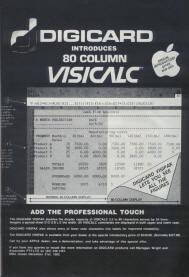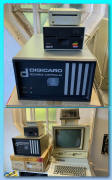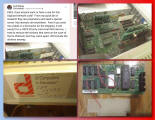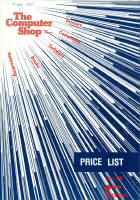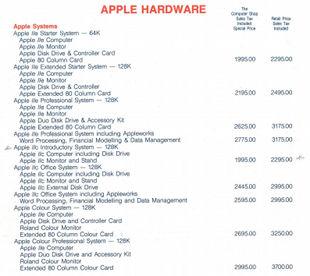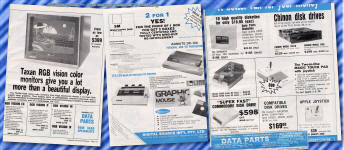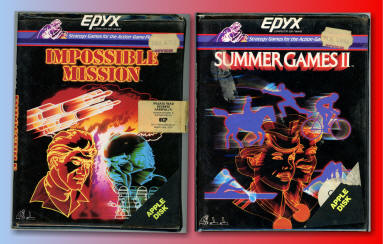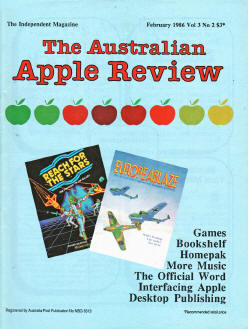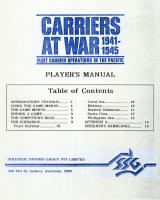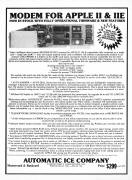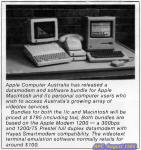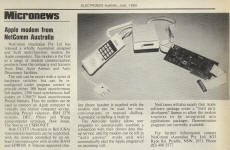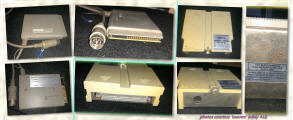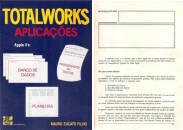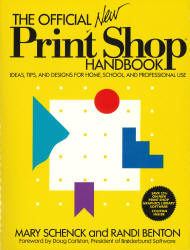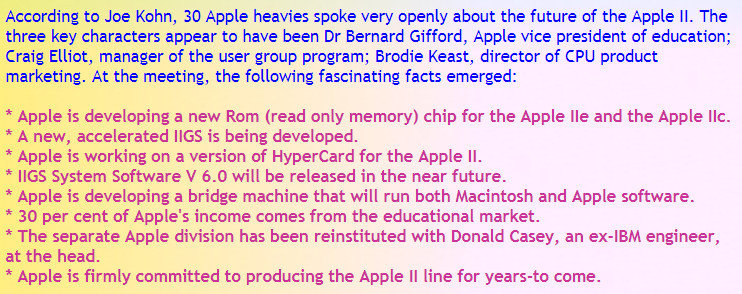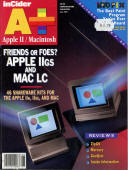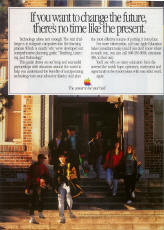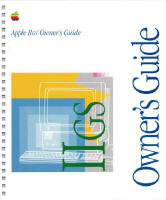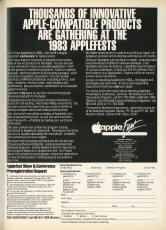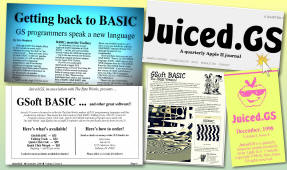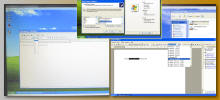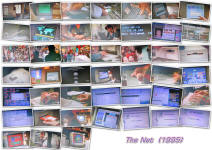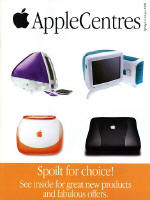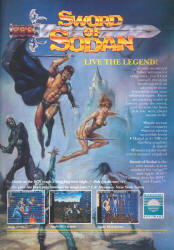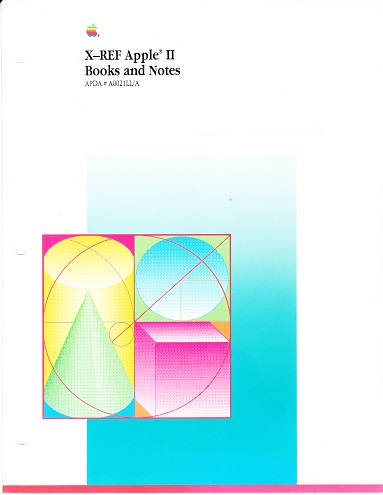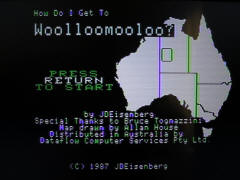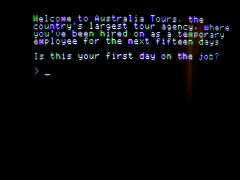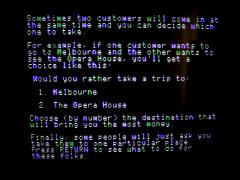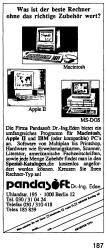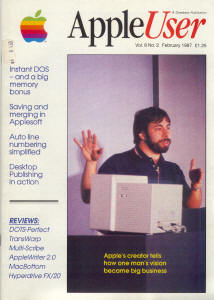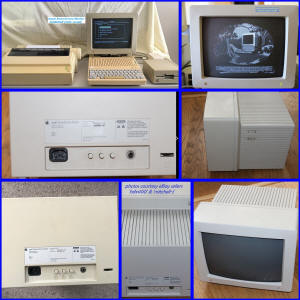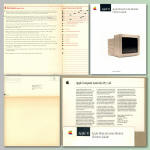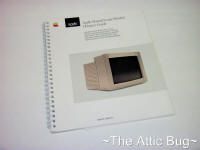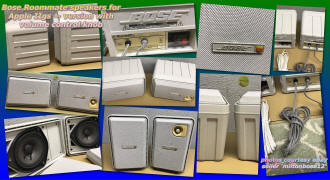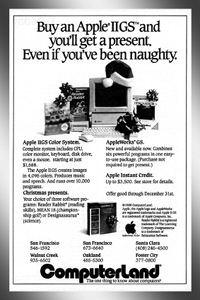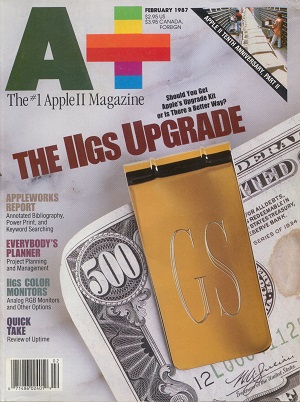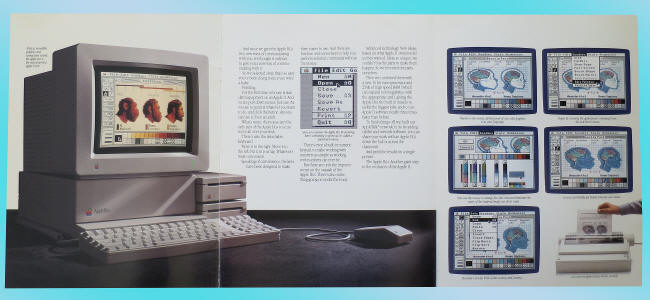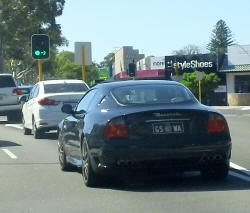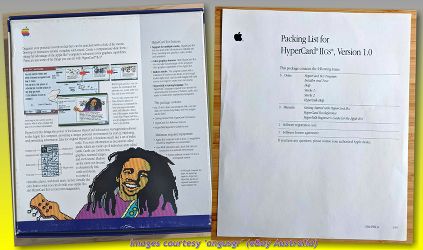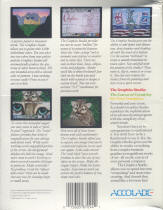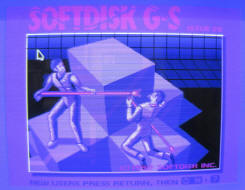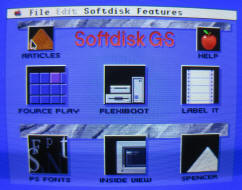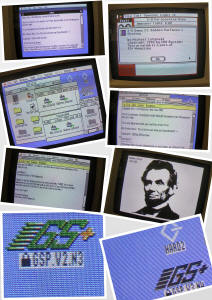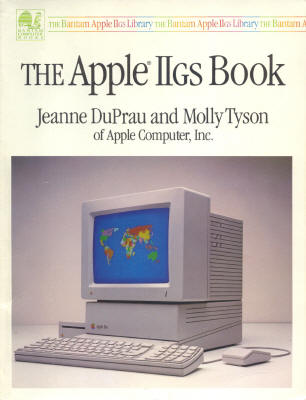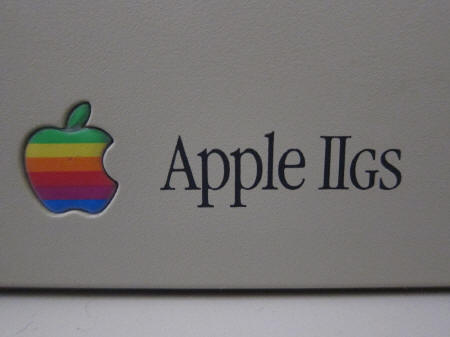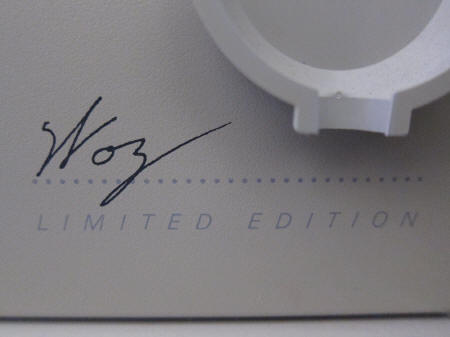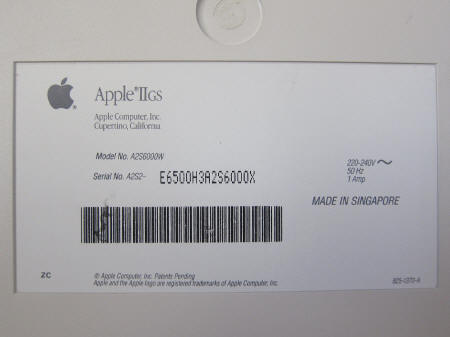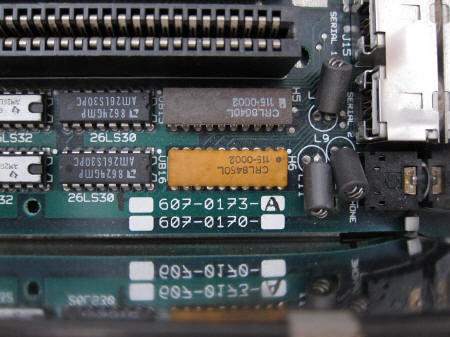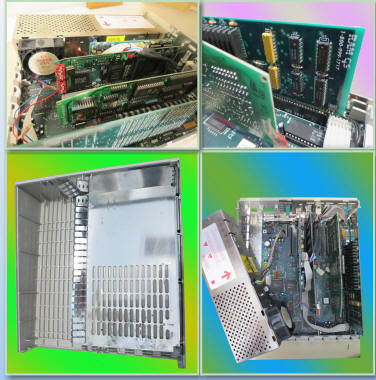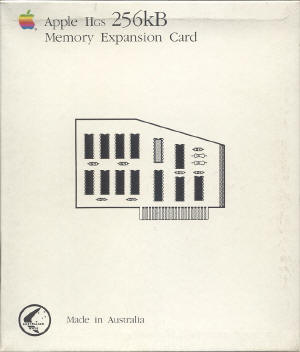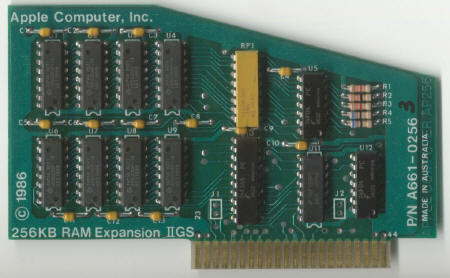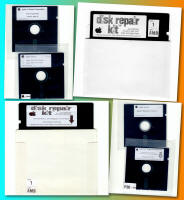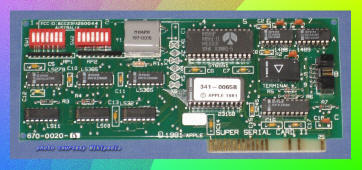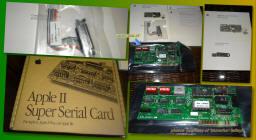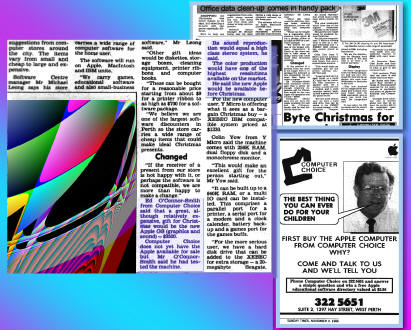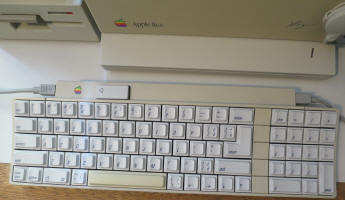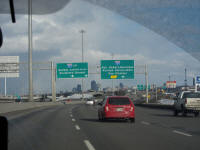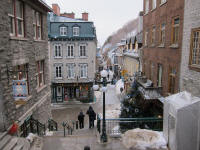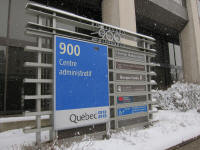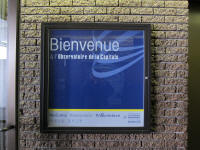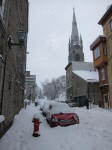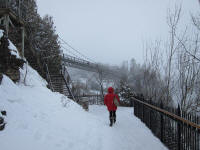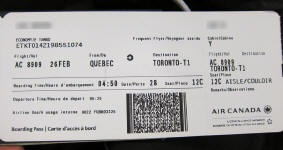APPLE USERS' GROUP (SYDNEY)
*** DISKS 1 - 52 ***
This collection comprises the first 52 Apple II disks produced by the Apple
Users' Group of Sydney in the 1980s, with a wide assortment of Apple II
programs.
They originally came supplied on 5.25" floppies in mostly DOS 3.3 format.
 |

 |
|||
 |
An alternative under Windows is to use CiderPress to pull out the archives from the .2MG, then use the "Convert Disk Image" facility to convert them to 140K .DO (DOS 3.3), or more rarely .PO (ProDOS) image files - bootable under most Apple II emulators. If the image crashes on boot, the original disk may have used a Disk Volume Number other than 254 (the DOS 3.3 default). Try moving the files to a plain vanilla DOS image. Or convert to 140K .2MG format and set the correct volume number using 2MG Properties Editor in CiderPress. As ShrinkIt does store the volume number, unpacking to real 5.25" floppies on an Apple II machine should always work.
"Gus - The Apple IIGS emulator" for PowerPC Macs is capable of booting ShrinkIt disk images directly
DOWNLOAD LINKS:-
| Apple Users Group Sydney Apple II Disks 1 thru 52.zip | ||
|
|
Also
not to be missed →
Applecations magazine
(Apple Users' Group Sydney) - selected
news, reviews, tips, tutorials —
Aug 1986 - July 1990 [134MB PDF
file]
|
Nov 1990 - May 1992 [125MB PDF
file] Apple IIGS Collection CD-ROM (downloads from AUG Sydney BBS as archived by A.Beckett) — CD image @ archive.org | Facebook discussion |
|
Disclaimer: I'm making these 52 disks available for historical archival/preservation purposes, but must emphasize that all remain the property of the Apple Users' Group of Sydney (still very much alive today as AMUG Sydney). I am not affiliated with that organization. In general, should any materials on this site wind up in other places I can't take responsibility for how they are used or presented. For the original context please refer back to this page.
^ 2015-10-26 (last revised 2023-10-22)
Steve Wozniak "The Woz" hits Perth during his August 2016 tour of New Zealand & Australia
In this section I intend to make available some Apple II software transferred from old floppy disks (5.25" or 3.5" physical media in my actual possession).
The transfers are generally accomplished using ADTPro on an Apple IIGS and Windows PC linked by serial cable. A Super Serial Card installed in the IIGS has its jumper block configured for "Terminal" (null modem mode), and a standard serial cable runs from this to the COM port of the PC. My other approach is to create the disk images on the IIGS using Asimov, then to drag and drop the files to a Windows PC running A2SERVER (Appleshare server), with a Mac PowerBook 3400c sitting in the middle as an Ethernet/Localtalk bridge. (NB: an ImageWriter II mini-DIN printer cable hung straight between the built-in serial ports of an Apple IIGS & Mac is all you need to network them together over Localtalk {Classic Mac OS Personal File Sharing}. For anything more elaborate see The AppleTalk Network System poster.) TP-LINK AV500 powerline adapters are used to link the PowerBook to the PC's router, which are in different rooms.
The detailed PHOTO SLIDESHOW at the bottom of this page illustrates both approaches....
![]()
 8-bit Apple II Disk Images
8-bit Apple II Disk Images
![]()
![]()
● Taito Bubble Bobble - patched for infinite lives - DISK 1 DISK 2
● Game compilation 32 Apple II games on a 3.5" disk - compiled 1990-91 by cvxmelody - DISK (800K) (video sampler of this disk is HERE)
→ Frogger original Apple II instruction card now available HERE
● Soft documentation collection ~120 softdocs for Apple II games - compiled 1991 by cvxmelody - DISKS (800K) (2 disks - ZIP archive)
● CP/M collection 37 Apple II CP/M disks & more (ProDOS assortment etc.) - compiled 1991-92 by cvxmelody - DISKS (800K) (8 disks - ZIP archive)
→ Microsoft Quick Reference Guide For CP/M-80 (version 2.2) for Apple II SoftCard now available HERE
→ Microsoft Z80 SoftCard review from Your Computer magazine (August 1981) is HERE
● Epyx Impossible Mission II - The Apple Odessa crack - DISK 1 DISK 2
|
The Apple Odessa was a prolific Apple II cracking group based in Melbourne. They ran a BBS known as "The Black Board" |
→ APPLE ][ WAREZ LISTINGS → The Black Board BBS (Melbourne) ca. late 1990 & Townsville Apple BBS (Queensland, Australia) ca. 1991 [PDF scans of printouts recently rediscovered]

● Absolute Entertainment Crossbow (1988) - The Apple Odessa crack - for 128K Apple //e, //c, IIGS - DISKS (2 disks - ZIP archive)
● Music & game programs (Applesoft & Integer BASIC) (1981 compilation by J.Wenman) - Music Writer | Apple Organ | Solo Race (Indy 500) | Apple II Trek | Labyrinth | The Racing Game (by Bill Budge) | Piero | Add-Libs (by Apple Computer) | Rocket Pilot (by Robert J. Bishop) - first ever Apple II game! [Read interview with Bob Bishop in Juiced.GS] - DISK
● Game compilation - Seafox (1982 Broderbund) | Pro Golf I (by Jim Wells, 1979 Softape) | Dynasty (by Weyman Fong, 1978 Apple Core) - improved version of Hammurabi | Blitzkrieg (by Mark Cross, 1979 Programma) | Apple '21' Blackjack (by Bill DePew, 1978 Softape) - Run 'INTEGER' first for Integer BASIC games (unless using the original Apple ][) - DISK
● Game compilation - Pool 1.5 (1981 IDSI) | Apple Panic (by Ben Serki, 1981 Broderbund) | Apple Invader (by S.E.C., Tukumo Original Software) | Apple Bowl (1979 Apple Computer) | Raster Blaster - retains original title page (1981 BudgeCo) - DISK
●◦ Pool 1.5 screenshots ◦●
→ Composite colour
Commodore 1084S PAL monitor & Samsung LCD TV (PAL Apple IIe) | Toshiba LCD TV (NTSC Apple IIe) | Commodore 1084S PAL (Apple IIc PAL Modulator/Adapter)
Toshiba LCD TV (NTSC Laser 128EX) | AppleColor Composite 50Hz NTSC 3.56 (Apple IIe International NTSC) | Samsung LCD TV PAL Color Encoder Card (Pravetz 8M) |
Samsung LCD TV (NTSC Unitron U-2000) | AppleColor Composite NTSC (Apple IIGS) | AppleColor Composite 50Hz NTSC 3.56 (220/240V Apple IIc)
AppleColor Composite 50Hz NTSC 3.56 (Pravetz 8M) | AppleColor Composite 50Hz NTSC 3.56 (Apple II Plus - 230V Eurapple model)
|
NTSC Apple II — Master crystal 14.318 MHz divide by 4 →
3.58 MHz
NTSC colour burst (@ 60Hz)
3.56 MHz
NTSC colour burst (@ 50Hz) |
Remarks: In mixed graphics/text modes, the colour fringing of text is less pronounced with PAL //e and Apple PAL Color Encoder Card (Euro II/II+). For full screen graphics or text modes they all behave much the same (text is output in monochrome - but in the case of NTSC Apple II/II Plus and equivalent clones, this isn't necessarily guaranteed - e.g. see HERE). The PAL //e also has a colour switch on the motherboard (lacking on NTSC models), allowing the PAL colour signal to be turned off completely for maximum clarity of display. |
 |
→ RGB colour
AppleColor Monitor 100 & Extended 80-Column Text/AppleColor card (Apple IIe) | Kaga/Taxan monitor & Digicard Extended 80-Column RGB card (Apple IIe)
AppleColor RGB (Apple IIGS) | Toshiba LCD TV (Laser 128EX digital RGB via Microbee CGA to HDMI Converter) | NEC MultiSync CRT monitor (a2heaven Apple IIc VGA Adapter)
ViewSonic CRT VGA monitor (Mac LC Apple IIe Card) | RCA/Thomson Blackpearl CRT TV (Apple IIc Le Chat Mauve RGB SCART adapter A2M4020F)
| Remarks: None of these RGB configurations exhibits colour fringing of text in the Apple mixed graphics/text modes |
● Game compilation - Star Cruiser (by Nasir, 1980 Sirius Software) | Repton (1982 Sirius Software) | Twerps (by Dan Thompson, 1982 Sirius Software) | Moon Patrol (1984 Atarisoft) - DISKS (2 disks - ZIP archive)
![]() Repton original Apple II
sleeve, instructions & disk scans available
HERE
& Moon Patrol
scanned original box & contents now
HERE
Repton original Apple II
sleeve, instructions & disk scans available
HERE
& Moon Patrol
scanned original box & contents now
HERE
● Game compilation - Firebird (by Nasir, 1981 Gebelli Software) | Eliminator (1981 John Anderson) | Choplifter (1982 Broderbund) - cracked by Jay of A.P.P.L.E. - DISK
|
→ Personal Software magazine (September 1984) — Apple II spotlight |
|
Reviews of Choplifter, FlashCalc, Back to Basics Accounting, Investor's Workshop, Dow Jones Home Budget, Cell Defense, Charlie Brown's ABC's, Flak, How About A Nice Game of Chess!, Objective: Kursk, etc. |


● Game compilation - Star Thief (by Jim Nitchals, 1981 Cavalier Computer) | Galaxy Travel (1980 Tukumo Original Software) | BurgerTime (1982 Mattel/Data East USA) - broken by The Freeze and the Bum | Lady Tut (1983 Progame) - Mockingboard version with cheat by Micmac & The Softman - DISK
● Word Games - Puzzle Generator (by Creative Computing) | Crackaword (by B.A. McAndrew) | Boggle Run (by B.A. McAndrew) - DISK
● Elizabeth Computer Centre Elementary Mathematics (1980-82) - Kangaroos | Star Flight | Hunt the Monsters | Dock the Boat - DISK
● Computer Solutions Zardax 5.2 (1981-82) - Word Processor & Utilities v1.14 - preconfigured for Apple //e 80 column card - DISKS (2 disks - ZIP archive)
|
Zardax manual → revised scan with all chapters plus original binder & 5.25" disk → now available HERE & quick reference card is HERE |
|
Video showing Zardax running on Apple ][+ with Videx Videoterm 80 Column Card is HERE |
|
Zardax II review by Your Computer (October 1985) is HERE |
|
→ Interface Software Catalogue 1989 — Apple II (Zardax II etc) - IBM PC - Microbee now available HERE [11MB PDF file] |
● Computer Solutions Zardax Utilities v1.20B (1984) - drivers for Apple //c, printers, RAM disks etc. - DISK
● Elizabeth Computer Centre & Gemini Software First Fleet Database: Convicts & Computers (1982) - DISK
● Blue Sky Industries/AID Systems (Sydney) Typequick III Keyboard Trainer (1982) - includes unlicensed "master" copy - DISKS (2 disks - ZIP archive)
● Synergistic Software Microbe: The Anatomical Adventure (1982) - Tutorial disk only > DISK (game disk available HERE)
● Encyclopaedia Britannica Underwater Odyssey: The Sentence (1983) - cracked with Passport by 4am - DISK
● C.Millsum Crossing the Blue Mountains (1983) - DISK
● A.C.T. Apple User's Group Introductory Free Disk - DISK
![]() A.C.T. Apple Newsletter (Canberra)
-
compilation of Apple II
articles —
Aug 1988 - Dec 1992 [140MB PDF
file]
A.C.T. Apple Newsletter (Canberra)
-
compilation of Apple II
articles —
Aug 1988 - Dec 1992 [140MB PDF
file]
![]() Your Computer magazine
(Australia) 1982-83 - Apple II ads, news,
reviews, tips —
Jan 1982 - Sep 1982 [7
issues]
|
Oct 1982 - May 1983 [7
issues]
Your Computer magazine
(Australia) 1982-83 - Apple II ads, news,
reviews, tips —
Jan 1982 - Sep 1982 [7
issues]
|
Oct 1982 - May 1983 [7
issues]

● C.H.S. Computer Centre Sport Result Program - DISK
● Database Publications Apple User Games Disk #1 (1985) - DISK
![]() Apple User (UK) magazine -
selected
news, reviews, tutorials, ads —
Feb 1987 - Aug 1987 [212MB PDF
file]
|
Jan 1988 - May 1988 [297MB PDF
file]
Apple User (UK) magazine -
selected
news, reviews, tutorials, ads —
Feb 1987 - Aug 1987 [212MB PDF
file]
|
Jan 1988 - May 1988 [297MB PDF
file]
● Database Publications Apple User Graphics Library (1985) - complete software routines from Apple User (UK) Graphics Library series (Feb 1984-Nov 1985) - DISK
● Jacaranda Wiley Gold-Dust Island (1984) - DISK
● Jacaranda Wiley Quick-Cartage Company (1984) - DISK
● Jacaranda Wiley Scavenger Hunt (1984) - DISK
● Jacaranda Wiley Sheep-Dog Trial (1984) - DISK
● Jacaranda Wiley Cunning Running (1984) - DISK
● Jacaranda Wiley Raft-Away River (1984) - DISK
● Jacaranda Wiley Dinosaur Discovery (1985) - DISK 1 DISK 2
● Jacaranda Wiley & 4Mation Bush Rescue (1987) - DISKS (2 disks - ZIP archive)
● 4Mation Zoopak (1987) - DISKS (2 disks - ZIP archive)
● Jacaranda Software Kraken - a deep-sea quest (1989) - DISK
● Jacaranda Software Terra Australis - Voyages of trade and discovery (1989) - DISK 1 DISK 2
|
|
||
|
The Australian Apple Educational Software Directory 1987 (187 pages) |
||
|
(1986-87 Apple Computer Australia) |
||
See also → The Apple IIgs Software Directory (1987 Apple Computer Australia)
→ The Apple Australia Special Education Resource Directory 1988 (complete scan) [29MB PDF]
● Dark Star Systems Snapshot Two Copykit v4.8 (1983) - two distinct copies enclosed - DISKS (2 disks - ZIP archive)
Snapshot Two hardware photos → 1 | 2 | 3 | 4
● Dark Star Systems Snapshot //e Copykit v8.7 (1985) (see also v10.0) - DISK (manual available HERE)
● Dark Star Systems Snapshot //e Diagnostic Disk (1985) - DISK
Sample backups made using Snapshot //e system (bootable, no Snapshot card required):-
Karateka (gameplay commences at start) - DISK
Karateka (gameplay commences at level 2) - DISK
|
|
|||||
|
Snapshot IIe
card
→
HQ photo
|
 |
 |
● Broderbund Karateka (1984) - Backed up with Wildcard - menu-selectable: starts at middle (downstairs) or final fight scene - DISK
|
Wildcard advertisement (Jan 30, 1984 InfoWorld) |
● Apple Computer Intercept (1978) - DISK
● Apple Computer Apple Writer 1.1 (1979) - DISK
● Apple Computer & Paul Lutus Apple Writer ][ (1981) - with Videx 80-column support - DISKS (2 disks - ZIP archive) (manual available HERE)
Video of Videx Videoterm 80 Column Card official demonstration program is HERE
READ a review of Apple Writer II Version 2.0 (ProDOS based) from The Sydney Morning Herald (August 1985)
● Call-A.P.P.L.E. ApMail v1.2 (1979) - name and address filing system - type 'RUN APMAIL' to start - DISK
|
|
![]()
![]() Call-A.P.P.L.E.
1984 Winter Product Catalog complete scan (54MB PDF)
Call-A.P.P.L.E.
1984 Winter Product Catalog complete scan (54MB PDF)
● Muse U-Draw II Graphics Editor (1979) - hi-res programmable graphics editor - backed up with Snapshot system from original disk - DISK
● Software Arts VisiCalc v1.37 (1979) - Beautiful Boot version - DISK (VisiCalc original package photos HERE)
|
VisiCalc Home And Office Companion (181 pages) |
||
|
(1982 OSBORNE/McGraw-Hill) |
||
|
Presents fifty VisiCalc models for Apple II |
||
Apple ][ Plus brochures — 1981 Apple Computer UK
|
Apple in Business |
|
Apple II Plus brochure with VisiCalc etc. |
|
(1981 Apple Computer UK) |
● Micro Finance Systems VisiTrend v1.00 (1981) - Backed up with Wildcard - works on Apple ][+, //e, //c - DISK
● Programma International Apple PIE (1980) - word processor system - DISK
● Hayden Data-Graph (1980) - DOS 3.3 - DISK
● Hayden Book Company Data Manager (1980) - data base management system and mailing list by Paul Lutus - DISK
● R.Mossip Epson MX-80 Graftrax Screen Dump (1980) - DISK
→ See also Epson Apple II parallel interface user manuals: #8133 "APL C" New Intelligent Parallel (1985) & #8132 "APL B" Epson MX Interface Type 2 (1981)
Comparison of Epson #8131, #8132, #8133 interfaces — from Epson LX-800 & FX-85/FX-105 manuals
● Apple Computer Apple II Pascal 1.1 disk #1 (1980) - patched for Prometheus VERSAcard clock/calendar - DISK (VERSAcard brochure available HERE)
Apple PASCAL, FORTRAN, PILOT & DOS 3.3 originals
● Apple Computer Apple Presents Apple (1981) - "How to use the Apple keyboard in One Easy Lesson" - DISK


|
The Apple IIe Keyboard poster |
|
A3 size double-sided (ca 1985-86 Apple Computer Australia) |
● Automated Simulations Dunjonquest: Hellfire Warrior v2 (1979-80) - DISK
● Game compilation - Fender Bender (1980 California Pacific Computer) | Snack Attack (1981 Datamost) | Shuffleboard (1981 IDSI) | Outpost (1981 Sirius Software) - DISK
● Game compilation - Ribbit (1982 Piccadilly Software) - broken by The Jerk | Frogger (1981 Sega/Sierra On-Line) | Bug Attack (by James Nitchals, 1981 Cavalier Computer) - DISK
● Game compilation - Gorgon (1981 Sirius Software) | Super Galaxy Wars (Star Craft) | Golf Course (Instant Software) | Lemonade Stand (1979 Apple Computer) | Mastermind (1977 Apple Computer) | SAB's Night Crawler (Softape) | Night Driver (by Bill Budge) | Simon (1982) - Kamel Komputa Kumpanee crack - DISK
● Game compilation - Mario Bros (1983 Atarisoft) - Kilroy Wuzhere crack | Dunjonquest Morloc's Tower (1980 Automated Simulations) | Star Warrior (1981 Automated Simulations) - DISK
→ My video showing Mario Bros, Donkey Kong & Apple Invader on Laser 128EX with Epyx 500XJ joystick is HERE
● Game compilation - Fly Wars (1982 Sirius Software) | The Snapper (1982 Silicon Valley Systems) | The Fishman Go Fishing (by Joseph Kwok, 1983) | Maze | Othello (by Gary J. Shannon, 1978 Softape) - DISK
● Game compilations - Beer Run (1981 Sirius Software) | Ceiling Zero (1981 RAM Software) | Horizon V (1982 Gebelli Software) | Jawbreaker (1981 On Line Systems) | Thief (by Bob Flanagan, 1981 Datamost) | Crossfire | Pulsar II - The Razor crack (1981) | Space Raiders (1981 Paul Lutus) | Star Blazer (1981 Star Craft) | Sabotage (by Mark Allen) - DISKS (3 disks - ZIP archive)
The Evolution of Apple ][ Paddles - my video showing Beer Run, Ceiling Zero, Alien Typhoon, Autobahn, Little Brick Out, etc.
● Game compilation - Cyber Strike (1980 Sirius Software) | Foosball (1981 Sirius Software) | Choplifter (1982 Broderbund) | Pigpen (1982 TMQ Software/Datamost) - selectable difficulty level - DISK
[Choplifter & David's Midnight Magic "Double Pack Classics" original box available HERE & Choplifter Australian advertisement HERE]
● Game compilation - Space Quarks (1981 Broderbund) | Roadrace | Creepy Corridors (1982 Sierra) | The Bilestoad (1983 Datamost) - DISK
● Game compilation - Labyrinth (1982 Broderbund) - retains original title page | Shuttle Intercept (1982 Hayden Software) - DISK
● Game compilation - Space Quarks (1981 Broderbund) | Outworld (1982 Tensor Technology) | Formula I Racer (1983 Gentry Software) - The Disk Jockey crack | Crazy Climber - "courtesy of Mr. Pirate!" - DISK
● Game compilation - Outpost (1981 Sirius Software) | Eliminator (1981 John Anderson) | Crazy Climber - Alan Lee crack | Apple Panic (1981 Broderbund) - DISK
● Game compilation - Tunnel Terror (1982 Magna Soft) - uncorrupted title page | BezOff (1982 Bez) | Bellhop (1982 Hayden Book Company) - clean crack | Zargs (1983 MicroData International) - DISK
● Game compilation - Tron (by Ivan) | Pooyan (1984 Datasoft) - The Syndicate & Black Bart crack | Dogfight (1980 Bill Basham / Micro Lab) | Crazy Mazey (by Ron Meadows, 1982 Datamost) - DISK
● Game compilation - City of Sumer (1980 Crystalware) | H.E.R.O. (1984 Activision) - The Syndicate crack | Pitstop II (1984 Epyx) - The Cloak / Black Bag crack - DISK
● Compilation - One-on-One (1983 Electronic Arts) - The Australian Pirates Union crack | Robotron: 2084 (1983 Atari) | The Visible Computer: 6502 (1983 Software Masters) | Essential Data Duplicator III (1984 Utilico Microware) - Nutcracker crack - DISK
→ Essential Data Duplicator III manual now available HERE [26MB PDF file]
● SoftWare House Apple Barrel II (1981) - "The Money Barrel from CDS" - assortment of around 20 programs - financial, mathematical, etc. - DISK
● Science Education Collection (ca. early 1980's) - Rare set of 45 original disks - as published by CONDUIT, Cross Educational Software, EduTech, Entelek, J&S Software, Longman Micro Software, Microphys Programs, Pitman Software, Zenith Education Systems - DISKS (45 disks - 24MB ZIP archive)
● J&S Software Science Education Collection (ca. 1981) - Rare set of 10 original disks spanning the following topics - momentum, work and energy, circular motion, Newton's Laws, acceleration, uniform motion, chemical equations, equilibrium, bonding, locomotion, digestion, endocrine, biochemistry, excretion, nervous, animal reproduction, respiration, genetics, transport, classification - DISKS (10 disks - ZIP archive)
|
Apple II educational titles published by J&S Software of Port Washington, N.Y. |
● SRA Computer Drill and Instruction: Mathematics (1981) - Demonstration > DISK
● Versa Computing Anatomy I (1982) - DISK
● Hayden Software Shapes in Color (1982) - DISK (manual available HERE)
● Computer Cognition BASIC Tutorial (1982) - "BASIC for Beginners" - DISKS (2 disks - ZIP archive) (manual available HERE & review HERE)
→ See also Applesoft BASIC: A Teach-Yourself Introduction by B.M. Peake (1983) - complete scan [38MB PDF]
● Logo Computer Systems A.C.T. Kids Logo (1982) - DISKS (2 disks - ZIP archive)
● Mrs Kennedy Educational Disk No 1 Maths (1982) - DISK
● Golden Delicious Software CIA (Confidential Information Advisors) (1982) - version with original graphical menu - DISK
Apple II from US Department of Defense with wooden enclosure & protective suitcase
● Cedric Green Scribe (1982) - spatial modelling and design evaluation system
Program > DISK Demonstration > DISKS (2 disks - ZIP archive)
● Southwestern Data Systems Munch-A-Bug v2.6 (1983) - machine language debugger - DISK
→ Southwestern Data Systems Catalog (February 1983) available HERE
● James Donald Pty Ltd Sandy's Text Editor Word Processor (ca. 1983) - version 1.7.7 IIe - DISK
READ a review of Sandy's Word Processor from Your Computer (November 1982)
● Turning Point Software Time is Money personal (1983) - Demonstration disk > DISK
● Batteries Included & Irata Press B/GRAPH v1.0 (1983) - graphing and statistical analysis package - DISK
→ B/GRAPH manual for Apple II now available HERE [22MB PDF file]
● Spectral Graphics Masterchart (1983) - create bar, pie, line, area charts - distributed by Stanislaus Apple Group - DISK (Australian advertisement HERE)
● Island Graphics Corp KoalaPainter (1983) - painting program for KoalaPad - DISK
● Data Transforms Fontrix 1.0 & Fontpak Volume One (1983) - extended screen font typesetter & graphics software - for Apple ][+, //e, /// - DISKS (2 disks - ZIP archive)
● Sensible Software & Henry A. Roberts Jr Back It Up III v3.6 (1983) - Backed up with Snapshot system - retains original title page - DISK
● The Stack - Corrupt Computing Disk Muncher versions 1.0 thru 10.0 (1983-85) - cracked by Roger - DISK
● Sirius Software Bandits (1982) - loads with tagline "They said it couldn't be done, but here it is!" - DISK
● Broderbund Serpentine (1982) - file version crack - DISK (scan of an original disk is HERE)
● Sydney Development Corporation Evolution (1982) - The Software Pirates crack - DISK (original instructions HERE)
● Muse Software The Caverns of Freitag (1982) - Joel the Great crack - DISK
● Collins Computing Alien Arcade (1982) - Backed up with Snapshot system from original disk - DISK
● The Bank Street College of Education / Broderbund Software The Bank Street Writer Tutorial (1982) - DISK
● Penguin Software Transylvania (1982) & Continental Software The Home Accountant (1982) - Demonstration versions > DISK
READ a review of The Home Accountant from Your Computer (November 1982)
● Timeworks Evelyn Wood Dynamic Reader / Sylvia Porter's Financial Planner / Swiftax (1983-84) - Demo disk > DISK
● mini'app'les Disk of the Month (1981-83 & 1986) - 17 monthly disks of the Minnesota Apple Computer Users' Group - DISKS (17 disks - ZIP archive)
Video showing how to get DOS 3.2 Plus System Master (1979) transferred and up and running on Apple II is HERE
● Micro Fun Dino Eggs (1983) - The Burglar / Midwest Pirates Guild crack - "master" copy with a first time boot message - DISK (original manual available HERE)
|
[see HERE for photos of Jason Scott with the Midwest Pirates' Guild and Greg Schaefer (GBBS, ProTERM author) in Minneapolis, 2004] |
|
1987 listing of GBBS Pro (Apple II) bulletin boards in the USA is HERE |
|
ProTERM notes by Greg Schaefer — "not for circulation" |
● Micro Fun The Heist (1983) - The Deadhead crack - DISK
● Synapse Software Shamus (1983) - clean crack - DISK
● Atarisoft Mario Bros (1983) - Cheung Lee Electronic Co. version - DISK
● Sir-Tech Software Police Artist (1983) - original title page version - DISK
● Bally Midway Spy Hunter (1983) - file version crack - DISK (original manual & SEGA-Bally Midway catalog available HERE)
● Stephen Harrison Trivial Challenge - based on the board game "Trivial Pursuit" - DISK
● Hayden Software Sargon III (1983) - Backed up with Snapshot system - retains original title page - works on Apple ][+, //e, //c - DISKS (2 disks - ZIP archive) (scan of original disks HERE)
● Datamost Super Bunny (1983) - Dr Micro and The Freeze crack - DISK
● Datamost Ardy the Aardvark (1983) - Dr DOS crack - DISK
● Datamost Mabel's Mansion (1983-84) - clean title page version - DISK
● Sierra On-Line Sammy Lightfoot (1983) - two versions: clean crack & Alan Lee crack - DISKS (2 disks - ZIP archive)
● Epyx Jumpman (1983) - Darth Vader crack - DISKS (2 disks - ZIP archive)
● Silicon Valley Systems Lancaster (1983) - Backed up with Wildcard from original disk - Mockingboard version - DISKS (2 disks - ZIP archive)
● Sirius Software Wavy Navy (1983) - Backed up with Snapshot system - works on Apple ][+, //e, //c - DISK
● Atari Dig Dug (1983) - Backed up with Wildcard from original disk - works on Apple ][+, unenhanced //e - DISK
 |
||||
 |
→ High-resolution scan of Dig Dug original box & contents now available HERE
● Broderbund Lode Runner (1983) - distributed by Pirated Software, Inc. - DISK
● Broderbund Championship Lode Runner (1983-84) - Backed up with Wildcard - DISK
● Broderbund Championship Lode Runner (1983-84) - Conan crack - DISK
● Chrono Warrior (~1983-84) - Frizbizz & Billy Bummer crack - DISK
● Random House Peanuts Maze Marathon (1984) - cracked as per Computist issue 89 - DISKS (2 disks - ZIP archive)
● Random House Peanuts Picture Puzzler (1984) - DISK
● Actioncraft Speedway Classic (1984) - Keith Wong crack - DISK
● Mindscape Tonk in the Land of Buddy-Bots (1984) - cracked as per Computist issue 33 - DISK (original disk label is HERE)
|
|
||
|
Using Computers in the Primary School (110 pages) |
||
|
by Rosemary Guttormsen — covers Apple II & Macintosh |
||
|
(1987 Apple Computer Australia) |
||
● Boomerang Software E.T. Comes Back (1984) - DISK
● Penguin Software Arcade Boot Camp (1984) - two cracks by Cactus Inc & Penguin/Intern - DISKS (2 disks - ZIP archive)
● Paul Mak Zytro War - Steve Ho version - DISK
● Albert Lesiak & The Software Bandito King Tut's Revenge - cleaner title page version - DISK
● James Chan Wing Chung Cartoon Show - animated hi-res graphics slideshow - DISK
● Activision Ghostbusters (1984) - DOS 3.3 voice & music demo only - type 'RUN SOUND DEMO#1' to start (works on Apple ][+, IIGS, unenhanced //e) - DISK
 |
 |
|
→ Ghostbusters scanned original Apple II box & disk now available HERE and instructions HERE |
|
● Activision Pitfall II (1984) - Backed up with Snapshot system - works on Apple ][+, //e, //c - DISK
● Epyx Impossible Mission (1984) - The Beta Pirate & Two Knives Tan crack (distinct from other circulating versions - this one is distributed by 'The Wildcard') - DISK
![]() High-resolution scan of
Impossible Mission original manual
& disk for Apple II now available
HERE
[48MB PDF]
High-resolution scan of
Impossible Mission original manual
& disk for Apple II now available
HERE
[48MB PDF]
![]() High-resolution scan of
Impossible Mission original Apple II
box {USA edition} now available
HERE
[7MB PDF]
High-resolution scan of
Impossible Mission original Apple II
box {USA edition} now available
HERE
[7MB PDF]
see also → Impossible Mission Australian edition with locally manufactured plastic clamshell case

|
Epyx Consumer Software Catalog — Winter 1984 |
● Earthware Computer Services Black Belt (1984) - The Tiger crack - works on Apple ][+, //e, //c - DISKS (2 disks - ZIP archive)
● Muse Software Beyond Castle Wolfenstein (1984) - cracked by Flying Dutchman, Jimmy & Dr Bit - DISK
● Muse Software Beyond Castle Wolfenstein (1984) - The Alliance crack - DISK
● Electronic Arts Archon II: Adept (1984-85) - Ronald Wilson crack - DISK
● Activision Sampler Disk (1985) - previews of Ghostbusters, Mindshadow, Space Shuttle, The Designer's Pencil - DISK
● Greg Hale & Ted Cohn Floppy (~1985) - The Dukes of Datastone crack (with instructions for level editor) - DISK
● Epyx Temple of Apshai Trilogy (1985) - clean crack - DISK
● Epyx Winter Games (1985) - DEFCON 4 crack - DISKS (2 disks - ZIP archive)
● Mindscape Forbidden Castle (1985) - clean crack - DISK
● Accolade HardBall! (1985) - Star-Fire crack - DISK
● Accolade The Dam Busters (1985) - Star-Fire & Hagar The Horrible crack - DISK (original manual & reference card available HERE)
● Thirdware Computer Products FingerPrint Plus VDAP (1985) - testing and slide-show program (FingerPrint manual available HERE) - DISK
Demo video Skyfox screen dump to Apple Dot Matrix Printer using FingerPrint Plus is HERE
● MicroSPARC & Mark Jeske Chart Manager (1985) - basic statistics and graphing program - DISK
● Al Rogers, Greg Butler & Paul Lutus FrEdWriter v3.1 (1985) - Australian edition of 'Free Education Writer' - DISKS (2 disks - ZIP archive)
CUE SoftSwap Spring 1990 Catalog (featuring FrEdWriter v4.4, FrEdBase v2.1 etc.) now available HERE
● SuccessAbility Software Counting - teaches simple number skills (Australian software) - DISK
● AUSOM Apple ][+ ROM for //e (1984) - patches Apple ][+ ROM into top 16K RAM of //e or //c for improved ][+ compatibility - DISK
● Apple Computer Applesoft Sampler (1982-84) - two versions: DOS 3.3 680-0179-A (1982) & ProDOS 680-3011-A (1984) - DISKS (2 disks - ZIP archive)
● Apple Computer Apple Presents Apple Logo II (1984) - for the 128K //e and //c - DISKS (2 disks - ZIP archive)
● Apple Computer Apple Presents Instant Pascal (1985) - mouse version - DISKS (2 disks - ZIP archive)
● Apple Computer Apple II System Utilities for UniDisk 3.5 (1985) - multilingual version (English, French, German, Italian) - DISK (800K) (review of UniDisk 3.5 HERE)
UniDisk 3.5" demo video is HERE
Australian pricelist UniDisk 3.5, ColorMonitor IIc etc. (Nov 1985 Applecations) & French Apple //c (ca. 1984/85) upgraded with UniDisk 3.5 ROM
See also Australian Apple Product List (1988-89)
Apple IIc ROM versions compared — March 1988 AUSOM News
Original Apple IIc could be upgraded to UniDisk 3.5 ROM via the dealer-installed Apple IIc Add-On Kit → see Packing List, Instructions & Original Box (A2M4046Z) @ TheRetroChannel
Apple //c (A2S4100X model for Australia) with 1MB Memory Expansion Card & UniDisk 3.5 drive
Overview of the "Memory Expandable" Apple IIc → see Apple IIc New Features Update (1986 Apple Computer)
The motherboard of earlier Apple IIc models could be dealer upgraded to use Apple's IIc Memory Expansion Card → see Apple IIc Memory Expansion Card Fact Sheet @ 1000bit.it
See also → Apple IIc colour system advertisement Australia - 1987 Grace Bros (New South Wales) @oldshopsoz
→
![]() TAKE-APART PHOTOS — Apple IIc (A2S4100X) with 384K RAM &
PAL Modulator
TAKE-APART PHOTOS — Apple IIc (A2S4100X) with 384K RAM &
PAL Modulator
(NB: PAL Modulator not needed for 240V ColorMonitor or AppleColor Composite Monitor which pair with native 50Hz NTSC 3.56Mhz signal)
240V ColorMonitor IIc (A2M4043X) & matching monitor stand (A2M4027)
● Sensible Software Sensible Grammar (1985) - ProDOS version 1.0A - DISK (800K)
● PBI Software Jeeves (1985) - memory-resident ProDOS desk accessories - version 1.00 for enhanced Apple IIe (with mouse card) and IIc - DISK
● Sayre Super Software Crossworks (1985) - PFS to AppleWorks converter - DISK
● Ahware MousePrint (1984) - extends print capabilities of MousePaint - version for Apple DMP & Grappler+ (MouseFont demo on Side B) - DISKS (2 disks - ZIP archive)
● Ahware MouseFont (1985) - 12 new typefaces plus font and icon editor for MousePaint - DISKS (2 disks - ZIP archive)
● Dark Star Systems MousePrintz (1985) - adds new screen-editing features to MousePaint and makes it compatible with any printer - DISK
● Unison World PrintMaster Art Gallery I (1985) - 140 graphics for use with PrintMaster or The Print Shop - DISK (manual available HERE)
● Scarborough Systems MasterType's Writer (1985) - word processor with windows, colour highlighting, multiple typefaces, and on-disk tutorial - cracked as per Computist issue 84 - DISKS (2 disks - ZIP archive)
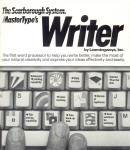 |
Complete scan of MasterType's Writer Reference Manual now available HERE & hi-res scan of original box & disk HERE
Apple press releases from Scarborough Systems etc. — September 1985
|
|
|
Reviews of MasterType's Writer, PFS: Write, Fontrix, The Print Shop, The Newsroom, Printographer, Triple-Dump, Dazzle Draw, Blazing Paddles, Catalyst, Mouse Calc, MouseWrite, Apple Access II, Hitchhiker's Guide to the Galaxy, Z-RAM... & Apple's New Peripherals: UniDisk 3.5, ImageWriter II, Apple II Memory Expansion Card, Apple Personal Modem, ColorMonitor IIe/IIc |
● Human Edge Mind Over Minors (1985) - Parent's Version - "a tool to give you an increased understanding of your child" - cracked with Passport by 4am - DISKS (4 disks - ZIP archive) (read a review HERE)
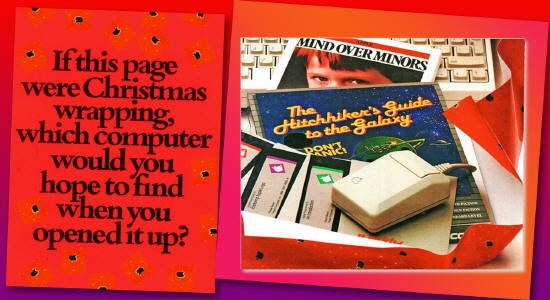
|
“If this page were Christmas wrapping, which computer would you hope to find when you opened it up?” |
|
Apple IIc / IIe Christmas promotional blitz — outsized newspaper liftout |
|
1985 Apple Computer Australia |
|
(each page of liftout approx. A3 size) |
|
|
||
See also → "Apple Packages" Christmas 1984 brochure & Apple IIc official spec sheets
Apple IIc & Commodore 64 — 1984 Christmas promotion (Grace Bros department store)
● Dark Star Systems Snapshot Shuttle v9.0D (1985) - multitasking system for Apple II+ & IIe with "Snapshot IIe" card (see also v11.0) - DISK (manual available HERE & review HERE)
● Alan Tam Featured Songs - Mockingboard Music Disk #5 - Alan Tam pop songs from Hong Kong with slideshow - DISK
Video sampler of this disk is HERE
A Serious Mission on M.T.R. (1985)
Apple II game set in Hong Kong's subway system — by Lee Tak Wah & Ho Wai Fung
Regrettably my 5.25" disk copy is damaged and unplayable but at least the intro still works — DISK
● Applied Engineering DOS Utilities - version 1.0 for RamFactor card - DISK
● Applied Engineering Timemaster ][ H.O. Program Disk (1984) - original DOS 3.3 & Pascal disks - DISKS (2 disks - ZIP archive)
→ Timemaster II H.O. User Manual REV 1.1 (1984) now available HERE
● MicroSPARC UniDOS 3.3 Plus (1986) - DOS 3.3 modified to work with Apple UniDisk 3.5" and Apple 3.5" drives - DISK (800K)
● Central Point Software Copy ][ Plus 6.0 (1986) - DOS 3.3 version (possibly a customized Copy II+ 5.0 with updated parameters - all other circulating images of v6.0 I've seen are ProDOS) - DISK
Central Point Software selling Copy II Plus 5.0 in Australia
September 1985 — Your Computer
● Utilico Microware Essential Data Duplicator III (1984) Disassembled - 'Sourcerer' disassembly of EDD III to DOS 3.3 disk - DISK
● Utilico Microware Essential Data Duplicator 4 v4.1 (1986) & EDD 4 Plus v4.8 (1987) - DISK (video showing EDD 4+ Card in action is HERE)
|
EDD disk scans — original Impossible Mission disk versus functioning EDD 4 Plus backup |
|
See also EDD disk scans of Airheart, Prince of Persia, Choplifter and Skyfox |
→ Essential Data Duplicator Program Information List 4-7 now available HERE
● Caresoft Cherry Maths II (1986) - DISK
● Unicorn Software Aesop's Fables (1986) - 8-bit version - cracked with Passport by 4am - DISKS (2 disks - ZIP archive)
Original box scan for the Apple IIGS version of Aesop's Fables is HERE and complete manual is HERE
● Channelmark Corporation Grid Designer (1986) - cracked as per Computist issue 52 - DISK 1 DISK 2
● Apple Mouse Desk 2.0 (1986) - version Z1-1.0 (English) - DISK (800K) (screenshots and info available HERE & HERE)
|
|
→ High-resolution scan of MouseDesk 2.0 original 800K disk (front & back) now available HERE
|
Apple IIGS menagerie! |
|||
|
[photos courtesy eBay AU & PicClick UK] |
|||
|
MouseDesk 2.0 — Apple IIGS System Disk v3.1 — Apple IIGS BASIC v1.0 beta 4 etc... |
|||
|
some are the actual versions supplied by AAPDA - The Australasian Apple Programmers and Developers Association (AAPDA ad is HERE) |
|||
|
NB: MouseDesk 2.0 as bundled with Apple IIGS boots to ProDOS 16 (e.g. see English IIGS MouseDesk 2.0 disk @ JB Retro Collect repository† {Apple II Software > Apple_800K} or French System 1.1 disk HERE) |
|||
|
|
→ See also Apple IIGS Packing List (United Kingdom) |
†JB Retro Collect™ → jbretro.wordpress.com | |
● On Three The Graphics Manager (1986) - for Apple IIe and above - DISK
● John Wrenholt & Big Red Computer Club Print Shop Lovers' Utility Set v2.1 (1986) - ten Print Shop related utilities - DISKS (2 disks - ZIP archive)
P.L.U.S. manual now available HERE
● Tom Phelps Print Shop Graphics Viewer (1986) - viewing utility plus bonus animal clip-art - DISKS (2 disks - ZIP archive)
● Graphics for The Print Shop - Apple themed (IIc, Mac Plus), Soviet flags, maritime ships, animals etc. - DISKS (2 disks - ZIP archive)
● Springboard Certificate Maker (1986) - Gelignite Jack crack - DISKS (8 disks - ZIP archive) (manual available HERE)
● Springboard Clip Art Collection Volume 3 (1986) - sports and recreation clip art for The Newsroom - original manual & disk scans enclosed - DISKS (2 disks - ZIP archive)
● Baudville Award Maker Plus (1987) - softdocs included on disk - DISK (800K)
● Baudville 816/Paint (1987) - The Apple Odessa crack - DISK
Airheart & Mario Bros COLOUR screen dumps from 816/Paint to Apple Scribe Printer — watch my demo video HERE
● Ashton Scholastic Graphics Bank (1987) - library with over 200 pictures of Australian history and wildlife for 64K Apple II+ and above - now includes program disk with original title page - DISKS (9 disks - ZIP archive)
● Roger Wagner Publishing MouseWrite (1987) - version 2.6.8b for Apple IIc, IIGS, enhanced IIe - DISK (800K)
● Kyocera Unison PrintMaster Plus (1987) - Gelignite Jack crack - DISKS (2 disks - ZIP archive)
● Dark Star Systems Snapshot Printerrupt v11.0 (1987) - printer screen dump utility for the "Snapshot IIe" card - DISK (manual available HERE)
 |
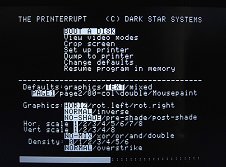 |
● Pinpoint Publishing Pinpoint Document Checker v1.0 (1986) - standalone spell checker for AppleWorks, Apple Writer and text files - DISKS (2 disks - ZIP archive)
● Pinpoint Publishing Pinpoint Spelling Checker v2.0.1 (1986) - these are regular DSK images (ProDOS) - DISKS (2 disks - ZIP archive)
● Pinpoint Publishing Pinpoint Desktop Accessories (1987) - version 2.0.2 for Apple IIc, enhanced IIe and revised for IIGS - these are regular DSK images, not the nibble images found elsewhere - DISK 1 DISK 2
● Diversi-Copy 3.2 (1986 DSR) | Diversi-Cache 1.0 (1987 DSR) | Diversi demo | Assorted BASIC programs (in German) - DISK (800K)
● Rainbird Starglider (1986) - KCAT crack - DISK
● Epyx Street Sports Baseball (1987) - clean crack - for 128K Apple //e, //c, IIGS - DISK
● Epyx California Games (1987) - kracked by Trev - for 128K Apple //e, //c, IIGS - DISKS (2 disks - ZIP archive)
![]() California Games original Apple II
box & disk scans now available
HERE
California Games original Apple II
box & disk scans now available
HERE
● Broderbund Wings of Fury (1987) - 3.5" disk version - for 128K Apple //e, //c, IIGS - DISK (800K)
● Datasoft Black Magic (1987) - MindReader crack (distinct from other circulating versions - this one is distributed by 'STRATA-CRACKERS') - DISK (Black Magic @8MHz video demo HERE)
● Scrabble - "from Maynard & Julyn Computer Library" - DISKS (2 disks - ZIP archive)
● Learningways / Collamore Dinosaur Construction Kit - Tyrannosaurus rex (1987) - 'Explore-A-Science' series - for 128K Apple //e, //c, IIGS - DISKS (2 disks - ZIP archive)
● Learningways / Collamore The Quasar Kids (1987) - 'Explore-a-Story' series - for 128K Apple //e, //c, IIGS - DISKS (2 disks - ZIP archive)
● Learningways / Collamore The Bald-Headed Chicken (1987) - 'Explore-a-Story' series - for 128K Apple //e, //c, IIGS - DISKS (2 disks - ZIP archive)
● Learningways / Collamore Just Around The Block (1987) - 'Explore-a-Story' series - for 128K Apple //e, //c, IIGS - DISKS (2 disks - ZIP archive)
● Learningways / Collamore Not Too Messy, Not Too Neat (1988) - 'Explore-a-Story' series - for 128K Apple //e, //c, IIGS - DISKS (2 disks - ZIP archive)
● Learningways / Collamore The Best Bubble-Blower (1988) - 'Explore-a-Story' series - for 128K Apple //e, //c, IIGS - DISKS (2 disks - ZIP archive)
● United Software Industries ASCII Express "The Professional" (1984-87) - v4.20 (DOS 3.3) & v4.31P (ProDOS) pristine original disks - for Apple ][, ][+, //e, //c, IIGS - DISKS (4 disks - ZIP archive)
● ProTech Software / Checkmate Technology ProTERM v2.1 (1987-88) - original disk - for 128K Apple //e, //c, IIGS - DISK
See also ProTERM 3.0 original box HERE
● Applied Engineering DataLink Communications Software v2.3 (1988-89) - original disks - for 64K Apple ][+ & 128K //e, IIGS with DataLink 1200/2400 modem - DISKS (3 disks - ZIP archive)
● Interplay Productions Neuromancer (1988) - The Apple Odessa crack - DISK (800K)
● Data East RoboCop (1988) - The Apple Odessa crack - for 128K Apple //e, //c, IIGS - DISKS (2 disks - ZIP archive)
● Logix Innovations Disk Disintegrater Deluxe v4.2 (1988) - imported by The Apple Odessa - DISK
● Capstone Trump Castle (1988) - cracked by Hans - for enhanced Apple //e and above - DISKS (2 disks & box scans - ZIP archive)
● ZBasic v4.2 (64K & 128K ProDOS) & v3.2 (128K DOS 3.3) (1985-88 Zedcor) | The Beagle Compiler v1.0 (1986 Beagle Bros) - compiled 1990-91 by cvxmelody - DISK (800K)
● Timeworks Design Ideas (1988) - DISK (800K)
→ Design Ideas manual now available HERE
● Berkeley Softworks geoPublish v2.1 (1988) - DISKS (800K) (2 disks - ZIP archive)
→ 'LEARNING GEOPUBLISH' chapter from geoPublish manual now available HERE [28MB PDF file]
→ geoPublish Utilities manual is HERE [39MB PDF file]
→ geoPublish Clip Art Reference is HERE [7MB PDF file]
● Berkeley Softworks GEOS (1988) - Graphic Environment Operating System with geoPaint & geoWrite - Dealer Demo disk > DISKS (2 disks - ZIP archive)
● StyleWare MultiScribe 2.0 (1987) - word processor similar to MacWrite - complete with Fontpaks 1-5 - for 128K Apple IIe/IIc - DISK (800K)
→ MultiScribe Picture Manager User's Manual (1987) now available HERE & Picture Manager original disk scan is HERE
● Bank Street College of Education Wordbench - official 3.5" disk version (1988) - DISK 1 DISK 2 (800K)
● Techware Tutor-Tech v2.3 (1988) - Teacher, Grader, Student systems | Merlin-Pro v2.34 (by Glen Bredon) - DISK (800K)
Video demonstration of Tutor-Tech hypermedia system with TouchWindow touchscreen is HERE
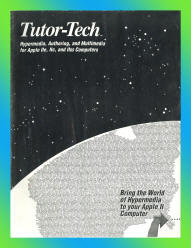
→ Tutor-Tech brochure (1990) for Apple IIe, IIc & IIGS now available HERE
→
see also
Tutor-Tech v2.4 original box & contents ![]()
● Big Red Computer Club Labels, Labels, Labels (1988) - version 1.6 - DISK
● My Software Company MyLabelMaker (1988) - version 1.1 - DISK
● Scholastic Slide Shop (1988) - version 1.2 for 128K Apple - cracked as per Computist issue 77 - DISK (800K)
● Prometheus Products ProCom-A (1988) - communications and word processing for Apple ][+, //e, //c, IIGS - DISKS (2 disks - ZIP archive)
● Claris AppleWorks 2.0 (1988) - version sold by Claris from 1988 (as distinct from the original 1986 Apple release) - DISKS (2 disks - ZIP archive) [cosmetic name change or more? - see Apple-Bug (August 1988)]
● Techware Tutor-Tech v2.6 (1989) - Demonstration disk > DISK (brochure available HERE)
● Beagle Bros BeagleWrite v3.2 (1989) - word processor similar to MacWrite - originally known as MultiScribe - for 128K Apple IIe/IIc - DISK (800K)
● Applied Engineering AW 2 Expander v3.2 (1989) - AE RAM card diagnostics & patcher for AppleWorks 2.x (also enables AW 1.2—2.1 to run on ][+) - DISKS (2 disks - ZIP archive)
● Teachers' Idea & Information Exchange StoryWorks v1.0 (1989) - use AppleWorks to create stacks with menus, hypertext and sound effects - DISK
→ StoryWorks manual now available HERE
● Copiers compilation Wizard Duplicator (cracked 1989 by Chuckles) - E.D.D. III | Nibbles Away II-C3 | Copy II+ 6.0 Bitcopy | Super Bitcopy | Quick Disk Copy | E.D.D. 2.1 | Back-It-Up III & II | Echo 1.0 | Disk Muncher 5.0 | Crazy Copy - DISKS (2 disks - ZIP archive)
→ Essential Data Duplicator III manual now available HERE [26MB PDF file]
→ Back It Up III manual is HERE [30MB PDF file]
→ The Original Locksmith Users Manual Version 5.0 is HERE [20MB PDF file]
→ Locksmith Newsletter Vol 1 No 1 Spring 1984 is HERE [34MB PDF file]
→ Nibble News Volume 2 Issue 6 July 1983 (Nibbles Away ][) is HERE [12MB PDF file]
→ Nibble News Volume 3 Issue 6 1984 (Nibbles Away ][) is HERE [10MB PDF file]
● Copy II Plus 9.0 & 9.1 (1989-90 Central Point Software) | GS Font Editor v1.2 (1989 Beagle Bros) - bootable compilation - DISK (800K)
→ Copy II Plus 9.0 original box & disks — high-resolution scan now available HERE
Copy II Plus Version 8 manual for Apple II (1988)
● Stone Edge Technologies DB Master Version Five (1990) - shareware version of powerful data base management program - DISKS (4 disks - ZIP archive)
● Beagle Bros Outliner v1.1 for AppleWorks 3.0 (1990) - boots to AW 3.0 Patcher v1.5, quit to BASIC.SYSTEM for Outliner installer - DISK (800K)
● Q-Labs SuperPatch 6.1 (1990) - customizing utility for AppleWorks 2.x and 3.0 - DISKS (2 disks - ZIP archive)
● Q Labs RepairWorks v3.2A (1990) - DISKS (2 disks - ZIP archive) (manual now available HERE)
 |
● Scholastic HyperScreen 1.0 & 2.0 (1990) - "Hypermedia power" for Apple IIe (128K), IIc, IIc Plus, IIGS - DISKS (800K) (2 disks - ZIP archive)

→ HyperScreen manual with version 2.0 addendum now available HERE [99MB PDF file]
→ The Scholastic Guide to Classroom Multimedia (Apple II — 1989) is HERE [17MB PDF file]
● Schoolware The Riddle of the Trumpalar (1990) - by NSW Department of School Education - DISKS (4 disks - ZIP archive)
● Nite Owl WRAITH 'The Devil's Demise' (1990) - for Apple //e, //c, IIGS - DISK (800K)
● Broderbund The New Print Shop (1990) - features automated hard disk installer - DISKS (7 disks - ZIP archive)
 |
 |
|
→ The New Print Shop Reference Manual & original box scans now available HERE |
|
→ The Official New Print Shop Handbook — 300 page complete scan — is available HERE |
● Hi Tech Expressions Beetlejuice Print Kit (1990) - DISK 1 DISK 2
● Hi Tech Expressions Jetsons and Flintstones Print Kit (1990) - DISK 1 DISK 2 (reference card available HERE)
● Timeworks Publish It! 3 (1990) - DISKS (800K) (2 disks - ZIP archive)
![]() My
video showing
Publish
It! 3
&
The New
Print Shop
with Epson LQ-500 on Laser 128EX is
HERE
My
video showing
Publish
It! 3
&
The New
Print Shop
with Epson LQ-500 on Laser 128EX is
HERE
● Timeworks Publish It! 4 (1991) - DISK (800K)
● Wings for learning Field Trip to the Rainforest (1991) - DISKS (3 disks - ZIP archive)
● Q Labs Talk is Cheap 3.31 (1991) - powerful telecommunications software - for enhanced //e and above - DISK (800K) (original manual available HERE)
● Applied Engineering PC Transporter System Disk v2.0.5 (1991) - BIOS, Drivers, MSDOSVOL & Utilities - original disk transfer - DISK (800K)
PC Transporter Software 2.0.5 — advertised in final issue of inCider/A+ (July 1993)
READ a review of PC Transporter by Your Computer (November 1988)
![]() PC
Transporter Installation Video
— high quality original VHS transfer now available
HERE
PC
Transporter Installation Video
— high quality original VHS transfer now available
HERE
![]() PC
Transporter
on Apple IIGS
video demonstration
— Alley Cat,
SimCity, MS Word 5.0, PC Paint 3.1
—
watch it
HERE
PC
Transporter
on Apple IIGS
video demonstration
— Alley Cat,
SimCity, MS Word 5.0, PC Paint 3.1
—
watch it
HERE
![]() PC
Transporter
on Apple IIGS
video demonstration
— success
with Microsoft Windows 3.0
—
watch it
HERE
PC
Transporter
on Apple IIGS
video demonstration
— success
with Microsoft Windows 3.0
—
watch it
HERE
{PC Transporter MSDOSVOL with preinstalled Windows 3.0 is HERE}
→ See also: PC Transporter benchmarks — Landmark CPU Speed Test etc
● Applied Engineering AW 3 Expander v1.3.1 (1991) - AE RAM card diagnostics & patcher for AppleWorks 3.0 - original disk transfer - DISK (800K)
● Satchel Software Gallipoli (1991) - AppleWorks database of Australian service personnel at Gallipoli (World War I) - DISKS (3 disks - ZIP archive)
● Chan Wilson A2FX v0.8 Beta (1991) - "Apple II File Exchange" - transfers files from Mac HFS disks to ProDOS - for enhanced //e and above - DISK
● Douglas E. Mitton UniDisk 3.5" driver (1991) - ProDOS driver to permit use of UniDisk 3.5" on the original Apple IIc (without UniDisk ROM) - from May 1991 A2-Central On Disk - DISK
 |
|||
In-depth video demonstration of Apple IIc (original ROM version) booting off external Laser 5.25" disk drive is HERE

|
→ The DOStalk Scrapbook (1985 TAB Books) — complete scan |
|
By Tom Weishaar & Bert Kersey |
|
(founders of Open-Apple/A2-Central & Beagle Bros) |
→ A2-Central & Resource Central Catalogs (June 1991 thru April 1993) [191MB PDF]
→ Resource Central Catalog (Summer 1991) [149MB PDF]
→ Resource Central Catalog (Spring 1994)
●
Nibble Magazine
Mouse Clock (1991) -
ProDOS clock driver that keeps accurate time using mouse interrupts
-
for Apple //c, IIGS or
mouse equipped IIe
-
DISK

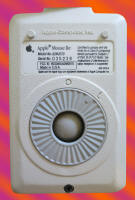


→ MousePaint for Apple IIe & IIc original floppy disk — high-resolution scan — now available HERE
→ AppleMouse IIe Packing List plus Australian & Global Warranties — high-resolution scan — now available HERE
● Claris AppleWorks 3.0 startup disk (1989/1991) - patched with Mouse Clock (ProDOS clock driver) - DISK
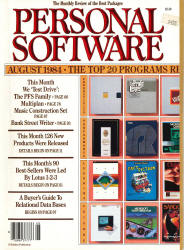
|
→ Personal Software magazine (August 1984) — complete scan |
|
Reviews of AppleMouse II & MousePaint, PFS Family, Multiplan, Music Construction Set, Bank Street Writer, Beyond Castle Wolfenstein... |
● Claris et al. AppleWorks 3.0 & 3.2 DEUTSCH (1989-92) - AW 3.0 & TimeOut UltraMacros adapted to German by Dr H. Balster, D. Lurot, R. Rötering - DISKS (800K) (3 disks - ZIP archive) [for more on German AppleWorks see AppleWorks Forum (October 1990)]
● Quality Computers AppleWorks 4 (1993) - version 4.01 pristine original disks - DISKS (800K) (2 disks - ZIP archive)
AppleWorks 4.0 — scan of original box & disks is HERE
● Martin Erlebacher / Kitchen Sink Software OmniPrint v1.1 (1993) - ImageWriter II supercharger for AppleWorks 3.0 & 4.x - original disk transfers - DISKS (4 disks - ZIP archive)
● The Phasor music software v1.1.0 (1986 Applied Engineering) | Visualizer //e v1.2 (1987 PBI Software) | RepairWorks v3.3 (1991 Q Labs) - compiled 1991 by cvxmelody - DISK (800K)
Phasor demonstration — Test Lab II: 12 channels Chip Tunes (2016 French Touch) / Ultima V / AE Phasor software
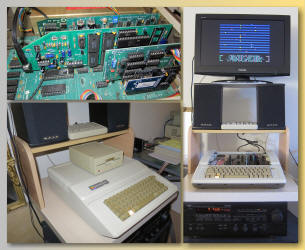 |
|||||
|
My Apple //e jukebox with Phasor v1.0 from ReActiveMicro |
● Kitchen Sink Software AccuDraw v1.1 (1992) - powerful Computer Aided Design (CAD) package - Demo disk > DISK (800K)
Robocom Robographic CAD system for Apple II
Your Computer (AU) — March 1984 & October 1983
![]()
![]()
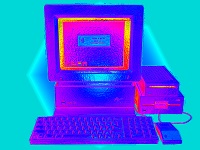
Apple IIGS Disk Images
![]()
● VIP Technologies VIP Professional GS (1986) - version 1A International - DISK (800K)
● Version Soft GS/Paint (1986) - version 1.0 English - DISK (800K)
![]() Hi-res scan
of
Questor Product Catalogue for Apple IIGS, IIc & IIe (1987)
with GS/Paint, SuperSonic Stereo Card etc
now available
HERE
[36MB PDF]
Hi-res scan
of
Questor Product Catalogue for Apple IIGS, IIc & IIe (1987)
with GS/Paint, SuperSonic Stereo Card etc
now available
HERE
[36MB PDF]
→ See also: GS/Paint — ITALIAN version original box & disk
● Electronic Arts Music Construction Set GS (1986) - Dealer demo disk (works fine on real GS but music may be garbled in emulators) - DISK (800K)
![]() Music Construction Set GS demo —
stereo recording of first two songs only
Music Construction Set GS demo —
stereo recording of first two songs only
ROM 01 Apple IIGS with AE Sonic Blaster recorded directly to line-in of Edirol R-09HR
→ FLAC audio download [19MB ZIP archive] — best quality version
![]() See also
VIDEO:
BOSE powered stereo speakers on Apple IIgs - Music Construction Set GS demo
etc
See also
VIDEO:
BOSE powered stereo speakers on Apple IIgs - Music Construction Set GS demo
etc
● Electronic Arts Deluxe Paint II v2.0 (1987) - with Startpic - DISK (800K)
● Apple Computer Apple Access II v1.2 (1986) - original disk for Apple IIGS - DISK (800K) (scan of box & contents HERE)
 |
Official Apple II Software List from Apple Computer (Feb 1987)
|
 |
![]() See also
hi-res scans
"The
most powerful Apple II" - Apple IIGS 6-page brochure (May 1988 Apple Computer
Australia)
See also
hi-res scans
"The
most powerful Apple II" - Apple IIGS 6-page brochure (May 1988 Apple Computer
Australia)
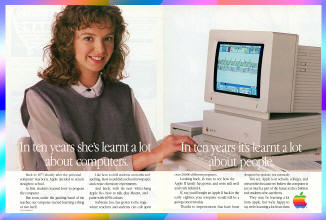
● Apple Computer ProDOS 16 Exerciser v1.0 (1987) & GS/OS Exerciser v6.0d8 (1991) - DISK (800K)
● COMPUTE!'s Apple IIGS Machine Language for Beginners (1987) - disk included with the book (programs run from Finder) - DISK (800K)
→ See also: COMPUTE!'s Guide to Sound & Graphics on the Apple IIGS by William B. Sanders (1987) - complete scan [86MB PDF]
The Elementary Apple IIGS by William B. Sanders (1986 COMPUTE! Books) - complete scan [58MB PDF]
Apple IIGS X-Basic Handbuch (1987) - complete scan {GERMAN manual} [31MB PDF]
● Activision Hacker II: The Doomsday Papers (1986-87) - First Class crack - DISK (800K)
● Activision Shanghai (1987) - "Stephen W" crack - DISK (800K)
![]() Shanghai for Apple IIGS original box & disk scans
now available
HERE
Shanghai for Apple IIGS original box & disk scans
now available
HERE
● Artworx Strip Poker II (1987) - French United Crackers Klan crack - DISK (800K)
● MicroProse Silent Service (1987) - DikRik crack | Airship Software Tonight's Sky GS V3.0 (1989) - DISK (800K)
● Activision GBA Championship Basketball: Two-on-Two (1987) - Surfer Bill crack - DISK (800K)
● Mindscape Superstar Ice Hockey (1987) - Moonglum crack - DISK (800K)
● Apple Computer The Apple IIGS Demonstration Sampler v1.2 (1987) - DISKS (800K) (4 disks - ZIP archive)
Apple-Bug (May 1988) - the newsletter of Apple-Q Brisbane - describes the programs featured in this set — see J. Scott's scan HERE
● Apple Computer Apple IIgs Diagnostic v2.1 (1988) - DISK (140K)
● Sonus Personal Musician (1987) - MIDI recording system (requires Sonus or Passport Designs MIDI card in slot 2) - DISK (800K) (manual available HERE)
|
A+ Magazine (June 1988) did a full roundup of Apple II MIDI hardware & software products — a complete scan by J. Barr-Hyde is HERE {jbretro.wordpress.com} |
|
Apple MIDI Interface Owner's Guide is HERE |
● Diversified Software Research Diversi-Tune (1988) - version 1.0 (to hear audio through internal GS speaker press 'ESC' then disable 'Stereo Card' in Configuration Menu) - DISK (800K)
Diversi-Tune 1990 Catalog - Songs Disks etc for Apple IIgs — scan available HERE
![]() Diversi-Tune —
“Turkey in the Straw”
(stereo)
Diversi-Tune —
“Turkey in the Straw”
(stereo)
ROM 01 Apple IIGS with AE Sonic Blaster recorded directly to line-in of Edirol R-09HR
![]()
![]()
![]()
![]()
![]()
● Pyware Music Writer (1988) - version 1.4.2 Special Edition (6 staves) - DISK (800K)
\
● John Wrenholt Print Shop Lovers' Utility Set IIGS v1.02 (1988) (see also v3.00) - also on the disk: As The Link Turns I: Operation Bug | As The Link Turns II: Return of Woz | GSDaleks | Applesoft BASIC CDA v1.1 | Cut Paste CDA | Marvin the Paranoid CDA | Password CDA | Print Text Screen CDA v2.0 | Quickport CDA - DISK (800K)
Print Shop Lovers' Utility Set IIGS manual now available HERE
● Version Soft Movie Studio v1.0 Beta 1 FRENCH (1988) - by Luc Serard - DISK (800K)
● Mister Z Synchro Cyclo Demo (1988) - also on the disk: GS Alliance's Border Scroll routine (by Mr Z) | Bouncing Ball Paintworks animation | Piratin' Software 1.0 Finder Extension (by Bryan Pietrzak, 1992) | 'Garage 4' X-rated animation (by Rocco X) | Formulate v1.0 (1991 Seven Hills Software - SHK disk archive) | The Manager v1.0 (1992 Seven Hills Software - SHK disk archive) - most downloaded from Talisman BBS - DISK (800K)
● Roger Wagner Publishing SoftSwitch (1988) - version 8.8 - DISK (800K) (scan of an original disk is HERE)
New improved scan of Roger Wagner 1989 Product Catalog now available HERE
● So What Software Iconix GS (1988) - Demo disk > DISK (800K) (program disk already available HERE)
● Arcadia AAARGH! (1988) - Club 96 crack with uncorrupted title - DISK (800K)
● Taito Arkanoid (1988) - Club 96 crack - DISK (800K)
● Accolade Bubble Ghost (1988) - Piratefest '88 crack - DISK (800K)
● California Dreams Vegas Gambler (1988) - F-x crack - DISK (800K)
● California Dreams Vegas Craps (1988) - USAlliance / Hitch Hiker & Appolusionist crack - DISK (800K)
● Britannica Software Jigsaw! - The Ultimate Electronic Puzzle (1988) - version 1.0 - 'brought to you by Crisis' - DISKS (800K) (2 disks - ZIP archive)
→ High-resolution scan of Britannica Software 1988 Catalog for Apple II, IBM & C64 now available HERE
● Strategic Studies Group Reach for the Stars - The Conquest of the Galaxy (1988) - First Class crack - DISK (800K)
● Spectrum HoloByte Tetris (1988) - genuine Apple IIGS / IIc+ dual version - DISK (800K) (manual available HERE)
● Broderbund Prince of Persia (1989) - French United Crackers Klan crack (Apple IIGS super hi-res crack screen but this is an 8-bit game) - DISK (800K)
![]() Prince of Persia original Apple II box scan
now available
HERE
Prince of Persia original Apple II box scan
now available
HERE
● Taito Arkanoid II (1989) - Bullwinkle Moose crack - DISK (800K)
● The Software Toolworks Life & Death (1989) - The Necromancer crack (presented by Factus) - DISK (800K)
![]() Life & Death original Apple IIGS box & disks scan
now available
HERE
Life & Death original Apple IIGS box & disks scan
now available
HERE
● Pangea Software Quadronome (1989) - as distributed by AUSOM & Computer Concepts - DISK (800K)
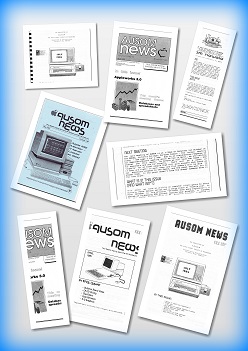
AUSOM News back issues dating back to 1980 are available to AUSOM members — see HERE
● Interplay Dragon Wars (1989-90) - Club 96 crack (runs from Finder) - DISK (800K)
● LYNX Computer Products Supergraphix 256 (1989) - adds 36 new Super Hi-res graphics and 6 music commands to Applesoft - DISK (800K)
● Gerhard Kress FontEdit 2.0.1 GERMAN (1988) - DISK (800K)
● Wilfried Ricken / [DirectPage] FontEdit GS v1.3 GERMAN (1989) - DISK (800K)
● Free Tools Association Nucleus (1989) - music of this legendary demo as played back on (i) Apple IIGS with Sonic Blaster and (ii) ActiveGS emulator - now includes complete soundtrack - FLAC audio [64MB ZIP archive]
Mac PowerBook 3400c emulating Apple IIGS - Rastan, California Demo, Nucleus Demo, Diversi-Tune
GS+ Magazine review of Rastan
● Pad & 'El Mathos Noise Blaster v2.13 (1989) - music software used in Nucleus and Photonix (translated from French to English by Factus) - DISK (800K)
GS+ Magazine advertisement for Photonix II, Bouncing Bluster II, Space Shark
● Free Tools Association Modulae (1990) - soundtrack of this demo recorded directly to line-in of Edirol R-09HR
![]() FTA Modulae soundtrack from ROM 01
Apple IIGS headphone jack
(mono)
FTA Modulae soundtrack from ROM 01
Apple IIGS headphone jack
(mono)
![]() FTA Modulae soundtrack from ROM 01
Apple IIGS with AE Sonic Blaster
(stereo)
FTA Modulae soundtrack from ROM 01
Apple IIGS with AE Sonic Blaster
(stereo)
→ FLAC audio download [83MB ZIP archive] — best quality versions
● Beagle Bros Platinum Paint (1990) - version 1.0.1 (runs from Finder) - DISK (800K)
II Alive advertisement for Platinum Paint 2.0
● Seven Hills Software GraphicWriter III (1990) - version 1.0 (includes Fonts Disk) (see also v2.0 & v2.1) - DISKS (800K) (4 disks - ZIP archive)
● Vitesse Salvation: Guardian v1.03 (1990) - disk backup & restore system - DISK (800K)
● Vitesse Quickie Program Disk v2.02 (1990) - for hand held scanner - DISK (800K)
● French United Crackers Klan Pictures 3200 Vol. 1 (1990) - 3200 colour graphics slideshow (converted from Amiga & IBM) - DISK (800K)
● Coast Show (1991) - animated roller coaster ride | Apple IIGS benchmark utility (1990) - estimates your CPU speed - DISK (800K)
● Big Red Computer Club & The Public Domain Exchange Desk Accessories & 3200 Colour Pictures (1989-1991) - DISKS (800K) (7 disks - ZIP archive)
→ Big Red Computer Club Apple IIGS Catalog (1990) now available HERE
● Game compilations - Antetris (1990 Peter Jensen) | Baracade (1990 N.J.M.) | Bartender (1989 James Winter) | Blackjack Tutor v2.0 (1991 Dave Tribby) | Dr Mario 2.0.3 (1991 Blue Adept/USAlliance) | Euchre v2.3 (1990 Bill Hamshire) | Fourplay (1990 P.Brinkley) | Fun Columns v1.1 (1991 FTA / O.Goguel & O.Bailly Maitre) | GSDaleks (1989 Ian House) | MatheMusic (1990 P.Brinkley) | NumBlox/GS v1.0 (1990 Johnson Earls) | Puzzle Bucket v1.31 (1991 Oz Data / Richard Bennett) | Qburt (1990) | Rogue (1990 wombat@claris.com) | Tetrotrix 1.1 (1990 Pierre Abel) | The Great Cave Adventure Game (1989 Doni G. Grande) | Wheel of Fortune (1990 Mark Jenison) - DISKS (800K) (2 disks - ZIP archive)
Assorted CDAs (Classic Desk Accessories) by Australian Apple IIGS developer Richard Bennett
● Senseless Violence 1: Survival of the Fetus (1989 Pangea Software / Brian Greenstone & Dave Triplett) | Minefield IIgs v1.5 (1991 Aaron Taurog) - DISK (800K)
● David Hallwas Galactic Conquest (1991) - DISK (800K)
● One-Arm Battle v1.0 (by Ken Franklin, 1990) | Solitaire v2.0 (by Bill Tudor, 1992) | Puzzler v1.5 (by Phil Doto / Softdisk Inc., 1989) - DISK (800K)
● Desktop Utilities 3.0 (by Robert Mueller & Tony Morton, 1991) (version 4.0 beta available HERE) | Cribbage GS (by Jim Sepanik, ca. 1991) | Dr Mario (by Blue Adept/USAlliance, 1991) - programs run or install from Finder - DISK (800K)
● LabelMaker v0.5 (1991 Tom Tooly Software Berlin / Theo Schneider) | Graphic Disk Labeler v2.0b (1990 Triad Venture / Mike Nuzzi & Marty Steinberg) - DISK (800K)
● CIRTECH plusRAM GS v2.0.7 (1987-90) - original disk - DISK (800K)
● Sequential Systems RAM GS Diagnostic Test Diskette rev 1.4 (1991) - DISK (800K)
● Digital Youth Alliance Exhibit A (1991) - 3200 colour graphics slideshow demo - DISK (800K)
● David Chrislip & Kenrick Mock George Bush Demo (1991) - parody of President George Bush (runs from Finder) - DISK (800K)
● Joe Kohn & Shareware Solutions Way Cool GS (1991) - companion to January 1992 inCider/A+ article on how to customize the Apple IIGS (includes Solitaire, PacMan, Beyond, ErrorCodes, Quit-To, InitMaster, Icon Ed, Start Logo, Custom GSOS, Showpic etc.) - DISK (800K)
● Office aids etc. - 1991 compilation - Address Manager v2.0e | Cassette Labeler | Graph Paper Maker | GSXEdit v1.0 | Mouse Label v1.1 | Nexus | NoteBook I | OnTime | Scheduler | Speed Read | Texter v1.1 | The Tape Insert Filer/Printer - DISK (800K)
● WestCode Software Pointless 2.0.1 (1992) - DISK (800K)
![]() Scan of Pointless Apple IIGS box & disk now available
HERE
&
TypeWest User Manual
(40 fonts for Pointless)
is
HERE
Scan of Pointless Apple IIGS box & disk now available
HERE
&
TypeWest User Manual
(40 fonts for Pointless)
is
HERE
|
AppleWorks GS printing at 360 DPI with Pointless TrueType fonts and Harmonie Epson LQ driver |
|
→ Harmonie v2.11b - DISK (1997 Shareware Solutions II) — final release of high performance GS/OS printer drivers |
|
Adds 600x300 DPI support for HP DeskJet/DeskWriter plus new drivers for Apple StyleWriter (M8000), DeskJet/DeskWriter 520 & 560C etc. (see details HERE) |
|
Bevy of print options available with Harmonie's StyleWriter driver |
|
Landscape mode - lacking in stock System 6 driver - and more... |
![]() Harmonie v2.11b Installation and User's Guide
now available
HERE
Harmonie v2.11b Installation and User's Guide
now available
HERE
● MOD files collection - compiled 1992-93 by cvxmelody and others - DISKS (800K) (5 disks - ZIP archive)
● MOD music players etc. - NoiseTracker v1.0 (1991-92 FTA) | soniqTracker v0.6.3 (by Tim Meekins, 1993) | SoundSmith v1.01 (by Huibert Aalbers, 1990) | MODZap v0.81 (by Ian Schmidt, 1992) | ShellPlay v0.5 (by Brian C. Bening, ca. 1993) - disk boots to NoiseTracker - DISK (800K)
● One World Software Wizards Noise Tracker GS v1.30 (1993) - DISK (800K)
NoiseTracker on Apple IIGS performs Amiga MOD Bomb of Luck!
![]() And for comparison — Amiga 2000
with DeliTracker V1.30 plays Bomb of Luck!
(direct stereo recording to
Edirol R-09HR)
And for comparison — Amiga 2000
with DeliTracker V1.30 plays Bomb of Luck!
(direct stereo recording to
Edirol R-09HR)
→ Amiga 2000 FLAC audio download [29MB]
● Freeware & shareware - compiled 1992-93 by cvxmelody - AniShow | Antetris | ColorTerm v3.5 | Cosmocade v1.1 | Cyber War! | GenericTerm v3.1 | GIF 3200 v0.20 | GIFview | GS-ShrinkIt v1.1 | MegaTERM v1.1 | MultiView v1.0 | PMPUnzip v1.02 | QWK-GS v1.06 | ResLin d0.33 (see also v0.48) | TransProg Start v1.01 - DISKS (800K) (4 disks - ZIP archive)
● DuelTris v1.00 (1992-93 DreamWorld Software) | Catacombs GS (1991 Softdisk Inc. / by John Carmack & Jason B.) - DISK (800K)
● Kenrick Mock / Sound Barrier Systems Pente (1993) - a board game of strategy and skill - DISK (800K)
● Shane Richards Spy Hunter GS (1993) - version with music - DISK (800K)
→ Check out CHEAT MODE for Spy Hunter GS
● The Lower Planes Demo (by Prince Slime, 1993) | Instant Access v1.0 (by Ian Brumby, 1993) - disk boots to demo (looks best on real GS), Instant Access runs from Finder (see also v3.0) - DISK (800K)
![]() Log
in to
The Lower Planes BBS in Melbourne, Australia
(resurrected on Telnet as of
Sep 2018!)
Log
in to
The Lower Planes BBS in Melbourne, Australia
(resurrected on Telnet as of
Sep 2018!)
● Ewen Wannop & Seven Hills Software Spectrum 1.0 (1993) - telecommunications program (runs from Finder) (see also v2.5.4) - DISK (800K)
Spectrum 2.0 Update v1.0 (1995) - DISK (800K)
● ECON Technologies Universe Master v1.02 (1993) - "The Premier File Management System for the Apple IIGS" - DISK (800K)
● Quality Computers Six Pack IIGS & Bonus Pack #2 (1993) - set of System 6.0 enhancements - DISKS (800K) (4 disks - ZIP archive)
→ See also NEW EDITION Six Pack manual from Call-A.P.P.L.E. (2019)
|
Apple IIGS — A Mac Of Another Color? |
|
Featured cover story |
|
MacUser (December 1986) |
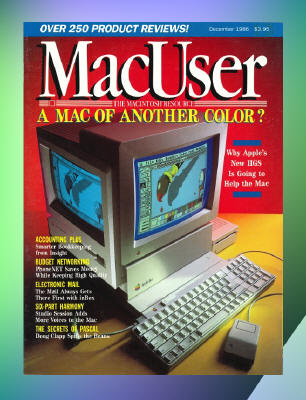
|
|
^ 2024-08-14 (last revised)
Apple Computer 10th Anniversary Timeline
Apple Special Delivery Software Fall 1980 Catalog (Apple II)

|
|
Apple Computer ad (Dec 1980 BYTE)
![]() See also
my scan of book
Shake
Hands With The Apple II Plus
(1982 Pitman Publishing Australia)
- 120-page PDF
See also
my scan of book
Shake
Hands With The Apple II Plus
(1982 Pitman Publishing Australia)
- 120-page PDF
Apple Computer Confidential Price Lists for Dealer/Educator/Government
Apple IIe / IIc / IIc Plus / IIGS (1984-89 Apple Computer)

|
|
|
|
|
|
"Ask the Experts" 8 page Apple IIc / IIe / IIGS brochure (1986 USA)


|
|
"The Apple IIGS - The Inside Story" in-store promotional poster (1986)
|
Depicted is a 1986 prototype Apple IIGS - similar units were bestowed on developers and journalists prior to the commercial launch e.g. see "Golden No 29" magazine HERE |
Genuine Apple IIGS promotional watch (1986)
More photos HERE
→ Apple IIGS promotional watch - 1200 dpi ultra high-resolution scans (front & back) now available HERE [7MB ZIP archive of JPG files]
|
The Apple Collection Catalogue Australia (1987) |
|
Apple II, IIGS & Macintosh — official merchandise, gifts and apparel |
|
|

|
|
See HERE & HERE for details of the 1989 Apple II Developers Conference (Sydney)
|
Apple Card Application Brochure (1986 Apple Computer Australia / ANZ Bank) |
|
Featuring Apple IIe, IIc, IIGS & Macintosh Plus |
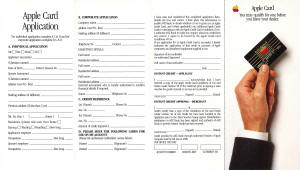

|
|
«L'Apple II. Un beau passé. Un bel avenir. Un beau présent.» 12 page Apple IIc / IIe brochure (1985 Apple Canada)
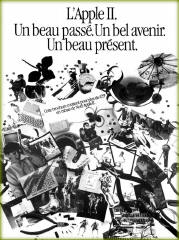
|
Source: Bibliothèque et Archives nationales du Québec |
||
|
Apple IIGS System Software 5.0 (1989) — French version |
→ Apple IIGS System Software 5.0 — scan of original box, disks & packing list is HERE
→ AppleTalk Network User's Guide for the Apple IIGS (System 5.0 bundled manual) — high quality scan is HERE
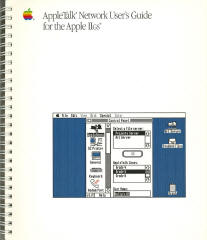
→ LocalTalk Cable System Owner's Guide (1987 Apple Computer) — complete scan is HERE
|
Installationshandbuch Apple IIGS |
|
(1986 Apple Computer GmbH) |
|
German edition of "Setting Up Your Apple IIGS" |

|
|
![]() See also
hi-res scans
Apple
Live - Sonderheft zum neuen Apple IIGS
(September 1986 Apple Computer GmbH)
- 27-page German brochure
See also
hi-res scans
Apple
Live - Sonderheft zum neuen Apple IIGS
(September 1986 Apple Computer GmbH)
- 27-page German brochure
|
(demo showing all inbuilt character sets of the GS) |

|
Apple CEO John Sculley on the Apple II — The New Apple IIc Plus — The New GS/OS & Paintworks Gold |
|
"The Computer Chronicles - Apple II Forever" (1988) |
|
(YouTube video by Computer Chronicles) |
|
The Elementary Apple IIGS |
|
by William B. Sanders |
|
262 pages — 1986 COMPUTE! Books |

|
|
→ See also COMPUTE!'s Guide to Sound & Graphics on the Apple IIGS by William B. Sanders (1987) - complete scan [86MB PDF]
DVD compilation 26 television commercials from 1977-88 (mostly Apple II)
|
Sourced from YouTube |
|
(credits to the original uploaders) |
|
|
![]() Watch now on Youtube —
1986 Australian TV commercial — Apple //c special at Myer
department store
Watch now on Youtube —
1986 Australian TV commercial — Apple //c special at Myer
department store
A milestone in the annals of Apple II gaming
Apple II original manual, box, and disk scans in COLOUR



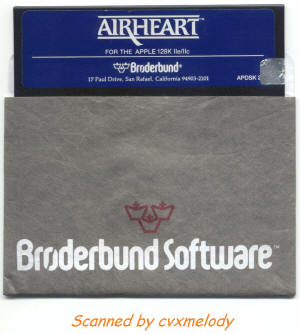
A perilous sea is the setting for this arcade-style rescue game featuring double hi-res, 3-D color graphics more dazzling than any you've seen before.
Designed by Dan Gorlin, creator of the best-selling Choplifter!, AIRHEART offers you the challenge of rescuing a sleeping prince from a watery world and restoring him to his rightful place of honor.
|
FEATURES: |
|
● Full 16-color double hi-res graphics |
|
● Fast, realistic 3-D animation |
|
● Challenging play. This is one game you won't master too easily. |
|
|
This supersedes my earlier greyscale scan of the manual which is still available HERE and includes an extra review of the game from Apple User magazine
→ See also Airheart Product Fact Sheet for Apple II HERE
^ 2016-03-21 (last revised 2019-05-08)
Epyx Street Sports Soccer (1988)
Apple IIGS original manual, box, and disk scans




In Street Sports Soccer, you're captain of your own rowdy bunch. Choose the best on the block and show 'em what you've got. Shove. Pass. Dribble. Trip. Real life, fast-action fun.
|
|
^ 2016-03-23
Apple Computer Apple Presents Spotlight (1982)
Apple II original manual and disk scans (rarity!)
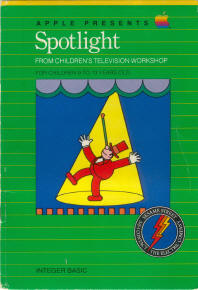


A compilation of 4 children's games: Reflect, Spotlight, Hot Stuff, Boxed In
|
|
|
|
||
Wildcard installed in slot 7 of my Pravetz 8M (Apple II Europlus clone)
Creating a 64K auto-booting backup of "Spotlight" (one of four games from the original "Apple Presents Spotlight" disk)
^ 2016-03-28 (last revised 2016-05-13)
Apple II original software box collection
30 software boxes & contents scanned for your pure indulgence !!
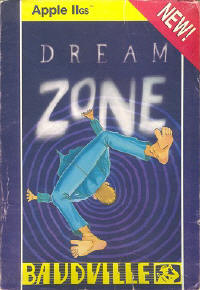

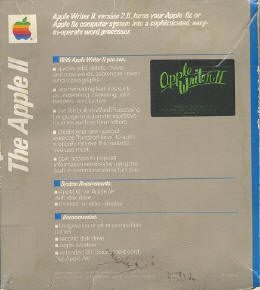

|
You'll find all of the following: |
|
4th & Inches GS Disks only - ProTERM 3, The Graphic Exchange†, TransProg III, Tetris, HardBall |
|
|
†The Graphic Exchange manual cover & Roger Wagner 1989 Product Catalog (new improved scan) now available HERE
ProTERM 3 original box is HERE
Silicon Dreams complete manual now available HERE
^ 2016-05-25 (last revised 2018-09-27)
Will Harvey's Zany Golf (1988) & The Immortal (1990)
From the stable of Electronic Arts came two of the most iconic games for the Apple IIGS
Original boxes & contents
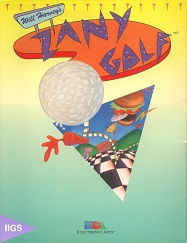
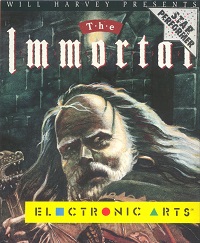
|
|
![]() Zany Golf — music
from intro & first two levels
Zany Golf — music
from intro & first two levels
ROM 01 Apple IIGS with AE Sonic Blaster recorded directly to line-in of Edirol R-09HR
(superimposed gameplay sounds are occasionally heard)
See also → Will Harvey on his Music Construction Set (K-POWER Magazine March 1984) {archive.org}
☞ YOU'LL FIND MANY MORE SCANS UNDER VINTAGE DOCUMENTS
^ 2016-07-25 (last revised 2021-03-20)
Warranty stub for Applied Engineering TransWarp II accelerator card purchased on 21 March 1990 for my Apple //e from Nemo Computer Systems of Western Australia
It had a serial number of S089. I sold it off a few years later (along with the //e), and this warranty card is all that remains. The distinguishing feature of the TransWarp II was its built-in non-volatile control panel allowing easy customization of accelerator settings. The card was clocked at 7MHz (versus 1MHz stock speed of the //e). Joystick compatibility was improved over the earlier TransWarp with a configurable joystick delay.
Though not documented in the user's manual, the speed could also be controlled through software by writing a 0 or 1 to memory location $C074, same as in the original TransWarp, i.e. POKE 49268,1 (for 1MHz) & POKE 49268,0 (for fast speed)
TransWarp II ad - I scanned this from the January 1990 issue of inCider/A+
UPDATE: I found a photo of a TransWarp II with marking "5089" on the back - see HERE - so "S089" might not have been an actual serial number, but some batch/revision number. I must have checked the original box and manual for anything vaguely resembling a S/N, before settling on "S089" as the only (apparently) unique identifier. "5089" could plausibly refer to a manufacturing date of the 50th week of 1989.
Some sales materials Applied Engineering sent me 1987-88 - product catalogs & "Inside AE" bulletins (TransWarp GS, Sonic Blaster, PC Transporter etc.)
|
PC Transporter photo album |
|
(courtesy eBay) |
IBM game Shamus running on my PC Transporter (Apple IIGS)
![]()
Above: Invoice for Zip Chip purchased from Nemo Computer Systems on 16 Feb 1990 for my sister's Apple //c
Below: "Zip Chip - Update" from Nemo Computer Systems (November 1989 AUSOM News)
see also Nemo Computer Systems pricelist (December 1989)
| My very first encounter with the Zip Chip was back in 1989 during a monthly meeting of the WAppleII users' group held at Murdoch University in Perth's southern suburbs. Graeme Platt of Nemo Computer Systems took to the floor with a compelling demonstration of the 4 MHz accelerator and I believe he must have sold a fair number of Zips to eager members! (An 8 MHz model became available in late 1989) Graeme was also an Applied Engineering dealer and he and wife Gloria were pioneers of the BBS scene in Perth. The WAppleII club, founded by Peter Hinchliffe in 1988, was an oasis devoted exclusively to Apple II, and thrived for a good 8 years before finally disbanding at the end of 1995 (coinciding with Apple Computer Australia's termination of support for the Apple II line). | ||||
|
"1990 Multiline BBS" |
|
successor to the Apple II-based Nemo & Treasure Island boards (GBBS Pro) & pro-nemo BBS (ProLine) |
"... at 182 gigabytes and 175 online CDs... one of the largest file libraries available in any country"
Zip Chip passed diagnostic test with flying colours in September 2015
☹ R.I.P.☹
Apple //c monochrome monitor depicted shortly after giving up the ghost
Apple //c 220/240V power supply (model A2M4016) — still working
Back in 1992, I ordered a new Zip GSX accelerator card for my Apple IIGS. Its top speed was 9MHz, yet it came with a 10MHz-rated 65C816 CPU. Not wishing to squander the potential, I asked a technician friend to perform a simple modification, replacing the stock crystal oscillator with a faster one, which boosted the speed of the card to 10.50MHz. The system proved to be absolutely stable and I was more than satisfied. The IIGS was subsequently retired in 1996 but in August 2015 I attempted to resurrect it for old time's sake. The Zip GSX was found to be still in perfect working order after all those years.


WOW check out those phosphor trails — Championship Lode Runner @ 10.50Mhz !!
|
Software routine to disable Zip GSX |
|
(substitute 91 for 90 as the next-to-last number in line 1020 to turn Zip GSX back on) |
|
Auto-load ZipGS Control Classic Desk Accessory from any ProDOS startup disk with the aid of ProDOS 8 CDA Loader (P8CDA) |
|
(no need for ProDOS 16 or GS/OS) |
|
NB: The official ZipGS CDA from Zip Technologies works fine when installed this way, but Zip CDA by FTA might crash |
|
ZipGS & Zip Chip advertisement (February 1992, inCider/A+) |
|
(the ad refers to a re-engineered "new design" 8Mz Zip Chip (for 8-bit Apples), so early and late versions of this model exist - the 8MHz Zip Chip was originally announced at the May 1989 Boston AppleFest and began shipping towards the end of that year. The popular 4MHz model remained available for sometime.) |
^ 2015-11-09 (last revised 2023-09-27)
A+ Magazine (April 1989)
Reviews of TransWarp GS, "Classic" TransWarp, Zip Chip, RocketChip

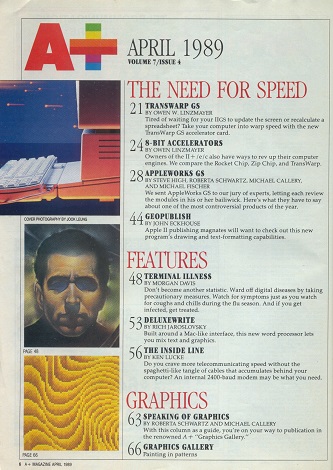
SPEED UP! New Products Meet the Need for Speed
|
Scans of cover story devoted to the following Apple II accelerator products: |
|
● TransWarp GS by Applied Engineering |
|
● "Classic" TransWarp by Applied Engineering |
|
● Zip Chip by Zip Technologies |
|
● RocketChip by Bits & Pieces Technologies |
With comparative benchmark test results
|
|
|
TransWarp GS photo album |
|
(courtesy eBay & Apple Rescue Denver) |
^ 2016-05-01 (last revised 2018-04-08)
Call-A.P.P.L.E. (October 1985)
Cover story on "Mach 3.5" accelerator (M-c-T SpeedDemon)
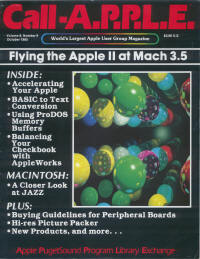

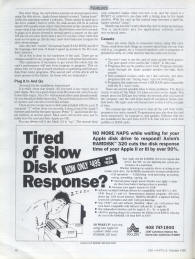

Flying the Apple II at Mach 3.5
"SpeedDemon" or "SpeeDemon" ? Both are correct - see HERE & HERE & HERE
^ 2016-10-11 (last revised 2017-04-26)
My own benchmarks of TransWarp (I & II), Zip Chip, Zip GSX & Laser 128EX etc.
|
All testing done with Speed Tester v1.0 (available HERE) |
|
Manually timed with stopwatch, rounded down to nearest second |
|
Benchmarks generated by Speed Tester are relative to a 1MHz Apple //e |
|
► DIRECT LINK to this section ◄ |
|
Apple //c — Zip Chip 4000 @ 1MHz
(ESC key pressed at startup) |
Apple //c —
Zip Chip 4000 @ 4MHz† |
Apple IIGS ROM01 —
Zip GSX 32K cache @ 10.50MHz |
Enhanced Apple //e clone —
TransWarp @ 3.6MHz |
|
|
FOR-NEXT LOOP TEST 61 SECONDS .983 TIMES FASTER |
FOR-NEXT LOOP TEST 17 SECONDS 3.52 TIMES FASTER |
FOR-NEXT LOOP TEST 8 SECONDS 7.5 TIMES FASTER |
FOR-NEXT LOOP TEST 18 SECONDS 3.33 TIMES FASTER |
|
| TEXT-SCROLL TEST 41 SECONDS 1.01 TIMES FASTER |
TEXT-SCROLL TEST 22 SECONDS 1.88 TIMES FASTER |
TEXT-SCROLL TEST 7 SECONDS 5.92 TIMES FASTER |
TEXT-SCROLL TEST 21 SECONDS 1.97 TIMES FASTER |
|
| HGR-FILL BASIC TEST 58 SECONDS .965 TIMES FASTER |
HGR-FILL BASIC TEST 16 SECONDS 3.5 TIMES FASTER |
HGR-FILL BASIC TEST 7 SECONDS 8 TIMES FASTER |
HGR-FILL BASIC TEST 18 SECONDS 3.11 TIMES FASTER |
|
| ASL COUNTING TEST 133 SECONDS 1.00 TIMES FASTER |
ASL COUNTING TEST 33 SECONDS 4.06 TIMES FASTER |
ASL COUNTING TEST 20 SECONDS 6.7 TIMES FASTER |
ASL COUNTING TEST 40 SECONDS 3.35 TIMES FASTER |
|
| HGR-FILL ASL TEST 27 SECONDS 1 TIMES FASTER |
HGR-FILL ASL TEST 7 SECONDS 3.85 TIMES FASTER |
HGR-FILL ASL TEST 3 SECONDS 9 TIMES FASTER |
HGR-FILL ASL TEST
|
|
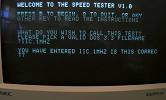
|
 †These results are consistent with a 4MHz Zip Chip (model 4000). This Zip Chip was purchased new in February 1990 and it was actually the 8MHz model we ordered and paid for (see invoice & background). It came supplied in the same box and with the same disk as the 4MHz model but with an added "8MHz" sticker on the front (all the early units were like that). So there was apparently a mix-up of some kind! (Benchmarks for an actual 8MHz Zip Chip appear below) |
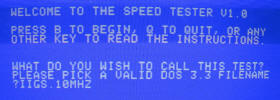 |
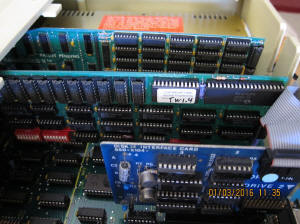 |
|
|
Enhanced Apple //e clone —
TransWarp II @ 7MHz |
Enhanced Apple //e clone —
TransWarp II @ 3.5MHz |
Apple //c —
Zip Chip 4000 @ 2MHz
|
Apple IIGS ROM01 —
Zip GSX 32K cache @ 8.5MHz |
|
FOR-NEXT LOOP TEST 11 SECONDS 5.45 TIMES FASTER |
FOR-NEXT LOOP TEST 18 SECONDS 3.33 TIMES FASTER |
FOR-NEXT LOOP TEST 21 SECONDS 2.85 TIMES FASTER |
FOR-NEXT LOOP TEST 8 SECONDS 7.5 TIMES FASTER |
| TEXT-SCROLL TEST 9 SECONDS 4.61 TIMES FASTER |
TEXT-SCROLL TEST 14 SECONDS 2.96 TIMES FASTER |
TEXT-SCROLL TEST 24 SECONDS 1.72 TIMES FASTER |
TEXT-SCROLL TEST 7 SECONDS 5.92 TIMES FASTER |
| HGR-FILL BASIC TEST 10 SECONDS 5.6 TIMES FASTER |
HGR-FILL BASIC TEST 18 SECONDS 3.11 TIMES FASTER |
HGR-FILL BASIC TEST 21 SECONDS 2.66 TIMES FASTER |
HGR-FILL BASIC TEST 8 SECONDS 7 TIMES FASTER |
| ASL COUNTING TEST 25 SECONDS 5.36 TIMES FASTER |
ASL COUNTING TEST 35 SECONDS 3.82 TIMES FASTER |
ASL COUNTING TEST 34 SECONDS 3.94 TIMES FASTER |
ASL COUNTING TEST 20 SECONDS 6.7 TIMES FASTER |
| HGR-FILL ASL TEST 4 SECONDS 6.75 TIMES FASTER |
HGR-FILL ASL TEST 7 SECONDS 3.85 TIMES FASTER |
HGR-FILL ASL TEST 8 SECONDS 3.37 TIMES FASTER |
HGR-FILL ASL TEST 3 SECONDS 9 TIMES FASTER |
|
|
|
NB: Reported speed of 8.14MHz is erroneous as the Zip GSX runs at 10.50MHz not 10 MHz (81.25% of 10.50MHz = 8.5MHz) - see explanatory note HERE |
|
Macintosh LC — Apple IIe Card @ 1MHz
("Normal" speed selected in IIe Option Panel) |
Macintosh LC — Apple IIe Card @ 1.9MHz
("Fast" speed selected in IIe Option Panel) |
Apple //e — Zip Chip 8000 @ 8MHz | Apple //e — Zip Chip 8000 @ 4MHz | |
|
FOR-NEXT LOOP TEST 61 SECONDS 0.98 TIMES FASTER |
FOR-NEXT LOOP TEST 32 SECONDS 1.87 TIMES FASTER |
FOR-NEXT LOOP TEST 10 SECONDS 6 TIMES FASTER |
FOR-NEXT LOOP TEST 11 SECONDS 5.45 TIMES FASTER |
|
| TEXT-SCROLL TEST 57 SECONDS 0.73 TIMES FASTER |
TEXT-SCROLL TEST 37 SECONDS 1.12 TIMES FASTER |
TEXT-SCROLL TEST 18 SECONDS 2.30 TIMES FASTER |
TEXT-SCROLL TEST 19 SECONDS 2.18 TIMES FASTER |
|
| HGR-FILL BASIC TEST 72 SECONDS 0.78 TIMES FASTER |
HGR-FILL BASIC TEST 42 SECONDS 1.33 TIMES FASTER |
HGR-FILL BASIC TEST 9 SECONDS 6.22 TIMES FASTER |
HGR-FILL BASIC TEST 10 SECONDS 5.6 TIMES FASTER |
|
| ASL COUNTING TEST 132 SECONDS 1.01 TIMES FASTER |
ASL COUNTING TEST 68 SECONDS 1.97 TIMES FASTER |
ASL COUNTING TEST 18 SECONDS 7.44 TIMES FASTER |
ASL COUNTING TEST 18 SECONDS 7.44 TIMES FASTER |
|
| HGR-FILL ASL TEST 137 SECONDS 0.20 TIMES FASTER |
HGR-FILL ASL TEST 135 SECONDS 0.20 TIMES FASTER |
HGR-FILL ASL TEST 3 SECONDS 9 TIMES FASTER |
HGR-FILL ASL TEST
|
|
 |
 My video HERE shows the Apple IIe Card being benchmarked |
 |
||
| See video HERE - Zip Chip 8MHz installation & benchmark | ||||
![]()
|
Additional testing with Speed Test v2.2.2 (available HERE) |
|
Manually timed with stopwatch, rounded down to nearest tenth of a second |
|
Benchmarks generated by Speed Test are relative to a 1MHz Apple //e |
ReActiveMicro's Wiki HERE offers further Speed Test v2.2.2 benchmarks
^ 2016-10-10 (last revised 2017-09-17)
|
Others ??
TransWarp GS,
RocketChip I & II, UltraWarp
(Michael Mengel & ReActiveMicro), FASTChip //e & TransWarp //c
(a2heaven),
Tecnowarp,
SpeedDemon (Mach 3.5), Saturn/Titan Accelerator, Apple IIc
Plus, Apple III, etc...
Add your own results below: |
||
|
|
TransWarp 3.6MHz vs 1MHz showdown |
|||
|
FAST vs NORMAL speed — side by side comparison on Apple IIe |
|||
|
|
Airheart Choplifter Drol Donkey Kong FASTDATA Pro — keyword search of 1.5MB TXT file Nikrom Master Diagnostics //e — 80 column test Animate Show Disk (3.6MHz only) TransWarp startup self-diagnostic test |
00:00 01:46 02:30 03:26 04:29 07:48 10:10 11:45 |
|
|
|
|||
|
Testbed: Apple IIe enhanced clone | TransWarp @ 3.6MHz |
|||
|
Only relevant to FASTDATA Pro: Apple II SCSI Card (Rev C ROM) & ITEAD Studio SCSI2SD V5.0a |
|||
^ 2016-11-20
|
TransWarp II unleashed! |
|||
|
|
Choplifter Airheart Prince of Persia (sound delay 0ms) Prince of Persia (sound delay 1ms) Prince of Persia (sound delay 5ms) TransWarp II control panel Apple //e self-diagnostic test† |
00:00 01:29 02:45 03:47 04:49 05:36 06:35 |
|
|
|
|||
|
Hardware: Apple IIe enhanced clone | TransWarp II @ 7MHz |
|||
| † I don't know how the Apple //e "checkerboard" self-diagnostic got triggered - after exiting the TransWarp II control panel, typing PR#6 somehow initiated the self-diagnostic before the drive was booted. Perhaps it is related to having toggled the TWII from OFF to FAST. Please ignore the incorrect caption at ~6:38 - the checkerboard display is the //e self-diagnostic, NOT the TWII startup diagnostic, which is actually just the brief pause before the TWII logo appears. If the TWII startup diagnostic is enabled in the control panel, you normally experience this pause with a blank screen when turning on the computer, followed by the TWII logo (if enabled) and then bootup. The //e checkerboard test isn't part of the process, though can occasionally manifest with cold or warm boot as an atypical, if harmless, quirk of the TWII. If the behaviour is by design, my only (non-expert) explanation is that it helps flush the system into a more pristine state. Also, my experience with the Apple IIGS is that periodically running its self-diagnostic to completion can be a quick fix for any strange glitches you are having. | |
Fine-tuning the speed of TransWarp II
The built-in control panel of the TransWarp II only allows a choice of two accelerated speeds - 7MHz & 3.5MHz. All is not lost, however, as the TWII is compatible with the RocketChip Utilities (available HERE). This permits fine-tuning the speed in small increments, anywhere from a fraction of 1MHz right up to full throttle! (Full credit to Glynne Tolar for making the connection - see HERE)
It's probably easiest to use the RocketChip Utilities designed for the 10MHz RocketChip II (ProDOS version shown above). In this example I have it configured for "6.66MHz" which corresponds neatly to 66.6% of top speed. So on the TransWarp II, 66.6% of 7MHz equates to 4.66MHz
Exiting the RocketChip configurer dumps you to BASIC.SYSTEM with your speed setting intact. However, invoking the TransWarp II control panel at anytime (ESC-CTRL-RESET) or rebooting with PR#6 or CTRL-OPEN APPLE-RESET will undo your speed (the TWII reverts to either 1MHz ("Slow"), 3.5MHz ("Medium") or 7MHz ("Fast"), whichever is closest to your custom setting). To preserve your speed whilst booting up the next disk, a good solution is to use something like BOOT6.SYS shown in the example above (poached from Zip Chip Utilities HERE). This bypasses the meddling of the TWII firmware...
With this approach, I was able to launch Speed Tester (in DOS 3.3 format) and benchmark the TransWarp II running at a non-standard 4.66MHz:-
|
Enhanced Apple //e clone —
TransWarp II @ 4.66MHz (configured
with RocketChip Utilities)
|
||
|
FOR-NEXT LOOP TEST 15 SECONDS 4 TIMES FASTER |
||
| TEXT-SCROLL TEST 12 SECONDS 3.45 TIMES FASTER |
||
| HGR-FILL BASIC TEST 14 SECONDS 4 TIMES FASTER |
||
| ASL COUNTING TEST 29 SECONDS 4.62 TIMES FASTER |
||
| HGR-FILL ASL TEST 6 SECONDS 4.5 TIMES FASTER |
^ 2017-05-07 (last revised 2017-06-11)
|
FASTChip //e thrashes speed records @ 16.6MHz! |
|||
|
|
Introduction Serpentine demo sequence Gobbler demo sequence Thunderchopper demo sequence FASTChip //e control panel Drol with joystick @ 16.6MHz |
00:00 00:47 04:51 06:18 08:28 11:11 |
|
|
|
|||
|
Hardware: Apple IIe (PAL model) | FASTChip //e accelerator from a2heaven in slot 7 |
|||
^ 2018-08-30
► DIRECT LINK to this section ◄
Testing out the Apple //c PAL colour modulator A2M4023
For some months, I had been on the lookout for an Apple //c A2M4023 PAL colour modulator/adapter. This elusive device attaches to the back of any PAL //c† (e.g. those sold in Australia and Europe), providing PAL colour composite & RF outputs. As luck would have it - on 12 Nov 2015 - I spotted an ad on Gumtree (Perth) for a complete Apple //c system, modulator included! Since I wanted a replacement //c monitor anyway (after my sister's one blew up), and the price was reasonable, I went ahead and purchased the lot. Photo of the "haul" taken on the day of purchase after it was brought home:-
| †
models # A2S4000*
(*
= Z, F, B, D, T, N etc) and # A2S4100^
(^
= X, F etc)...
both
the original 128K Apple //c and later "memory expansion" model //c sold in
PAL countries (e.g.
A2S4100X)
are inherently capable of colour when paired to 220-240V models of
the ColorMonitor IIc/IIe or AppleColor Composite Monitor (e.g.
A2M4043X &
A2M6020X &
A2M6021X) -
the inbuilt RCA jack of the
220-240V //c outputs a
video signal comparable to the Platinum 'International NTSC' Apple IIe - a unique
50Hz NTSC with 3.562456 MHz color reference frequency
-
see screenshots
HERE & discussion
HERE. At the time the
original //c was launched (April 1984) no monitor was compatible with
'International NTSC' and regular NTSC or PAL displays generally interpret
this signal in black & white only. In PAL markets the //c came bundled
with the A2M4023 PAL modulator, excepting France which used "Le Chat
Mauve"
A2M4020F adapter (provides RGB &
composite SECAM over SCART). In Australia, the A2M4023 PAL modulator
appears to have been retained with the
A2S4100X model //c - see
HERE. Though by this stage
you could buy the 240V AppleColor Composite Monitor (IIc or IIe matching
models) for direct-connect colour - see
HERE &
HERE &
1987 Grace Bros advertisement
|
|
As you can see, a functioning //c with green screen, comprehensive set of Apple manuals and disks, Apple beige joystick, two platinum mice, and an Apple 5.25 Drive† to boot. (After this photo was taken, I discovered tucked inside other manuals the "Setting Up Your Apple //c" guide, Apple joystick instructions, and even an unused sheet of rainbow-coloured Apple stickers. The mice turned out to be the same model - Mac Mouse M0100 platinum part # 590-0055A, which aren't //c compatible† but should work fine on a ][, ][+ or //e with mouse card. However, my sister's //c was already equipped with an Apple Mouse //c - model A2M4015Z). This is an original ROM version Apple //c ($FBBF = $FF = 255) i.e. supports Disk IIc (5.25" External Drive) but not the UniDisk 3.5 or Apple IIc Memory Expansion Card. Like most Apple //c's sold in Australia ca. 1984-86, CPU is a UK model (A2S4000B/A2S4000Z†) with dual UK/USA character sets, and emanates from Apple's European factory in Cork, Ireland. NB: The Memory Expansion model //c for Australia (A2S4100X) — memory location $FBBF = $03 or $04 — was made in Singapore (ca. September 1986+) and features an American keyboard (rectangular Return key and "3" keycap with "#" not "£"). Only the USA character set is implemented - SHIFT+3 always generates "#" on-screen and not "£". The Keyboard switch acts as toggle between QWERTY and Dvorak layouts, just like the US model. It's been claimed that the earliest shipping version of the //c in Australia - sold briefly in 1984 - likewise possessed QWERTY/Dvorak USA keyboard - see discussion HERE (though I suspect the depicted unit is actually an A2S4100X with top case swapped from UK/AU model A2S4000B. Platinum-coloured keyboard and floppy drive latch were characteristic of A2S4100, as distinct from the beige of A2S4000.) A2S4000Z is an interchangeable model code for the A2S4000B when sold outside the UK- see HERE UK / USA character sets in 80 & 40 columns on Apple //c (A2S4000B) Also accompanying this Gumtree //c are original disks for Mind over Minors, Microzine, MasterType's Writer, The Hitchhiker's Guide to the Galaxy and MousePaint - which confirms this system was originally purchased around December 1985 when Apple Computer Australia bundled these programs for free as part of a nationwide Christmas promotion. The Apple Mouse //c - also a part of that bundle - has gone missing and only the manual remains. |
†This is not 100% identical to the Unidisk 5.25" but the distinction is only critical for the Macintosh LC Apple IIe card which is compatible solely with the Apple 5.25" Drive |
†M0100 Macintosh Mouse Adapter for Apple //c is available from Raphnet of Japan. One version of the M0100 mouse with an elongated DE-9 plug is designed to work with Apple //c - see HERE. |
†Base of the CPU shows a checklist of model numbers with nothing ticked off, however keyboard end of motherboard has marking B612-0128 (B=British). The equivalent German, French, Italian & Swedish motherboards should be stamped with D, F, T or S in place of B. Exception to the rule: Spanish (PAL) is stamped I but A2S4000Y is the correct model code. HERE is a photo of a German IIc motherboard with ROM 255 / $FF |
Back of the "new" Apple //c monochrome monitor (240V Hitachi model) and close-ups of the PAL Modulator/Adapter A2M4023
I hooked the colour composite output of the PAL Modulator to my old Commodore 1084S monitor (Amiga RGB and PAL-only colour composite display†). Booted up the //c to be greeted by beautiful colour! Some screenshots:-
 |
† |
The Commodore 1084S monitor also has a "green" switch to take care of any hankering for old-school monochrome:-
And here's a high quality capture I made of the Apple IIc PAL Modulator's output |
|
Choplifter, David's Midnight Magic, Prince of Persia, Airheart... |
(RCA composite video fed directly to PC TV tuner card) |
The image qualities of the //c PAL Modulator/Adapter are similar to what you get with a PAL Apple //e —
Comparison screenshots: //c PAL Modulator to 1084S monitor | PAL //e to 1084S monitor
In these examples showing mixed lo-res graphics & text, the funky colour fringing of text - very pronounced with the //c Modulator - is more subtle on PAL //e. The //e with its integrated PAL colour circuitry has the edge in this particular instance, but for full screen graphics or text modes, you won't discern much of a difference.
![]() HERE
is a good video demonstrating the
RF (tuner) output
of Apple IIc PAL Modulator/Adapter
HERE
is a good video demonstrating the
RF (tuner) output
of Apple IIc PAL Modulator/Adapter
This was the original way most people experienced IIc PAL colour since few TV's of the time were equipped with composite inputs. Both video AND sound are transmitted over RF.
![]()
![]()
![]()
![]()
![]()
Side-by-side comparison of the Apple IIe IIc joystick platinum and beige models
 |
 |
|
|
Apple Joystick IIe and IIc (A2M2012 platinum model)
|
Apple Computer Australia Retail Price List for 1987 [8-bit system prices are HERE] Apple Joystick — A$105 Apple IIe Mouse — A$295 Apple IIc Mouse — A$169 ImageWriter II — A$1195 |
I clearly remember how Myer department stores used to sell the Apple joystick for A$99.99 - at a time when they also carried the Apple //c - which in fact was quite heavily promoted by Apple e.g. around Christmas 1985, they published a huge multi-page lift-out devoted exclusively to the //c & //e in Australian newspapers. It was coloured red like a Christmas stocking and had a comprehensive list of every dealer participating in the promotion (Myer and others). A sampling of this publicity is preserved in full colour on the cover of The Australian Apple Review - December 1985 (Vol 2 No 9) issue and a complete microfilm scan is HERE (In Western Australia, Myer took over Boans department chain in 1985 but most stores kept the name "Boans" until 1988. Though Myer itself was already well established in Perth - see HERE. In the Eastern States, Myer acquired Grace Bros department stores in 1983. These Myer-owned chains all sold Apple.) See also → 1987 Grace Bros advertisement for Apple IIc colour system
| The first blank 5.25" floppies I ever owned were the iconic Imagineering "Le Floppie" brand (sold by Myer). They were a quality product. The Imagineering firm, founded in 1980 by Jodee Rich - the American-born Australian whiz-kid - was one of the biggest distributors of computer software and hardware in Australia during the 1980's. |
Apple IIc 1984 Christmas promotion (Grace Bros department store)
See also → "Apple Packages" Christmas 1984 brochure & Apple IIc official spec sheets
Imagineering's Star Attractions software catalogue 1986 - Apple II productivity, games, education
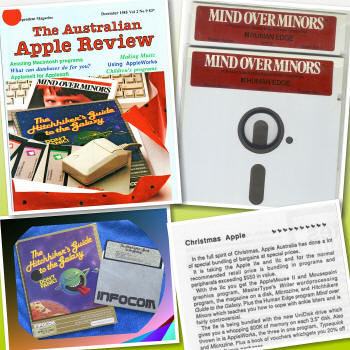 |
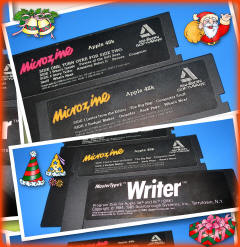 |
|
Apple Computer Australia 1985 Christmas bundle specials |
|
Mind over Minors - Microzine - MasterType's Writer - The Hitchhiker's Guide to the Galaxy... |

|
“If this page were Christmas wrapping, which computer would you hope to find when you opened it up?” |
|
Apple IIc / IIe Christmas promotion — outsized newspaper liftout |
|
1985 Apple Computer Australia |
|
(each page of liftout approx. A3 size) |
|
|
||
See also → Apple IIe & IIc Systems Authorised Retail Price List Australia (September 1985)
(YouTube video by 'Jarooosa')
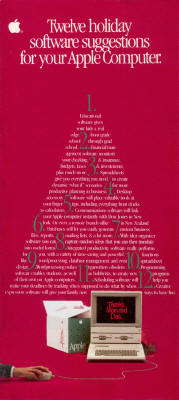
|
|
||
See also related article → Apple IIc takes on IBM's PCjr (May 7, 1984 Newsweek)
$1.5 million launch of Apple //c at San Francisco's Moscone Center with Jobs, Sculley & Wozniak
Big Apple IIc promotional booklet (20 pages) & An Apple Christmas brochure (1984) ☞ 1 | 2 | 3 | 4 | 5 | 6 | 7 | 8 | 9 | 10 | 11 (courtesy 'tumblekidsvintage' & 'the*hat*guy' on eBay)
→ High-quality PDF scan of 20 page Apple IIc promotional booklet (A2F4001) now available at The Trailing Edge
Working //c Flat Panel Display (LCD) on UK Apple //c
See also → Apple IIc & IIe Range Official Price List (United Kingdom) - January 1985
Apple IIc Flat Panel Display manual (multi-lingual)

|
Apple IIc Keyboard Poster |
|
from big Apple IIc promotional booklet (March 1984 USA/Canada) |

|
Apple IIc Scribe User's Manual — Guide to Apple IIc |
|
(1984 Apple Computer) |
The Apple IIc Reference Manual — twin volumes
(1984 Apple Product #A2L4030)
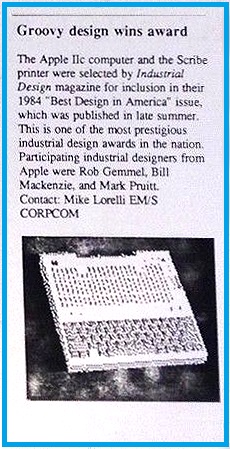
Original paperwork for
Apple //c in Australia (ca. 1984-85)
⇩
High-resolution PDF scans
⇩
Apple IIc International Packing List
(Australia) - Z030-0846-A
Apple IIc Export Control Regulations
(multi-lingual) - 030-1165
Apple Monitor IIc Packing List (1984) -
030-0942-A
{same as USA version}
Apple Monitor IIc Evaluation Report (1984) -
030-0952-A
Apple Computer 90 Day Limited Warranty (1983) -
030-0183-E REV 1183
AppleMouse IIc Packing List (1984) - 030-0962-B
Apple IIc 1985 New Year's
specials
Rob's Computer Center of Dandenong
(Melbourne)
|
„Alles, was Sie brauchen. Der Apple IIc.“ |
|
(German Apple IIc poster) |
See also → German Apple IIc complete with original box & disks - photos by Rüdiger Rost
French Apple IIc (A2S4000F) complete original boxed system
Canadian Apple IIc (A2S4000C) original box & paraphernalia
|
Apple announces a technological breakthrough of incredible proportions |
|
1984 Apple IIc brochure (USA/Canada) |
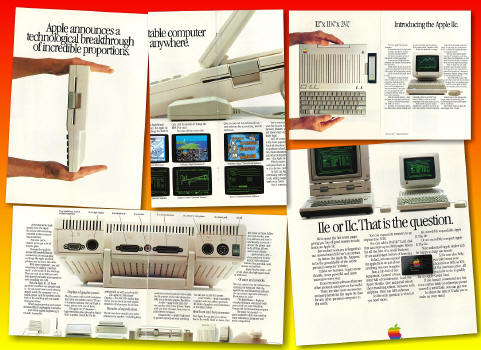
|
|
^ 2015-11-12 (last revised 2025-08-13)
Vintage Apple //c carry bag
AppleMouse IIc (A2M4035 platinum model)
^ 2016-10-04 (last revised 2020-02-29)
► DIRECT LINK to this section ◄
VGA Adapter for PAL & NTSC Apple //c (from a2heaven.com)
Very satisfying first test of Apple IIc VGA adapter - newly arrived 19 January 2016 - on a PAL Apple IIc & ViewSonic LCD monitor (VS12319). (See further down for samples from an NEC MultiSync CRT monitor)
Apple //c VGA Adapter - first impressions
Impossible Mission II given the VGA makeover
F-15 Strike Eagle screenshots. A small push-button at the front of the adapter lets you cycle between the available display modes, to suit any taste. You have a choice of regular color ; NTSC color ; shade of green ; monochrome white / green / amber, plus optional scanline emulation (resembling a CRT monitor).
|
And for comparison, an Apple IIGS screenshot (AppleColor RGB Monitor) |
||||
|
|
![]() My scan of
MicroProse catalog
with F-15 Strike Eagle, Silent Service etc. available
HERE
My scan of
MicroProse catalog
with F-15 Strike Eagle, Silent Service etc. available
HERE
![]()

LCD monitor's on-screen display showing VGA resolution of "640 x 400" [NB: resolution of the Apple IIc VGA adapter is actually 720 x 480, but not all monitors report this accurately]
This revision of the adapter works equally well on an NTSC Apple //c (although I couldn't test this) as it is auto-sensing and adapts to whichever type of //c you have. From the official description:-

VGA screenshots from The Last Ninja, Randamn and Times of Lore on a PAL Apple //c
Razor sharp text, here shown in colour, green, and amber modes
![]()

|
BELOW: Comparative test of the Apple //c VGA adapter on an NEC MultiSync V721 VGA 17" monitor (CRT). Overall, I found it superior to the ViewSonic LCD - not surprisingly with the NEC being a "true" VGA monitor, i.e. support for native resolution and refresh rate, so absolutely no pixel scaling issues or flicker. |
ABOVE: Mr Robot title screen in colour, with & without scanlines
BELOW: Mr Robot in colour & shade of green
ABOVE: Gumball in colour, monochrome green/amber & shade of green on NEC MultiSync V721
BELOW: Gumball on Apple Monitor IIc
pfs:Write 80 column text sample (with scanlines)
NEC MultiSync V721
|
Genuine 1986 Apple dealer poster showing Apple IIc with pfs:Write & ImageWriter II |
|
"The Apple IIc Typewriter Plus system" |

|
pfs:Write |
|
Original box & manual for Apple IIe (128K), IIc, IIGS (1986 Scholastic Edition) |
Also available → PFS: WRITE scanned box & disks for Apple IIc and IIe (64K) (1984 Software Publishing Corporation Edition) [7MB PDF]
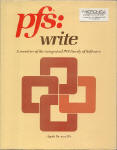
^ 2016-01-19 (last revised 2020-09-16)
Microsoft Olympic Decathlon - Apple II original (box / disk / manual)
Wow look what we have here! Olympic Decathlon is the first ever program I saw running on an Apple II and its theme song the first ever sound I heard emanating from an Apple speaker. I had never encountered a computer before and my initial thought was - what the heck is that??
Out of curiosity (mostly), I searched for it on eBay in November 2015 and to my surprise, an original boxed version was just sitting there waiting to be snapped up. I answered its beckoning call and it was safely delivered to my hands today! Feeling complete now :-)
![]()
![]() Apple
II games reviewed in July 1982 Australian Personal Computer -
Firebird, Olympic Decathlon, Epoch,
International Grand Prix, Fly Wars, Jellyfish, Star Blazer, ABM
Apple
II games reviewed in July 1982 Australian Personal Computer -
Firebird, Olympic Decathlon, Epoch,
International Grand Prix, Fly Wars, Jellyfish, Star Blazer, ABM
![]()
![]() Microsoft
Software & Hardware Catalog for Apple II & IBM PC (1984) - high-resolution
scan
Microsoft
Software & Hardware Catalog for Apple II & IBM PC (1984) - high-resolution
scan
"Olympic Decathlon" was eventually renamed "Microsoft Decathlon" — the word "Olympic" having been dropped along with the Olympic logo (due to licensing issues?). My original disk of this later edition specifically lists support for Apple II, II+, IIe, IIc and so dates from at least 1984. If the disk label is to be believed, the game's memory requirement has increased to 64K (from 32K or 48K).
NOW AVAILABLE → Complete scan of Microsoft Decathlon original Apple II box, disk, manual & Australian warranty booklet (24MB PDF)
^ 2015-12-03 (last revised 2020-02-23)
Colossus Chess 4.0 (1985) & Battle Chess Apple IIGS (1989)
Trinity ~ Zork Zero ~ Beyond Zork
The Hitchhiker's Guide to the Galaxy
Arcticfox & Marble Madness
[High-resolution scans of Arcticfox original folder & disk are HERE & for Marble Madness see HERE]
Jeopardy! 25th Anniversary Edition & Empire 'Wargame of The Century'
[Empire Apple II Command Reference Card now available HERE]
Wheel of Fortune New 3rd Edition
The Ancient Art of War
[The Ancient Art of War original box & manual scans now available HERE & the Quick Reference Card is HERE]
Math and Me & Designasaurus Apple IIGS
[High-resolution scans of Revolution '76 original box & disks now available HERE]
"Logical Connections" AUSOM Christmas flyer (1989)
Fontrix Classic & Sequel
HERE is a review of Fontrix in Popular Mechanics (March 1984)
Kangaroo & ShowOff Apple IIGS
[High quality scan of Kangaroo & ShowOff disks is HERE]
Out of this World Apple IIGS

|
|
||
|
I acquired this mint Apple IIGS version of "Out of this World" from eBay (where else? — original listing of December 2016 HERE) - luck certainly played its part as original copies of this game are scarce. OOTW is one of few games I actually played right through to the end (lol), back in 1993. |
The Dark Heart of Uukrul & Pirates! Apple IIGS
^ 2016-08-19 (last revised 2020-02-06)
► DIRECT LINK to this section ◄
Testing a new Mockingboard-K sound card (from Korea) on Apple IIGS
Bring the world of wireless audio to your Apple IIGS with an appropriate Bluetooth transmitter and headphones like the i.Tech MusicBAND 807
^ 2015-11-05 (last revised 2017-11-25)
Lancaster (1983 Apple II game) with Mockingboard music on Apple IIGS
I acquired the sealed original Lancaster (Mockingboard support version) from eBay at not inconsiderable expense, and it happily arrived just in time for Christmas! This 1983 arcade game by Will Harvey boasts fluid animation and entertaining gameplay. At first, I couldn't get it working on my Apple IIGS equipped with Mockingboard-K - it would hang at the splashscreen. But I found that by pre-booting ProDOS 8 v.2.0.1, then inserting the game disk and rebooting with CTRL-APPLE-RESET fixed the problem. Incidentally this technique also prevents side 2 of Willy Byte from stalling on a GS with Mockingboard.
Lancaster Apple II original sealed box, diskette & documentation
[Lancaster Mockingboard version disk image (Wildcard backup) now available HERE]
^ 2015-12-23 (last revised 2019-10-02)
Testing a new Mockingboard v1a (ReActiveMicro) with speech chip on Apple IIe
The Mockingboard v1a from UltimateMicro is a clone of the Sweet Micro Systems "Mockingboard A" - with its two AY-3-8913 chips giving six audio channels and two open sockets for the (hard to source) SSI-263 speech chips. Since I wanted the full Mockingboard sound/speech experience for my //e, and the speech chip happened to be in stock, I seized the initiative and placed an order in January 2016!
The Mockingboard v1a, shown before and after installation of a single speech chip (I was provided with a 78A263A which is identical to the SSI-263) - effectively turning it into a "Mockingboard C" (six audio channels + speech). Audio is output through a stereo jack and there is even a provision for the Apple speaker sounds to be fed externally using the supplied motherboard lead.
"Mockingboard" from Sweet Micro Systems (1983) - spot the family resemblance?
|
[photo courtesy of eBay] |
The official Sweet Micro Systems Mockingboard sound/speech demo disk
![]() Hear the
Mockingboard
v1a talk and sing
(direct recording to line-in
of an Edirol R-09HR)
Hear the
Mockingboard
v1a talk and sing
(direct recording to line-in
of an Edirol R-09HR)
![]()
Fond recollections of the Hong Kong PCL PRO-Mockingboard...
[Scan courtesy of Johnson Lam — http://optimizr.dyndns.org/apple/mockingboard.html ]
My very first Mockingboard - the "Pro-Mockingboard" depicted in the above brochure - was procured on a jaunt to Hong Kong's Golden Computer Arcade. The shop - which may have been located on the Arcade's middle floor - had several variants on display in a glass cabinet and I opted for the one with audio and speech capabilities. It had a mini jack & RCA sockets for stereo output and on-board pots for volume adjustment and came supplied with photocopied instructions. It provided 15 channels (possibly more than Applied Engineering's Phasor, although some of them may have been reserved for percussive effects), but exploiting that potential would have required special software which I never had. I assume the music keyboard seen in the brochure was designed to interface with this Mockingboard. They had one on display to the left of the sales counter and this was offered to me, along with song disks ("gor dip"), but those extras had to be turned down - my budget as a primary school student didn't stretch that far!
Back in Australia, I had a friend named Mazi who owned AE Phasor. A visit to his home was a surefire treat - he originally hailed from California and boy, seemed to have everything under the sun! I borrowed his AE Phasor software which proved to be compatible with my Pro-Mockingboard. It would run without modifications and what you heard was correct though maybe only 6 of the 12 music channels were audible in the songs. The sound effects samples played fine. Interestingly, the Phasor software flat out refuses to operate with a regular Mockingboard (see screenshot HERE). So the Pro-Mockingboard (by Peninsula Computerland of Hong Kong) was evidently more Phasor-like in design (Phasor came out in 1984 at a time when many popular Apple II peripherals were being cloned in the Far East). The Pro-Mockingboard was indeed fully "Mockingboard C" compatible (6 channels + speech) and gave me many hours of pleasure but regrettably, I sold it off in the early 1990s with my //e system of the time... (well I needed funds for other upgrades!)
|
Music Construction Set - 1985 Apple ][ Hong Kong Mockingboard version with music of Leslie Cheung |
|
(YouTube video by ハヤシトシオ) |
It turns out there was at least one other Mockingboard clone from Hong Kong known as the "Mustalgame Card" (short for MUSic TALk GAME). Manufactured by Capital Computer Co., it sported two AY-3-891x chips giving 6 music channels as well as integrated Software Automatic Mouth (S.A.M.) for speech. It also provided stereo amplification of the Apple II speaker sound without the need of an interconnecting cable. For more details please refer:
|
(courtesy A. Vignau's "French Touch" sale) |
|||
|
|
|||
|
@ Apple II Documentation Project |
|||
Well so much for the clones. Hong Kong also made genuine Mockingboards for Sweet Micro Systems:
Mockingboard SSP2000 REV. D (1985)
— as bundled in Australia with Bank Street Music Writer —
^ 2016-02-02 (last revised 2020-03-04)
► DIRECT LINK to this section ◄
Enhanced Apple //e system with mind-boggling software collection
I am indebted to long-time Apple enthusiast Hans Halupka of Canberra for agreeing to furnish me with his treasured Apple IIe system and an all-encompassing software collection, many magazines, manuals, original boxes, peripheral cards... on the morning of Christmas Eve (2015), I joyfully took delivery of the entire collection (shipped in 14 large boxes) and eagerly set to work unpacking and configuring the system.
Here are photos of the "finished" setup, taken on the evening of 24 December. The Apple Dot Matrix Printer, KoalaPad, Kaga RGB vision-II monitor, UniDisk 3.5", 2 x Disk II 5.25" drives, Anko joystick, platinum //e mouse (A2M2070), and system fan were all included as part of the package. Also a spare mouse (A2M4015Z) not depicted here. (I added a 4-way 9-pin serial switchbox to permit easy switching of multiple joysticks)
|
|
|
| NB: The 'e' in Apple IIe stands for 'enhanced' (in relation to the Apple II Plus) - don't confuse this with the "Enhanced Apple IIe" introduced in 1985 (with new ROMs & 65C02 CPU akin to the Apple IIc). The BYTE review (Feb 1983) above-centre refers to the early Revision A Apple IIe, which was replaced just a few months later by Revision B (adding support for double hi-res colour graphics). Apple offered the A-B upgrade for free, but charged for the enhanced upgrade in the form of the dealer-installed "Apple IIe Enhancement Kit". All Apple IIe's produced from March 1985 onwards came enhanced as standard, including of course the Platinum IIe sold between 1987-1993. The IIe which I acquired from Hans is a pre-1985 unit that was subsequently enhanced and has a "65C02" label over the keyboard power light. |
|
|||
|
|
As featured in brochure - Drol (1983 Broderbund) original box & disk available HERE & HERE & HERE |
|
"A peeled Apple IIe" poster |
||
|
(1985 Apple Computer Australia) |
||
|
I used to have the above poster on my wall! Compliments of an Apple dealer in Perth (one just had to ask nicely). It shows the PAL Apple IIe with UK keyboard that was sold in Australia at the time. Like a lot of things, it got tossed over the years — above photo is sourced from web. |
||
|
→ Better photo available HERE → A gorgeous modern remake of this poster now available as HQ digital download |


|
"The Apple IIe Keyboard" poster |
|
A3 size double-sided (ca 1985-86 Apple Computer Australia) |
|
"Win one of 10 Apple IIe Personal Computer Systems" competition |
|
(September 1983 Cleo magazine Australia) |
Photos of Hans Halupka's near-miraculous Apple II 5.25" floppy disk collection (with many originals). It took 5 x stackable plastic twin drawers (obtained from Officeworks) to house them all.
Some of the manuals and books included with the collection (near complete set of Apple IIe manuals and much more besides...)
Official Apple IIe
manuals shown above include:
Apple //e Owner's Manual
(1982/83) — Apple Product #A2L2001 (030-0356-C)
Applesoft Tutorial for //e (1982) —
Apple Product #A2L2003 (030-0358-A)
ProDOS User's Manual (1983) —
Apple Product #A2L2014 (030-0361-A)
DOS User's Manual for II, II+, //e (1983) —
Apple Product #A2L2002 (030-0407-A)
DOS Programmer's Manual for II, II+,
//e (1982) — Apple Product #A2L2012 (030-0536-A)
Applesoft BASIC Programmer's Reference Manual Volume I for //e (1982)
— Apple
Product #A2L2005 (030-0359-A)
Applesoft BASIC Programmer's Reference Manual Volume II for //e (1982)
— Apple
Product #A2L2005 (030-0507-A)
These are period correct manuals for the Apple //e ca. 1983/84. The Owner's Manual (along with supplements & addenda) was supplied with the purchase of a new //e CPU.
The full Disk ][ retail package of 1983 (with 16 sector interface card) should have included DOS User's Manual & DOS Programmer's Manual (replacing The DOS Manual of the ][+ era), and from 1984, the ProDOS User's Manual.
Apple began selling the DuoDisk in 1984 and Unidisk 5.25" ca. 1985. The DuoDisk Apple IIe Accessory Kit originally consisted of a bundle of Controller Card (DB-19), DuoDisk Owner's Manual,
ProDOS User's Manual (030-0361), ProDOS Supplement to the Apple //e Owner's Manual (030-0899), DOS 3.3 System Master disk (680-0210) & ProDOS User's Disk (680-0224).
Other manuals, such as the Apple //e Reference Manual (1982) [with Reference Manual Addendum: Monitor ROM listings (1982)] were available from dealers — please refer table on the left:-
Above right:- Early Apple IIe Packing Lists for USA & Europe (courtesy of WWW)
→ Hi-res scan of European Warranty Registration Sheet for Apple II & III now available HERE
→ See also Apple IIe Guide to the New Features (1982) {A2F2114} available HERE
Below:- DuoDisk & Disk ][ dealer pricing — November 1984 (USA)
ProDOS Technical Reference Manual (030-0360) & ProDOS Exerciser disk (680-0262) (Apple Workbench) (1983)
[Apple Dot Matrix Printer User's Manual Part II: Guide to Apple II now available HERE - for Part I: Reference see HERE]
→ Timemaster II H.O. User Manual REV 1.1 (1984) — complete scan now available HERE
Apple II Super Serial Card — high-resolution scans of original box, packing list & hardware now available HERE
Comparison of all variants of the original beige Apple //e (USA & international)
Apple IIe Supplement to the Owner's Manual (1982) |
|
English/French/German/Spanish/Portuguese/Italian |
|
→ Complete scan now available HERE [14MB PDF] |
|
→ Photos of RARE Enhanced Apple //e with Western Spanish keyboard (A2S2064E model - 115V NTSC - circa 1985) are HERE |
Original software boxes and manuals (plus binders with photocopied documentation) - much of what you see here was delivered as part of the collection
[Microzine handbook - Pirates of the Soft Seas etc now available HERE]
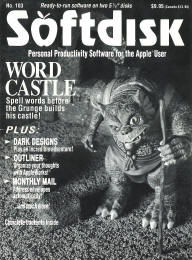

|
Softdisk for Apple II scanned original covers — issues 98-104 |
|
(1989-90 Softdisk Publishing) |
The Apple II Blue Book (2nd edition) & The Apple User's Encyclopedia
Also featured were this beautiful set of Apple II magazines - A+, inCider, Nibble, COMPUTE!'s Apple Applications, Apple User (UK), various user group publications (Applecations etc), plus photocopied manuals, etc.
![]() Applecations magazine
(Apple Users' Group Sydney) - selected
news, reviews, tips, tutorials —
Aug 1986 - July 1990 [134MB PDF
file]
|
Nov 1990 - May 1992 [125MB PDF
file]
Applecations magazine
(Apple Users' Group Sydney) - selected
news, reviews, tips, tutorials —
Aug 1986 - July 1990 [134MB PDF
file]
|
Nov 1990 - May 1992 [125MB PDF
file]
UNPACKING PHOTOS WITH CLOSE-UPS
The centrepiece of the collection - Apple //e (PAL model) with 65C02 & enhanced ROM upgrade
Rear views of the Apple //e showing ASTEC 230V power supply & underside with model/serial number
Interior view of Apple //e showing pre-installed cards
|
Slot 1 - FingerPrint Plus |
|
Slot 2 - TimeMaster II H.O. clock card |
|
Auxiliary slot - Digicard 64K extended 80 column RGB card for Apple //e |
| Slot 4 - Apple //e mouse card |
| Slot 5 - Unidisk 3.5" controller card |
| Slot 6 - Disk II interface card |
| Slot 7 - Apple II Memory Expansion Card (1MB) |
→ Hi-res scan of Apple II Memory Expansion Card (hardware front & back) now available HERE
Disk II drives and Apple Dot Matrix Printer [220/240V model A2M0059] (see below for UniDisk 3.5")
[Apple Dot Matrix Printer User's Manual Part II: Guide to Apple II now available HERE - for Part I: Reference see HERE]
Apple Dot Matrix Printer Reference Card


[Apple Dot Matrix Printer Reference Card now available HERE - hi-res scan]
The Apple Dot Matrix Printer is a rebadged C.Itoh Prowriter 8510 (parallel model)
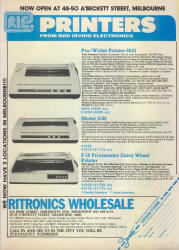 |
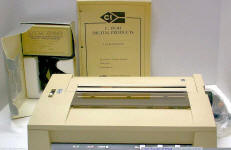 |
|
NB: The replacement for the DMP - the ImageWriter I - is more or less a C.Itoh 8510 (serial model) with redesigned case (15" wide carriage version also available) |
|
The built-in fonts are the same as those of the Apple DMP, with the addition of a new 13.4 CPI "semicondensed" mode |
|
The ImageWriter II, introduced in 1985, has a stylish new look, adds Near Letter Quality & Draft fonts, MouseText support, colour printing, networking, more advanced paper handling and greater speed, yet retains software compatibility with the earlier models and all take the same black ribbon cartridge |
|
The "Standard" quality (aka Correspondence) ASCII fonts of the ImageWriter II have the same appearance as the regular text output of an Apple DMP or ImageWriter I |
Missing drive labels? Disk ][ 3D stickers from a2heaven.com are the answer!
Kaga RGB vision-II 12" colour monitor (Taxan) [240V model] - rear connectors
READ a review of Kaga/Taxan RGB Vision-II monitor by Your Computer magazine (June 1985)
Taxan advertisement RGB vision monitor (February 1984, inCider)
|
[Scan courtesy of Asimov FTP server ] |
Ads for Taxan RGB monitors & Apple II peripherals etc (March 1983 BYTE & March 1986 Electronics Today AU)
"Unlimited colors through linear amplifier video circuit..."
[Kaga Taxan RGB Vision Color Monitor Manual now available HERE]
|
BY-LINE Apple IIGS monitor alternative?
Thomson RGB monitor with custom-made connector for Apple IIGS
NB: "A Hands-On Look At The New Apple IIGS Computer" is this issue's featured cover story
|
||||||
KoalaPad (Apple II 16-pin model)
I hope this KoalaPad doesn't feel lonesome as koalas aren't found in Perth... but there is a tiny marsupial cousin - the adorable "quokka" !! (I took these photos on Rottnest Island in September 2014)
TG Products Select-A-Port
Info on TG Products Select-A-Port - a nifty piece of kit for connecting multiple 16-pin Apple II gaming/joystick devices
Gaming paddles
[These were early, official paddles from Apple ("Hand Controllers") — see HERE for original box photo]
Taxan 80 column & RGB card for the Apple IIe - original box with contents
[Manual available HERE]
PerfectData 5.25" disk drive head cleaning kit
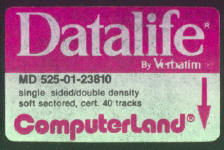
Box containing spare peripheral cards - EDD Plus copy card, Auto Mouth Talk Card (S.A.M. / Software Automatic Mouth), Grappler+ printer interface etc.
Essential Data Duplicator (EDD) - a copy program for the Apple II - is the brainchild of Donald A. Schnapp. Published by his company Utilico Software (of Napa, California and Bondi Beach, Sydney), it was continually updated over a long period and vigorously marketed till the end. The main arm of the business in America was restyled to "Utilico Microware" by 1984. Australian sales and support were handled by Dr Kremer (the office being co-located within his surgical practice). Early formative work on the software was done when Don was still attending high school in the United States (this info comes courtesy of fellow student David Orriss Jr). Eventually he teamed up with Charles J. Rosenberg, teenage inventor of an auxiliary disk drive controller capable of reading raw bitstreams, and the result was the supremely powerful "EDD 4 Plus" (software + card combo).
EDD Plus cable for UniDisk 5.25" or DuoDisk (DB-19 connector)
DuoDisk/UniDisk 5.25" Cable Upgrade Kit instructions for EDD 4 Plus
Video of EDD 4+ card in action backing up original Microsoft Decathlon is HERE
|
Grappler+ by Orange Micro |
|
A widely emulated standard for Apple II parallel printer interfaces |
![]() 1991 Grappler+ ROM image (v3.2) &
high quality card photos
are
HERE
1991 Grappler+ ROM image (v3.2) &
high quality card photos
are
HERE
[Grappler+ brochure available HERE and manual for The Bufferboard is HERE]
The auxiliary slot of the Apple IIe came preconfigured with the Digicard Extended 80 column RGB card (manufactured by Maclagan Wright & Associates of Melbourne). This is a really great piece of hardware.
Some pages from the Digicard manual describing its key features:
"... Note that the switch under the front of the Apple now changes the Apple HI-RES modes between colour and monochrome"
Digicard DIP switch settings - user-selectable colours for normal and inverse text in 40 & 80 columns
[Digicard 64K Extended 80 Column RGB Card for Apple IIe Instruction Manual now available HERE]
Here is what AppleWorks looks like on the Kaga RGB vision-II monitor with the Digicard configured to display text in dark blue. As you can see, 80 column text is very crisp and usable:-
For certain applications - e.g. those using double hi-res colour - menus and graphical text are barely readable (but this is no different to regular composite displays). Screenshot of MultiScribe on the Kaga RGB vision-II monitor with Digicard in colour mode:-
But fear not! Flip the rocker switch underneath the Apple //e keyboard, and the Digicard instantly converts to monochrome (560 x 192 double hi-res in this example) - now all the screen elements in MultiScribe are perfectly legible!
Double hi-res screenshots of Neuromancer on the Kaga RGB vision-II monitor with Digicard in colour mode:-
Battletech
Prince of Persia, Spy vs Spy, Paperboy, Maniac Mansion, Gumball & Archon II on the Kaga RGB vision-II monitor
Close-ups of the Kaga RGB vision-II monitor (front) and the fingerpad of the FingerPrint Plus. Pressing the fingerpad interrupts the running program, and up pops a menu with useful options (screen dump etc)
First tryout of Apple Dot Matrix Printer - Airheart screen dump made with FingerPrint Plus
[Manual for FingerPrint Plus available HERE]
Skyfox screen dump FingerPrint Plus to Apple Dot Matrix Printer demo video
Plastic transportation disk (for UniDisk 3.5" drive)
![]()
^ 2015-12-26 (last revised 2024-08-04)
Apple IIe Extended 80-Column Text & Colour Video Card (assembled in Australia)
Apple Computer part number A661-91097
Mr GC kindly permitted me to photograph this Apple IIe (pre-platinum PAL model) with an Australian made extended 80-column video card. I don't think I've ever seen one of these before! Rather unusually, it plugs into both the auxiliary slot and slot 3 (which line up directly in the PAL IIe). The slot 3 connector is a mostly blank wafer with just a single "finger" making electrical contact inside the slot. The card has an RCA composite output which yields a better picture on the 240V ColorMonitor IIe/IIc or AppleColor Composite Monitor IIe/IIc than the standard video output jack of the motherboard.
[I found good photos HERE and an intriguing discussion HERE. Note that there is absolutely nothing wrong with the PAL Apple IIe's standard composite video output - e.g. see my Jumpman screenshot (PAL IIe direct to PAL Commodore 1084S monitor). Yet surprisingly, the 240V ColorMonitor IIe or IIc cannot decode PAL (4.43MHz) colour burst at all and only produce colour with 50Hz NTSC (3.56MHz). The PAL Apple IIe motherboard has a colour toggle switch and with PAL colours disabled (i.e. switch in "mono" setting) video output reverts to a 50Hz NTSC-like signal — just not of the exact type which the 240V ColorMonitor IIe expects. According to AUSOM News (March 1987), the colours appear swapped around i.e. blue is red, green is blue, red is green → Donkey Kong screenshot {wrong colours}. It seems this monitor only displays correct colour when fed a compliant NTSC/50 signal, which is supplied by this special video card (A661-91097) on the PAL IIe. Whether the equivalent ColorMonitor IIe in Europe needs the same workaround I cannot say. Those units (if they actually exist) won't be the same as those sold in Australia - besides voltage (likely 220V), and a northern hemisphere-tuned CRT picture tube, the logic board could also differ... Evidently though the ColorMonitor IIc (A2M4043Z) for Europe (or S.E. Asia?) shares the same logic board as the Australian ColorMonitor IIe & IIc (A2M2056X & A2M4043X) → Photo: logic board courtesy of Arcade King @ aussiearcade.com forum — this actually makes sense as the native video output of any 220/240V Apple IIc is NTSC 3.56Mhz (50Hz) and pairs perfectly with 240V ColorMonitor IIe/IIc or AppleColor Composite Monitor IIe/IIc → see also Photo: Oscilloscope waveform - colour burst of European Apple IIc courtesy Marco Orlandi ]
Illustrative pictorial sourced from Australian eBay...
LEFT: ColorMonitor IIe on 240V PAL Apple //e with "extended 80-column colour card"
RIGHT: Enlarged views 240V ColorMonitor IIe (A2M2056X)
|
NB: According to the discussion HERE the 240V "AppleColor Composite Monitor IIe" (A2M6021X platinum model) only supports colour with "International NTSC-50" and not PAL (having now obtained an A2M6021X of my own I can personally confirm this finding). This situation also pertains to the earlier 240V beige "ColorMonitor IIe" (A2M2056X) made between 1985-86 (seen above) - the "better" match (cosmetically) for the original beige PAL //e in Australia/New Zealand (when fitted with A661-91097 video card!). NB: A2M6021X retains the same logic board of the A2M2056X. |
Extended 80 Column Text and Video Card ("Colour Card") — NTSC/50 (3.56MHz) for the PAL Apple //e
LEFT: Original box with part # A2A0004
MIDDLE: Some cards were also being produced in Singapore
RIGHT: Apple Panic colour screenshot (courtesy T. Stewart)
This replaced the old Extended 80-Column Text Card in Australia and New Zealand ca. 1986 and became standard equipment on every 128K PAL //e sold that year.
It could also be purchased separately by existing PAL //e owners wishing to upgrade to 128K 80-columns and for attaching an Apple ColorMonitor IIe or IIc (240V models).
NB: This card is obsolete where the Platinum 'International NTSC' Apple IIe is concerned
![]() Extended
80-Column Text and Video Card Addendum
available
HERE
(courtesy P. Howard)
Extended
80-Column Text and Video Card Addendum
available
HERE
(courtesy P. Howard)
"... this card includes a special video output port for use with the Apple COLOUR MONITOR IIe or Apple COLOUR MONITOR IIc in a 220V-240V country"
David Wilson furnishes some technical details of the card —

|
Apple ColorMonitor Installation Manual (IIe/IIc) (80 pages) |
|
English / French / German / Italian / Spanish |
|
(1985 Apple Computer) |
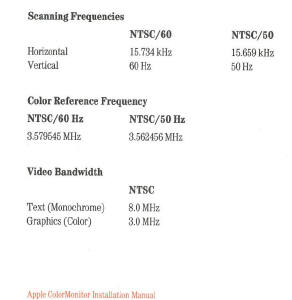 |
This manual only describes NTSC/50 (3.56MHz) and NTSC/60 (3.58MHz) versions of the Apple ColorMonitor (no mention of PAL at all). If this official info is correct, then the video card A661-91097 (AUS-0004) must output an NTSC/50 (3.56MHz) colour signal. Some pertinent info HERE. The motherboard RCA jack of the beige PAL Apple //e is also capable of a quasi NTSC/50 with the colour toggle switch of the motherboard set to mono. Refer discussion HERE. In mono switch setting, the PAL colour circuitry of the //e is disabled whilst some kind of NTSC colour burst is introduced, yet this signal isn't fully compatible with these NTSC/50 monitors - the symptom manifests as colours being swapped around i.e. blue is red, green is blue, red is green → see screenshot HERE. The A661-91097 video card rectifies this problem on the PAL //e. These same NTSC/50 monitors happen to work just fine on every other 8-bit Apple II model sold in PAL regions (Euro II/II+, IIc and Platinum IIe 'International NTSC') - no workaround necessary for those machines as they already produce a 50Hz NTSC (3.56MHz) colour signal of the expected format. |
Apple //e PAL colour switch |
||
|
Table comparing all international variants of the beige Apple //e |
|
Apple IIe Supplement to the Owner's Manual (1982) |
→ Complete scan available HERE [14MB PDF]
|
Enhanced Apple //e with Western Spanish keyboard (rarity!) |
|
A2S2064E model (115V NTSC) - circa 1985 |
![]()
Apple II Europlus
Mr GC also had this gorgeous, mint condition Apple II Europlus
![]()
Apple II on cover of Electronics Australia (February 1979)
![]() High-resolution scan of
Apple II review from Electronics Australia now available
HERE
High-resolution scan of
Apple II review from Electronics Australia now available
HERE
|
ComputerLand (Melbourne) Apple II Plus ad (above) & description of the Apple II Plus (below) |
|
Both from my 1980 edition of "Electronics Australia - Microprocessors & Personal Computers" |
|
(did they actually sell the NTSC Apple II Plus in Australia, during the very early days?†) |
| † I found the definitive answer HERE - the "Eurapple" mod was standard in the early Australian Apple II Plus (i.e. 50Hz "PAL" B&W output via motherboard RCA jack), and PAL colour RF modulator card was an optional extra. Special considerations - the 240V ColorMonitor/AppleColor Composite IIe/IIc monitors will work for direct-connect colour as they correctly interpret the 3.56MHz NTSC subcarrier of Euromod machines - see video demonstration. |
|
Apple UCSD Pascal & C.E.D. Card Reader — ads by ComputerLand (Melbourne) |
|
Electronics Australia - June & July 1980 |
|
Apple II Graphics Tablet (A2M2007) |
|
photos courtesy eBay |
ComputerLand magazine & newspaper ads (Melbourne, Canberra, Sydney)
|
Apple II advertisement |
|
Electronics Australia - October 1981 |
![]()
![]()
![]()
Early Apple II reference manuals supplied by ComputerLand Australia
^ 2016-05-16 (last revised 2023-04-12)
► DIRECT LINK to this section ◄
AppleColor Composite Monitor IIe/IIc & Platinum Apple IIe — International Varieties
AppleColor Composite Monitor specifications
Feedback card with Apple Computer Australia warranty insert
|
|
NTSC Apple
II
— Master
crystal 14.318 MHz
divide by 4
→
3.58 MHz
NTSC colour burst (@ 60Hz) Apple's Color Composite monitors were sold in 120 volt and 240 volt versions — though they appear physically similar, they are in reality very distinct and not functionally interchangeable NB: 120V model AppleColor Composite monitors support 3.58 MHz NTSC colour (60Hz) These "standard" North American monitors produce colour with any conventional NTSC source. PAL 4.43 and NTSC 3.56 are not supported. 220/240V AppleColor Composite monitors support 3.56 MHz NTSC colour (50Hz) THESE SPECIALIZED MONITORS OPERATE ON EFFECTIVELY A PROPRIETARY VIDEO STANDARD ("NTSC 3.56") AND WON'T PRODUCE COLOUR ON ANYTHING APART FROM THE 50Hz 8-BIT APPLE II MODELS — standard NTSC 3.58 and PAL 4.43 are unsupported by these displays On the Apple II Europlus, Apple IIe International NTSC (platinum model) and PAL market Apple IIc (220/240V) getting colour is simply a matter of PLUG AND PLAY with the 240V Apple colour composite monitors. The PAL Apple IIe (beige model) does need a special version of the Extended 80 Column Card [A661-91097] with its own dedicated video output, in order to display correct colours on these "International NTSC" monitors. 120V model AppleColor Composite monitors are NOT colour-compatible with these Euro-spec machines. I'm not aware of any Apple-brand monitor compatible with PAL 4.43 MHz colour (at least no such model was sold in Australia or Europe). A definitive 1992 spec sheet for the AppleColor Composite Monitor IIe makes no reference to a PAL version. |
|
AppleColor Composite Monitor IIe |
|
A2M6021X 240V 'International NTSC-50' model for the southern hemisphere |
Unlike its 120V North American counterpart, this 240V model has an IEC mains socket for a detached power cord
Packing List for North American version (A2M6021)
"ColorMonitor IIe / IIc" - as they were originally called when launched in late 1985
Apple ColorMonitor IIe
A2M2056X 240V 'International NTSC-50' model as sold in Australia & New Zealand
See also → New release ColorMonitor IIe/IIc with Australian pricing - Your Computer (November 1985)
"There are two models of the new colour monitor, one for the IIc and one for the IIe; they are identical in all important respects, but styled to suit the respective models"
→ My scan of Apple ColorMonitor Installation Manual (1985 multi-language edition) now available HERE
|
"Technically, the ColorMonitor IIe is an RGB monitor on the inside... A standard composite video jack "looks" at the computer's video signal. If the color burst frequency is present, the signal is split from composite video into its components (red, green, blue and sync signals)." — The Apple II Review (Spring 1986) |
||
Apple ColorMonitor IIe & IIc original boxes
NB: ColorMonitor IIe is beige, whereas AppleColor Composite Monitor IIe is platinum - colour-matched for original Apple IIe and platinum IIe, respectively. I was unclear whether the IIc model was ever released in the PAL countries. Both the original 128K PAL Apple IIc i.e. model #A2S4000* (*=Z, F, B, D, T, N etc) and the later model //c for those markets (e.g. A2S4100X - "memory expansion" model a.k.a. "enhanced IIc") were inherently capable of colour, outputting an 'International NTSC-50' type of signal compatible with 220-240V models of the AppleColor Composite Monitor IIe (e.g. A2M6021X) - see screenshots HERE & discussion HERE). Apple-Bug (February 1988) - the newsletter of Apple-Q Brisbane - published a pricelist for AppleCare in Australia. Extended warranty coverage for "Colour Mon.IIc", "Flat Panel Display.IIc" and even "Apple III" could be purchased from Apple Computer Australia - intriguing no? An official Australian Apple Product List (1988-89) does show "IIc Colour" monitor. So without a doubt, the 240V IIc colour monitor is for real!
These 1987 retail price lists for Australia give A$795 as the cost of an Apple //c Colour Monitor (A$80 for matching monitor stand)
Dust covers for "//c Colour System" were even available from Apple Users' Group Sydney (ad on right)
See also → Apple IIc colour system advertisement Australia - 1987 Grace Bros (New South Wales) @ Twitter
Actual examples of this most elusive of Apple //c monitors!
240V AppleColor Composite Monitor (IIc) (A2M6020X)
ABOVE: photo courtesy 'musovern' (of New Zealand) @ aussiearcade.com {image URL}
Original discussion topic HERE
BELOW: photos courtesy Danny & Ian (of Australia)
240V ColorMonitor IIc (A2M4043X) & matching monitor stand (A2M4027)
|
Apple IIc — 220/240V model (50Hz video output) Assembled in Ireland |
|
COLOUR with direct attachment to 240V ColorMonitor IIc (A2M4043X) |
→ see also CHOPLIFTER screenshot (220/240V Apple IIc to matching 240V ColorMonitor IIc)
|
eBay photos of original box for Apple II Monitor Stand (A2M4029) - introduced early 1987 Coloured platinum, this stand suits ColorMonitor IIc, AppleColor Composite Monitor (IIc) and RGB or mono IIGS monitors. Monitor sits flat with the feet detached. With feet slotted in place, the monitor is tilted up (allowing room for a raised //c to fit below the front lip). The earlier ColorMonitor IIc Stand (A2M4027) is angled by design (lacks detachable feet) and suits the same monitors, but is coloured snow white to match the original IIc. Its front overhang only has enough clearance for an unraised //c (handle retracted) to tuck beneath. The tilt-and-swivel Apple Universal Monitor Stand (M0403) was introduced 1987 for Macintosh II monitors yet is also officially compatible with the aforementioned IIc and IIGS monitors. |
|
There's a lot to be said for owning an Apple IIc |
|
ca. 1986-87 Apple IIc brochure (USA) |
|
Showcasing AppleColor Composite Monitor (IIc) & more... |
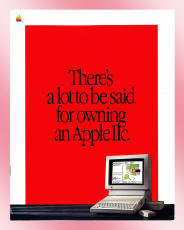
|
|
The 120V version monitors sold in North America support colour with regular NTSC 3.58 MHz only (other video modes i.e. PAL 4.43 MHz & NTSC-50 (3.56 MHz) will come up in monochrome). 'International NTSC-50' was a hybrid phenomenon first seen in the Apple II Europlus/Euromod (ca. 1979+) and the original 128K Apple IIc (April 1984) and subsequently extended to the 'memory expansion' Apple IIc (September 1986) and platinum Apple IIe (January 1987) - as sold in PAL markets. Any 220-240V model of the ColorMonitor IIe/IIc or AppleColor Composite Monitor IIe/IIc ought to be compatible. The specification defines a 3.562456 MHz colour burst and vertical and horizontal scanning frequencies of 50 Hz & 15.659 kHz. A hardware modification to convert International NTSC Apple IIe to regular NTSC is described HERE.
The original pre-platinum Apple IIe sold in PAL markets from 1983-86 has a regular PAL 4.43 colour output (compatible with many TVs & any PAL monitor) — but this machine is the exception to the rule, as all other 8-bit Apple II models released in PAL region are natively 50Hz NTSC 3.56 and will need extra help to produce a PAL colour signal (e.g. PAL Colour Encoder Card for Europlus, A2M4023 PAL Modulator/Adapter for IIc).
Other considerations — when a CRT monitor designed for the northern hemisphere is operated in the southern hemisphere (or vice versa), certain colours may appear faded or patchy in some parts of the screen - a consequence of the CRT picture tube having been factory calibrated for the magnetic field of the opposing hemisphere.
Apple //e — NTSC / PAL / International NTSC flavours
The main oscillator crystal at Y1 is labelled "197-0002" on the International NTSC mainboard. The American NTSC Apple IIe has the corresponding part "1970001"
|
What is the Apple IIe? |
Platinum Apple IIe Product Information Brochure |
|
1987/88 Apple Computer Australia (LB1236) |
May 1988 Apple Computer Australia (LD 2008) |
|
Fold-out pamphlet introducing Platinum Apple IIe {A2S2128X} |
Overview & technical specifications of Platinum IIe {A2S2128X} |
|
|
|
"WHAT A BEAST!" What one reviewer had to say → Platinum Apple IIe colour system — a success story for Australian schools - Your Computer (March 1988)
|
Screenshots from AppleColor Composite Monitor IIe (A2M6021X 240V NTSC-50 model) on my platinum 'International NTSC' Apple IIe (A2S2128X Australian model) |
|
Alien Arcade — Skyfox — Airheart — Europe Ablaze — Prince of Persia — Apple //e RGB Demo — Summer Games II — Gumball — Transylvania — Mario Bros — Lode Runner — Karateka — Apple IIe self-diagnostic |
Gumball in colour and monochrome white
(monitor's front control panel has a mono toggle button)

|
The A2M6021X supports colour with 50Hz "International NTSC" (3.56 MHz) only (other video modes i.e. PAL 4.43 & NTSC 3.58 will come up in monochrome) |
|
To see colour on this display you'll need either a 220-240V Platinum Apple IIe 'International NTSC' or any 220-240V Apple //c (e.g. A2S4000B, A2S4100X) or Apple ][ Europlus/Euromod† (direct hookup) or a 220-240V PAL Apple //e with Extended 80-Column Colour Card (A661-91097) |
|
†equivalent clones will also work e.g. Pravetz 8M |
The Apple IIGS can be toggled between 60 and 50hz vertical scanning frequency via the System Standards control panel which affects both RGB and composite video. NTSC colour burst remains fixed at 3.58MHz (American standard) hence the GS is not colour-compatible with these 240V NTSC/50 (3.56MHz) monitors. It also has no provision for PAL colour (4.43MHz) via composite. The GS will of course do colour over any regular NTSC display (60Hz guarantees a stable picture but Vertical-Hold adjustment may be needed at 50Hz).
|
Apple ][ Plus — 230V Eurapple model (A2S2 Euromod Plus) — "REV 04" motherboard Manufactured USA ca. 16th week 1980 |
|
COLOUR with direct attachment to 240V AppleColor Composite Monitor IIe (A2M6021X) |
|
Apple II Europlus (IA2S2) — "820-0044-C" revision motherboard Manufactured Ireland ca. 36th week 1981 |
|
COLOUR with direct attachment to 240V AppleColor Composite Monitor IIe (A2M6021X) |
Noteworthy: Full screen text appears monochrome on Europlus (1981) yet exhibits green/purple artefacts on Eurapple Plus (1980) — using the exact same monitor
This Europlus has a newer type of motherboard which is described in the Addendum to the Apple II Reference Manual
Video courtesy eBay Australia
→ see also Photo: Oscilloscope waveform - colour burst of Apple II Europlus courtesy 'nilseuropa'
Did you know? In the early 1980s, a computer monitor supplier in the British Isles mulled the release of a customized "International NTSC" version of the Thorn TX10 as direct-connect colour solution for the Apple II Europlus — please see HERE
|
Apple //c 'Memory Expansion' model (A2S4100X for Australia/N.Z.) |
|
with preinstalled 256K Apple IIc Memory Expansion Card (for total 384K RAM) |
→
see also
![]() TAKE-APART PHOTOS — Apple IIc (A2S4100X) with 384K RAM &
PAL Modulator
TAKE-APART PHOTOS — Apple IIc (A2S4100X) with 384K RAM &
PAL Modulator
Overview of the "Memory Expandable" Apple IIc → see Apple IIc New Features Update (1986 Apple Computer)
A2S4100X model identifier (also showing A2S4100C & A2S4100E models)
|
Apple //c 'Memory Expansion' model (A2S4100X for Australia/N.Z.) |
|
with 1MB Apple IIc Memory Expansion Card (for total 1152K RAM) & UniDisk 3.5 drive |
COLOUR with direct attachment to 240V AppleColor Composite Monitor IIe (A2M6021X)
|
Apple //c original ROM model (A2S4000B/A2S4000Z/A2S4000N for Britain/Australia/N.Z./Netherlands etc) |
|
COLOUR with direct attachment to 240V AppleColor Composite Monitor IIe (A2M6021X) |
|
Apple //c (A2S4000B/A2S4000Z) versus Platinum Apple IIe (A2S2128X) |
|
Comparison screenshots — direct attachment to 240V AppleColor Composite Monitor IIe (A2M6021X) |
As you can see, their picture qualities are practically indistinguishable
|
Apple //c PAL Modulator/Adapter (A2M4023) |
|
& Apple IIGS composite video (regular NTSC/60) |
|
MONOCHROME ONLY on 240V AppleColor Composite Monitor IIe (A2M6021X) |
Apple IIGS to 120V AppleColor Composite Monitor IIe (A2M6021) works in colour as expected - see my screenshot HERE
Check out my video with more screenshots from 120V AppleColor Composite Monitor IIe (A2M6021 NTSC-60 model) HERE
In France, RGB solutions were especially favoured — every Apple //c came standard with "Le Chat Mauve" RGB Scart/péritel adapter (A2M4020F)
This adapter also provides a composite SECAM signal for displays with only "half Scart" input and will even route the //c speaker audio.
"Le Chat Mauve" also made an RGB TTL adapter (DIN plug) for //c and the Eve and Féline cards (RGB 80-column 64K) for Apple //e.
RGB screenshots on “RCA” Blackpearl CRT TV (21DG17EA / TX807CS)
from Apple IIc (A2S4100X) with Le Chat Mauve RGB SCART adapter (A2M4020F)
NB: This TV is equivalent to European model THOMSON Blackpearl (21DG17E / TX807CS)
TIP: Cold-booting forces some double hi-res games (e.g. Platoon) to render correctly in colour which might otherwise appear mono with Le Chat Mauve
You can also force colour or mono graphics modes using the Pre-Booter on the Video-7 Color Enhancer IIc Demo Disk
Neuromancer (above left) inadvertently invokes the DHR mixed mono-colour mode of Le Chat Mauve!
GOLDEN magazine ads showing French Apple //c 384K system (A2S4110F / A2S4100F → see FinApple's blog) — as bundled with Philips RGB colour monitor and Extasie software by Le Chat Mauve
& the original 128K Apple //c (A2S4000F) with Arlequin - another Chat Mauve creation
![]() See
HERE
for photos of French Apple //c with Philips CM 8535 RGB monitor
&
HERE
for French Apple //e with Philips RGB colour monitor & Le
Chat Mauve "Eve" card
See
HERE
for photos of French Apple //c with Philips CM 8535 RGB monitor
&
HERE
for French Apple //e with Philips RGB colour monitor & Le
Chat Mauve "Eve" card
Philips monitors were endorsed by Apple in parts of Europe — e.g. prior to the release of Monitor II, the officially approved monochrome displays for Apple //e in Italy were Apple Monitor /// (green) and Philips PCT 1201 (amber)
→ see 1983 Italian Apple IIe & III brochure "I Sistemi di Elaborazione Personale"
A subsequent Italian IIe/IIc brochure (ca. 1984/85) describes an optional RGB interface for Apple IIe «Uscita RGB opzionale» → see HERE {Vintage Apple ~ jesperalsed.com}
In Germany, an optional Apple IIc RGB interface was officially available (as alternative to IIc PAL Modulator) → see HERE
Philips (RGB) monitors & Le Chat Mauve products were officially supported by Apple in France → see Liste des Produits Supportés - 1988 Apple Computer France
|
12" Apple Monitor II & Apple Monochrome Monitor IIe (green phosphor) |
|
A2M2010P (230V beige) & A2M6017X (240V platinum) models for Australia |
|
Apple Computer Australia crowd pleaser @ PC86 Show (June 1986 Melbourne) |
|
Guess what |
|
1986 Apple IIe brochure (USA) |
|
Showcasing AppleColor Composite Monitor IIe, Apple Monochrome Monitor IIe & more... |

|
|
Table comparing known variants of the Platinum Apple IIe
| "Apple //e 128K" | Platinum Apple IIe | Platinum Apple IIe | Platinum Apple IIe | Platinum Apple //e "Hybrid" | |||||||
| Market | USA | USA | Canada |
Australia New Zealand |
Europe | ||||||
| Model Number |
A2S2064 |
A2S2128 | A2S2128C | A2S2128X |
A2S2080* [* = D (Germany), F (France), S (Sweden), P or B (Britain), T (Italy)] |
||||||
| Date of Introduction | October 1986† | January 1987 | January 1987 | January 1987 | ca. January 1987 | ||||||
| Factory of Origin | Singapore |
Singapore Malaysia |
Singapore | Singapore | Ireland | ||||||
| Voltage | 120V | 120V | 120V | 220/240V | 220/240V | ||||||
|
Motherboard Type
Platinum motherboards are Rev. C or higher, as denoted by part number suffix (this list is incomplete!) |
Platinum Apple IIe |
Platinum Apple IIe
607-0187-C 607-0187-D 607-0187-E
|
Platinum Apple IIe
C607-0187-E |
Platinum Apple IIe International NTSC
B607-0288-C B607-0288-D B607-0288-E |
Platinum Apple IIe International NTSC
B607-0288-C (Britain) B607-0288-D (Britain) F607-0288-C (France) D607-0288-C (Germany) D607-0288-D (Germany) S607-0288-D (Sweden) etc. 607-0288-E has also been observed |
||||||
| Video System | NTSC | NTSC | NTSC | International NTSC† | International NTSC | ||||||
|
Standard Memory (64K motherboard plus preinstalled miniature 64K extended 80-column card) |
128K | 128K | 128K |
128K Some miniature extended 80-column cards were made in Australia → PHOTOS |
128K | ||||||
| Case Type | Original Apple IIe style | New platinum style | New platinum style | New platinum style | Original Apple IIe style but new platinum colour scheme which also extends to the name badge | ||||||
| Keyboard | Original Apple IIe layout (no numeric keypad) | New platinum layout with numeric keypad | New platinum layout with numeric keypad. Dual character set French-Canadian & USA English with toggle switch under keyboard. | New platinum layout with numeric keypad. Dual character set UK & USA English with toggle switch under keyboard. | Original Apple IIe layout (no numeric keypad) in new platinum colour. Dual character sets with toggle switch under keyboard. "65C02" label on keyboard power light. | ||||||
| Additional Notes |
Original box is labelled
"Apple IIe 128K" - photo album available
HERE
"E64009Y A2S2064" is the model code of the depicted specimen - i.e. manufactured 40th week of 1986 in Singapore
For the PAL countries, the platinum "International NTSC" motherboard also shipped briefly in the traditional Apple IIe case ca. late 1986 → VIDEO: Swedish beige IIe International NTSC & PHOTOS: New Zealand beige IIe International NTSC
† "Apple introduces an updated IIe" from Apple-Bug (April 1987) - reprint from Open-Apple (February 1987) |
Serial numbers of two units appear in top photo:- E-9-43... E=Singapore, 9=1989, 43=43rd week
WI-3-34... WI=Malaysia, 3=1993, 34=34th week
Apple IIe production shifted to Malaysia towards the very end (IIe was discontinued November 1993). "WI" factory code denotes Malaysia, and some ca. 1992-93 units were also "Packaged in Malaysia" - see HERE. Some pre-platinum IIe motherboards were also made in Malaysia - see HERE.
Keyboard PCBs were made in Taiwan for at least some platinum IIe's - see photos HERE
|
More photos available HERE |
This model has a UK keyboard (£ keycap) yet its primary market was Australia/N.Z. An identical machine was sold in the UK but assigned a different model number → A2S2128Z {photos}
Apple Computer Australia October 1990 Product Range & Price List is HERE (PAL Colour Card A2A005 is available option for the Platinum Apple IIe → PHOTOS)
The pre-platinum PAL Apple IIe for Australia (ca. 1983-86) was sourced from both Ireland (A2S2064P - UK model) & Singapore (A2S2064X - AU model) - all had dual character support for UK & USA English
†a.k.a. NTSC/50 — 3.562456 MHz colour burst & 50 Hz vertical scanning frequency - also the native video output of any Apple ][ Europlus or 220/240V Apple //c. Regular NTSC or PAL displays generally interpret this signal in monochrome only. The 240V AppleColor Composite Monitor (IIe or IIc matching models) will give colour - see HERE & HERE. |
These units were assembled in Ireland, but at least some of the motherboards were made in Singapore, and some keyboard PCBs were by Mitsumi.
Apple Monochrome Monitor IIe A2M6017Z model for Europe (220/240V platinum)
Further info & photos of the European Platinum Apple IIe are available here: |
||||||
| Others ?? A Spanish version of Platinum Apple IIe was evidently released in Latin America - here's a photo by Jose Ricci - a model code "A2S2128E" would be most likely but this is just an educated guess. A beige Apple //e with Western Spanish keyboard also exists (model A2S2064E - 115V NTSC). This model appears related to the Canadian beige Apple //e (model A2S2064C) - affixed to their undersides is a common model ID sticker for units assembled in Ireland. The Apple //e was also locally manufactured by Apple de Mexico in Nanicalpan. In Europe, the PAL Spanish Apple //e utilizes a somewhat different keyboard layout. |
Table summarizing colour behaviour of international Apple II models on various monitors
|
PAL Apple IIe (220/240V beige) Motherboard video switch set to COLOUR Inbuilt RCA jack |
PAL Apple IIe
(220/240V
beige) Motherboard video switch set to MONO Inbuilt RCA jack |
PAL Apple IIe
(220/240V
beige) RCA jack of Extended 80-Column Colour Card (A661-91097 — assembled in Australia or Singapore) |
International NTSC
Platinum Apple IIe
(220/240V) Inbuilt RCA jack |
Apple IIc (any 220/240V PAL-region model) Apple II Europlus/Euromod Inbuilt RCA jack |
Apple IIc
(any
220/240V PAL-region model) RCA jack of PAL Modulator/Adapter (A2M4023)
|
Apple IIGS (any model) Fixed 3.58MHz NTSC colour burst with selectable 50 / 60Hz vertical scanning frequency via System Standards control panel Inbuilt RCA jack |
|
| 240V ColorMonitor IIe (beige) & IIc (white) — NTSC/50 (3.56MHz) | MONOCHROME | WRONG COLOUR PALETTE | CORRECT COLOUR |
CORRECT COLOUR |
CORRECT COLOUR | MONOCHROME | MONOCHROME |
| 240V AppleColor Composite Monitor IIe/IIc (platinum) — NTSC/50 (3.56MHz) | MONOCHROME | WRONG COLOUR PALETTE | CORRECT COLOUR | CORRECT COLOUR | CORRECT COLOUR | MONOCHROME | MONOCHROME |
| 120V ColorMonitor IIe/IIc or AppleColor Composite Monitor IIe/IIc — regular NTSC (3.58MHz) | MONOCHROME | MONOCHROME | MONOCHROME | MONOCHROME | MONOCHROME | MONOCHROME | CORRECT COLOUR (configure GS for 60Hz to avoid rolling picture) |
| Regular PAL-only colour composite monitor or TV | CORRECT COLOUR | MONOCHROME | MONOCHROME | MONOCHROME | MONOCHROME | CORRECT COLOUR | MONOCHROME |
| Regular NTSC-only colour composite monitor or TV | MONOCHROME |
MONOCHROME (or colour artefacts) |
MONOCHROME (or colour artefacts) |
MONOCHROME
(or colour artefacts
→
Kero's Mac Mods
|
MONOCHROME (or colour artefacts) | MONOCHROME | CORRECT COLOUR |
| Regular PAL/NTSC (dual standard) colour composite monitor or TV | CORRECT COLOUR | MONOCHROME (or colour artefacts) | MONOCHROME (or colour artefacts) | MONOCHROME (or colour artefacts) | MONOCHROME (or colour artefacts) | CORRECT COLOUR | CORRECT COLOUR |
![]()
AppleColor Monitor 100 — Apple's official RGB solution for Apple IIe & III
|
Monitor on American NTSC Apple //e with Extended 80-Column Text/AppleColor Card in auxiliary slot |
|
NB: third-party adapters allow the monitor to be used on Apple II/II Plus/IIc and some variants can be made IIGS compatible by setting an internal switch → see helpful discussion HERE |
"Green only" monochrome mode:-
Extended 80-Column Text/AppleColor Adapter Card manual @ Asimov server is HERE [32MB PDF]
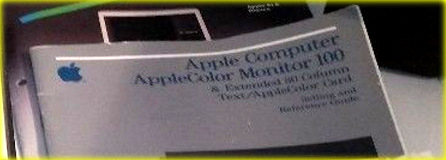
According to an OFFICIAL SPEC SHEET the AppleColor Monitor 100 features an ANTI-GLARE display, which makes it unique as the only Apple II color monitor so equipped by Apple for the US market (by contrast, all of their Apple II monochrome monitors - both domestic & international models - were non-glare as standard)
AppleColor Monitor 100 (anti-glare) vs ColorMonitor IIe (reflective)
For AppleColor Monitor 100 pricing & options please see my scan → Apple //e and //c Products Confidential Dealer Price List (USA) - November 1984
And also → RGB Monitors: Best of the Brightest - inCider (October 1985)
(reviews of AppleColor Monitor 100, Princeton Graphic HX-9 & HX-12, Zenith ZVM-135, Amdek Color 500, Thomson CV36432SI, Sakata SC-200)
The AppleColor Monitor 100 (12" RGB monitor) was officially introduced on July 9, 1984 in the United States — see Apple press release
For detailed technical discussion of Apple IIe/IIc RGB please refer Open-Apple - May 1985 (TXT) and Open-Apple - July 1985 (TXT)
“While standard single-resolution Apple graphics always come in loud and
clear on an RGB system, double-resolution graphics don't. In order to see
anything when double-resolution graphics are displayed, you must have both
an RGB card that supports double-resolution graphics and software that turns
on the RGB card's double-resolution feature...”
—
Open-Apple (May 1985)
Two examples of double hi-res programs that work fine with Apple's Extended 80-Column Text/AppleColor RGB Card are Beagle Graphics and Broderbund's Dazzle Draw, the latter even exploiting the special DHR mixed mono-colour mode available with this card (→ Dazzle Draw RGB demo video by 8BitBites).
Some DHR games show up monochrome (white) with Apple's RGB card - e.g. certain Epyx titles, Platoon by Data East, Who framed Roger Rabbit by Buena Vista and undoubtedly others (need proof? → view GALLERY of screenshots). Many software developers didn't check for full DHR compatibility with the AppleColor RGB card. It's been reported that cold-booting may alleviate this problem with some software (see further discussion HERE). Third-party //e RGB cards which more closely mimic a conventional Extended 80-column Text Card won't have these issues (→ Platoon in colour with Digicard 64K Extended 80 Column RGB Card). (NB: Native RGB of the Apple IIGS is genial with just about all double hi-res software)
It's worth noting that recent versions of AppleWin can emulate the AppleColor RGB Card (along with RGB of Video-7 and Le Chat Mauve).
The AppleColor Monitor 100 was not released in Australia. In a February 1985 interview, Rudi Hoess states that "In Australia, Apple doesn't sell a colour monitor, which means that virtually all the Apples being sold have only a monochrome green screen." His company Electronic Concepts was the official distributor of Apple in Australia from 1977 thru mid-1983. High cost was cited as the reason by Your Computer - see HERE. So down under, your options for Apple II colour were third-party PAL monitor/TV or RGB setups (e.g. Kaga/Taxan with Digicard //e RGB card → watch video demonstration HERE). The new Apple-brand colour composite monitors, launched late 1985 in the USA, were certainly available in Australia by 1986.
The Apple II Video Overlay Card, introduced 1989 by Apple, doubles as an RGB card for Apple IIe when paired to a GS AppleColor RGB Monitor (or equivalent). This card was officially available in Australia (see October 1990 Apple Australia Price List HERE).
Apple II Video Overlay Card in Australia & American brochure
![]()
![]()
![]()
![]()
RGB piggyback cards for AE RamWorks
ColorLink (IBM 9-pin & Apple IIGS 15-pin RGB) & Digital Prism (IBM 9-pin & AppleColor Monitor 100 15-pin RGB)
PAL Apple IIe (A2S2064X)
RamWorks ColorLink RGB Option & Taxan Super Vision III monitor
Did you know? The various AE RamWorks RGB daughterboards work by an ingenious method called bus snooping — they watch what's being written to memory locations holding video data, then duplicate it and output it after some reformatting. This is the very same technique used by a lot of modern VGA/HDMI boards for the Apple II. As all analogue video hardware on the Apple is bypassed it doesn't matter if the machine is PAL or NTSC. Please refer discussion HERE
^ 2016-05-13 (last revised 2025-10-26)
► DIRECT LINK to this section ◄
RamFactor 8M (from a2heaven.com)
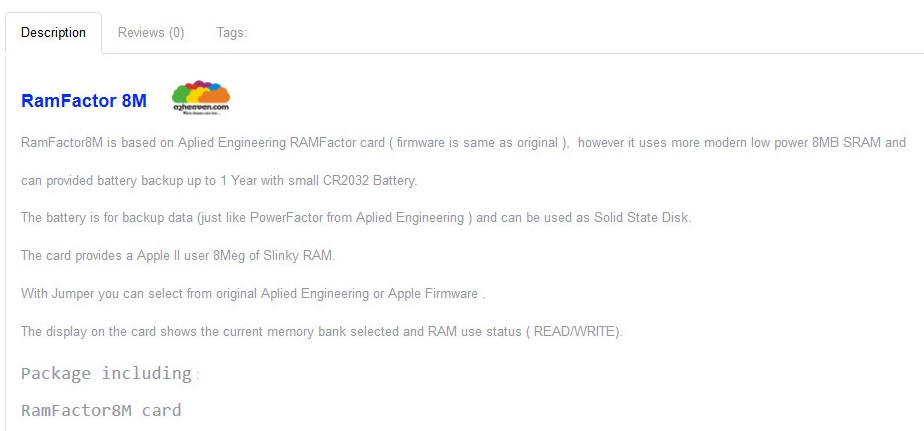
Praise the heavens! This snazzy new RamFactor 8M landed in my hands on 18 July 2016.
RamFactor 8M raring to go in slot 7 of my enhanced Apple //e
With the addition of a small CR2032 battery, the memory contents of the RamFactor 8M are preserved even whilst the computer is powered off (just like AE's RamCharger)
TIP: If you want to have multiple partitions on the RamFactor, they should be setup exclusively as storage partitions. Because once the active partition is made bootable, you can no longer call up the Partition Manager to select a different partition (without wiping RAM). So in practice, you have a choice between a single bootable partition OR one or more storage partitions (selectable via the Partition Manager — PR#n). The computer can only see a single partition on the RamFactor at any given time. There is nothing to stop you putting programs on a non-booting ("storage") partition, just the operating system will have to be loaded from someplace else (floppy or hard disk) in order to utilize them.
Various utilities can aid the tasks of backing up and restoring a RAM disk. Taking an actual example from earlier years: |
|||||
Infocom Shogun (5.25" ProDOS-based game) was copied in its entirety to a RAM disk. Using ProSel 'BACKUP' this was imaged to a file on a 3.5" disk. This 3.5" disk boots into ProSel 'RESTORE' which rapidly rebuilds the RAM disk. (The ProSel-8 manual explains everything in detail) |
|||||
|
My old ProTERM 3.0 disk employed a different approach. I had it setup with AE's Autocopy to automate copying the contents of the 3.5" disk to RAM. (But slightly modified so that holding down the Open-Apple key bypasses RAM copy)
|
Autocopy is an Applesoft program compatible with any ProDOS RAM disk (slinky or GS). Some versions - like the one shown here - will also automatically create a large RAM disk for RamWorks/Z-RAM-type cards (using the bundled ProDrive driver). |
^ 2016-07-18 (last revised 2017-11-13)
![]()
Original RamFactor (1MB) from Applied Engineering
Apple IIe starring in the movie "Bliss" (1985 Sydney)
Apple IIe as 1980's drug of choice?
Surgeon General's Warning: Apple II is seriously addictive!
Apple IIc in "Explorers" (1985)
Platinum Apple IIe & Mac LC in "Marabunta: Legion of Fire: Killer Ants!" (1998)
Macintosh in "Crocodile Dundee II" (1988) & "Back to the Future II" (1989)
Apple II in "Iron Man" (2008)
Apple IIe & IIc in "Hoarders" S3E16 {USA} / S3E14 {AU} (2010)
"American Genius - Jobs vs Gates" (2015 National Geographic)
![]()
|
Bill Gates at the University of Washington (February 2012 UWTV) |
|
(I tuned into his talk from a hotel room in Seattle!) |
|
Tributes flow to Steve Jobs |
|
(personal photos - October 2011, Taipei) |
^ 2016-01-09 (last revised 2021-07-17)
► DIRECT LINK to this section ◄
Pravetz 8M - Apple II Europlus clone (Bulgaria) - Правец 8М
◊ Released circa 1985
◊ Apple II+ clone with 6502 CPU and integrated Z-80 SoftCard for running CP/M
◊ Integrated 16K Language Card (for 64K RAM total)
◊ Clone of Apple II Europlus "PAL" version (50Hz frame rate) - mono video on standard PAL monitor - needs a PAL card in slot 7 ("PAL Encoder" or "Euro Color PAL-SECAM Card") to output in colour (alternatively hardware modification to motherboard to output NTSC color) — my video demonstration of Pravetz 8M with PAL Colour Encoder Card is HERE
◊ Special considerations - 240V ColorMonitor/AppleColor Composite IIe/IIc monitors (but not the 120V models) will work for direct-connect colour as they correctly interpret the unusual 3.56MHz NTSC subcarrier of Apple ][ Europlus/Euromod and equivalent clones
◊ Selectable Latin / Cyrillic character set (keyboard & text display)
◊ High quality Soviet era internal speaker (possibly of better quality than Apple's)
◊ In theory, can accept any card that works with Apple ][+ except RAM cards with ribbon cables connecting to the motherboard 4116 DRAMs since the Pravetz uses higher density 4164 DRAMs and has a language-card already built-in
◊ ProDOS needs to be patched for compatibility as for Franklin 1000 series and most other clones (notably excepting Laser 128 & Franklin ACE 2000/500) since it contains a "prawec" string instead of "APPLE ][" in its ROM - alternatively, one can burn an original Apple ROM and replace the standard factory ROM
I acquired this venerable Apple II clone on eBay in December 2015 for a good (i.e. "non-vintage") price, taking delivery on 4 January 2016. Thanks to seller George for providing most of the detailed info (above) on the Pravetz, along with the DIP switch settings for configuring the integrated peripherals (see further down).
|
Red, rosy Apple |
||
|
The Sydney
Morning Herald |
||
| “The Apple II not only lives in the schools of Australia. It is alive and well and living in Russia as well. There is an Apple II user group although most of the machines are Apple II compatibles rather than the genuine article. Apparently, the bulk of the existing Apple II computers were imported into Eastern Europe as a result of joint Bulgarian-Soviet work. The mainstay of the Apple II user population is the Pravets-8 computer, an Apple II clone that was available in Russia for many years at low prices.” | ||
UNPACKING PHOTOS WITH CLOSE-UPS
Pravetz 8M Apple II Europlus clone - main unit & close-up of keyboard with latin and cyrillic support
Close-up of Pravetz logo & underside of case showing serial number and 1987 manufacturing date
Rear view of Pravetz 8M. There is a 5-pin DIN socket for cassette tape recorder.
First test of Pravetz 8M with Choplifter
The Pravetz 8M came supplied with an 80 column card and Disk II interface card (clone) in slots 3 & 6. For kicks, I added an EDD Plus card to slot 5 (but later shifted to slot 4).
The Pravetz 80 column card has a "soft-switch" to alternate between standard video and 80 column mode. There is a cable going from the card to a socket on the motherboard where normally there would be a 74LS259 chip which has been relocated to the card itself. (On a real ][+ with a similar setup the chip in question would be either a 9334 or a 74LS259 in the F-14 socket). The monitor plugs directly into the video jack of the card, which outputs all text and graphics modes and switches between them transparently. Years ago, I had a Rosco "Auto-Screen 80" card with soft-switch which offered the same functionality [Rosco soft-switch instructions HERE]
Close-up of Pravetz Disk II interface card
Close-up of Z-80 CPU on the motherboard (lying just below the 6502)
For comparison, here is a shot of my Z-80 SoftCard (Hong Kong clone) - I've had it since 1984, wonder if it still works?† The Pravetz 8M integrates all this on its main board!
|
|
 |
|
| †Yes, confirmed working in December 2016 | ||
Pravetz 8M motherboard DIP switches for configuration of integrated peripherals
Pravetz 8M - DIP switch configuration table
|
SW#: |
0 | 1 | |
| 1 | 16K RAM Card | ON | OFF |
| 2 | Z80 DMA | ON | OFF |
| 3 | Z80 NMI | ON | OFF |
| 4 | Z80 IRQ | ON | OFF |
| 5 | Z80 Address shift | ON | OFF |
| 6 | Character set | CYRILLIC | LATIN |
| 7 | Speaker | OFF | ON |
| 8 | (Not used) |
ALL SYSTEMS ARE GO!
Pravetz 8M paired with an Apple //c monochrome monitor
... and a Mitac half-height 5.25" disk drive
Mitac AD-3C Apple II floppy disk drive ad - scanned from October 1985 inCider
Kraft 16 to 9 pin joystick adapter plugged into the gameport for easy external connection of 9-pin joysticks. The Pravetz 8M gameport is identical to that found on a regular II+ or //e. The orientation is also the same (pin 1 at the keyboard end).
Close-up view of Pravetz 8M game port socket (16-pin DIP). Due to the presence of an interface header sticking up directly behind the gameport it's much easier to insert a connector that has a ribbon cable, than one with a rear-protruding moulded cord. The Kraft adapter was a tight fit, being of the rear-cord variety. Nevertheless it's working perfectly even if I couldn't push it all the way in.
Pravetz 8M greets you with "prawec" on startup in place of "Apple ]["
DOS 3.3 System Master recognizes the built-in 16K Language Card and loads Integer BASIC onto it
The Pravetz 8M has built-in support for upper and lowercase
The "KИP" key serves as toggle for lowercase entry. An amber light beside the keyboard comes on for lowercase. Also, the keyboard is auto-repeating (hence no "REPT" key).
ProDOS hangs on the startup screen - it needs a patch same as most other clones since the ROM contains a "prawec" string instead of "APPLE ][" which ProDOS checks for [patched ProDOS available HERE or try the new ProDOS 2.4.1 HERE]
Back in 1984, ProPATCH from Canada could have solved this problem...
|
[courtesy archive.org] |
CP/M and WordStar tested working with the Pravetz 8M's built-in Z-80 SoftCard. The 80 column card is detected and utilized automatically. The WordStar menu does show cyrillic where inverse text would ordinarily be. Notice how the lowercase 80 column characters (e.g. 'y' and 'g') have "true descenders" - in the Western world such 80 column cards typically carried a premium price tag.
NB: Having the Z-80 enabled does not interfere with the running of non-CP/M programs in any way - it behaves just like a standard Z-80 card in a real ][+, activating only when CP/M is loaded. As far as I can tell the Z-80 maps to slot 5.
From rudimentary Applesoft testing, Pravetz 40 column mode supports INVERSE and FLASHING uppercase text, but not in 80 columns where text always appears as NORMAL. I also discovered several CTRL keystroke commands at the Applesoft prompt that are only available in 80 column mode (PR#3):-
| CTRL-A | Soft-toggle for UPPERCASE & lowercase | ||||
| CTRL-O | Switch to cyrillic character set | } cyrillic & latin elements can be mixed on the | |||
| CTRL-N | Switch to latin character set | } same page or even in the same line | |||
| CTRL-Z then CTRL-<any key> | Generates special graphics characters | → similar mode of operation as the Videx Videoterm | |||
| CTRL-Z then 1 | Revert to 40-column mode |
Comparing 40-column screen text of Pravetz 8M (left) & Apple //e (right)
See also → Video showing INVERSE & FLASHING 40-column text of Pravetz 8M (LATIN character set)
Video showing INVERSE & FLASHING 40-column text of Pravetz 8M (CYRILLIC character set)
I managed to get AppleWorks running on the Pravetz 8M in 80 columns using Videx AppleWorks Modify Plus:-
An old favourite - Beach-Head II on the Pravetz 8M
Xevious & Crazy Climber on the Pravetz 8M
Music & speech synthesis on the Pravetz 8M
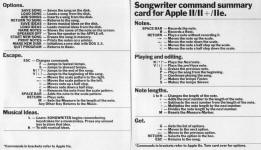 |
|
→ Songwriter manual — complete scan now available HERE [13MB PDF file]
Hard Hat Mack on the Pravetz 8M
|
Kraft KC 3 joystick |
|
Top champ with the Pravetz 8M |
COLOUR on the Pravetz 8M with genuine Apple PAL Colour Encoder Card (A2B0017) in slot 7
|
Screenshots Apple PAL Colour Encoder Card in Apple II Europlus clone (Pravetz 8M) → Samsung 32" LCD TV |
|
Xevious — Up'n Down — hookup to S-Video input of Panasonic DVD/VHS deck, then component video to TV |
|
Bilder Show Volume 3 (AUGE) — direct connection to S-Video input of TV |
COLOUR on the Pravetz 8M with direct motherboard composite connection to 240V AppleColor Composite Monitor IIe (A2M6021X)
Native video output of Pravetz 8M (or genuine Apple ][ Europlus for that matter) is 50Hz NTSC (3.56MHz) which this display correctly interprets in colour
(ordinary PAL or NTSC displays will typically produce a monochrome picture with this signal)
^ 2016-01-05 (last revised 2022-08-31)
► DIRECT LINK to this section ◄
All-in-one serial & parallel interface, clock/calendar (Thunderclock compatible), and BSR control
Overview of the VERSAcard (August 1982, Creative Computing) & ad for Thunderclock Plus (February 1982, Softalk)
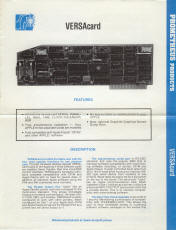


|
VERSAcard original brochure & manual cover |
|
VERSAcard placed in slot 2 of my Pravetz 8M. Fresh batteries (2 x size N) have been fitted. |
|
DIP switches on the Versacard are configured to map the clock card to slot 1, with the parallel interface disabled. The serial interface always appears in the physical slot (in this case 2). The manual HERE explains everything in abundant detail. Though I'm mainly interested in the clock/calendar functions for now. |
I downloaded a patched ProDOS 8 (v1.9) that works on any 64K clone from HERE (alternatively one could use the new ProDOS 2.4.1 HERE). The clock programs you see above were manually keyed in from the VERSAcard manual.
VERSAcard showing correct date and time. Unlike the Thunderclock, the VERSAcard does store the year, which is set to "1916". Just tack on 100 for the current century.
Testing out the official Thunderclock Plus (DOS 3.3) utilities (disk image HERE)
Thunderclock is detected in slot 1 and time and date are recognized. So the VERSAcard lives up to its emulation claim.
 |
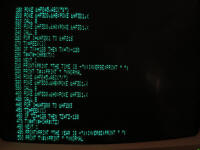 |
 |
|||||
 |
MBASIC program to read the clock in CP/M
ProDOS 8 has a built-in driver for the Thunderclock (and compatibles). Since the Thunderclock doesn't supply the year, ProDOS calculates this from a look-up table based on other date information. For the moment, I can't get this to work properly. ProDOS reports the year as 2000, and shows the wrong day and time - only the month is picked up correctly. I did use the CLOCK.PATCH program (included with GS/OS System 6.0.x) to update the ProDOS Thunderclock year table but still the issue persists. Though if the basic date isn't even read correctly the year will be awry regardless.
ProDOS expects the date and time in Thunderclock "numeric" format (e.g. 10,01,13,10,55,01 {ASCII string} which translates as October, Monday, 13th, 10:55:01 AM), but my VERSAcard (with v1.41 ROM) seems to omit the leading 0 in the day-of-week (10,1,13,10,55,01).
Actual example of the VERSAcard numeric format:-
NB: ProDOS compatibility was fixed in later versions of the VERSAcard (see Cecil Fretwell's article "Date Computer" in November 1985 Call-A.P.P.L.E.)
See also
→
![]() VERSAcard
with v1.52 ROM © 1984
VERSAcard
with v1.52 ROM © 1984
|
Apple Pascal 1.1 reads the clock perfectly, including the year! |
|
Nor did I have to apply any patches - this disk drawn from the collection of Hans Halupka came pre-configured for VERSAcard - hence the following error message when launched from AppleWin: |
![]()
Thunderclock Plus by Thunderware
The original standard for Apple II time-keeping in ProDOS 8
Need a modern clock solution for your 8-bit Apple II ? Check these out ...
→ No Slot Clock v1.1 by Manila Gear
→ Hyperion 512K RAM+ card by Ian Kim (emulates Saturn RAM & No Slot Clock)
→ TimeMaster II H.O. clone by a2heaven
^ 2016-06-02 (last revised 2025-07-18)
► DIRECT LINK to this section ◄
Internal card modem for the Apple II with onboard comms software & Hayes Smartmodem compatibility
Ad for ProModem 1200A & 2400A (February 1989, inCider)
Prometheus ProModem 1200A-2 sitting pretty in slot 7 of my Apple ][+ clone
The built-in terminal software can be called up anytime with PR#n or IN#n (n=7 in my case). The "Terminal Driver" screen will appear allowing commands to be issued directly to the modem. A menu of options (baud rate, file transfer etc.) can be invoked with ESC followed by some key like RETURN or SPACE. ESC-C enables the scrollback buffer. ESC-S enters scrollback to review the online history (use arrow keys to move up and down). ESC-D initiates file receive & ESC-X initiates file send (only works under DOS 3.3). ESC-Q quits the terminal (returns to ] prompt if DOS/ProDOS resident, else the monitor).
The bundled ProCom-A software (on two 5.25" disks) is rather more sophisticated. It supports all Prometheus ProModem models (internal & external), the Hayes Micromodem and Novation Apple-Cat II, and in general any Hayes compatible external modem connected via Super Serial Card, VERSAcard, or IIc/IIGS serial port. It features a configurable phone book, a word processor and support for 80 columns.
|
ProCom-A — also compatible with Apple IIGS (including mouse!) |
Many third-party communications programs such as ProTERM do offer native support for the Prometheus ProModem. And if it's not listed as an option, configuring for a Hayes Smartmodem & Super Serial Card will most likely work.
![]()
Here's a photo of an earlier model of the ProModem (pre-1986) which actually consists of two separate cards connected by a ribbon cable
^ 2016-12-07 (last revised 2016-12-13)
DataLink 2400 by Applied Engineering
Advanced Internal 2400/1200/300 bps Modem for the Apple IIe, IIGS and II+
AE DataLink 2400 recognized as "Super Serial Card" by MECC Computer Inspector
AE OnLine 64 running on Apple II Plus with DataLink 2400 modem
AE DataLink modem and EasyLink/ReadyLink software
NB: AE's DataTerm (128K //e or IIGS) & OnLine 64 (64K ][+ or //e) came bundled with DataLink 1200/2400 and won't work with other modems
AE EasyLink/ReadyLink is a full-featured standalone telecommunications program for any Hayes compatible modem on 128K Apple — see ad & review in pg 19 & 51 of The Apple IIGS Buyer's Guide (Winter 1990)
^ 2017-07-09 (last revised 2024-02-14)
► DIRECT LINK to this section ◄
Miscellanea
Photo of Hong Kong's (infamous?)
Golden Computer Arcade taken by me on 17 January 2011 during a visit to the
city. It may not look like much but at its peak, this place likely had the
greatest concentration of shops in the world selling Apple II gear (mostly
cloned or pirated).
InfoWorld March 1984![]() reported more than 500 stores in the centre alone, plus
a further 300 stores in surrounding back alleys. How much of this Apple II
legacy remains? Not much, since everything old gets thrown out to make way
for the new in Hong Kong (if you see the size of the average H.K.
apartment dwelling you will understand).
reported more than 500 stores in the centre alone, plus
a further 300 stores in surrounding back alleys. How much of this Apple II
legacy remains? Not much, since everything old gets thrown out to make way
for the new in Hong Kong (if you see the size of the average H.K.
apartment dwelling you will understand).
香港深水埗黃金電腦商場,當年無人不知,照片於二○一一年一月十七日旅港時所攝。現在看來不大起眼,但在全盛時期,Apple II蘋果二型用品店密集於此(所售多是剽竊仿製貨色),數量之多並世無儔。據InfoWorld一九八四年三月報導,當時該商場有店鋪五百多家,附近橫街另有三百左右。昔時此地的AppleII風光,至今餘幾?大都煙消雲散!香港迎新必棄舊,寸金尺土使然,你若看過一般港人住的「白鴿籠」便會明白。
Sub Battle Simulator manual for Apple II (supplied with disk purchase for an extra fee) from Hong Kong's Golden Computer Arcade
Apple II hardware galore!
|
|
See also → Meiji FD-103 Apple II Disk Drive User's Instruction Manual & photos (PDF)
See also my video "Laser 3000 in the movies" HERE
|
|
Apple ][ 電腦特輯 — Hong Kong Apple II magazine → HQ scans HERE
See also → Apple User Monthly (H.K.) 蘋果用家 — 1985 scanned issues @ archive.org
“The Apple II is the most popular machine in Hong Kong,
and most of the shops are oriented toward it and its imitations.”
Your Computer magazine on the Apple II craze in Hong Kong
|
“The latest software, be it games, business, or whatever, can be picked up for around AUS$7 per disk. Interface cards are also very cheap: $25 for a 16K card, $30 for a wild card. Printers are available either from Japan, where the higher-quality ones come from (Epson, NEC and so on), or locally at incredible prices.” |
● Super 5 disk drives & Apple joystick marketed by Micro-Educational in Australia
● Potential power issues with imported Apple II clones
The Australian Apple Review (July 1984)
● Super 5 advertisement — Your Computer (October 1984)
● Photos of Super 5 disk drive — offers unique user selectable write-protect & head-seek speed
Apple II hardware, software & books from Datamedia Ltd of Hong Kong
Australian Personal Computer (February 1983)
5.25" full-height Apple II floppy disk drive from Kanto Electronic (H.K.) Ltd
See also → 'Computer Compatible' generic Apple II joystick instructions & photos (PDF)
IDEAL Arcade Joystick for Apple II instructions & photos (PDF)
![]() Check out
Johnson Lam's
Apple ][ Fan page recalling the
Hong Kong PCL
PRO-Mockingboard
& legendary
UFO Joystick ][
Check out
Johnson Lam's
Apple ][ Fan page recalling the
Hong Kong PCL
PRO-Mockingboard
& legendary
UFO Joystick ][
AMAZING !! → WATCH VIDEO — Crown G-889 microswitch arcade joystick for Apple II with unique analogue emulation mode
Innovative creations from KbooHK
wDrive disk emulator — supports WOZ/NIB/13-sector/32M/800K etc. & even disk copy transfer to WOZ/NIB
softSP — adds SmartPort to Disk ][ interface - supports UniDisk 3.5
DB19M to IDC20M converter
Apple II+ Mini & IIe Mini
Keychain Apple II+ clone
![]() Visit
KbooHK store &
KbooHK on Facebook
Visit
KbooHK store &
KbooHK on Facebook
A sampling of typical Hong Kong warez CDs of the 1990s (I didn't install any of them, honest!)
See also → Bondwell Model 38 (IBM PC/XT) & Model 39 (PC/AT) brochures (Pompous Ltd & Worldstar Hong Kong) (PDF)

 |
ABOVE: "Computec" floppy disks from H.K. (very popular in Australia), "Host" 3½ disks & Australian made "Nashua" disks
BELOW: The coloured "CenTech" floppy disks from the USA were a novelty and great favourite of mine - once widely available in Australia in same or multi-colour packs
Genuine Apple IIGS promotional watch from 1986 (made in Hong Kong)
See my video of the Apple IIGS watch HERE
→ Apple IIGS promotional watch - 1200 dpi ultra high-resolution scans (front & back) now available HERE [7MB ZIP archive of JPG files]
Two special timepieces from ca. 1997. The one on the left is a unique commemorative watch with embossed pouch presented to some members of the Royal Hong Kong Police in the lead-up to the 1997 handover to China. My uncle, who served in this force before retiring in the early 1980s, had received one and kindly gifted it to me. The very aesthetic Apple watch (with MacOS on the wristband) was something I acquired when it first became available through Apple Australia's merchandise catalogue (I don't recall the exact year). NB: It was advertised for US$28.99 in the "Apple Merchandising Catalog - StartingLine" (1995-96)
US$1,999.99 ???!!
|
|
cvxmelody in Hong Kong (February 1977) | |
 |
|
Souvenir bag recalling a past visit to Hong Kong's Ocean Park (I was also there in 1977!) |
|
(the Super Mario sticker is my own addition - btw, was amazed to discover recently that this game has been ported to the Apple IIGS !) |
|
|
||
|
|
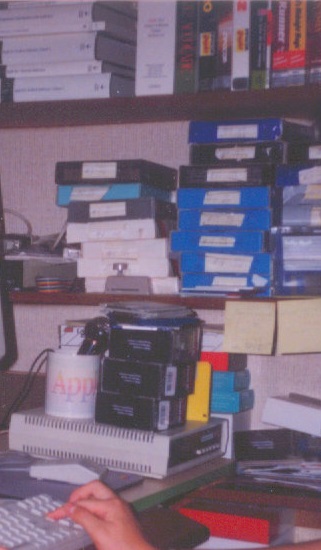 |
 |
|
.jpg) |
LEFT: Old photo taken around 1993 showing an Apple souvenir cup (sitting atop the modem) and Apple mouse pad with logo — both items are featured in The Apple Collection Catalogue Australia (1987) & The Apple Collection Catalog (1987-88 USA). The microphone plugged into the Sonic Blaster of my Apple IIGS. The cup was later smashed after I accidentally dropped it. The modem was a pretty sophisticated model - an Australian (Austel-approved) version of the Penril DataComm (good close-up photo HERE) - which I had gotten for a good price during a corporate close-out. It was known as the Scitec Datalink in Australia. Virtually every setting could be configured directly using the push buttons and LCD menu on the front. I had experienced several modems up to that point, including the Supra Modem that was popular with Apple II users in the USA - it ran off a 110V step-down transformer and was technically illegal having no Austel approval [click for my scan of Supra Modem advertisement from inCider/A+] (NB: it was later sold as the Q-Modem by Quality Computers). And from 1994 onwards, I had periods of fun with Maestro and NetComm. But my first ever modem was the Automatic Ice internal Apple card modem (Auto Ice was based in Newcastle, Australia)†.
→ Automatic Ice Co. Intelligent Modem Card for Apple II & IIe MANUAL now available HERE [19MB PDF file]
|
Even after making the switch to external modems, I hung onto the Auto Ice a while longer for its built-in ProDOS clock (Thunderclock compatible, backed up by two AA batteries) and Viatel capability. It also had Bell 103 support (for calling American BBSes at 300 baud - a 1987 list of GBBS Pro boards in the USA is HERE). All the comms software was onboard but I recently saw an article in Applecations (March 1988) confirming the modem would also work with some regular terminal programs e.g. ASCII Express Pro & Pinpoint's Point-to-Point. |
†
Apple Computer Australia also
released an
internal Apple II card modem (the "In/Modem
1200" made for them
by NetComm), and Maestro Australia had an
Apple II modem card
(see ads
HERE &
HERE). Then there was the "Hampack II" sold by a
Melbourne company:
|
||||||

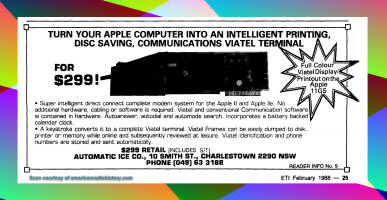 |
RIGHT: On the shelf, there are original boxes for a Ram GS memory card and Zip Chip - I still have this hardware but the boxes are long gone. You can also just about make out several original Broderbund Apple II titles - Lode Runner ; Choplifter! & David's Midnight Magic (double pack edition)† ; Prince of Persia, and Epyx Impossible Mission (I). In an unexplained fit of largesse, I gave them away for free in the mid-1990s (along with around 500 Apple II 5.25" disks and many gaming manuals) to a guy in Perth with a platinum Apple //e, and never saw them again...
| †
Reacquired - another BOXED edition of David's Midnight Magic -
original scans now available
HERE
And sealed double pack Choplifter & David's Midnight Magic - original box scan available HERE
|
![]()
UPDATE: SupraModem redux - how nice is that? (December 8, 2016)
Q-Modem complete in original box - twin souls? (December 29, 2016)
[Q-Modem 2400 User's Guide now available HERE and Reference Card is HERE]
![]()
ABOVE: Upon re-acquiring an Apple IIe setup in December 2015 (thanks are due to Hans Halupka of Canberra), I was thrilled to be reunited with an original Lode Runner disk and manual!
BELOW: Surviving backup copies of my original Prince of Persia disk. I had ordered this game from the US when it first came out, but was unable to back it up myself. I gave the job to a copy-protection expert in Perth who lived nearby and owned an EDD 4 Plus card. The backup disk is labelled with the precise procedure he used to successfully duplicate the bootside - sync, bit-copy, manual nibble count. To the right are EDD disk scans (sides 1 & 2) of this fully functioning backup.
Further examples of his endeavours - assorted backups of Mr Cool, Kid Niki, 2400 A.D. (cracked versions are his own), and some original specimens (Computist Super IOB Collection #1-4 etc.)
|
Probably a copy he made of the Airheart disk which I had purchased from Hong Kong's Golden Computer Arcade in 1988 |
|
Though not an original, it was pristine, uncracked and retained the full copy-protection. I bought much else from the same shop including many double hi-res games, etc. - most were uncracked and hard to copy. It took them several days to fulfil my order but all their disks worked perfectly. |
EDD disk scans — original Airheart disk versus EDD 4 Plus backup of Hong Kong pirate copy
Beagle Bros ads from Softalk, Australian Personal Computer & Your Computer (1982)
Pinball Construction Set and Penguin Graphics Software ads from Softalk (February 1983)
Original scans - "Disk Inspection and the use of Super IOB"
My annual subscription to "The Road Apple" (An Apple // "End Users" Underground Newsletter)
Sadly, I no longer have even a single issue left - but there's an original scan HERE
Prince of Persia 2: The Shadow and the Flame - screenshots from Mac PowerBook 3400c (NB: Mac version of this game offers superior quality with 640x480 graphics vs. Windows with 320x200)
|
The Golden Orchard CD-ROM — Apple IIGS software goodies (above) |
|
AUGE CD #1 — Mac & Apple IIGS collection by Apple User Group Europe (below) |
DeluxeWare CD-ROM — Apple IIGS software bonanza by Brutal Deluxe Software & La Pomme Illustrée
|
"Apple II Schaltpläne - The Apple II Circuit Description" (1984 German edition) |
|
& "Apple ][ BASIC Hand-Buch" (Sybex) [courtesy of James Kunz] |
"Apple II Benutzer Handbuch - Reference Manual" (1979 German edition)
"Yes, Master?" Apple IIc poster by Rich Tennant (1987) - I got it from Open-Apple/A2-Central back in the day
Rediscovered box for my Spectravideo QuickShot X deluxe joystick controller (Apple II) - the stick itself was discarded ages ago
My circa 1991 QuickShot "Warrior 1" QS-133 deluxe analog joystick (Apple II & IBM PC) - still a smooth operator after all these years
 |
New sealed in box units may still be available from Amazon - see HERE
![]()
Some photos of my Macintosh PowerBook 180c, newly purchased in February 1994 from an Apple dealer in Windsor House (Causeway Bay, Hong Kong). Being the top-of-the-line PowerBook at the time, it didn't come cheap, but in Australia would surely have cost three times as much! To my chagrin, Apple discontinued the PowerBook 100 line just a short while later, coming out with a brand new series. Still, I was happy with the 180c and its vibrant active-matrix display, and it gave me good service up until 2000 when I finally packed it away (but still working). When powered on again in 2015, the hard disk failed to properly boot, the display functioned somewhat at first, but then something in the hinge broke and now it only ever shows a white screen (in the photo you can see how the LCD is lopsided - not good). Incidentally, the Apple carry bag and video adapter cable were standard inclusions (though a piggyback adapter was needed for VGA plug). The dual battery charger, spare battery, and HP DeskWriter 520 (only the manuals are left) were purchased a short while later in Australia. The Technöggin PowerPlate 5x may have been something I imported from the US. And at one stage there was also a Gravis Mac GamePad.
NOW AVAILABLE → Getting Started With Your Color Macintosh PowerBook (1993 Apple Computer) - complete scan (PDF)
Macintosh Australian Postcodes (1988-90) — 800K disk [Disk Copy 4.2 image] | 800K disk [StuffIt archive Disk Copy 4.2 image] | Scan of original disk
Connectix PowerBook Utilities 2.0 (1993) — 800K disk [Disk Copy 4.2 image] | 800K disk [StuffIt archive Disk Copy 4.2 image] | Scan of original disk
Connectix Speed Doubler 1.3.3 (1998) — 800K disk [Disk Copy 4.2 image] | 800K disk [StuffIt archive Disk Copy 4.2 image] | Scan of original disk | Scan of complete manual
MacTest Pro (PowerBook Vol 1) (1993) — 1.4MB disk [Disk Copy 4.2 image] | 1.4MB disk [StuffIt archive Disk Copy 4.2 image]
PowerPlate reviewed in Australian Macworld - May 1994
PowerBook 180c in The Apple Catalog - Fall 1993 (USA)
Complete catalog retrieved from DocSlide - several Apple II products were still on Apple's pricelist at this time
(Apple IIGS System Software 6.0, SuperDrive Controller Card, High-Speed SCSI Card, Joystick, Apple II Memory Expansion Card etc)
|
Apple Hard Disk SC, AppleCD 150 & Apple External 1.4 MB SuperDrive |
|
Apple Product Range and Price List - Winter 1992 (Australia) |
"We're behind you and your Apple II" — Apple Computer ad (April 1993 inCider/A+)
Earlier, in Fall 1990, Apple had published "The Apple II Guide" — "A complete resource for users of Apple II computers" with forewords by Steve Wozniak and John Sculley. I obtained a free, original copy of this tome simply by writing away to Apple, though which now appears lost! Fortunately, digital preservations are not lacking e.g. see HERE. There's also a revised 1992 edition - details HERE
["System 6: The Future is Here" from The Apple II Guide (1992) now available HERE]
Nice table cloth to keep your Apple clean and shiny
Apple jade paperweight
→ Frogger original Apple II instruction card now available HERE & Repton original instructions & disk are HERE
Atarisoft collection, Ghostbusters, Batman, Ikari Warriors, Platoon
→ Batman original Apple II box, manual & disk scans now available HERE & Moon Patrol scanned original is HERE
→ Ghostbusters scanned original Apple II box & disk HERE & instructions HERE
→ Dig Dug original Apple II box, instructions & disk scans are HERE
Kung-Fu Master & Moebius
Dark Castle
Apple IIgs screenshots
≈≈ Airball — Dark Castle — Shufflepuck Cafe ≈≈
Test Drive & California Games
[Test Drive manual & disk scans now available HERE & California Games box & disk are HERE]
The Duel: Test Drive II
^ 2016-01-28 (last revised 2023-12-21)
► DIRECT LINK to this section ◄
My starter pack for Viatel (Telecom Australia's Videotex service)
NOW AVAILABLE → Welcome to VIATEL Starter Kit - complete scan [7MB PDF]
It's a curious fact that Viatel's online telephone directory would show most unlisted numbers. Once, I exploited this loophole to recover some Apple II disks I had lent someone who showed no intention of returning them. I only had a name to go on but with Viatel was able to track down his phone number. He didn't seem at all pleased to hear from me and sullenly asked "how did you get this number?" But at least I got back what was rightfully mine...
Viatel magazine from 1988 (later the service was renamed "Discovery")
|
Two messages I received on Viatel in 1988 — recent rediscovery! |
|
[Hardcopies to Epson LX-86 from Auto Ice Apple II card modem with onboard Viatel comms software] |
Interlink Viatel Graphics Terminal System — full colour Viatel for Apple II
See also → Ewen Wannop's DATA HIGHWAY telecommunications program (later renamed ANTELOPE)
... capable of colour Videotex (Viewdata) on any 128K Apple IIe or IIc using double hi-res graphics (no special hardware needed)
Viaterm Videotex software — for Apple II+, //e, //c, IIGS
The NetComm Program — Apple IIGS version
|
Viatel magazine from 1986 |
|
"A good first year for Viatel" |
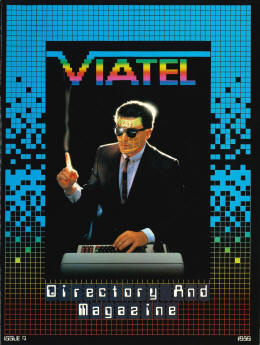
|
|
||
CompuServe magazines
Index of their computer forums, usage tips... and tariffs (yikes!)
CompuServe in Australia was just way too expensive for anything more than the occasional use and when connected you always felt like a panic attack was imminent. Though I did find it useful for contacting US software companies to request catalogues and such.
A printout I made ca. 1991 showing "CIS" addresses of various companies
I must have acted on this public plea urging people to pressure gaming companies to support the Apple IIGS
My quick reference chart of favoured CompuServe destinations
|
Apple II files list of CompuServe MAUG (Micronetworked Apple Users Group) — ca. late 1991 |
![]()
But well before the advent of Viatel and CompuServe Pacific, there was "The Australian Beginning" - launched in March 1982 it was Australia's first online information service, modelled after "The Source" in the United States
"The Apple II is well-supported on the Australian Beginning, with over 1000 programs available"
^ 2016-03-25 (last revised 2022-04-24)
AlphaSmart Pro keyboard
What is it? The AlphaSmart Pro is a standalone "memory keyboard" for typing up things whilst away from your computer. It features compact size (thus easy to carry around), simple text editing functions, small LCD screen showing 4 lines at a time, supports 8 separate files, and 2 regular AA batteries provide enough juice to keep it running for days on end. All data is retained even whilst turned off (a replaceable lithium battery provides secondary backup if AA batteries are dead or removed). Hotplug the AlphaSmart to the ADB port of a Mac/Apple IIGS or PS/2 port of a PC (well, I personally wouldn't risk it with PS/2) and it should show up as a regular keyboard. Open your preferred word processor, hit "send" and the active file gets zapped across like an ultra-fast typist.
Hands on with the AlphaSmart Pro keyboard - I found it to be a real time-saver for compiling lists of scattered Apple II documentation!
AlphaSmart Pro plugged into ADB port (above) and text dumped into MS Word (below)
An aficionado of these keyboards P. Touchman wrote in to alert me about other great models in the AlphaSmart lineup. Do check them out!
^ 2016-02-01 (last revised 2018-12-20)
► DIRECT LINK to this section ◄
In early February 2016, I came upon this enticing enhanced Apple IIe clone on eBay - and bought it. A copy of the NTSC Apple IIe, equipped with an extended 80-column card and Disk II interface (both cloned), plus a genuine Apple Super Serial Card. The eBay seller (in Canada) had disassembled the machine and taken these nice photos:-
[photos courtesy of eBay]
The underside of the motherboard shows a date of 1985. On startup, it displays "Apple //e" which is consistent with an enhanced IIe. (Non-enhanced would show "Apple ][" though on a clone it could be anything)
|
Erratum: "model with a separate keyboard" probably should read "model with an extra keypad" |
|
[from Apple User July 1985 - scan courtesy of SpeedyG ] |
|
IIe clones in PC-style enclosure with integrated drives & detached keyboard were available but invariably cost more → see photos HERE |
See also → Peeker magazine October 1985 (Germany) — Ad for Apple IIe clones | Review of Apple IIe clones
This style of clone is quite familiar to me. My cousin in Perth had one, purchased in Hong Kong. It resembled the clone above except it also had a numeric keypad. His was the exact model shown in the following photos (from opportune sighting on Australian eBay):-
[photos courtesy of eBay Australia]
Comparing the motherboard to the "Canadian" unit above, they are almost identical. The keyboard is also the same, as is the case, apart from the numeric keypad. The auxiliary slot is adjacent to the power supply, like an American IIe. Typical of look-alike clones from the Far East, the rear case openings mimic the simpler Apple II+ style. Somebody stuck on the Apple II Europlus badge (!), but more likely than not this clone was originally sold unbranded.† The clone my cousin had was unenhanced which I would expect to be true of this one.
I've seen such clones being sold in Hong Kong firsthand, and from what I recall, the asking price was roughly HKD$1500—1800. The variant with numeric keypad naturally cost more, and you could choose between 128K or 64K (i.e. with or without extended 80 column card), and a 110V or 220V power supply. The shopkeeper informed me that only unenhanced clones were available (perhaps enhanced units could be provided "under the table" if one were insistent enough, but I honestly don't know). Incidentally, the numeric keypad of these clones is integrated with the main keyboard so that only a single lead runs to the motherboard keyboard connector. As with the American IIe (but unlike the PAL, International NTSC and French-Canadian IIe), there is no rocker switch under the keyboard, although there may be DIP switches or jumpers on the clone motherboard for changing keyboard layouts.
|
I found proof that these Apple IIe clones were also being actively imported and sold in Australia [see HERE] |
|
Motherboard appears to be a straight IIe copy with 4 labelled ROMs - CD, EF, Video & Keyboard - so very likely compatible with the genuine Apple IIe Enhancement Kit which consists of 65C02 CPU and 3 enhanced ROMs - CD & EF (both 28 pin) and Video (character generator) |
And someone in Melbourne posted photos HERE of another IIe clone housed in the same case (minus numeric keypad) - it has a Seasonic power supply (like the one on Australian eBay above), many peripheral cards (including PAL encoder), and shows "][E" on startup. I suspect this may be a PAL-variant IIe clone (I've seen similar ones on European eBay, e.g. see HERE - notice how the video ROM has 28 pins (vs 24 pins of the genuine American NTSC IIe). The missing ROM should be CF, same as that found on platinum IIe).
Photos of an NTSC-variant IIe clone motherboard of the same type are HERE - "][E" startup greeting, 6502 CPU (i.e. unenhanced), 14.318MHz video crystal (NTSC) yet still with 28 pin video ROM!
Feast your eyes on this "Made in Taiwan" NTSC Apple IIe clone motherboard — "FOX-2001" startup greeting, 6502 CPU with stock standard 4 ROM configuration:-

Special thanks to Danny C. of Melbourne!
![]() Apple
IIe Taiwanese clone motherboard FOX-2001 - high-resolution scan of PCB (top &
bottom)
Apple
IIe Taiwanese clone motherboard FOX-2001 - high-resolution scan of PCB (top &
bottom)
[18MB ZIP archive of JPG files]
Apple IIe clone keyboard assembly — two distinct models — with or without numeric keypad
Astonishingly, this style of clone was also imported from Taiwan to Bulgaria and badged as the "Pravetz 8E" but with an important distinction - it had an actual PAL motherboard layout (auxiliary slot in line with slot 3) [see discussion HERE] - I'm not aware of too many PAL Apple IIe lookalike clones from Asia so this model was likely custom produced for Bulgaria and is truly rare. Also, the rear of the case has more openings than the "Canadian" and "Australian" variants we have seen, although the keyboard remains the same. (The motherboard appears identical to a genuine Apple IIe PAL motherboard - exact same layout and markings - but minus Apple branding and presumably fitted with cheaper components and knockoff ROMs. The plot thickens...)
[photos courtesy of 'galinpetkov' & Apple Fritter]
Pre-Pak Electronics of Sydney — advertising Apple II Plus & IIe compatibles
|
NEW Apple IIe compatible with 128K & 80 columns for A$750 |
|
NEW Apple IIe compatible with detached keyboard & twin drives for A$1500 |
|
[from Electronics Today International November 1985 - scan courtesy of americanradiohistory.com ] |
|
My cousin's clone would show "COMPUTER" on startup - this meant that ProDOS had to be patched for compatibility [patched ProDOS available HERE or try the new ProDOS 2.4.1 HERE]. In every other respect, it behaved just like a genuine unenhanced IIe. Eventually, I suggested to him to get it enhanced in order to keep up with the latest software offerings. Taking it to an authorized Apple dealer was obviously not an option. Fortunately, Mr S.R. of Perth used to offer the enhancement service so we paid him a visit. He had the 65c02 CPU and enhanced ROMs at the ready (burned copies, of course) and after inspecting the clone, told us that one of the chips was different from the regular (PAL) IIe but he had the correct part on hand. (He must have been alluding to the character generator (video) ROM of the clone being of the American IIe variety i.e. 24 pin). The upgrade was an unmitigated success - it now showed "Apple //e" on startup and could run any software compatible with enhanced IIe, including programs requiring MouseText. |
† I once knew somebody who bought an Apple II Plus look-alike in Hong Kong for use in Australia. It was unbranded (the lid had the proper indentation for the logo) but for an additional fee, the shop quietly slipped him a sealed envelope. They instructed him to only open it once back in Australia! And it turned out to be a sticker with a good 1:1 colour reproduction of the "Apple ][" badge. True story. |
The old unenhanced ROMs from my cousin's IIe clone were given to me for safekeeping. I still have them - some pics:-
So if ever I wanted to "de-enhance" the Canadian clone I purchased from eBay, I could just swap in these chips (along with the 6502 CPU which I also held onto).†
|
|
† On closer inspection it won't be that straightforward as the Canadian clone has a ROM marked "CF" which is the same as that found in the platinum Apple //e. CF ROM merges the CD & EF ROMs of the earlier IIe into a single chip. Hence one would need an unenhanced version of this ROM, perhaps taken from a similar clone, or custom-made, as Apple never produced an unenhanced CF ROM.. Furthermore, the chip with the orange label at the keyboard end - assumed to be the Video ROM - is 28-pin. What joy! |
| TO SUMMARIZE — Asian Apple IIe clones come in several distinct flavours. One type has a "standard" motherboard with 4 ROM configuration of a real //e - CD, EF, Video, Keyboard - and hence compatible with the genuine Apple IIe Enhancement Kit (if not already enhanced). Some combine the CD and EF ROMs into a single chip - equivalent to "CF" ROM of the platinum IIe (NB: genuine CF ROM is always enhanced but this mightn't be true of a clone). Both 24 pin and 28 pin Video ROMs are seen (on genuine NTSC IIe, 24 pin is capable of single character set (USA) or dual character set (USA/French Canadian, USA/Western Spanish) ; European PAL IIe models utilize 28 pin Video ROMs with dual character set - e.g. USA plus UK, French, German etc depending on the target market. The clone motherboards could be pre-configured for either NTSC or PAL output - the Video ROM type gives a clue but it really depends on other hardware). Other variations may be observed, yet most conform to an American layout with the auxiliary slot located next to the power supply. (One exception being the rather unique Pravetz 8E which may not be a true clone as the PAL motherboard appears to be sourced from Apple, though the case and keyboard are undoubtedly of Asian clone origin) |
Counterfeit Apple IIe sporting rarely seen clone motherboard with "PAL" layout (aux. slot in line with slot 3)
|
Genuine PAL Apple //e is inherently capable of colour from the motherboard RCA video jack. Yet the IIe clone shown above (Italian eBay listing), outputs a black & white signal (presumed 50Hz). |
|
As with the Apple II Europlus, it needs a PAL Encoder card in slot 7 for colour (see example HERE). |
UNPACKING PHOTOS WITH CLOSE-UPS
Enhanced Apple //e clone (NTSC)
The IIe clone from Canada arrived at my doorstep on 29 February 2016 - an "odd" date but not jinxed in any way...
Rear view of the Apple //e clone showing the ports, case openings (][+ style), and 110V power supply (I'll use a step-down transformer)
Close-ups of the keyboard. Note the "non-infringing" fruity design of the open and closed apple keys.
Close-ups of the power supply and motherboard. The CPU is indeed a 65c02. The speaker had come loose during the long journey from Canada and I had to glue it back in the right spot. Aside from that, everything else looks healthy. And in case you were wondering, the DIP switches near the keyboard connectors are for changing the layout of certain punctuation keys.
First power up with only an extended 80 column card in the auxiliary slot. The motherboard power LED lit up and a reassuring beep issued from the speaker. I ran the composite video to my LG 47" LCD TV (model 47LK950S).
"Apple //e" - as promised
I ran the Apple IIe self-diagnostic test (CTRL-OPEN APPLE-CLOSED APPLE-RESET) - System OK !
80 column card working fine. The clone outputs a proper NTSC (60Hz). I'm very impressed with the LG TV's extreme clarity in composite video mode, certainly as good as any monitor, something I hadn't expected. (I have the composite output of my Apple IIGS hooked up to a CRT TV, and there the 80 column text is readable, but a little fuzzy)
Playing around with the keyboard, I soon discovered an "undocumented" feature of this clone. Holding down the CTRL and SHIFT keys together with any other key (alphanumeric or punctuation) triggers some commonly used Applesoft commands. In the above example - HOME ; PR# ; NEW ; REM ; TEXT ; XDRAW etc. - were automatically generated via these special "macro" keystrokes. (My cousin's IIe clone lacked this funky facility)
Quite a few Apple II+ clones have this feature and come with labelled keycaps.
Here are photos of an Apple II+ clone with an example of such a macro keyboard (from an eBay listing). Notice how this machine has a similar case type as my newly acquired IIe clone!
Close-ups of the keyboard assembly (another eBay listing)
|
[photos courtesy of eBay] |
|
This style of clone was even sold in Germany and I found pics of a modded version with IIe-style backplate HERE |
|
Jameco Electronics imported this keyboard/case to the USA - I scanned the following ad from the October 1989 issue of inCider/A+ |
|
The ad refers to "predefined function keys" - implying that the macros are built into the keyboard and work independently of the motherboard |
Well getting back to the unpacking...
|
Close-ups of the extended 80-column text card and Disk II interface card (both cloned) (also supplied was a genuine Apple Super Serial Card not depicted here) |
|
This cloned Disk ][ interface was made in Taiwan - see HERE |
I wanted to test out a half-height Apple II disk drive (Meiji 128 / FD-103) that I'd recently acquired. "New old" stock - still in its original box, and in pristine condition!
NOW AVAILABLE → Meiji FD-103 Apple II Disk Drive User's Instruction Manual - high-resolution scan (PDF)
Ad for Meiji Apple II disk drive from the September 1989 issue of inCider/A+ - it retailed for $79 USD
Disk drive connected to Disk II interface card (in slot 6)
Apple IIe Diagnostic reports an "Apple IIe Enhanced". MouseText is working. So this IIe clone is enhanced, no doubt about it.
Fine looking NTSC color palette
How about we soup up this system? I have here a RamWorks II 1MB and TransWarp accelerator, both made by Applied Engineering. I got them very recently and haven't had a chance to play with them as yet. (Nor do I have prior experience with these cards, although in the past, I did have a //e with AE RamFactor 1MB and TransWarp II)
RamWorks II close-up, and after installation in auxiliary slot of the enhanced Apple IIe clone
WORD OF CAUTION: RamWorks II won't physically fit inside a PAL or "international NTSC" Apple //e, for which you need a RamWorks I or III - see discussion HERE
Close-up of the Applied Engineering TransWarp (with latest v1.4 ROM) |--| Upon installation in slot 3 |--| Key features of TransWarp from manual
An unmodified AppleWorks 3.0 reports 687K available on the desktop, so the RamWorks is being picked up and utilized
AE RAM diagnostic successfully passed
TransWarp startup
logo & built-in diagnostic test - AOK !


GAME & APPLICATION SCREENSHOTS: Pooyan, Black Magic, Mouse Desk [ double hi-res ], Dazzle Draw [ double hi-res ], Fantavision, Fat City, Mr Do!, Apple Invaders, Create with Garfield!, Choplifter, Spiderbot [ double hi-res ], Rad Warrior [ double hi-res ], Dino Eggs (1988 Softdisk edition), Bruce Lee [ double hi-res title ], BurgerTime, Microwave, Congo Bongo
Enhanced Apple IIe NTSC clone —(RCA composite)—> LG 47" LCD TV
[Fantavision User's Manual for Apple II (8-bit version) now available HERE]
|
[Dino Eggs manual & disk scans now available HERE] |
![]()
Enhanced Apple IIe NTSC clone —(RCA composite)—> AppleColor Composite Monitor IIe 120V model (A2M6021)
Bruce Lee, Gumball, Dig Dug, Championship Lode Runner, Autobahn...
![]()
But is bigger better?? I have this Shinco MDP-1770 portable DVD player with 7" LCD display which also functions as a composite monitor.
It supports PAL & NTSC and sports a mini-jack for video input/output (selectable). Mine came standard with rechargeable battery pack (removable), AC power adapter (100-240 VAC), car power adapter (plugs into cigarette lighter), and remote control unit. The 7" display has a horizontal resolution of 500 lines, according to the manual.
Screenshots of Aztec on the Shinco MDP-1770 - as output by NTSC Apple IIe clone
And the same scene from my PAL Apple IIe...
With its rechargeable battery pack and car power adapter, the Shinco would make a decent portable screen for, say, an Apple IIc. Don't know if they are still available though. In the USA, it appears to have been sold under the brand name "Mintek", and depending on the specific revision may or may not support video input [see discussion HERE and HERE]
![]()
And for heavy number crunching we have this... |
|
Apple IIe external numeric keypad |
(generic style - made in Taiwan) |
This keypad was evidently designed with the clone //e in mind - the moulded strain relief fits perfectly into one of my clone's rear case openings
Fully compatible with genuine Apple //e as well...
→ see also my scan of genuine Apple Numeric Keypad IIe (A2M2003) - original box, hardware & manual [41MB PDF]
![]()
Fully loaded Apples always benefit from a... |
|
Kensington System Saver |
(clip-on fan & surge suppressor - 115V model) |
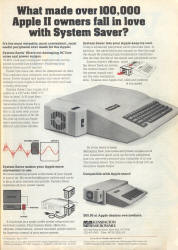 |
 |
|
→ see also my scan of System Saver IIGS Instructions & photos of original box
And keep that weight off with an... |
|
Apple II Monitor Stand |
|
(part #815-0540 REV. A) |
Apple's Monitor III (12" green or white phosphor CRT display) for Apple III was also commonly paired with Apple II Plus and IIe. Though a perfect fit for Apple III as you might expect, its base was wider than the Apple II, so out of necessity this stand was born. (It's also ideal for an Apple ProFile Hard Disk.) The Monitor II (12" green phosphor CRT display) introduced 1983 shortly after the debut of the IIe, did away with the requirement for a stand. When the Platinum Apple IIe was introduced in 1987, it was renamed to Apple Monochrome Monitor IIe - case colour changed from beige to platinum but in all other respects it stayed the same.
|
Go back to where it all began with this... |
|
Computer Cassette Player |
(with original box and correct leads for Apple II) |
^ 2016-03-01 (last revised 2024-08-10)
► DIRECT LINK to this section ◄
Following link has much interesting background on the Apple II clones of Hong Kong and Taiwan along with rare scans of original product brochures:- http://www.applelogic.org/TheCLONES.html
In the Far East, South Korea also cloned the Apple II intensively, two examples being the Intertek System IV (close-up photos HERE) and the Romax 2000HQ (Royal Computer) (with extended Korean keyboard). Apple II manuals were available in Korean translation (see HERE). Seoul's "go-to" hub for Apple II clones was Cheonggyecheon Electronics Market (like Akihabara in Japan). The Cordata WPC Bridge, by Korean firm Daewoo, was a two-in-one IBM XT & Apple IIe compatible (Apple emulation provided by way of a Trackstar board). Mainland China had various clones among them the Fujianese「福桔」("Blessed Tangerine" with connotation of "luck" 吉) and the well-known CEC-I that was aimed at the education sector (there also exists a CEC-IIe of uncertain provenance... from China? California?). Creative Technology of Singapore made the Cubic 99, a non-infringing clone with 6502/Z80 dual processor and inbuilt Chinese/English speech synthesizer. Singapore is of course better known as a key site for manufacture of genuine Apples, with some production spilling over into Malaysia e.g. Apple IIe motherboards. Other genuine Apple II components sourced from Asia would include monitors (Japan, South Korea, Taiwan, Singapore), power supplies (Astec in Hong Kong & Malaysia), keyboards (Japan, Taiwan) etc. An enhanced Apple IIe clone, the Microdigital TK3000 IIe, hailed from Brazil. The ASEM AM 100 was an Italian made Apple ][+ clone with detached keyboard, and Basis 108 was a high-end ][+ clone from West Germany with integrated Z80 CPU for running CP/M (see 1983 advertisement HERE). The Gigatronics KAT from Greece offered dual Apple II & IBM PC compatibility. Micro-Sci in the USA made an Apple IIe clone the Havac (close-up photos HERE). But by far the most well-known American clones were the Franklin ACE series. Canada had its own indigenous Apple II clone known as the Orangepeel.
Brochure for "Pineapple" Apple II clone from the above Apple Logic page:-
[Scan courtesy of Apple Logic]
Pineapple — as marketed in Australia
I knew a classmate who had an Apple II clone with IBM XT-style case (I assume he got it from Malaysia where he was originally from). It may have been similar to the Pineapple DP-64E but I don't recall seeing any Pineapple badge.
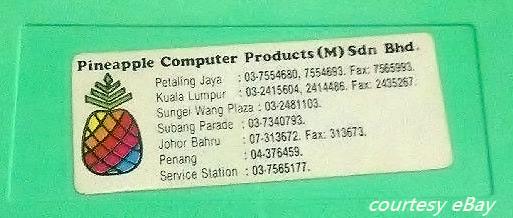
A surprising discovery in my collection - an authentic Pineapple-branded floppy disk:-
Pineapple close-up photos available HERE and HERE
|
|
DON'T MISS MY PINEAPPLE VIDEO!
SEE ALSO
![]() 1985
New Tech Times TV report on counterfeit Apple II computers being smuggled into
the U.S.
1985
New Tech Times TV report on counterfeit Apple II computers being smuggled into
the U.S.
{showing Banana, Pineapple, Golden II, Multitech Micro-Professor etc}
A succulent Pineapple mouse pad from Woolworths!
The Apple II clones of Asia (May 24, 1982 TIME)
|
Advertisement for "Pineapple" - sold in kit form by Formula International Inc. |
|
& "Customs Service to Seize Bogus Apples" (February 1983 BYTE) |
Apple II Plus look-alike clone - supplied by Formula International?
"Precedent-setting injunction" (May 30, 1983 InfoWorld)
|
Advertisement for "Pinecom" - back in business with a new moniker |
|
64K Starter & DP-64E Business models (September 1984 Radio-Electronics) |
Autoterm ][ 80 Column Card with RGB output — by Pineapple Computer Products
![]()
Did you know?!
|
Asian Apple planned to kill off the fakes |
||
|
Sydney
Morning Herald |
||
| APPLE Computer of California is planning to produce a purely Asian Apple which will be manufactured and assembled partially in Hong Kong or Singapore and partially in China. Apple's international markets manager, Mr Jon Covington, said: "That is my plan to have a truly Chinese Apple II Plus or an Apple IIe that cannot be re-exported to another country." Some months ago, an Apple vice-president, Mr John Cavalier, who has since left Apple, said the manufacturing cost could be less than $300. Mr Covington was not able to give any firm indication of the date when such a model might be released, but he indicated that the development of such a machine was part of Apple's plan to kill off fake Apples certainly as far as China was concerned. One problem that still has to be solved is the production of acceptable Chinese characters by the computer. Hong Kong- and Taiwan-made boards do produce such characters but they are not of an acceptable standard. Apple is in the middle of converting its Macintosh to produce characters for the Japanese market, and a modification of that program may be used on the projected Chinese Apple. | ||
![]()
![]()
![]()
![]()

|
Apple II & IIGS mail order warez direct from Asia |
||
|
Sydney
Morning Herald classifieds |
||
| Ibrahim Bakar was a well known source of mail order warez for Apple II & IIGS and other popular platforms. His advertisements appeared regularly in the classifieds section of newspapers all around Australia. This 1988 ad from the Sydney Morning Herald divulges a Singapore contact address, but I believe his actual location was nearby Johor Bahru in Malaysia. | ||
![]()
A typical Apple II Plus† lookalike clone from Hong Kong (1983) complete with clone manuals:-
 |
†This unit may have been modified along the lines of the Apple II Europlus (i.e. "PAL" B&W / 50Hz NTSC 3.56 via the motherboard RCA video jack - workable in colour with 240V ColorMonitor/AppleColor Composite IIe/IIc monitors - assuming 14.250MHz crystal oscillator correctly fitted). Some "PAL" II+ clones, despite jumper pads configured for 50Hz vertical refresh, skimp on the matching crystal and retain a 14.318MHz oscillator (American standard) and hence are doing NTSC 3.58 - an oddball setup with dividend of colour-compatibility on some NTSC displays able to sync to 50Hz (CRTs are the best bet) → e.g. Wombat clone screenshots & Unitron U-2000. The typical Apple II clone purchased in H.K. with monochrome composite monitor might have a fully NTSC (60Hz) motherboard (even if the PSU and monitor were rated 220-240V - H.K. itself runs on 220V). For clones fitted with PAL colour encoder card in slot 7, perhaps a PAL hardware modification was mandatory. But without doubt any type of system could be tailor-made on request! H.K. residents themselves wouldn't need the PAL encoder if their TVs happened to be multi-system. So I assume the PAL "Eurapple" mod was mostly reserved for units bound for resellers in Europe/Australia/New Zealand... but even such clones could be outputting NTSC 3.58 (check the crystal!)
|
So far as I can make out, the slots are populated as follows: 16K RAM card (slot 0), Grappler+ (slot 1), 80-column card (slot 3), Z80 SoftCard (slot 4), Disk II card (slot 6), PAL encoder & RF modulator card (slot 7)
[above photos and seller's description courtesy of eBay Australia]
A period photo of a similar unbranded Apple ][+ clone from Hong Kong is HERE. And see HERE for the H.K. lookalike clone known as "Banana" (I've used one of these before - it would show "BANANA" on startup in place of "APPLE ][").
|
Ads for "Banana" Apple ][+ clone in Electronics Australia (Feb 1984) & Sydney Morning Herald (Jan 1984) |
|
The Banana had a green coloured motherboard with standard ][+ layout (8 slots), and could of course be configured for 64K with the addition of a language card in slot 0 |

The lookalike clones of Hong Kong mimicked the classic American Apple II Plus, and hundreds of thousands were surely sold. All sported the same form factor but with slight variations depending on who supplied the case, keyboard, motherboard, and power supply. The cases could range in colour from an Apple beige to a quartzite white.
Apple ][+ clone motherboard (same type as the 1983 unit above) and clone Wildcard [photos courtesy of eBay] - see HERE for Wildcard clone ad
Bypass the middleman - buy direct from Hong Kong (March 1983 Electronics Australia)
|
|
We've already encountered Pineapple and Banana... another fruity clone is the "Pear II" - one of the first Apple II clones to emerge in Europe - see 1981 Pearcom advertisement (U.K. and Holland)
Pearcom Pear-II announced (Sep 1981 InfoWorld)
Luscious fruits in Australia?
|
Microsoft SoftCard "cloned" manuals |
|
(special thanks to James Kunz for the loan) |
Apple Logo pirated manuals & original disk (cvxmelody collection)
| Still more cloned manuals... |
| Apple Music Theory (MECC), Apple Pascal Operating System Reference Manual, Super Serial Card, Apple Pascal Language Reference Manual, |
|
Apple FORTRAN Language Reference Manual, Apple Language System Installation and Operation Manual, Apple PILOT Language Reference Manual, Apple PILOT Editors Manual |
See also → Photos of original manuals & disks — Apple PASCAL, FORTRAN, PILOT & DOS 3.3
"Malum ][" — Apple II Plus (NTSC) lookalike clone from South Korea (1983)
[photos courtesy of eBay]
This "Malum ][" clone from Korea has 4 slots instead of the standard 8. The 16K language card (normally in slot 0) appears to be integrated. (Some Malums did have more slots - e.g. see HERE]
|
Review of "Laser 128" Apple IIc clone by Cynthia E. Field (May 5, 1986 InfoWorld) |
|
A reverse-engineered, fully legal clone from Hong Kong - as the ROMs weren't direct copies of the Apple, it offered good but not perfect software compatibility† |
†The Laser ROMs underwent continual revision and many of the issues noted in this early review were subsequently addressed. By 1988, around the time the Laser 128EX/2 was introduced, software compatibility was as high as "99.8%" from some accounts.
See also → Laser 128 - An Affordable Compatible (December 1986 inCider) - high-resolution scan
Laser 128EX & Franklin ACE 500 reviews (July & August 1987 inCider) - high-resolution scan
|
Assorted Laser 128 & 128EX ROM versions (see also YouTube - HERE & HERE) |
|
NB: Laser 128/128EX share identical ROMs, 128EX/2 has different ROMs which may also work on the 128/128EX - see discussion HERE |
I was rather fascinated to learn that the Laser 128EX and 128EX/2 were engineered from the ground up to run at 3.6MHz, unlike the Apple IIc Plus which employed a caching accelerator (essentially an integrated Zip Chip) - see discussion HERE
Apple IIc Plus & Laser 128EX/2 — The Next Generation (November 1988 A+)
Laser 128, 128EX & EX/2 ads (1990-91 inCider/A+)
| Laser as mainstream consumer product |
|
Major department stores like Sears in the U.S. marketed the Laser 128 series to the wider public with great success |
|
|
Laser 128 Series manual (128, 128EX, 128 EX/2)
|
|
|
An earlier model, the Laser 3000 was imported to Australia & New Zealand by Dick Smith Electronics and rebranded as the 'Cat' |
|
It offered broad Apple ][+ compatibility with extras like 2MHz CPU, improved BASIC, 560x192 colour graphics, in-built 80 columns, RGB output, 280x192 RGB bit-image graphics (8 colours with no limitations), and even a 3 channel sound generator chip |
Dick Smith catalogues also advertised the "CAT Net Controller" used to set up a classroom network of up to 17 CAT computers - see HERE
|
|
|
READ a review of the Dick Smith CAT by Electronics Australia (May 1984) |
See also → 'The CAT is colourful, with extra circuits' - Sydney Morning Herald (June 1984)
Dick Smith CAT Personal Computer — complete system
This clone was also sold in the USA under its original name - "Laser 3000" - and later as the "Aplus 3000"
Laser 3000 advertisement by VTech
|
[courtesy VTech] |
Laser 3000 as marketed by BHRT-Nevada - BYTE Magazine (March 1984)
 |
||
|
[advertisement courtesy archive.org] |
||
 |
||
|
Laser 3000 User's Manual |
Laser 3000 BASIC Reference | |
Photos of the Laser 3000 — 1 | 2 | 3 — as new in original box (courtesy E. Betori)
|
Laser 3000 complete with TV-20 TV Interface, FP BASIC Cartridge, DI-100 Floppy Disk Controller, PI-40 Printer Cable, RS-232 Adaptor, FD-100 disk drive |
|
☞ 1 | 2 | 3 | 4 | 5 | 6 | 7 | 8 | 9 | 10 | 11 | 12 (courtesy 'wcwhitson' on eBay) |
If video is blocked on YouTube please watch it here instead → Laser 3000 in the Movies
Nothing to do with the 'Cat'... but a letter of thanks from Dick Smith to West Australian customers - Electronics Australia (March 1981)
Concord II Apple II clone advert - Electronics Australia (March 1982)
HERE is a review of the Concord II by Electronics Australia
100-page package on Apple II Look-Alikes from Taiwan - Sydney Morning Herald (July 4, 1983)

WATCH MY VIDEO
![]() WOMBAT
- the infamous Taiwanese Australian Apple II clone at centre of legal storm
WOMBAT
- the infamous Taiwanese Australian Apple II clone at centre of legal storm
Computer-Asia (July 1983)
Taiwan - Asia's Micro Dragon

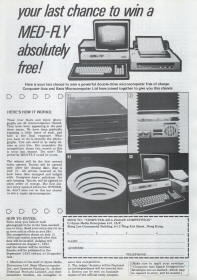
|
● Basis Med-Fly (Apple II clone) |
|
● Multitech Micro-Professor II (pint-sized Apple II clone) |
|
● C-Plus II Chinese character generator for Apple II |
|
● Assorted ads |
|
|
Multitech Micro-Professor II (MPF-II) photos ☞ 1 | 2 | 3 | 4 | 5 | 6 | 7 | 8 | 9 | ||
| (courtesy 'el00192' on eBay) | |||
|
HERE is an Electronics Australia review of the MPF-III (Feb 1984) & Jaycar advertisement for MPF-II (Feb 1983) |
Multitech Micro-Professor III (MPF-III) photos ☞ 1 | 2 | 3 | 4 | 5 | ||
| (courtesy 'wcwhitson' on eBay) |
|
Multitech Micro-Professor MPF-II ads |
|
Emona Enterprises & Jaycar |
|
Electronics Australia (June 1983) |
 |
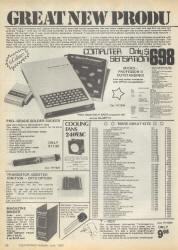 |
|
HERE is a Your Computer review of the MPF-II (1984) & HERE an Emona advertisement for the MPF-III (June 1984)
Basis Medfly ad - Electronics Australia (June 1983)
☞BASIS Medfly photo gallery (courtesy Apple Museum Poland)
See also → Basis Medfly Apple II clone motherboard - high quality photos [40MB PDF]
|
Basis Medfly ads |
|
Compak Computer Centres & Micro-Educational |
|
Australian Personal Computer (August 1983) |
|
Apple II workalikes at the Consumer Electronics Show (Chicago) - Laser 3000, Unitronics Sonic, Taiwan Happy Home Computer... |
|
Creative Computing (September 1983) |
PC-5 Apple IIe portable & Super Modem Telefax cards - Asian Sources Computer Products (August 1985)
Unitron U-2200 Apple II clone advert - Your Computer (AU) (March 1984)
|
|
U-2200 keyboard
close-up photos
☞
1
| 2
(courtesy 'retrowallaby'
on eBay AU) Unitron U-2000 Apple II 'lookalike' model photos ☞ 1 | 2 | 3 | 4 (courtesy 'thatmacguru' on eBay) |
Unitron U-2000 with original box
These Unitrons were made in Taiwan, though there also existed an unrelated Brazilian company of the same name making Apple II clones!
|
The namesake Unitron Apple ][+ clone from Brazil |
Apple Laser-//c Milmar (Brazilian Apple ][+ clone in a //c case) |
|||
|
(courtesy Ricardo Contieri on YouTube - see HERE) |
||||
|
(courtesy 'asshen' on eBay) |
||||
|
Microsoft Papa Tudo (Pacman) on Microdigital TK2000 from Brazil |
Apple II Language Card clone
Unitron Apple II Language Card
|
Displays "UNITRON" when booting (even when installed on genuine Apple ][) |
|
The Unitron U-2000 - a popular, mass-produced Taiwanese Apple ][ Plus clone with blue (or green) motherboard - also not uncommonly came supplied with exact copies of Apple ROMs and these units showed "APPLE ][" on startup (and were 100% ProDOS compatible) |
Microsoft 16K RAMCard clone
(see HERE for Microsoft RAMCard ad)
Videx Videoterm 80 column card clone (with optional inverse video chip)
ROM 1 = firmware, ROM 2 = standard characters (7 x 9 matrix), ROM 3 = inverse video
Apple II internal modem card compatible with Hayes Micromodem II / IIe
|
"Graphic Plus" clone of Grappler+ parallel printer interface card |
See also → Grappler+ clone from Taiwan - scan of original box, hardware & manual
|
Apple II Super Serial Card clone (assembled in Philippines) |
Gibson LPS II Light Pen System and clone counterpart "SMC-II"
"Shining Super Mouse" with two buttons for Apple //c & Laser 128
|
Should also work with Macintosh 128K/512K/XL/Plus, Lisa & Apple II or //e with mouse card |
|
Both buttons are operable and perform the same task... ADB version also exists for ADB Macs & Apple IIGS |
| "KB 3000" Apple II Plus detached IBM-style keyboard |
|
with numeric keypad and 10 programmable function keys |
Perhaps some clones could accept the female 9-pin plug directly (e.g. ASEM AM 100?) - otherwise it needs an adapter for the motherboard connection which I lack
This Lingo 128 clone has a nine-pin D-type keyboard socket which matches the plug found on the KB 3000, but sadly my keyboard turned out to be incompatible with this machine (and I didn't have original Lingo keyboard at the time)
Official keyboard specifications of the Lingo PC-128 Mk II
(also applicable to the Mk I in my possession?)
The complete manual for the Mk II is available from HERE
Lingo PC-128 Mk II Personal Computer with original keyboard & monitor
photos courtesy eBay Australia
NB: The Lingo PC-128 Mk II has a revised design and only works with Apple CP/M (Z80) in its base configuration - a separate BASIC Rom-card must be added to support Apple DOS 3.3. A good example of a "legally hardened" clone.
Lingo 128 — Apple ][+ clone with extras!
Lingo 128 (left) & advertisements from 1984 Australian Personal Computer (above & right)
See also → Lingo 128 advertisement from Your Computer (February 1985) @ archive.org
The Lingo 128 (first version) is a sophisticated Apple ][+ clone from Limco Products of Singapore featuring dual processors (6502 & Z80), RGB and PAL video, integrated parallel & serial ports, 9-pin joystick connector (IIe/IIc-type), detached keyboard, adjustable speaker volume, built-in 80 columns, 128K standard RAM, and twin floppy disk drives all brought together in a PC-style enclosure. My unit is badged "Panther 128" on the front (by an Australian reseller Interface International), but still shows "Lingo 128" on startup. The 5.25" Chinon floppy disk drives are from Japan, as is the APS-I switching power supply. The motherboard has "Kegani" stamped on it.
Ad for APS-1 switching power supply
August 1983 Australian Personal Computer
The Lingo has separate PAL colour and monochrome composite video outputs but only the mono jack is working. There are two RGB sockets - one stemming from the motherboard, the other from an unusual card in slot 3. Perhaps the PAL colour composite output had to be disabled to support this unusual configuration, I really don't know. An RF Modulator is mounted on the back, but if its generating any signal my Toshiba TV can't detect it. I've not tested the RGB outputs. The Lingo has six physical expansion slots (corresponding to #2—#7). Slot "0" should be taken over by 128K RAM, and slot "1" by the inbuilt parallel port. A switch lets you toggle between 40-column and 40/80-column mode but the machine will only boot in the 40/80 configuration (all text displayed in 80 columns by default).
Without a compatible keyboard I can't do much with this computer, besides playing some joystick games that don't need any keypress to get going!
Lingo 128 with CP/M, Saturn/Titan RAM Board software, Championship Lode Runner, Gumball, etc.
You'd likely assume the 128K RAM of the Lingo 128 is compatible with Saturn/Titan RAM but this turns out not to be the case...
Saturn/Titan MOVEDOS utility reports "NO 128K BOARD FOUND"
DOS 3.3 System Master detects a 16K Language Card and loads Integer BASIC into it, just like any standard 64K Apple ][+
ProDOS 8 refuses to work. I tried ProDOS 8 v1.2 & v1.7 (both unpatched), v1.9 (patched for clone) & v2.4.1 (2016 release - doesn't check for genuine ROM) — all hang on the startup screen
ProDOS 8 v1.9 (patched) & v2.4.1 run just fine on my Pravetz 8M (Bulgarian ][+ clone)
Speaking of Saturn RAM, check out these modern remakes ...
→ Saturn128 Reboot by David Mutimer
→ Hyperion 512K RAM+ card by Ian Kim (emulates Saturn RAM & No Slot Clock)
Lingo 128 — 80 column text sample
Text displays in 80 column mode by default! I've actually found no way to get 40 columns at all...
Lingo 128 classified advertisement in AUSOM News (Melbourne) — October 1986
Lingo AM-12 CRT monitor (amber phosphor)
Lingo 128 detached keyboard (yes I finally found one!)
Panther 128 with original extended keyboard (eBay photos)
![]()
Epyx Summer Games II on an NTSC Apple ][+ lookalike clone from the Far East
![]() High-resolution scan of
Summer Games II original Apple II
box (1985 Epyx)
now
available
HERE
[9.5MB PDF file]
High-resolution scan of
Summer Games II original Apple II
box (1985 Epyx)
now
available
HERE
[9.5MB PDF file]
^ 2016-03-28 (last revised 2023-11-08)
► DIRECT LINK to this section ◄
| Apple IIe/IIc compatible |
| with Triple Speed Processor |
| by Video Technology Computers Ltd & Laser Computer |
|
This Laser 128EX now in my possession was originally sold in the U.S. - it's a 1987 unit - presumably from an early batch as the letters "EX" are stickered on |
|
(Unlike the European version, it lacks a switch underneath for toggling video output between NTSC/PAL) |
RGB video cable for connecting the Laser 128EX to my Commodore 1084S monitor
|
The Commodore 1084S has a button on the back for toggling between analogue & digital TTL-CGA |
|
The Laser 128EX's Video Display Generator chip [HG61H20B44F] with dedicated 64K VRAM supports both analogue and digital RGB. Although the quality of these RGB modes is similar, analogue gives a more vibrant picture by default. |
|
However, digital RGB can be made to appear the SAME by tweaking brightness/contrast. Only using digital RGB do you get the full 16 colour CGA palette (8 colours with 2 levels of intensity). Laser's analogue RGB serves up a simplified subset of only 8 colours (lo-res/DHR colours #0-7 and #8-15 are duplicate sets). |
|
Standard hi-res colours look the same in either mode and correspond quite well to the Apple standard. Lo-res colour #7 (also present in double hi-res) which is nominally light blue, shows the most striking difference, being rendered grey in digital RGB and white with analogue. Stick to digital RGB for best results with lo-res or double hi-res graphics! |
|
The 1084S monitor also has a regular composite jack ("CVBS"), but as mine is the PAL Australian model you would only get monochrome with the Laser (for RGB it doesn't matter). The North American 1084S would be a better match, outputting colour in both RGB & NTSC composite modes. Incidentally, the 1084S monitors also cater for Commodore 64's LCA mode (equivalent to S-VIDEO) for an excellent, crisp picture when paired to C64. |
|
I have the Laser's original 120V power supply (photos above left), but prefer a modern 100V-240V 60-Watt supply acquired in 2015 for my Apple //c which is also fully Laser 128 compatible (indeed any //c PSU will work) I was lucky enough to track down the genuine Laser 128 240 volt power supply for Australia (photos above right), which proves this machine was sold in an Australian context! |
Laser 128EX startup screen (ROM Version 4.2) & built-in control panel
When I took delivery of this computer (on 16 December 2016), I actually had no idea if I was getting a plain Laser 128 (1MHz speed only) or a genuine Laser 128EX (selectable 1, 2.3 or 3.6MHz) - after all, the letters "EX" were stickered onto the badge which could be construed as fake. I had only the eBay seller's photos to rely on and nothing more.
But lo and behold - it turns out to be the real deal! Holding down '3' or '2' at power-on, a CTRL-RESET or "three-fingered salute" selects the higher speeds of 3.6MHz or 2.3MHz - just as you would expect for a 128EX. The proof lies in the pudding - higher pitched beep, faster cursor blink rate, and programs verily hurtling along. Some early 128EX units actually shipped in Laser 128 boxes with only an extra "EX" sticker on the flap - e.g. see HERE
Here's a video I made showing Thexder running at both 3.6MHz and 2.3MHz:-
|
Laser 128EX screenshots |
|
Commodore 1084S monitor in analogue RGB mode |
Karateka
Pitfall II
Galaxian
Blazing Paddles
AppleWorks
The Laser 128EX keyboard sports open/closed triangle keys instead of apples - a change which even carries over to its unique MouseText
MultiScribe
The Laser 128EX has a color/mono switch, handy for programs like MultiScribe which only look good in mono
Yes, the switch also affects the composite video output - mono disables the color burst for all graphics modes
AppleWorks and MultiScribe are ProDOS-based, and any version of ProDOS should run without modification on Laser 128 - no special patches needed (unlike most clones)
Airheart
![]()
TV screenshots of Airheart and Prince of Persia for comparison:-
Laser 128EX composite NTSC video to Samsung 32" LCD TV (RCA input)
Laser 128EX composite NTSC video to Samsung 32" LCD TV (S-Video input)
Airheart on the AppleColor Composite Monitor
Laser 128EX composite NTSC video to AppleColor Composite Monitor IIe (RCA input)
It's also worth noting that the Laser serves up a usable picture on my Apple //c monochrome green screen (240V PAL model G091H)
Many PAL displays can tolerate a 60Hz NTSC signal, though you may get shimmer and a vertically squashed, down-shifted picture (fiddling with vertical size and hold controls of the monitor may compensate somewhat). Atypically perhaps, the PAL 220-240V Commodore 1084S-P1 monitor handles NTSC and PAL composite with equal aplomb, yielding a rock solid, full-sized picture either way (NTSC in mono only). The PAL //c green monitor when paired to NTSC manifests the artefacts described earlier...
![]()
TIP OF THE DAY — The easy, ready-made solution to adapt Laser 128's RGB output to a modern VGA or HDMI display is to use Microbee Technology's CGA to VGA Converter or CGA to HDMI Converter. A regular Laser 128 RGB cable (like the one I showed) will plug straight to the D-sub 9 input of these converters. Alternatively, Microbee can supply a CGA to Analogue Adapter for use in conjunction with the popular GBS-8200 video upscaler (provides VGA output).
Microbee CGA to HDMI Converter with my Laser 128EX
Microbee Technology on their custom improvements to the HD-VC9900 (HDMI) or GBS-8200/8220 (VGA) video upscaler
"... The unit is based around a common video scaler board that has been available for a number of years and is widely used to convert arcade machines to use newer VGA CRT or LCD monitors... it does have a number of drawbacks which are overcome by adding our custom input board. Firstly, the scaler board requires a quite 'clean' signal for Horizontal & Vertical Sync signals, otherwise there is degradation in the output display, with display jumping and poor sharpness. Also, the analogue input to the board does not cater for true CGA colour output. The CGA interface standard provides digital (TTL level) RGB signals, plus an INTENSITY signal, giving 8 colours with 2 levels of brightness - 16 colours in total. To fully implement the CGA colour set there has to be some work done to add the INTENSITY level to the RGB signals and create an analogue output. Once these items are taken care of, the rest of the work is done by the scaler board... In getting this project together we were not all that happy with the output from the scaler board under certain conditions. Intermittently, and mostly when the board was cold, there would be 'snow' on the video output. This seems to be a common fault with these boards, which, after much work, we found to be a result of poor circuit design in leaving off damping resistors in the SDRAM interface and poor calibration of the SDRAM timing. We have developed a workaround though and it is applied to all of the scaler boards that we ship with our units."
|
Laser 128EX digital RGB screenshots |
|
Asus VS228N 1080p LED monitor via Microbee CGA to HDMI Converter |
Airheart, Pirates!, Wings of Fury, Prince of Persia, Kid Niki, Impossible Mission, Hackerforce BD Show, Into The Eagle's Nest, Dazzle Draw Demo, Bruce Lee
Watch my video with more Laser 128EX RGB screenshots (over 200!)
![]()
Laser 128EX inside scoop
High interior build quality - metallic cage prevents RF interference and protects the motherboard (even against corrosion)
|
Laser 128EX keyboard PCB - early model |
|
NB: later revisions of the Laser 128EX keyboard have a single rectangular block connector (two parallel rows of 17 pins each) and a single ribbon cable going to the motherboard |
Keyboard opened up revealing dome-switch mechanism
Motherboard with memory expansion card
|
As you can see, the motherboard comes fitted with an unpopulated 1MB RAM expansion card - a standard inclusion on all Laser 128EX, optional for the revised model 128 (ca. mid-1987 onwards) |
|
Functionally, the RAM appears in slot 5 and conforms to the "slinky" standard (Apple II Memory Expansion Card compatible). As such, it's automatically configured as a RAM disk under ProDOS or Pascal 1.3 and AppleWorks will utilize the extra RAM for its desktop. |
|
The Laser expansion card takes RAM chips of type 41256. AE RamFactor uses the same chips and its manual lists some of the compatible variants. Chips must be rated 120ns for the Laser 128EX and EX/2, though for the Laser 128 150ns will be sufficient. |
|
I've a spare working Apple IIGS 1MB Memory Expansion Card with socketed MT1259-12 RAM chips - confirmed Laser 128EX compatible:- |
|
After shifting sixteen of the MT1259-12 RAM chips over to the Laser I now have 512K of extra legroom |
|
AppleWorks 3.0 desktop at 501K and RAM disk size 1024 blocks in ProDOS:- |
![]()
Laser 128EX complete with original retail box [photos courtesy of eBay]
Laser 128 early model with original retail box [photos courtesy of eBay]
Portable battery pack was an option for the Laser 128
![]()
![]()
![]()
Laser 128EX retail box with styrofoam - early version with "EX" sticker [cvxmelody collection]
![]()
![]()
![]()
![]()
Photos of the Laser Expansion Box — 1 | 2 | 3 | 4 | 5 | 6 | 7 | 8 | 9 | 10 | 11 | 12 — complete with power supply
The Laser Expansion Box is an option for the Laser 128 providing extra power and shielding for two Apple II peripheral cards (corresponding to slots 5 & 7). But even without this box, the Laser 128 can accept a single peripheral card plugged directly into the expansion slot on its left side (configurable as slot 5 or 7 on the 128/128EX, slot 5 only on the 128EX/2) - just be careful to position the card component side up (this approach is clearly documented in the RamFactor 1.5 & Laser UDC manuals and explicitly labelled on the early Laser 128). Also seen in the photos is a Laser Universal Disk Controller (UDC) Card (early "long" version) compatible with Laser 128 or any slotted Apple II, for interfacing UniDisk 3.5" and/or any type of Apple II 5.25" drive. Please also see Laser 128 - An Affordable Compatible (inCider December 1986). The early model Laser 128 (ROM 3.x or earlier) on its own lacks 3.5" support. This was redressed in the revised Laser 128 of ca. mid-1987 - identifiable by its lighter-coloured case, same style as the 128EX, and ROM 4.0 or above. The Laser 128 (revised model), Laser 128EX and EX/2 feature an integrated UDC for the internal floppy drive (5.25" or 3.5" on the EX/2 only) and external 3.5"/5.25" drive port. The final revisions of the UDC added full support for the platinum Apple 3.5" drive and daisy-chaining capabilities.† With respect to the standalone Laser UDC card, the "short" versions of the card (miniaturized design with far fewer chips) are more likely to incorporate these advances. (I used to have a standalone UDC card - the "short" version - that was fully compatible with my Applied Engineering 3.5" 800K drive on a //e - the AE drive being equivalent to the platinum Apple 3.5") And any Laser 128 or 128EX that shipped with a later ROM version (6.0 or above) should have daisy-chain ability. There is a known issue with the Laser 128EX/2 trashing information saved to the internal 3.5" floppy drive - see HERE.
|
Laser 128 Expansion Slot Card
from a2heaven.com
The ingenious modern solution for adding two Apple II slots to Laser 128
![]()
![]()
![]()
![]()


Laser 128/128EX ROM Version 6.0 behaviour when no bootable disk detected - it gives up after a while and shows these messages - quite similar to Apple //c and especially the IIc Plus†
|
|
† |
By contrast, earlier Laser ROMs - e.g. v2.9 (1986), v3.0 (1987), v4.2 (1987) - behave just like an Apple //e - the drive keeps spinning forever until a disk is found
|
|
|
Laser 128/128EX built-in control panel demonstration |
|
Access the control panel by holding down 'P' while turning on or if already on, 'P' with CTRL-RESET |
|
(Laser 128EX/2 would show additional settings for default startup speed, boot drive and built-in clock) |
Laser 128EX with Epson #8133 (APL C) parallel printer card plugged directly into the side expansion connector (configured as slot 7)
|
Epson LQ-500 text & graphic samples - made with Applesoft BASIC & The New Print Shop |
|
direct hookup to Epson APL C card on Laser 128EX |
|
Two in-built LQ text fonts - Roman & Sans Serif plus enhancements - double wide, double high, outline, shadow, italic, etc. |
CHECK OUT MY OTHER VIDEOS
![]() Epson
LQ-500 on Laser 128EX - Publish It!, Applesoft text & graphics printing, The New
Print Shop
Epson
LQ-500 on Laser 128EX - Publish It!, Applesoft text & graphics printing, The New
Print Shop
See also → Laser 128EX & Franklin ACE 500 reviews (July & August 1987 inCider) - high-resolution scan
→ Laser 128, 128EX, 128EX/2 User's Guide & BASIC Manual (1989) - complete scan (77MB PDF)
POSTSCRIPT: VTech, the company behind the Laser 128 series (and other computers like the Laser 200, Laser PC3/PC4/PC5/PC6, Laser Compact XT & Laser LT321E Notebook), also tried to develop a clone of the 16-bit Apple IIGS and actually demonstrated a prototype at the 1989 KansasFest (A2-Central Developer Conference) - see HERE. Today, VTech flourishes as a manufacturer of electronic learning products and cordless phones.
![]()
Laser FD 100 external 5.25" floppy drive
Compatible with Laser 128 or any Apple II with DB19 connector or interface card (IDC20 "Disk II" version also available)
See also my video showing Disk //c external 5.25" floppy drive (A2M4050Z) on Apple //c HERE
Laser FD-356 external 3.5" floppy drive (800K)
For Apple II, Laser 128 and Macintosh 512/Plus/SE
December 1986 advertisement & close-up photos for 3.5" 800K Chinon drive from Central Point Software (VTech/Laser subsidiary)
^ 2016-12-16 (last revised 2023-08-11)
► DIRECT LINK to this section ◄
The Software Automatic Mouth (S.A.M.) speech card
The Software Automatic Mouth, according to the manual, is "a versatile, high-quality speech synthesizer... that adds quality speech to your personal computer for a lower cost than ever before possible and, in the bargain, you gain features that other speech synthesizers cannot offer."
The hardware-based version of S.A.M. generates sound through a speaker mounted on the card - and shouldn't be confused with the software-only S.A.M. utilizing the Apple speaker
I was eager to audition the S.A.M. and now have it installed in slot 5 of my enhanced Apple IIe clone. It normally goes in slot 4 but the program disk I have was patched for slot 5 operation (and renamed R.A.M. for "Remote Automatic Mouth") - perhaps the idea was to keep slot 4 free for a Mockingboard.
Close-up of the S.A.M. speech card. I assume it to be a 1980's clone?
S.A.M. Owner's Manual and page describing the various demo programs
Hear the S.A.M. speech card in action (audio samples made using Edirol R-09HR and external mics)
![]() S.A.M. introductory demo
S.A.M. introductory demo
![]() S.A.M. speeches
S.A.M. speeches
![]() S.A.M. text-to-speech demo
S.A.M. text-to-speech demo
![]() S.A.M. guess the
number game
S.A.M. guess the
number game
See also → Review of S.A.M. speech card - The Australian Apple Review (July 1984) - high-resolution scan
^ 2016-03-04 (last revised 2019-11-06)
Master ][ (1984) - by Samurai-Software of Perth
An example of Apple II software development in Western Australia!
"Master ][... uses some of the fastest sorting and analysing routines available for the Apple II range"
^ 2016-03-09
Just for fun...
|
Cassette copy of "Lemonade Stand" from the vintage disk |
Elementary, My Dear Apple (1980) |
I had no easy way to test the cassette ports of my "new" enhanced Apple IIe clone, since I don't own any Apple II cassettes†. So I devised a simple procedure:
|
● I loaded the Applesoft program "Lemonade Stand" (1979) from the "Elementary, My Dear Apple" disk pictured above |
|
● Ran a cable from Cassette Out port of my enhanced Apple IIe clone to mic-in of Edirol sound recorder |
● Hit record button, then SAVE on the computer. Single BEEP heralded start of the recording, another BEEP the finish. |
● Rebooted, CTRL-RESET, then LOAD at Applesoft prompt |
| ● Played back recording using a Cowon music player to the Cassette In port. Had to experiment with volume, but finally, success! Single BEEP signals start-detect of the "cassette" recording, and a return to the Applesoft prompt the completion... |
● LISTed the program to ensure it was all there, then RUN to execute it |
|
†UPDATE: Exciting new arrival - my first Apple II cassette! → Download digitized audio files (FLAC) [24.9 MB] Video sampler of these programs is HERE
|
||
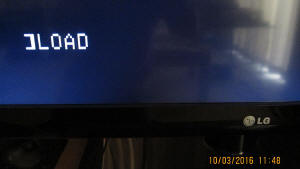
 |
||
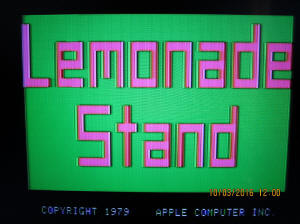 |
 |
|
![]() Hear what the
cassette recording of "Lemonade Stand" sounds like
Hear what the
cassette recording of "Lemonade Stand" sounds like
Download best quality version (FLAC) [7.56 MB]
You can play this audio file back to the Cassette In port of any suitably equipped Apple II. Type LOAD at the Applesoft prompt, start playback, and when the cursor re-appears, RUN to play the game. If it doesn't work at first, try adjusting the volume and disabling any kind of sound enhancement. Either a mono or stereo lead will work, as I've duplicated the audio to both channels.
^ 2016-03-10 (last revised 2017-12-14)
► DIRECT LINK to this section ◄
Brand new Gravis Mac MouseStick II to adorn my Mac PowerBook 3400c - most definitely a quality choice for any Mac with ADB port
![]() High quality scan of
Gravis Mac MouseStick II Quick
Start, Registration Card & Disk (1995-97)
now
available
HERE
[20MB PDF file]
High quality scan of
Gravis Mac MouseStick II Quick
Start, Registration Card & Disk (1995-97)
now
available
HERE
[20MB PDF file]
Gravis Mac MouseStick II v3.3.2 Installer (1996) — 1.4MB disk [Disk Copy 4.2 image] | 1.4MB disk [StuffIt archive Disk Copy 4.2 image]
MacPlay/Interplay Out Of This World (1992) — 1.4MB disk [Disk Copy 4.2 image] | 1.4MB disk [StuffIt archive Disk Copy 4.2 image] | Scan of original box, disk & manual [28MB PDF file]
![]() Watch my video -
RASTAN
arcade fun with MouseStick II
(Mac PowerBook 3400c
emulating Apple IIGS)
Watch my video -
RASTAN
arcade fun with MouseStick II
(Mac PowerBook 3400c
emulating Apple IIGS)

Beeshu Omega Apple II/PC precision analog joystick
Another great find on eBay. Works perfectly, and nicely colour-coordinated with the table for my enhanced Apple IIe clone! Has very precise centering and control and a full analogue sweep (0-255). There is only a single button 0 on top of the stick - both buttons on the base are button 1, an arrangement which takes some getting used to, but it's designed this way to cater for both left and right handers.
Read a review of the Beeshu Omega joystick from the Nov 1989 issue of inCider:-
WATCH MY VIDEO
![]() Beeshu
Omega joystick on Laser 128EX playing Donkey Kong
Beeshu
Omega joystick on Laser 128EX playing Donkey Kong
See also → OMEGA Self-Centering Joystick Owner's Manual for Apple II & IBM PC - PDF scan
subLOGIC Flight Simulator II for Apple II (original box & contents)
Rear cover ad for Flight Simulator II from Compute!'s Apple Vol. 5 Issue 5 (1987)
Another Flight Simulator II boxed original (this one came to me as a gift) - in startling mint condition:-
MAXX Flight Yoke Joystick advertisement
Datasoft Zaxxon by SEGA
^ 2016-03-12 (last revised 2021-10-19)
Epyx 500XJ Apple II/PC joystick
VERDICT: Nice one!
Right hand operates the stick, the palm of your left hand cradles the unit with index and middle fingers poised on the firing triggers. A switch at the top alternates between free-floating and spring-loaded centre return. Calibration is easy - just press the "CENTER ADJ" button once the stick is physically centred.
Apple II connectors (both 9-pin & 16-pin) & PC gameport adapter (standard inclusions)
Effortlessly slay your opponent in Epyx Death Sword! Also superb with Shamus and Drol. Moon Patrol refuses to cooperate in the right/forward direction, but that game is notoriously fussy when it comes to joysticks.
^ 2016-05-23 (last revised 2020-02-15)
Nishida Radio USB Joystick Adapter & Elecom USB Gamepad
A dynamite duo!
Nishida Radio USB Joystick Adapter for Apple II |
|
Plugged into TG Products Select-A-Port of my IIe |
|
For the list of compatible USB joysticks and gamepads see HERE and HERE |
Elecom USB Gamepad (JC-U2410TWH)
There are several versions of the Nishida adapter - mine is an intermediate model with DIP switches and a single 16-pin connector for the Apple II internal game socket. I got this second-hand through eBay, and found that it wouldn't play along with my Logitech Attack 3 joystick. So I ordered this new Elecom Gamepad from Japan which is confirmed compatible and for which the correct DIP settings are supplied on Nishida Radio's website.
|
Close-ups of the gamepad |
Movement control is on the left. There are 10 buttons in all, but only the four round buttons on the right side are functional on the Apple II (two of which map to Apple paddle button 0, the remaining two to button 1). |
Gaming console action on the Apple II - paused screenshots from Cavern Creatures, Crossbow, Commando and Choplifter
Whilst you cannot adjust the calibration of the gamepad or the adapter, the default calibration will be fine for most games |
Sample X & Y-axis readings |
|
(courtesy of the Applesoft program described HERE) |
 |
||||||
| ▲ | ||||||
| ◄ |
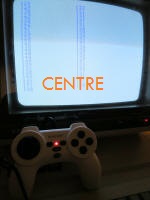 |
► | ||||
| ▼ | ||||||
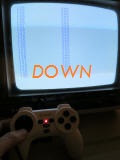 |
^ 2016-07-11 (last revised 2016-07-14)
Microsoft SideWinder joystick & ReActiveMicro IBM 15-pin to Apple 9-pin joystick adapter
Apple IIc with Microsoft SideWinder 3D Pro (PC game port joystick) |
|
IBM 15-pin to Apple 9-pin Joystick Adapter (by Tom Arnold / ReActiveMicro - based on schematic by Jeff Hurlburt) |
|
|
Xevious RoboCop Apple IIc PAL Modulator A2M4023 photos Boulder Dash II Microwave Cavern Creatures Up'n Down Conan |
00:13 01:18 03:43 03:59 05:05 06:29 09:48 11:40 |
@ normal 1MHz speed or Zip Chip 4MHz†
Apple //c VGA Adapter to
ViewSonic VS12319 LCD monitor
&
Apple IIc PAL
Modulator/Adapter A2M4023 (colour composite) to Shinco MDP-1770 7" LCD DVD
player/monitor
![]()
![]()
Video of Saracen played with SideWinder joystick @ 2MHz is HERE
†The references in the video to 8MHz speed-up are incorrect as this //c has a 4MHz Zip Chip (model 4000) and not 8MHz as was first thought. HERE is my video of an actual 8MHz Zip Chip (model 8000) on Apple //e.
^ 2017-05-08 (last revised 2017-09-29)
Apple 20MB SCSI hard disk
The Apple Hard Disk 20SC debuted in September 1986 along with the Apple IIGS. It originally contained a Seagate hard drive, but was later manufactured with the MiniScribe 8425SA 20MB SCSI hard drive depicted above [see Wikipedia article]. (The MiniScribe was also offered as a a built-in drive on the Macintosh II and SE)
The drive you see in these photos (with 1989 manufacturing date) has been in my possession since the early 1990s, when I got it second-hand. It was shown working to me in a Mac though I never ended up using it, since I preferred a larger capacity Quantum ProDrive LPS (50MB SCSI) for my IIGS. The Quantum was still working perfectly when taken out of storage in late 2015, but in April 2016 suddenly started misbehaving, throwing up bad blocks. In the near future I'll replace it with a MicroDrive/Turbo IDE with 256MB CompactFlash card. I have the Quantum backed up with ADTPro, so restoring the system won't be difficult. The Apple II SCSI Card now in my GS will be shifted across to my enhanced IIe clone. The plan there is to attach a SCSI2SD which emulates a SCSI hard drive using a microSD card.
The ADTPro backup of my GS hard disk runs fine on emulators and in particular with GSPort under Windows I can easily move stuff between the virtual GS and the "real life" GS/Mac/Windows via A2SERVER. Having never even touched an Apple II emulator prior to 2015 these mod cons really do strike me as awesome!
![]() High quality scan of
Apple Hard Disk 20SC Owner's Guide
(1986)
now
available
HERE
[12MB PDF file]
High quality scan of
Apple Hard Disk 20SC Owner's Guide
(1986)
now
available
HERE
[12MB PDF file]
See also related documents → Apple SCSI Cable System manual (1987) & Apple External Hard Disks brochure (1989)
![]()
![]()
![]()
![]()
GSPort browsing 1993 Apple Developer CD "Other People's Memory" (System 6 & HyperCard IIGS) on A2SERVER
![]()
![]()
![]()
![]()
GSPort emulates a color ImageWriter II printer
Quick test of GSPort's virtual ImageWriter II driver - printout from The Print Shop (1986 color version) to Brother laser printer
Airheart screen dump - virtual vs real ImageWriter II - printed from 816/Paint
My video of Mac LC with Apple IIe Card printing in color to a real ImageWriter II is HERE
![]()
![]()
![]()
![]()
GSPort razor sharp 360 x 360 DPI printing to Epson LQ
![]()
![]()
![]()
![]()
|
Another great Apple IIGS emulator is "Bernie ][ The Rescue" for PowerPC Macs |
|
Bernie integrates extremely well with the Mac environment and is compatible with real Apple II 3.5" floppies - even 1.4MB disks via the Mac's SuperDrive! |
Bernie ][ The Rescue reading 1.4MB high density 3.5" floppies (ProDOS, MS-DOS...)
^ 2016-04-05 (last revised 2019-07-13)
► DIRECT LINK to this section ◄
SCSI hard disk emulation using flash memory media
 |
MicroDrive Turbo with 256MB CompactFlash card working smoothly on Apple IIGS! I have it setup with 8 partitions. The first holds GS/OS - cloned from my Quantum 50MB SCSI hard disk, but now updated to System 6.0.3. The second partition (also bootable) has 8-bit games, AppleWorks, MultiScribe etc. On startup, the MicroDrive Turbo lets you boot from the partition of your choice by holding down the Open Apple Key plus the corresponding number. Most of the remaining partitions are taken up with ready-made 32MB images downloaded from whatisthe2gs.apple2.org.za, full of 16-bit games and apps. At first, GS/OS would consistently crash at the point where the Finder scans all your drives. The problem seemed related to the ICONS folders of the storage partitions - too many icons for GS/OS to handle I guess. I renamed them all to ICONS1 and no more crashes.
SCSI2SD adapter pairing up well with Apple II SCSI card. No memory card was supplied and I've put in a 2GB microSD. The setup - partitioning, formatting and transfer of HDD images using ADTPro - was performed on my IIGS†. Advanced Disk Utility handled the partitioning with aplomb (it's on System Tools 1 disk of GS System Software 6.0.x). I configured four 32MB partitions and don't envisage a need for more. I first tried copying the HDD images directly to the microSD using CiderPress but in the end, the ADTPro approach worked best for me. I now have the Apple II SCSI card and SCSI2SD in my enhanced IIe clone.
† Had the partitioning been done on an Apple //e, I would probably have used the Apple II SCSI Card Utilities (available HERE - for Apple II High Speed SCSI Card you'll need the one HERE)
|
AppleWorks 3.0 load time on SCSI2SD - quick and dirty demo video |
|
Configuration: Apple IIe enhanced clone | Apple II SCSI Card (Rev C ROM) | ITEAD Studio SCSI2SD V5.0a | RamWorks II 1MB | TransWarp @ 3.6MHz |
See also
![]() BOOTI
USB Hard Drive Emulator Card for Apple II, II+, IIe, IIGS (supports 8 disk
images)
BOOTI
USB Hard Drive Emulator Card for Apple II, II+, IIe, IIGS (supports 8 disk
images)
^ 2016-05-10 (last revised 2020-07-04)
► DIRECT LINK to this section ◄
Quickie Hand-Held Scanner for Apple II by Vitesse
The Quickie Hand-Held Scanner - a package comprising scanner, interface card & software - was originally released for Apple IIGS
A short while later, Vitesse came out with an 8-bit version of the Quickie software, compatible with Apple ][+ (64K), //e and Laser 128
"Quickie-C" — a 1994 update for the Apple IIGS significantly introduced colour scanning for the first time (using 3 passes of the scanner) — see HERE & HERE
![]() See also
Vitesse
press releases — Quickie-C and FAXination for Apple IIGS
(1994 GEnie Apple II RoundTable)
See also
Vitesse
press releases — Quickie-C and FAXination for Apple IIGS
(1994 GEnie Apple II RoundTable)
The Quickie Controller Card supports third-party hand scanners based on the Omron 1700 mechanism and having an 8-pin mini DIN connector (e.g. LightningScan, or PC scanners such as Logitech ScanMan, Genius GS 4500, etc - all were made in Japan)
Quickie Controller Card in slot 1 of my enhanced Apple //e clone
I don't have the official Quickie scanner to test. Only this Marstek Mars 105 hand-scanner for PC:-
PC Magazine (November 1991) reports that the Mars 105 is capable of 400 DPI and 64 halftones
Here's one variant of the official Quickie scanner which outwardly looks identical to the Mars 105
[photo courtesy of «QUART DE POMME»]
Quickie software for 8-bit Apple II (ProDos 8)
InWords by WestCode Software - optical character recognition (OCR) for enhanced Apple //e or IIGS with at least 512K RAM
→ High-resolution scan of InWords sealed original box now available HERE
Unfortunately, I can't get the Mars 105 scanner working properly with the Quickie system... the Quickie software (or InWords) detects the presence of the scanner, initializes it, and can initiate a scan. Press the "START" button on the unit, and all the lights come on like they should. As you run the scanner along the page, everything seems fine and you even hear audio feedback. But the image that comes out is pure garbage.
Could it be a hardware defect, or simply that the Mars 105 isn't compatible? Either way, this gamble didn't pay off. May have to find another scanner to test someday...
Stumbled across a photo of the Mars 105 original box - see HERE - the blurb refers to a "custom ASIC chip design" and speeds "100% faster than most scanners" so it's not a straight copy of the Omron 1700 and will only work with Marstek's own PC interface card
![]()
UPDATE
I've now got hold of a Logitech ScanMan, one of the hand scanners officially supported by the Quickie Controller Card - you'd expect it to work and indeed it does!
Watch my video showing the Logitech Scanman and InWords in action:-
In this demo the scanner is in halftone mode (yields dots of varying sizes - best for graphics). But there is also a text mode (solid black) - required for proper text recognition (OCR) in InWords.
^ 2017-03-04 (last revised 2023-07-27)
Canon BJC-255SP impersonates an Apple ImageWriter
This humble Canon BJC-255SP at one time served as my "portable" printer for Windows. It's similar in appearance to some of the Apple StyleWriter models (which drew heavily from Canon for inspiration). However the BJC-255SP is parallel rather than serial. One talent of the BJC-255SP - which I'd overlooked completely until today - is its ability to emulate an Epson LQ-510/LQ-550/ActionPrinter 4000 (24-pin dot matrix printer), making it a quite suitable printer for any Apple II with parallel interface card.
|
How to enable Epson LQ emulation on the Canon BJC-255SP |
|
(These instructions also apply to Canon BJC-240 & BJC-250) |
Whilst mulling the idea of putting a parallel card into my GS I suddenly remembered I have this adapter cable which converts any parallel printer into a serial ImageWriter:-
This end attaches to the printer and the other end has a plug for the built-in serial port of an Apple IIGS or Mac (8-pin mini DIN). The adapter takes the ImageWriter commands output by the computer and converts them into something the parallel printer can understand. Such adapters were once easy to come by, and I had bought the one above to enable printing from my PowerBook 180c to Epson (and compatible) dot-matrix printers. Supported emulations are ImageWriter, colour ImageWriter II and/or an ImageWriter LQ (only on 24-pin printers). In 9-pin mode, emulation even extends to the full MouseText graphics character set of the ImageWriter II (watch my video demonstration HERE).
Different makes of parallel printer are supported by the adapter - there is a dial (in the photos above-left and below) which must be correctly set to match the printer type... having lost the documentation I've no clue what those numbers on the dial correspond to, but as I had mine originally configured for an Epson (albeit a 9-pin LX model - dial position 7), there's certainly no need to mess with it now.
It does work - like a charm! With the aid of The Print Shop IIGS, I made this printout on the Canon BJC-255SP through the serial port of the Apple IIGS:-
 |
When an
Epson LQ (or compatible printer) outputs graphics intended for a 9-pin
Epson printer, the result can be
vertically stretched
as seen in this example. A solution for fitting everything on the page
is to set the page scaling option in Print Shop IIGS to
80%.
Alternatively, just use this software's native Epson LQ drivers
(printing through a
parallel card or serial adapter with parallel pass-through).
Note that some Epson models
(e.g. LQ-800/1000 &
LQ-850/950/1050)
had both parallel and serial interfaces as standard.
An article showing how to
connect an LQ-1050 to IIGS serial port is
HERE (in German but clearly illustrated).
For the Apple IIc and IIe, official serial cables were available from Epson
- see
HERE. A number of 8-bit Apple II programs also feature native Epson LQ support, e.g. Publish It! 3 & 4 by Timeworks, Springboard Publisher by Springboard Software, TimeOut SuperFonts by Beagle Bros, SuperPrint II by Scholastic, The New Print Shop by Broderbund, Fontrix 1.5 & Printrix by Data Transforms, Jetsons Flintstones Print Kit & PrintPower by Hi-Tech Expressions: I eventually solved the problem of vertically stretched output on Canon BJC by reconfiguring the adapter for ImageWriter LQ emulation. Trial and error established that LQ mode is dial position Ø - the correct and best setting for an Epson LQ printer (or compatible like the Canon BJC). In this mode, graphics for both ImageWriter I/II (9-pin) and ImageWriter LQ (27-pin) scale perfectly without resorting to special tricks - please see samples HERE. NB: Canon BJC-200 series actually feature two emulations - Epson LQ and IBM Proprinter X24E. In IBM (Canon BJ) mode, Epson 9-pin graphics do work in many cases and will print with the correct aspect ratio - this according to one expert user's experiences of the Panasonic KX-P1124 (sporting comparable emulations). And confirmed in my testing of Canon BJC - see hi-res print sample HERE. Incompatibilities can arise in some situations, e.g. gaps in the printout where programs or print drivers try to configure n/72 inch line spacing - issuing an ESC "2" command may fix this - see example HERE. |
The Print Shop IIGS configured for an ImageWriter II printer
![]()
Test #2 - Apple's ImageWriter Tool Kit to the Canon BJC-255SP
NB: I have the Canon plugged into the modem port of the Apple IIGS which appears functionally as a Super Serial Card in slot 2
The resultant hardcopy - looking terrific!
![]()
Test #3 - Paintworks Gold to Canon BJC-255SP under GS/OS System 6.0.3
Printing from GS/OS to an emulated ImageWriter can be problematic when using System 5.0.3 and above - see discussion HERE
I did encounter issues with the System 6.0.x ImageWriter driver and my parallel to ImageWriter converter and the solution was to revert to the equivalent driver from System 4.0
I copied the ImageWriter driver on the System 4.0 disk over to System 6.0.3, renaming it ImageWriter.OLD - this now appears as an additional option under the Printer Control Panel
Though not a perfect remedy, the borrowed driver seems to play along reasonably well with the handful of GS/OS programs I've tested so far
→ Apple IIGS System Software 4.0 scans of original box, disks & packing list now available HERE
Here's an actual printout from Paintworks Gold to the Canon BJC-255SP using the System 4.0 driver:-
Chanced upon what appeared to be an identical adapter on eBay - which I've bought - so now have two of them - see eBay listing HERE
My original unit (left) and the spare backup from eBay (right)
![]() NEW!
This adapter was originally marketed as the
IceCable
— my scan of complete manual
HERE
[11MB PDF file]
NEW!
This adapter was originally marketed as the
IceCable
— my scan of complete manual
HERE
[11MB PDF file]

My original IceCable (ca. 1994) has a firmware version 4.9
![]()
UPDATE: I've now ditched the System 4.0 driver in favour of the ImageWriter II driver from Harmonie 2.1 which ticks the right boxes with its superior speed, flexibility and software compatibility...
And I've just picked up an Epson APL parallel card, dropped in slot 7 of the Apple IIGS for those times when I need it. This is an Epson "APL B" (8132 ROM) which was upgraded by Epson to an 8133 ROM (chip is dated 17 December 1985). It bears the revised part number Y49020510000. I tried printing from AppleWorks 3.0†, 4.0 and 5.0 and it works.
| †I did encounter a strange issue where AppleWorks 3.0 refused to print to slot 7 when booted off the hard disk, though it worked when booted up from 3.5" disk. This is apparently due to a disk device having been mapped over the printer slot (I have a MicroDrive Turbo with 8 partitions). A patch to fix this in AW 3.0 is described HERE - if using TimeOut, apply patch to "APLWORKS.SYS". This conflict doesn't arise with 3.5" AppleWorks 3.0 using an older ProDOS that can't see all the partitions. AppleWorks 4.0 & 5.x can print to any slot, even one with a disk device (no patching necessary). |
Two more examples of Epson APL B cards upgraded with the newer ROM(?) (photos courtesy of eBay & Trade Me)
In former days I had an Epson "New Apple II Intelligent Parallel Interface #8133" (original box bears the part number Y490340100), bought new and in daily use for many years, but eventually sold off. This was quite possibly the final incarnation of the Epson APL series, superseding the APL A (8131) and APL B (8132 & 8132W). It has a set of mnemonic commands which are compatible with the popular Grappler interface from Orange Micro. I held onto the original manual which describes every feature in detail - now available HERE
Photos of Epson APL C #8133 card - with part numbers Y49022200000 (front) & Y49022200100 (back)
Two examples of the original Epson APL A (photos sourced from web)
"A" revision on the left — P4 jumper connected which grounds the 8th bit - if this is cut the 8th bit will pass - see discussion HERE
"C" revision on the right — M4 jumper connected which forces 8th bit high — by the way, don't confuse this card with the Epson APL C #8133
Rear view of an Epson APL A labelled '8131' - this is typically a 7-bit card, whereas Epson APL B and higher are 8-bit (better suited for graphics printing)
NB: Epson APL A could be easily modified to pass 8-bits by authorized service centres (and others)
How about this cloned version of the Epson APL B (SP-201-EP-0) which recently fell into my possession
The earlier Epson cards are not without their advantages and could prove more compatible in some settings - they were widespread so a lot of software was written with them in mind. Any program with "EPSON APL" driver will probably work.
The Vitesse Harmonie "EPSON APL" driver for Apple IIGS is incompatible with Epson APL C (#8133) but the stock System 6.0 "Parallel Card" driver in conjunction with Epson printer works, as shown in photos below left. Apple's "Parallel Card" driver also supports the Apple II Parallel Printer Interface Card, Practical Peripherals GraphiCard, and presumably others.
Epson APL C (#8133) also tested compatible with Apple IIGS System 5.0.4 "Parallel Card" driver, as shown in photos above right. System 5.0.4 and 6.0 both come standard with "v2.0" Epson printer & Parallel Card drivers.
Unfortunately, System 4.0's Parallel Card driver doesn't recognize the Epson APL C — see screenshot (NB: Epson APL C installed in slot 7 in my tests).
Comparison of Epson #8131, #8132, #8133 interfaces — from Epson LX-800 & FX-85/FX-105 manuals
WATCH MY VIDEO
![]() Epson
LQ-500 on Laser 128EX with Epson APL C #8133 - Publish It!, Applesoft text &
graphics printing, The New Print Shop
Epson
LQ-500 on Laser 128EX with Epson APL C #8133 - Publish It!, Applesoft text &
graphics printing, The New Print Shop
Dark Star Systems of the U.K. used to sell the ImageMaker EPC-1, a replacement ROM for the Epson APL B (8132) parallel printer card, to make it compatible with everything. In order to secure copyright protection, a copy of the ImageMaker source code was lodged with the British Library. So if anybody wants to look this up, it might be filed under "Dark Star Systems" or the name of its inventor (Robert or Bob Sather).
Info on the ImageMaker EPC-1 from Dark Star Systems newsletter -
A software patch to fix printing from AppleWorks 3.0 to Epson APL cards (pre-8133 ROM) is described HERE
![]()
![]()
![]()
Here's a letter I received in June 1988 concerning the Epson compatibility of Springboard Publisher:-

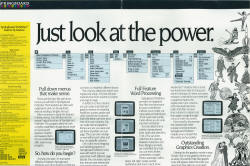 |
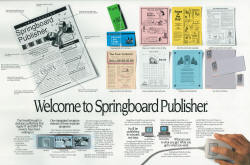
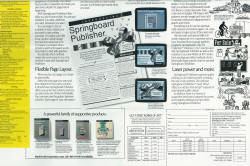 |
| Springboard Publisher big fold-out brochure for Apple II (1987) |
![]()
Ad for a serial to parallel adapter marketed by Epson - I scanned this from the November 1993 issue of MACNEWS (Australia)
If the Epson adaptor depicted above needs custom Mac drivers it might not work on an Apple IIGS. However certain models were evidently GS compatible...
Epson Connect! 2 (Limited Edition) Serial to Parallel Converter Cable with Apple IIGS system
Another contender, well known in the States, is the Grappler C/Mac/GS aka Grappler 9 Pin that emulates an ImageWriter in hardware. The Xetec Superwriter 924 goes one better with 24-pin support (HERE is a good photo & HERE is my scan of the original box). Both these models are Apple IIGS, //c and Mac compatible. (You might also come across the Grappler LQ which is only partially Apple IIGS compatible - some programs like The Print Shop IIGS won't work - see discussion HERE)
Special mention too must be made of the Ice-Cable ("Epson to ImageWriter Converter") from Automatic Ice Co. of Australia which emulates an ImageWriter, colour ImageWriter II and/or an ImageWriter LQ (on 24-pin printers)
|
HISTORIC! Micro-Educational ad from March/April 1980 in Call-A.P.P.L.E. |
||
|
Apple II software ad from June 1982 Australian Personal Computer |
HERE is a review of the Ice-Cable from A.C.T. Apple Newsletter
![]() Complete scan of
The Ice-Cable manual
now
available
HERE
[11MB PDF file]
Complete scan of
The Ice-Cable manual
now
available
HERE
[11MB PDF file]

|
Ad for the Ice-Cable (revised model with configurable dial and all-in-one 9 & 24-pin support) — April 1990 Australian Macworld |
|
This unit looks suspiciously like the one used to interface the serial port of my Apple IIGS to the Canon BJC! |
|
Yet when I originally bought mine (sometime around 1994?) I don't believe it was marketed as the "IceCable" |
|
Adding to the confusion is that Micro-Educational later morphed into "Direct Access Computer Products" (thinking back now, I probably did order it from those guys) |
Circuit board is stamped with "Automatic Ice Co. Newcastle Australia" — so yes, tis indeed an Ice Cable!
With further experiments I discovered that on dial position Ø, the "Ice Cable" will emulate an ImageWriter LQ (27-pin) on any Epson LQ (24-pin) compatible printer! In this mode, the Apple IIGS serial port must be set to 19200 baud.
Watch my video demonstration - printing to Canon BJC from Paintworks Gold, AppleWorks GS, and Springboard Publisher using ImageWriter LQ drivers:-
The white lines in the printouts are due to the Canon cartridge having become clogged (sorry it's very old stock)...
I did eventually manage to clear the cartridge (Canon BC-02) by swabbing it with alcohol. Printing is now much improved:-
Paintworks Gold & AppleWorks GS, printing through Harmonie ImageWriter LQ driver @ 240 x 216 DPI, via "Ice Cable" adapter to Canon BJC-240
|
Print Shop IIGS, configured for ImageWriter II, printing @ Normal quality & 100% page scaling, via "Ice Cable" adapter to Canon BJC-240 |
|
Print Shop IIGS only supports ImageWriter II (no ImageWriter LQ driver), yet page scaling is perfect when printing thru the "Ice Cable" configured for ImageWriter LQ emulation - a full page sign fits on a single page |
|
In LQ mode (dial position Ø), the "Ice Cable" really does perform at its best - handling both 9-pin & 27-pin ImageWriter graphics equally well! |
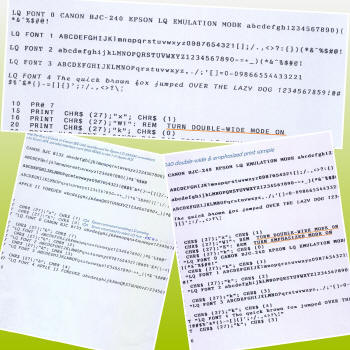
|
Canon BJC-240 LQ font samples - printed from Applesoft BASIC - direct hookup to Epson APL card |
|
Five in-built LQ fonts - Prestige, Courier, Gothic, Roman, Script |
WOW!! Apple IIGS successfully prints MouseText graphics characters to Epson LX-800 via the "Ice Cable"
Ice Cable on dial position 7 (correct setting for 9-pin Epson LX printer emulating ImageWriter II) & IIGS serial port at 9600 baud
|
MouseText printout on Epson LX-800 — high-resolution scan |
NB: The Ice Cable can also be configured for straight through serial to parallel mode by the software command 'ESC ESC %' — see discussion HERE
I managed to get hold
of a Grappler C/Mac/GS
which looks like this:
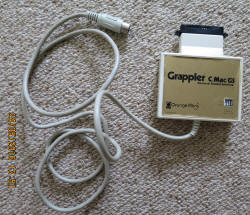
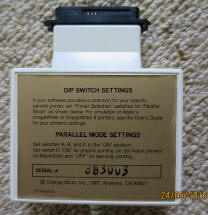

Only has Apple IIc plug, and missing the original AC adapter but fortunately I have a Sanyo power pack of the correct type. The Grappler performs well with my Apple //c and The Print Shop to Canon BJC-255SP, in both parallel pass-thru and ImageWriter emulation modes. I found the manual HERE.
The accompanying "Grapplerdisk" (available HERE) contains an 8-bit graphics printing toolkit along with Grappler GS, an Apple IIGS Classic Desk Accessory (CDA) to dump text and graphic screens (even super hi-res)
|
How about a tasty Granny Smith? |
|
Granny Smith Connection from ZAP Logic Corp — Parallel Interface for Apple IIc |
The Epson GX-80 printer is another option for the Apple IIc, when fitted with appropriate Printer Interface Cartridge from Epson (emulates an Epson LX-80)
|
NB: The Epson GX-80 - marketed in Europe, Australia, etc - is equivalent to American models Epson Spectrum LX-90 & HomeWriter 10 |
|
(HERE is a good photo of the Epson Apple IIc Printer Interface Cartridge) |
|
Epson GX-80 Printer Interface Cartridge #8699 for Apple IIc Operating Manual |
|
(also applicable to Epson LX-90) |
|
Epson GX-80 Setting Up Instructions |
![]()
![]()
![]()
Fans of The Print Shop should also check out Print Magic by Epyx...
|
|
![]() Watch my video -
Print Magic
with Apple //c Scribe Printer
Watch my video -
Print Magic
with Apple //c Scribe Printer
[Print Magic Instruction Manual now available HERE and Print Magic Graphics Reference Card is HERE]
REVIEWS: Hotlink, Grappler C, LiveWire, Apple ColorMonitor IIe, & Epson AP-80 (ImageWriter-compatible printer designed specifically for Apple II) — The Apple II Review (Spring 1986)
ABOVE: Apple IIc system with Epson AP-80 printer (and much else!)
BELOW: Epson AP-80 advertisement (October 1985, InfoWorld) & more photos...
|
Epson AP-80 User's Manual for Apple II |
|
(100% ImageWriter-compatible printer) |
ADVERTISEMENT: AE TransWarp (Mac), Orange Micro Grappler II & Seikosha SP2400AP (ImageWriter II compatible printer) — Australian Macworld (April 1993)
![]()
WHAT A STEAL !! Found this Epson LX-800 dumped on a Perth suburban kerbside on the rather hot morning of 14th November 2016! I rescued it and very glad I did, as this 9-pin printer is in excellent shape and functions as new. Came with a ribbon fitted which should last me a while. No tractor feed or cut sheet feeder, but even single sheets can be fun for the occasional printout. (NB: Pull tractor feed came standard with the LX-800 - whereas for the earlier LX-80 & LX-86 it was optional)
Please see → Font samples from Epson LX-800 (NLQ & Draft) - printouts scanned @ 300 dpi
This scavenged LX-800 is rated 220V so the original owner must have bought it overseas. There are two physically distinct models of the LX-800 - one for US/Australia and one for everywhere else. The photo below left shows what the US/Australian one looks like (front cover is all-white). To the right is a page from the Epson LX-800 Technical Manual on how the two models differ.
In the US, the LX-800 was also marketed as the "Apex80" and "ActionPrinter T-1000" (with same model # P70RA)
"Application Notes - Using Epson Dot Matrix Printers with AppleWorks, Print Shop etc" - official guide bundled with Epson LX-800, LX-810, ActionPrinter 4000 etc — see 1 | 2 | 3 | 4 | 5

|
Epson Application Notes |
|
for Apple II & IBM PC |
|
Y90299107001 |
I've owned Epson LX-86, LX-850 and Brother M-1324 in the past - the LX-850 as step-up model to the LX-800 offers similar print quality though with improved speed and paper handling (e.g. auto tear-off, seamless switching between cut sheet and built-in push tractor). Mine also had the optional cut sheet feeder with 150 sheet capacity (which I stocked with A4, though the only computer paper I ever used was US Letter size - this was in fact the most popular type in Australia, being supported by all software). In some markets the LX-850 is known as the LX-810 or ActionPrinter 2000. (The LX-800 continued to be sold in the guise of the Epson LX-400 - introduced around 1989 in Europe and Australia at the very least, it was priced lower but in appearance and functionality were identical to the LX-800)
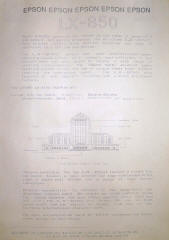 |
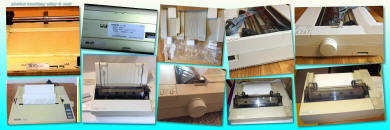
 |
||||
|
Epson LX-850 official sample brochure ca. 1990 |
|||||
Commodore MPS 1000 is a 9-pin dot-matrix printer manufactured by Epson for Commodore. I scooped one up relatively cheaply in January 2018 - and it includes the snap-on pull tractor feed (standard equipment with this model). Separately I've acquired the optional single-bin cut sheet feeder (Epson #8338V). The MPS 1000 looks physically the same as an Epson LX-80, LX-86 or GX-80/Spectrum LX-90/HomeWriter 10.
How does it stack up against those Epson models and what's it actually like? Watch my video to find out:-
Demonstration of Commodore MPS 1000 (240V model)
^ 2016-04-26 (last revised 2023-10-04)
Using AppleWorks 3.0 with an Epson LX-850
At one time I had this setup and made this primer on how to control the dot-matrix printer from AppleWorks 3.0. Since I hardly remember how to use this program anymore, it's useful to revisit... firstly the CPI (character per inch) settings should be set up correctly for your printer, then any special settings can be configured using the 6 special codes available in AW 3.0. If that isn't enough, one can take advantage of vacant CPI settings to hide extra codes for other functions. Using a similar approach, I created a separate configuration profile for a Brother M-1324 printer which could be called upon as needed. All dot-matrix printers (and especially Epson compatibles) operate in the same way, but for best performance the AppleWorks printer settings need custom tweaking.
see also → AppleWorks TimeOut SuperFonts print sample on Epson LQ-500 (hi-res scan)
→ TimeOut SuperFonts original box, disks & unpeeled Beagle Bros sticker (hi-res scan)
|
AppleWorks 3.0 and the Brother M-1324 |
|
|
|
Brother M-1324 Dot Matrix Printer Owner's Manual — specifications, LQ font samples |
|
PDF of complete manual available for purchase HERE |
|
Epson LQ-550 official sample brochure ca. 1990 |
|
Brother M-1324 can fully emulate the LQ-550/LQ-510/ActionPrinter 4000 |
Menus showing the TimeOut applications I was using with AppleWorks 3.0 (left) and 2.0A which preceded it (right)
AppleWorks 2.0 promotional badge and fold-out brochure
→ High quality scan of The UltraMacros Primer: How to Use TimeOut UltraMacros now available HERE [131MB PDF file]
|
|
|
→ AppleWorks 1.0 brochure "A single package, A total solution" (1984 Apple Computer) is HERE |
|
→ AppleWorks 2.0 high-resolution scan of original box, disks & packing list (1986 Apple Computer) is HERE |
|
→ AppleWorks 2.0 Quick Reference Card (1986 Apple Computer) high-resolution scan is HERE |
|
→ AppleWorks Tutorial (1986 Apple Computer) {for AW 2.0} complete scan is HERE [61MB PDF file] |
|
→ AppleWorks 4.0 high quality scan of original box & disks is HERE |
I bought AppleWorks 4.0 when it came out, but didn't make much use of it as shortly afterwards I began to do most of my work on a PowerBook 180c (printing to an HP DeskWriter 520). Though I'm sure AW4.0 (and 5.x) offer extra facilities in the printing department. Later I got rid of the DeskWriter and my only regret is I never tried to hook it up to the Apple IIGS. Printing would have been possible from GS/OS using Harmonie v2.11 by Bill Heineman (disk image HERE) though at the time I only had an earlier Harmonie (1990 revision) which lacked DeskWriter support. I still have access to an HP LaserJet 1200 and maybe one day I'll try it out with the GS. (Another solution is Independence from Seven Hills Software - a package of GS/OS drivers for HP LaserJet/DeskJet/DeskWriter)
|
DeskJet/DeskWriter 520 driver in Harmonie v2.11b supports all printer resolutions up to 600 x 300 DPI |
Incidentally, anyone in the market for a used HP DeskJet 550C/560C or DeskJet/DeskWriter 520/510 should check the roller before buying. The initial batch of these printers had faulty rollers which would become slick after a while and have difficulty gripping paper. HP offered a free repair kit to U.S. customers - see article HERE. In fact, my DeskWriter 520 eventually developed this problem and I had the roller replaced for free at the HP service centre in Osborne Park (Perth). The new rollers have a rubbery, textured feel. The defective rollers appear shiny and smooth to the touch.
→ A review of the original HP DeskWriter in Applecations (July-August 1990) is HERE
^ 2016-05-09 (last revised 2023-09-12)
Curiouser and curiouser
1970's meets the 1980's
Enter the Computer Age - Smith-Corona portable typewriter with Messenger Module doubles as Apple II printer (November 1983, Discover)
![]()
Epson MX-80 - the revolutionary printer that forever changed the world (December 1980, Australian Personal Computer)
Graftrax-80 / Graftrax-Plus - dot graphics and more for Epson MX series (August 1982, BYTE)
Never planned on getting one of these, but it was an opportunity too good to pass up... and for just A$40 from Gumtree (local pickup) this was a no-brainer. ADB cable and even an iMate ADB to USB adapter were thrown in.
The Apple Extended Keyboard II was released in 1990 primarily for Macs with ADB ports. Designed with PC emulation in mind, it has the typical PC layout with a full complement of special keys - F1—F15, ALT, Scroll Lock etc. It's also Apple IIGS compatible, with the upgraded ADB controller on the ROM 3 IIGS being able to light up the LEDs for Caps Lock etc. The Caps Lock key is of the latching variety.
iMate ADB to USB adapter
So far I've only tested the keyboard on a Pentium 4 desktop PC running Vista, as I don't have the space for it anywhere else. The unobtrusive iMate adapter is doing its job with Vista immediately recognizing a USB keyboard.
The Apple Extended Keyboard II has an agreeable lightweight touch and is a pleasure to type on. LED indicators work and all the keys are perfect apart from an unresponsive = key on the numeric keypad.† Not a big deal as far as I'm concerned, and for the price, I reckon I snared a bargain!
† UPDATE: Just realized the standard PC keyboard doesn't even have a numeric = key, which is why the iMate adapter doesn't map this key or Vista won't register it. However, it works fine on a Mac or IIGS with straight ADB connection.
I also managed to acquire the Owner's Guide for the Apple Extended Keyboard II

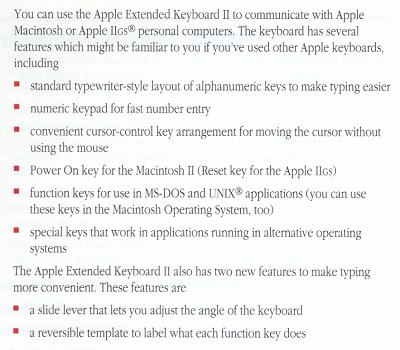
|
|
The Apple Extended Keyboard II is a natural with Applied Engineering's PC Transporter (running v2.0 PCT software and later)
Having real PC function keys at your fingertips makes special key combinations unnecessary. Caps, num & scroll lock indicators light up correctly in MS-DOS environment (even on ROM 01 Apple IIGS).
![]() PC
Transporter
on Apple IIGS
video demonstration
— Alley Cat,
SimCity, MS Word 5.0, PC Paint 3.1
—
watch it
HERE
PC
Transporter
on Apple IIGS
video demonstration
— Alley Cat,
SimCity, MS Word 5.0, PC Paint 3.1
—
watch it
HERE
Some MS-DOS programs like Alley Cat don't work properly with ADB keyboard and the only way to overcome the problem is to use an actual PC/XT keyboard (5-pin DIN connects via simple adapter directly to PCT)
![]() Demonstration of PC
Transporter
with PC/XT
keyboard & 360K floppy drive
(using AE
TransDrive adapter by nanja.info)
—
watch it
HERE
Demonstration of PC
Transporter
with PC/XT
keyboard & 360K floppy drive
(using AE
TransDrive adapter by nanja.info)
—
watch it
HERE
^ 2016-05-03 (last revised 2023-06-11)
► DIRECT LINK to this section ◄
Macintosh Plus in original box & ImageWriter I
Spotted a fine-looking ImageWriter I printer on Gumtree and went over this morning to take a closer look... the seller - a real Mac enthusiast - showed me some other stuff he had, including a mint condition Mac Plus in its original box complete with manuals, keyboard, mouse, accessories, original purchase receipt, and an external 3.5" drive. It was offered to me for what seemed like a pretty good price and I ended up buying it, together with the ImageWriter I, some ClarisWorks manuals, and a couple other odds and ends.
ImageWriter I (220/240V model A9M0303P) - originally sold by Computer Age of Nedlands, W.A.
My video of Mac LC with Apple IIe Card printing to this ImageWriter is HERE
Imagewriter Packing List for Macintosh & Apple Stacker Packing List (printer stand) {courtesy eBay}
→ See HERE for Imagewriter debut ad (Inside Apple Vol 1 No 4 - January 1984)
![]()
FLASHBACK: This empty Unidisk case with Computer Age sticker is something I've retained through the years (now employed as a caddy for the SCSI2SD adapter). I do remember Computer Age in Nedlands, they had this small rectangular showroom with an Apple IIGS (and quite possibly a IIe) on display just beside the entrance, and long tables with other models on either side flanking the length of the room. The other Apple dealers of the 1980's were ComputerLand on St Georges Tce, Perth (I saw a Mac and mouse there for the very first time, and believing the mouse to be a trackball tried to operate it upside down!), Computer Choice in West Perth, and later on came Random Access AppleCentre of Adelaide Tce, Perth. Myer department stores sold the Apple IIc and had a decent range of Apple II software. I don't know what Myer were doing prior to the IIc, though it seems Myer in Sydney carried the Apple II Europlus at some point, e.g. advertising in March 1982 Australian Personal Computer an Apple II 48K CPU for A$1645 (not including disk drive or monitor!).
1981 ComputerLand advertisement with Apple III & 1982 Myer Computer Wave ad for Apple II
Myer Computer and Business Centre Indoorooopilly & ComputerLand Queensland ads
Brisbane COMPUTER EXPO '83 Catalogue
I also found a strange Myer ad in The West Australian (December 1985) showing Apple IIe yet the text only makes mention of Apple IIc, describing it as a '64K RAM' computer (yet IIc has 128K RAM standard - 64K configuration is only possible with IIe) - should we take this to mean that selected Myer stores (e.g. Perth city) did in fact carry IIe?
Myer Christmas ad for Apple IIe (December 1985 The West Australian) |
The references to "IIc" are probably a mistake. The advertised Christmas software bundle (Typequick, AppleWorks etc) is for an Apple IIe system - see corroborating references HERE & HERE |
|
64K would have been sufficient to run AppleWorks 1.3 - the most up-to-date version for 1985 |
|
Probably all Myer department stores carried Apple IIc (see my recollections HERE), with Apple IIe being confined to some flagship Myers only e.g. central Perth, Adelaide, Melbourne, Brisbane (Indooroopilly) & Grace Bros in Sydney (City & Parramatta) |
|
→ See also ad for Apple IIe Business Solution by Myer/Grace Bros in Your Computer magazine (October 1983) HERE |
|
→ Apple IIe & IIc Systems Authorised Retail Price List Australia (September 1985) |
|
The 16-bit Apple IIGS (introduced late 1986) wasn't really promoted to the general public and had little visible retail presence in Australia. |
|
It was targeted primarily to schools and the existing Apple II fan base and handled by some specialist Apple dealers only. Apparently, Apple suppressed the GS, fearing competition for the Mac! |
|
Interestingly, Apple in Australia did arrange behind the scenes demonstrations of the Apple IIGS for the benefit of Myer staff. I know because a friend's brother who worked in the Myer computer section attended one of these viewings. |
|
So Apple may have had greater plans for the GS than we suspect. Myer department stores never carried the Apple IIGS, though sometime in 1988 began selling the Atari ST. See also 1988 Grace Bros ad for Amiga 500. |
Gift of Christmas - ImageWriter II and UniDisk 3.5" from Computer Choice & opening of new West Perth store (Nov/Dec 1985 The Sunday Times & The West Australian)
"Apple II Family Gets 800K From UniDisk" - review of UniDisk 3.5" drive (January 1986 InfoWorld) |
|
→ UniDisk 3.5" demo video is HERE |
Macintosh Plus featured in ComputerLand (Perth) Newsletter (May 1986)
See also → Macintosh Plus launch advertisement Australia - Your Computer magazine (April 1986) [archive.org]
ComputerLand ad (Perth & Nedlands) (1988 Computers West)
![]()
LocalTalk adapters, cabling, ADB mice - never know when these might come in handy
Manual for LocalTalk cable system wasn't included but this is something I already have:-
→ LocalTalk Cable System Owner's Guide (1987 Apple Computer) — complete scan now available HERE [11MB PDF file]
ClarisWorks manuals |
(ClarisWorks v2.1 was installed on my now defunct PowerBook 180c and was capable of reading Apple II AppleWorks files directly) |
Apple Macintosh Plus original box (Australian version)
The above box matches the supplied computer (1989 serial number)
I have another Macintosh Plus original box (Australian) — an earlier, more attractive edition from 1986 with rainbow coloured Apple logo, some photos for comparison:-

![]() See also my
hi-res scan
Macintosh
Plus & LaserWriter Plus brochure
(January 1986 Apple Computer Australia)
See also my
hi-res scan
Macintosh
Plus & LaserWriter Plus brochure
(January 1986 Apple Computer Australia)
UNPACKING PHOTOS
"A History of Personal Computing" - Apple Computer Australia brochure from October 1990 (tucked inside the box though not part of the original contents)
Platinum Apple IIe, Apple IIGS & Macs in Apple Australia's product line-up
See HERE for Apple Computer Australia October 1990 Product Range & Price List (Apple IIe, IIGS, Macs)
Mac Plus keyboard
Mac Plus main unit, assorted manuals, and original purchase receipt (dated November 1989)
![]() High quality scan of
Apple Hard Disk 20SC Owner's Guide
(1986)
now
available
HERE
[12MB PDF file]
High quality scan of
Apple Hard Disk 20SC Owner's Guide
(1986)
now
available
HERE
[12MB PDF file]
Packing List, Apple Product List, Apple Australia 12-month Warranty, Thank You letter

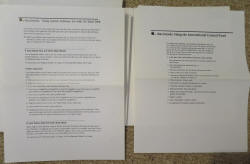

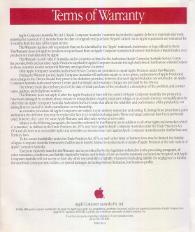
![]()
![]() Download
1988-89 Australian Apple Product List as PDF (11MB high-resolution scan)
Download
1988-89 Australian Apple Product List as PDF (11MB high-resolution scan)
Macintosh HyperCard Version 1.2 Update for Australia (1988) - PDF scan (13MB)
The facility depicted in the letter is Apple's then new factory in Singapore (located at 7 Ang Mo Kio Street 64) which opened on 28th April 1988, replacing the old one at Ang Mo Kio Industrial Park II. Singapore was a major site of production for Apple II Plus (motherboard), IIc (motherboard & complete system), and Apple IIe, IIc Plus, IIGS. During late 1988, Singapore began making Macintosh computers as well.
Mac Plus manuals & system disks
Mac 800K External Drive (model M0131)
Drive functions well apart from the auto eject not working (needs a paperclip to manually eject). However, as the Mac Plus can boot off this drive, I'll just keep a System 6 boot disk permanently inserted, and use the internal 3.5" (ejects fine) as the working drive.
In case you wondered, the Mac 800K External Drive (M0131) is not Apple IIGS compatible though the Mac Plus can accept the standard Apple IIGS 3.5" 800K drive. But there may yet be a solution for the M0131 and Apple II. I used to have one of those "Laser Universal Disk Controller" (UDC) cards for an Applied Engineering 800K drive in my former IIe. When I bade farewell to the IIe, I kept the AE drive but not the UDC - though the UDC had always worked great for me (I think it underwent several ROM revisions so YMMV). Rather intriguingly, the UDC's manual cites compatibility with Mac 400K and 800K external drives. Even if correct, the absence of eject buttons makes these Mac drives suitable really only for the GS/OS Finder (or Mouse Desk).
ImageWriter I adapter cable & spare ImageWriter ribbon in original box
Close-ups of the Mac Plus
Interrupt/Reset programmer's switch - this slots into the side of the Mac Plus - am told this part is quite rare
Took me a while to figure out the placement... for now, the Mac Plus and ImageWriter will rest atop this nice plank of wood
Notice how this Mac Plus, manufactured in 1989, has a platinum colour case (Mac Pluses were beige until 1987 when platinum came in). The beige external 3.5" drive dates from 1986.
|
][ in a Mac |
Apple //e emulator running on Mac Plus - blessed with RamWorks, 800K UniDisk support, and more! |
Seller had taken the precaution of removing the Mac's old battery so the clock doesn't keep time. Otherwise everything appears shipshape. Apparently, Steve Jobs' and Wozniak's signatures are engraved inside the case! I'm not about to pry this thing open to confirm, but see HERE
WOW check this out → VIDEO - Mac Attack (1984) classic 3D tank game running smoothly on my Macintosh Plus
Earthquake insurance anyone?!
Epilogue
Apple //c Imagewriter User's Manual |
||||||||
Apple MIDI Interface A9M0103 for Apple IIGS & Macintosh 512/Plus/SE/II
Apple cables 590-0191-A (Apple IIc to ImageWriter I or Scribe Thermal Transfer Printer) & 590-0555-A I believe the 590-0555-A cable (on the right) can connect an Apple II Super Serial Card (with jumper block set to "Modem") to an ImageWriter II/LQ. With the ends reversed, it may also work for printing from the Apple IIGS serial port (with the right control panel settings) to an ImageWriter I - but I've yet to confirm this. (Another cable to try is the 590-0556-A which I don't have) ?! BRAIN TEASER !? One of my goals was to share the ImageWriter I between the Mac Plus and GS and I found the solution via an improvised series of switchboxes and cables. From the GS serial port, I'm running an ImageWriter II cable 590-0552-A (mini DIN-8 on both ends) to the first switchbox - which really just serves as a mini DIN-8 gender adapter - and from there a mini DIN-8 to DB25 modem cable to the second switchbox. The lead from the Mac Plus which normally goes straight to the ImageWriter also plugs into this DB25 (two-way) switchbox. A serial cable of unknown specification links the output of the switchbox to the ImageWriter I. Yes, painfully stitched together but this arrangement actually works! By the flick of a switch, I can toggle the printer between either computer. (The first switchbox is somewhat redundant but just facilitates a multiple cable run from the GS which is further away from the printer... had I an extra long cable for the GS that would certainly simplify matters)
|
||||||||
^ 2016-05-11 (last revised 2023-12-08)
► DIRECT LINK to this section ◄
Apple IIe Card & button microphone for Macintosh LC
Macworld (December 1990)
|
Mark Day of Apple Computer on the Mac LC Apple IIe Card |
|
May 1992 - comp.sys.apple2 newsgroup |
|
Apple IIe Card |
|
part # 820-0444-A & 670-4444-A1 |
![]() Mac LC Apple IIe
Card Startup Software v2.2 (1992) —
IIe Startup Disk (1.4MB) [Disk
Copy 4.2 image]
|
IIe Installer Disk (1.4MB) [Disk Copy 4.2 image]
Mac LC Apple IIe
Card Startup Software v2.2 (1992) —
IIe Startup Disk (1.4MB) [Disk
Copy 4.2 image]
|
IIe Installer Disk (1.4MB) [Disk Copy 4.2 image]
NB: Version 2.2 is necessary to use the Apple IIe Card on Macintosh LC III and later models
→ Setting Up Your Macintosh LC (1990) — complete scan now available HERE
→ Special Features of Your Macintosh LC (1990) — complete scan now available HERE
Part 2 of this video - Mac LC Apple IIe Card booting off Apple 5.25 Drive - is HERE
Mac LC Apple IIe Card screenshots (ViewSonic CRT monitor) — 40/80 column text, MouseText & Prince of Persia
|
Note the unusual handling of FLASHing 40 column text, which comes up as an unblinking mixture of solid red and white highlights against black characters Perhaps the Mac LC's graphical emulation of the text screen was deemed too slow to implement proper flashing?
NB: FLASH followed by PRINT when executed within an Applesoft program yields consistent flashing characters on the Apple //e (unblinking red highlights on the Apple IIe Card). It is only when you execute FLASH at the Applesoft prompt, then key in a bunch of stuff, do you see this odd juxtaposition of flashing and inverse modes - even on a real Apple //e. The Apple IIe Card's behaviour is at least consistent - any characters that authentically flash on a real //e will be faithfully rendered as solid red highlights. |
Graphically intensive games like Boulder Dash crawl along at snail's pace with the Apple IIe Card configured for colour.
In mono mode, the scrolling of graphics is considerably smoother and more like a real IIe.
NB: Faster, later model Macs, in particular the LC520, reportedly perform much better with the Apple IIe Card
Macintosh Performa 475 (equivalent to LC 475 & Quadra 605) advertised in Sears Catalog Fall 1993
The Apple IIe Card is compatible with the entire Performa 400 series (400/405/410/430/450/460/466/467/475/476)
Macintosh Performa 475 with Czech ALPS Extended ADB Keyboard
The emulated Apple IIe only operates in full-screen mode — but Mac dialogs can still appear on top
This example shows 816/Paint (IIe software) printing Airheart splash screen to ImageWriter II in colour
The Apple IIe screen can be readily viewed, saved and printed on the Mac side from the IIe Option Panel
Invoking the IIe Option Panel causes the Apple IIe session to be suspended to the background
Wings of Fury screen as dumped to an ImageWriter from the Mac environment
With Clock Card in virtual slot 2, date & time are read correctly under ProDOS 8 v2.4.2 (2018 enthusiast release)
The virtual Clock Card is compatible with the native Thunderclock driver built into every version of ProDOS 8.
Since Thunderclock doesn't supply the year, ProDOS calculates this from a look-up table based on other date information. This table must be patched every few years for the calculation to work. A simpler solution is to just grab the most recent enthusiast release of ProDOS 8.
The Mac LC's emulation of Thunderclock only extends so far - the official Thunderclock Plus DOS 3.3 utilities, for example, fail to detect the presence of a Thunderclock [→ screenshot]
Real Thunderclock Plus installed in Apple IIe
Behaviour of the emulated Apple IIe with LOAD & SAVE cassette commands at Applesoft prompt
Introducing Macintosh LC, Classic & IIsi — AppleTalk October 1990 (newsletter of AppleCentre Perth)
|
“Customers who install the Apple IIe Card in the expansion slot of the Macintosh LC will be able to run thousands of Apple IIe applications... The Apple IIe Card also allows Mac LC users to work with Apple IIe disk drives and joysticks. And in the Apple IIe mode, the card supports LaserWriter printing over the AppleTalk network.” |
||
|
|
→ VIDEO The Print Shop (1986 Apple II color version) printing to ImageWriter II on Mac LC is HERE |
|
→ VIDEO ImageWriter II printing MouseText from Mac LC with Apple IIe Card is HERE |
|
The only 5.25" drive that's officially supported by the Apple IIe Card is the platinum Apple 5.25 Drive (A9M0107). Unidisk 5.25" (beige) and Disk II won't work but some cite success with the Apple Disk IIc. The AMR 5.25 drive is touted as Mac LC compatible (see Resource Central Catalog - March 1992). The only compatible external 3.5" drive is the UniDisk 3.5 - not the platinum Apple 3.5 Drive of the Apple IIGS. The built-in Mac LC SuperDrive works fine as you would expect, even handling 3.5" 1.4MB ProDOS media. Floppy Emu Model B is reportedly compatible with the Apple IIe Card, but only with 5.25" emulator disk images. wDrive by KbooHK shown working HERE. |
Macintosh LC & PowerBook starring in "The Firm" (1993)
![]()
Did you know?
|
Gus - The Apple IIGS Emulator |
||
|
for PowerPC Macs |
||
| "... The color graphics modes for Hi-Res and Double Hi-Res are rendered using color-bleeding and match the output provided by the Apple IIe Card for the Macintosh LC. Most of the graphics modes perform extremely fast updates; that is, most graphics on Gus are substantially faster than the Apple IIe Card." | ||
![]()
The Apple Microphone (part # 590-0617-A or 699-5103-A) was originally designed for Macintosh LC and IIsi (see Macworld article further above), but will also work on the Apple IIGS equipped with appropriate sound card. It's a powered mike so external DC power must be provided. I'm using a Soundman A3 Adapter for this purpose:
It turns out the Apple microphones use a non standard voltage (around 7V) - see HERE. The Soundman A3 Adapter provides power from a 6V battery...
Official specs — Macintosh LC sound input/output ports
Recordings made with Sonic Blaster software and AudioZap using Apple Microphone (590-0167-A) connected to AE Sonic Blaster card
^ 2016-05-21 (last revised 2025-05-08)
Apple ][ memorabilia
Who could resist these party favourite "Apple ][" stickers, mug, mouse mat and pen? Custom-made with Vistaprint :)
Apple ][ badge of honour for my enhanced Apple IIe clone!
Apple ][ badge (genuine article ca. 1977-79)
|
Apple magic rug (it flies!) |
||
|
Promotional souvenir accompanying the sale of an Apple //c in Australia in the mid-80's |
||
^ 2016-03-14 (last revised 2017-05-29)
APPLE II VINTAGE LIBRARY — RARE MAGAZINE ARTICLES, MANUALS, SCANS & VIDEOS... ► DIRECT LINK to this section ◄
|
|
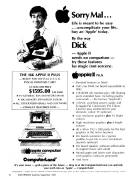 |
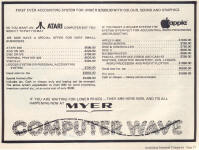 |
 |
||||
|
|
Apple ][ Plus ad ComputerLand Australia September 1979 Electronics Australia |
Apple ][ Plus ads & authorised dealer list |
Myer Computer Wave ad for Apple ][ Plus March 1982 Australian Personal Computer |
Apple I, II, III & Lisa — A History of Personal Computing October 1990 Apple Computer Australia |
|
|


![Disk ][ production line Cork, Ireland with Steve Jobs (1980)](Disk_II_assembly_line_1980_Apple_Cork_Ireland_factory_with_Steve_Jobs_small.jpg) |
|
|
|
|
Disk ][ Drive — photos, packing lists & pricing |
|
- Eurapple (Apple II Europlus) vs ITT 2020 - Practical Computing (UK) (December 1979) (scanned by World Radio History) [12MB PDF file]
"The ITT colours are very good... purer and richer... On the ITT 2020, the PAL signal is generated on the logic board in identical fashion to the way the NTSC signal is produced in the Apple. That enables the best-quality result to issue without the need for a special card." → see 16 colour bar plot - ITT 2020
- Overview of the Eurapple Organization, which oversees Apple's foreign distribution - Apple Computer Prospectus (1977 & 1980)
- 'Apple into Australian small business market' (Apple III launch) - Sydney Morning Herald (March 1981)
- Apple Authorised Dealer List, Apple II Plus ads, Profile of Dick Smith - Australian Personal Computer (May 1981) - high-resolution scan [22MB PDF file]
- Apple II Plus review, Aftermarket Add-ons, Baked Apple & Apple II for Engineers ads - Popular Electronics (August-November 1981) - high-resolution scan [82MB PDF file]
- 'Shake Hands With The Apple II Plus' by P.Kelly-Hartley & J.McKneil (1982 Pitman Publishing Australia) - 120 pages complete scan [56MB PDF file]
- Apple II Language Card (A2B0043) - original box, packing list & user input report (1981 Apple Computer) - high-resolution scan [8MB PDF file]
- Bell & Howell Apple II "Darth Vader" specs & system photos, ARAPPLE Arabic Apple II etc - The Apple II Blue Book (1982 WIDL Video, Chicago) - high-resolution scan [10MB PDF file]
- Shugart SA200 - Apple Disk Controller Card Interface Modifications by Bob Backway of Rivendell Software [7MB PDF file]
- West Coast Computer Faire spotlight - May-June 1982 Apple Orchard (excerpt) - high-resolution scan [16MB PDF file]
- European Warranty Registration Sheet for Apple II & III - B030-0578-A (Apple Computer Marketing B.V.) - high-resolution scan [Dutch version for IIe/IIc/Mac is HERE]
- Apple Computer Australia Warranty Registration Sheet - early 1980's - high-resolution scan
- Apple III review & assorted Apple advertisements scanned from Australian Personal Computer (February 1982)
Apple /// ad (March 1982 BYTE) [300dpi scan]
- Herbie Hancock 'Future Music' (cover story on his super Apple III system) - Softalk May 1983
- Appraising The Apple IIe - The New York Times (January 1983)
|
|
 |
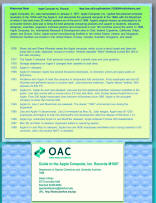 |
|||
|
|
The renaissance man is alive and well — 1983 Apple IIe ad |
Apple //e — Engineering a Crowd Pleaser
(Feb 1983 Apple Times) "The shareholders' meeting, held on January 19 (1983) in Cupertino's Flint Center... Chairman of the Board Steve Jobs gave the packed house what they had been waiting for, a look ahead to Apple's future, the public debuts of the Apple //e and Lisa." |
Apple corporate timeline 1976-1988 (Online Archive of California) |
- Apple IIe launch & UK system pricing - Apple Computer UK press release (January 19, 1983) [see also Apple UK IIe/IIc Price List January 1985 & Apple UK Retail Price List Autumn 1986 with Apple IIe, IIc, IIGS, Macintosh]
- Third-party Apple II Software List with retail pricing (ca. 1983) [Business, Word Processing, Graphics, Communications, Education, Languages, Utilities, Gaming]
- Apple //e The Next Generation (cover story), Lisa's Debut & fantastic advertisements - Softalk February 1983 - high-resolution scan
Apple //e ad (February 1983 Softalk) [300dpi scan]
- Apple IIe American retail price list for base unit, accessories & software - InfoWorld (March 1983) [see also Fall 1984 Apple Promotional LaserDisc showcasing new products - ProFile HDD, DuoDisk, Scribe, ImageWriter, AppleMouse // etc]
- Apple IIe User Group Conference in San Francisco (March 1983) - The Scarlett Letter (April 1983) (scanned by DLH's Commodore archive) "On March 4, 1983, Apple Computer, Inc. brought together representatives from over 90 user groups to the San Francisco Bay area for a three day conference on the new Apple IIe... we had an opportunity to meet and talk with the Apple personnel who designed and built the Apple IIe..."
- Your Computer magazine (Australia) 1982-83 - compilation of Apple II news, reviews, ads, tips, program listings — Jan 1982 - Sep 1982 [7 issues] | Oct 1982 - May 1983 [7 issues] {also reviews of Apple III, Lisa, MicroBee, IBM PC...}
- Your household computer for future literacy (Apple II Plus & IIe) - Sydney Morning Herald (April 1983)
- The Speediest Apple (Diversi-DOS, David-DOS, Saturn Accelerator II etc) / WPL - The Sleeping Giant (Apple Writer) — October 1983 Apple Orchard (excerpts) - high-resolution scan [39MB PDF file]
- Apple IIe Australian Christmas promotion - The Sunday Times Magazine (December 1983)
64K Apple //e ads (August 1983 Australian Personal Computer)
see also Apple IIe Australian TV commercial (ca. 1983/84) featuring Apple Monitor III, Apple II Monitor Stand, Disk ][
- New Apple II Mouse, MouseText, ProDOS, DuoDisk, ProFile HDD announced in Australia - AUSOM News March 1984
- 1984 Macintosh launch - rare set of 14 original magazine covers
- The Macintosh Office brochure - "Apple introduces an alternative to business as usual" (1985 USA/Canada - also for Australia) - high-resolution scan
- Apple IIc Takes On IBM's PCjr - Newsweek (May 7, 1984) $1.5 million launch of Apple //c at San Francisco's Moscone Center with Jobs, Sculley & Wozniak
- Apple IIc cover story "Apple's 7-pound Portable IIc - The Next Evolution of the Apple II" - June 1984 Popular Computing - high-resolution scan [17MB PDF file]
- Compilation of Apple ads & articles - June-September 1984 Popular Computing (4 issues) - 317 pages high quality scan [Apple II & Mac ads, Microsci Havac, Laserdiscs, Computer-controlled homes, Operating Systems, Fake Apples, reviews of dBASE II, DB Master, Flight Simulator II, One-on-One, Zork II & III, Infidel, Homeword, PFS:File & Report, comms & music software...]
- "Apple's Portable Bombshell" - reviews of Apple IIc, Apple music synthesizers, Terminapple - Your Computer (AU) July 1984 (scanned by ChickenMan)
Apple //c brochure (U.K. 1984)
- Apple IIc ad "How to talk your parents into parting with $1300" / Joystick Buyer's Guide / game reviews / Mario Bros Apple II ad (unreleased game) - K-POWER magazine (September/October 1984) - published by Scholastic Inc. [26MB PDF @ digitpress.com] → see also K-POWER July/August 1984 with better scan of //c ad
- Apple Lisa two-page advertisement, reviews of S.A.M. speech card & Apple Scribe colour printer - The Australian Apple Review (July 1984) - high-resolution scan [16MB PDF file]
- In-depth reviews of Apple Scribe Thermal Transfer Printer - InfoWorld (1984/85)
|
|
|
||
|
Apple Accessories. Perfect Under Any Tree. Important New Accessories and Special Savings for Mac, Apple IIe & IIc — Holiday 1985 Catalog (USA)
|
- Apple Numeric Keypad //e (A2M2003) - original box, manual & hardware - complete high-resolution scans [41MB PDF file]
- Apple IIc & IIe Range Official Price List (United Kingdom) - January 1985
- Apple //e and Apple //c Products Confidential Dealer Price List (USA) - November 15, 1984 - complete high-resolution scan
![]()
- Apple Education & Government Confidential Price List (USA) - March 2, 1987 - Apple IIe, IIc, IIGS, Mac & Trade-In Program - complete high-resolution scan
- Apple Educator Advantage Confidential Price List (USA) - October 15, 1989 - Apple IIe, IIc Plus, IIGS, Mac - complete scan
- Apple IIe Supplement to the Owner's Manual - 030-0535-A (1982 Apple Computer) - in English/French/German/Spanish/Portuguese/Italian
Apple //e ad France (May 1986 Golden magazine)
Apple //c ad Germany - Völkner Electronic (March 1987 Happy Computer)
- Exclusive preview of 1st APC Show (Sydney) & assorted Apple II ads (February 1983 Australian Personal Computer) - high-resolution scan [60MB PDF file]
- Apple Lisa previewed in Australian Personal Computer (March 1983)
- Is Apple's new 'Lisa' set to take over? - March 1983 Electronics Australia
 |
| Apple Lisa ad — Zofarry Enterprises of Sydney |
- Apple II cassette Little Brick Out & Color Demosoft (1979 Apple Computer) - digitized audio [24.9MB ZIP archive of FLAC files] → video sampler of these programs is HERE
- Apple Datamover/Telepong (A2T0012) - original box & cassette (1979 Apple Software Bank) - high-resolution scan [13MB PDF file]
- Details and contacts for Apple User Group of Western Australia, NSW Apple Users Group & International Apple Core - Jan 1980 Australian Personal Computer
 |
| Five "NewsDisks" of the early Apple User Group of W.A. referenced in the database of my former Apple II 5.25" disk collection (given away entirely in the mid-90's save for a handful of originals) |
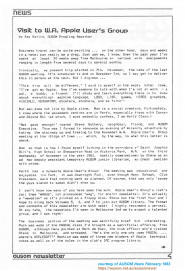 |
| W.A. Apple Users Group plays host to Ray Sarlin (AUSOM Prowling Reporter) in November 1982 |

- Review of Trendcom 200 High-Speed Thermal Printer (Apple Silentype) for Apple II, TRS-80, PET and Sorcerer - May 1980 Electronics Australia [Trendcom brochure & Apple II print samples are HERE]
Apple ][ Plus brochures (1981 Apple Computer UK)
- Apple In Business - Apple II Plus brochure (1981 Apple Computer UK) - high-resolution scan [18MB PDF file]
- Rudi Hoess profile - the man behind Apple in Australia - April 1981 Australian Personal Computer
- 'The games people play' - article by Rudi Hoess on the personal computer revolution & Dow Jones for Apple II - Sydney Morning Herald (July 25, 1978)
- 'Hoess has new string to his bow' - Graeme Philipson talks to the godfather of Australian microcomputers - Sydney Morning Herald (February 25, 1985)
- TerraHertz on the first Apple II brought into Australia (original demo unit from ComputerLand Sydney - Australia's very first microcomputer shop) → see also Apple II (Rev 1) in Sydney signed by Steve Jobs & Steve Wozniak
- Apple II ad, Apple III release, Applefest Sydney, Concord II Apple II clone ad & review - 1981-82 Electronics Australia
|
|
|
||
|
May 1983 — Apple takes over Australian distribution (January 1985 Australian Personal Computer)
|
- Applefest Sydney, Roger Keating profile, reviews of Caverns of Mordia, Sandy's Word Processor, Home Accountant - Your Computer (AU) March & November 1982
- The Vision-80 Video Card Owner's Manual (80 column card for Apple II, II+, Europlus) - 1981 Zofarry Enterprises/Vista Computer Company
- Vision-80 Video Card - high-resolution scan of hardware (front & back)
- Zardax Word Processor quick reference card (1981 Computer Solutions)
- Zardax Word Processor manual for Apple II (1981 Computer Solutions) - revised scan with all chapters plus original binder & disk
- Stemwriter // - word processor for Apple IIe, IIc & III by Stemsoft (Australia) — Ad #1 [Sep 1985] | Ad #2 [April 1986] |Ad #3 [Jan 1987] | Review [May 1986] | Manual [1983/84]
- VERSAcard original brochure & manual cover (1981 Prometheus Products)
- SuperCalc User's Guide & Reference Manual for Apple II et al (1981 Sorcim - 1st edition)
- Electric Duet for Apple II & III original floppy disk (1981 Insoft / Paul Lutus) - high-resolution scan (front & back)
- Chronicles of Osgorth: The Shattered Alliance (1981 Strategic Simulations Inc.) - original Apple II box & reference cards [37MB PDF file]
- Frogger original Apple II instruction card (1981 Sega/Sierra On-Line)
- Repton original Apple II sleeve, instructions & disk scans (1982 Sirius Software) - high-resolution scan [24MB PDF file]
- Serpentine for Apple II original floppy disk (1982 Broderbund) - high-resolution scan
- Apple II games reviewed - Firebird, Olympic Decathlon, Epoch, International Grand Prix, Fly Wars, Jellyfish, Star Blazer, ABM - July 1982 APC
- Official manuals for MicroPro WordStar 3.0 and Microsoft BASIC-80, FORTRAN-80 (from altairclone.com) [WordStar 3.0 Reference Manual is HERE and for WordStar Apple II original package see 1 | 2 | 3 | 4 | 5 | 6 ]
- dBASE II Vol I. User Manual - 199 pages complete scan [35MB PDF file]
- dBASE II Vol II. Reference Manual - 164 pages complete scan [26MB PDF file]
- Apple Presents Spotlight (1982) - rare vintage manual & diskette scans
- Microsoft Typing Tutor II original manual for Apple II (1982)
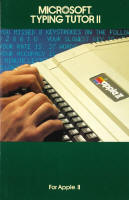
- Microsoft Quick Reference Guide For CP/M-80 (version 2.2) for Apple II SoftCard (1982) - high-resolution scan → read a review of Microsoft SoftCard HERE
- PCPI APPLI-CARD (1982/83) - high-resolution scan of hardware (front & back) [high-end Z-80 card for Apple II/II+/IIe/III & Franklin ACE 1000]
- Microsoft Decathlon original Apple II box, disk, complete manual & Australian warranty booklet [24MB PDF file] {ca. 1984 edition "for Apple II, II+, IIc and IIe"}
- Shapes in Color manual for Apple II (1982 Hayden Software) - graphics programming tool
- Printographer Instruction Manual & original disk for Apple II (1982 Southwestern Data Systems) [22MB PDF file]
- BASIC Tutorial 'BASIC For Beginners' manual for Apple II (1982 Computer Cognition) → read a review HERE
- Applesoft BASIC - A Teach-Yourself Introduction by B.M. Peake (1983 Edward Arnold Publishers) - complete scan [38MB PDF file]
Three distinct editions of The Applesoft Tutorial by Apple Computer
- Applesoft Sampler original disks - 680-0179-A (1982 DOS 3.3) & 680-3011-A (1984 ProDOS) - high-resolution scans (front & back) [11MB ZIP archive of JPG files]
- 'Applesoft BASIC Subroutines & Secrets' by Jeanette & Dave Sullivan (1985 Hayden Book Company) - 305 pages complete scan [99MB PDF file]
- Vocabulary Skills - Prefixes, Suffixes, and Root Words - original Apple II box & disk scans (1982 Milton Bradley)

- VisiCalc Home and Office Companion (181 pages) (1982 OSBORNE/McGraw-Hill) - complete scan
- Titan VisiCalc Enhancements brochure (ca. 1984)
- Apple to Earth - article on the Apple II aboard NASA's Space Shuttle - Microcomputing March 1982
- LISZT with Strings (converts Applesoft program into structured format) - MICRO (The 6502/6809 Journal) May 1982
- COMPRESS - An Applesoft Optimizer - MICRO (The 6502/6809 Journal) September 1982
- Dueling Digits original Apple II sleeve, instructions & disk scans (1982 Broderbund) - high-resolution scan [13MB PDF file]
- David's Midnight Magic original Apple II box, manual & disk scans (1982 Broderbund)
- Chivalry original Apple II box & disk scans (1983 Optimum Resource) - high-resolution scan [37MB PDF file]
- Choplifter & David's Midnight Magic (Double Pack Classics edition) sealed original Apple II box scan (1986-87 Broderbund) [photo of original disk available HERE]
- Epson MX-80 & MX-100 ad comparing Graftrax-80 & Graftrax-Plus - August 1982 BYTE
- Kaga 12" Green Monitor Model KG-12N User's Manual
- NEC 12" Green/Amber Monochrome Monitor Owner's Manual - models JB-1201MR & JB-1205MR (NEC Home Electronics Australia)
- Gumball screenshots on NTSC Apple IIe - Apple Monitor II (green) vs Sakata SC-100 (color) {'bjbNYC'/RetroBattlestations on www.reddit.com}
→ See also Vectronic's scan of Sakata SC-100 ad with Apple II (June 1983 BYTE) HERE
→ More Gumball screenshots: Kaga/Taxan RGB (IIe) | Commodore 1084S PAL composite (IIe) | Commodore 1084S green mode (IIe) | AppleColor RGB (IIGS)
Nu-Tec CRT TV NTSC composite (IIGS) | AppleColor Composite NTSC/50 (3.56MHz) (IIe) | AppleColor Composite mono mode (IIe) | AppleColor Composite NTSC/60 (Taiwanese IIe clone)
AppleColor RGB mono (IIGS) | ViewSonic CRT VGA (Mac LC Apple IIe Card) | Samsung LCD TV PAL Color Encoder Card (Pravetz 8M) | AppleWin NTSC (Windows 7)
NEC MultiSync CRT colour (IIc VGA) | NEC MultiSync CRT green (IIc VGA) | NEC MultiSync CRT shade of green (IIc VGA) | NEC MultiSync CRT amber (IIc VGA)
Samsung LCD TV NTSC (Unitron U-2000) | Samsung LCD TV NTSC (Taiwanese IIe clone) | Samsung LCD TV PAL (IIe) | Samsung LCD TV NTSC (Laser 128EX)
Samsung LCD TV (Laser 128EX mono mode) | Monitor IIc green (Pravetz 8M) | Toshiba LCD TV NTSC (IIe) | Asus LED monitor (Laser 128EX RGB via Microbee CGA to HDMI Converter)
Monitor IIc green (Apple IIc) | Monitor IIc green (Apple IIGS with control panel set to COLOR) | Monitor IIc green (Apple IIGS in MONO standard hi-res mode - dot patterns more like IIe/IIc)
AppleColor Composite NTSC/50 (3.56MHz) (Apple IIc) | Commodore 1084S PAL composite (IIc PAL Modulator/Adapter) | Nu-Tec CRT TV PAL composite (IIc PAL Modulator/Adapter)
AppleColor Composite NTSC/60 (Apple IIGS) | AppleColor Composite NTSC/50 (3.56MHz) (Pravetz 8M) | AppleColor Composite NTSC/50 (3.56MHz) (Apple II Plus - 230V Eurapple model)
Kaga CRT green monitor (PAL IIe with motherboard colour switch enabled) | RCA/Thomson Blackpearl CRT TV (Apple IIc Le Chat Mauve RGB SCART adapter A2M4020F)
RCA/Thomson Blackpearl CRT TV NTSC (Apple IIe) | RCA/Thomson Blackpearl CRT TV NTSC (WOMBAT Apple II+ clone)
|
|
“Never twice the same color!” | |
|
Low-resolution graphics 16-colour bar plots — Kaga/Taxan RGB (IIe) | Commodore 1084S PAL composite (IIe) | AppleColor RGB (IIGS) Nu-Tec CRT TV NTSC composite (IIGS) | AppleColor Composite NTSC/50 (3.56MHz) (IIe) | ViewSonic CRT VGA (Mac LC Apple IIe Card) | Samsung LCD TV PAL Color Encoder Card (Pravetz 8M) NEC MultiSync CRT (IIc VGA) | Samsung LCD TV NTSC (Unitron U-2000) | Monitor IIc green (Pravetz 8M) | Toshiba LCD TV - NTSC (IIe & Laser 128EX) and HDMI (Laser 128EX RGB) AppleWin NTSC (Windows 7) | Virtual ][ (iMac G3) | AppleColor Composite mono mode (IIe) | VGA mono (Mac LC Apple IIe Card) | ][ in a Mac (Macintosh Plus) Nu-Tec CRT TV PAL composite (IIc PAL Modulator/Adapter) | Monitor IIc green (Apple IIc) | Monitor IIc green (Apple IIGS with control panel set to COLOR) AppleColor RGB & Nu-Tec CRT TV (IIGS MONO standard hi-res mode) | Monitor IIc green (Apple IIGS in MONO standard hi-res mode - imparts strange effect to lo-res graphics!) AppleColor Composite NTSC/50 (3.56MHz) (Apple IIc) | AppleColor Composite NTSC/60 (Apple IIGS) | Commodore 1084S PAL composite (IIc PAL Modulator/Adapter) AppleColor Composite NTSC/50 (3.56MHz) (Pravetz 8M) | AppleColor Composite NTSC/50 (3.56MHz) (Apple II Plus - Eurapple model) | AppleColor Composite NTSC/50 (3.56MHz) (Apple II Europlus) AppleColor Composite NTSC/60 (Apple IIc Plus) | Kaga CRT green monitor (PAL IIe with motherboard colour switch enabled) | Le Chat Mauve RGB SCART adapter A2M4020F (Apple IIc) AppleColor Monitor 100 (IIe Extended 80-Column AppleColor RGB Card) | RCA/Thomson Blackpearl CRT TV (Apple IIc Le Chat Mauve RGB SCART adapter A2M4020F) RCA/Thomson Blackpearl CRT TV NTSC (Apple IIe) | AppleColor Composite NTSC (Apple IIc) | AppleColor Monitor 100 (Apple IIGS RGB) JVC CRT monitor PAL (Eurapple Eurocolor Encoder Card on Euro Apple II+) | AppleColor Monitor 100 (IIe Extended 80-Column AppleColor RGB Card) - double hi-res mixed mode RCA/Thomson Blackpearl CRT TV NTSC (WOMBAT Apple II+ clone) | Digitek PAL Color Encoder Card (Apple II Europlus) | Grundig CRT TV PAL (ITT 2020) |
- Unitron U-2000 Apple ][+ clone - how to revert a "PAL" unit to NTSC (60Hz)
- Thank you letter from Apple Computer (early 1983) & Authorized Dealer List for Central Region USA (October 1982)
- Apple Dot Matrix Printer User's Manual Part II: Guide to Apple II (1983)
- Apple Dot Matrix Printer Reference Card - high-resolution scan
- Apple IIc Imagewriter User's Manual Part I: Guide to Apple IIc (1984)
- Apple DMP, ImageWriter I, Scribe Thermal Transfer Printer - samples of all built-in fonts at varying pitches & bold/underline/double-width - high-resolution scan [13MB PDF file]
Did you know? The Apple Dot Matrix Printer is largely a rebadged C.Itoh Prowriter 8510 (parallel model). The replacement for the Apple DMP — the ImageWriter I — is more or less a C.Itoh 8510 (serial model) with redesigned case (15" wide carriage version also available). The built-in fonts are the same as those of the Apple DMP, with the addition of a new 13.4 CPI "semicondensed" mode. The ImageWriter II, introduced in 1985, has a stylish new look, adds Near Letter Quality & Draft fonts, MouseText support, colour printing, networking, more advanced paper handling and greater speed, yet retains software compatibility with the earlier models and all take the same black ribbon cartridge. The "Standard" quality (aka Correspondence) ASCII fonts of the ImageWriter II have the same appearance as the regular text output of an Apple DMP or ImageWriter I.
Overview of ImageWriter II built-in fonts & print samples
Draft Standard (Correspondence) NLQ (Near Letter Quality) Pitch
(Characters Per Inch)
9 10 12 13.4 15 17 NB: Applying Bold or Headline (double-width) to Draft at any pitch reverts to Standard quality Proportional-1 160DPI N/A Proportional-2 144DPI N/A
→ Download TrueType recreations of several ImageWriter II fonts (by John H. Isles): Draft | Pica | Proportional Standard | NLQ
ImageWriter II lives on in modern TrueType style!! ABCDEFGHIJKLMNOPQRSTUVWXYZabcdefghijklmnopqrstuvwxyz1234567890
- VIDEO - ImageWriter II on Apple IIe printing MouseText in NLQ (Near Letter Quality) mode
- VIDEO - The Print Shop (1986 Apple II color version) printing to ImageWriter II with four-color ribbon
- Kraft Premium Joystick instructions for Apple II (ca. 1984)
- 'Computer Compatible' generic Apple II joystick instructions & photos [25MB PDF file]
- IDEAL Arcade Joystick for Apple II instructions & photos [22MB PDF file]
- Omega Self-Centering Joystick Owner's Manual for Apple II & IBM PC (Beeshu Inc) [13MB PDF file]
STAR CURSOR Analog LDR-501 Joystick
for Apple & IBM (by Multicoin Australia)
- Numeric Keypad APE-KYPAD-1 for Apple IIe & compatibles - instructions & photos
- Wizardry Legacy of Llylgamyn (The Third Scenario) original Apple II box, disks & manual (1983 Sir-tech Software) [18MB PDF file]
- Sargon III original floppy disks for Apple II (1983 Hayden Software Company) - high-resolution scan (front & back)
- Pac-Man original Apple II box scan (1983 Thunder Mountain) - high-resolution scan
- Dino Eggs original Apple II manual & disk scans (1983 Micro Fun)
- Spy Hunter original Apple II manual & disk scans (1983-84 Bally Midway / SEGA)
- Dig Dug original Apple II box, instructions & disk scans (1983 Atarisoft) - high-resolution scan [41MB PDF file]
- Moon Patrol original Apple II box, instructions & disk scans (1984 Atarisoft) - high-resolution scan [15MB PDF file]
- Skyfox original Apple II folio & disk (1984 Electronic Arts) - high-resolution scan [28MB PDF file]
- Solo Flight manual for Apple II (1984 MicroProse)
- How About A Nice Game of Chess! original Apple II box, disk & complete manual (1984 Odesta) [21MB PDF file]
- Ghostbusters original Apple II box & disk scans (1984 Activision) - high-resolution scan [12MB PDF file]
- Ghostbusters original Apple II instructions (1984 Activision)
- Impossible Mission original Apple II manual & disk (1984-85 Epyx) - high-resolution scan [48MB PDF file]

see also → Impossible Mission Australian edition【"ECP"】 with locally manufactured plastic clamshell case
- Summer Games II original Apple II box (1985 Epyx) {USA edition cardboard box} - high-resolution scan
- The Dam Busters original Apple II manual & quick briefing card (1985 Accolade)
- Koronis Rift Apple II Reference Card & Hint Card (1985 Epyx / Lucasfilm Games)
- Telarium Newsletter & Catalog Vol 1 No 1 Fall/Winter 1984-85 (Apple II, C64, IBM PC) [12MB PDF file]
- Nine Princes in Amber original Apple II box & disks (1985 Telarium) - high-resolution scan [41MB PDF file]
- Nine Princes in Amber reference cards for Apple II (1985 Telarium) - complete scan [18MB PDF file]
- Hacker II original Apple II box (1986 Activision) - high-resolution scan [11MB PDF file]
- The Chessmaster 2000 manual for Apple II (1986 Software Country)
- Lords of Conquest original Apple II folio & disk (1986 Electronic Arts) - high-resolution scan [14MB PDF file]
- Make Your Own Murder Party original Apple II folder, manual & disk scans (1986 Electronic Arts) [41MB PDF file]
- Arcticfox original Apple II folder & disk (1986 Electronic Arts) - high-resolution scan [27MB PDF file]
- Marble Madness original Apple II folder, command summary & disk (1986 Electronic Arts) - high-resolution scan [31MB PDF file]
- Silicon Dreams Novella & Playguide for Apple II and other platforms (1986 Rainbird Software) - complete scan
- The Pawn - A Tale of Kerovnia - Apple II manual (1986 Magnetic Scrolls / Rainbird Software) [26MB PDF file]
- The Spy's Adventures in South America original Apple II box & disk scans (1986 Polarware)
- Spy Vs Spy Volume I & II original Apple II/C64 box, manual & disk scans (1986 Avantage)
- Blue Powder, Grey Smoke original manual for Apple II (1986 Gardé) [30MB PDF file]
- Project: Space Station original manual for Apple II, C64, IBM (1987 Avantage) [57MB PDF file]
- California Games original Apple II box & disk (1987 Epyx) - high-resolution scan [19MB PDF file]
- The Last Ninja original Apple II box & disk (1988 Activision) - high-resolution scan [15MB PDF file]
- Batman The Caped Crusader original Apple II box, manual & disk scans (1988 Data East)
- Where in Europe is Carmen Sandiego? original Apple II box & manual scans (1988 Broderbund) [20MB PDF file]
- Ultima V original Apple II box & contents including authentic completion certificate signed by Lord British (1988 Origin Systems) - high-resolution scans [25MB PDF file]
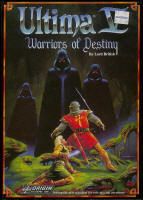
- Ultima Trilogy I-II-III original Apple II box, disks, Quickstart Instructions, Player Reference Guide (1989 Origin Systems) [43MB PDF file]
- The Computer Edition of SCRABBLE Brand crossword game - original Apple II box, manual & disk scans (1989 Virgin Leisure Genius)
- Empire 'Wargame of the Century' v2.0 - Apple II Command Reference Card (1990 Interstel)
- Brochure for AGAT Personal Computer System (Soviet Apple II clone "Агат") - in Russian & English (ca. 1983-84)
- Microdigital TK3000 //e (enhanced Apple IIe clone from Brazil ca. 1985+) - photos of computer & original box
- Pineapple Operation Manual & Assembly Notes (Hong Kong Apple II clone) - 1982 Formula International / Pineapple Computer Products
- VIDEO - Introducing PINEAPPLE Apple II clone & screenshots AppleColor Composite Monitor (A2M6021 120V NTSC model) [see HERE for screenshots from A2M6021X 240V 'International NTSC' model]
- Basis Medfly & Multitech Micro-Professor II (MPF-II) advertisements - June 1983 Electronics Australia
- Basis Medfly (Apple II clone) motherboard & enclosure - high quality photos [40MB PDF file]
- Taiwan - Asia's Micro Dragon (Apple II clones - Basis Med-Fly, Multitech Micro-Professor II / Profile of Hsinchu Industrial Park) - July 1983 Computer-Asia [16MB PDF file]
- Apple II - Chinese Game Manuals (scanned by FinApple)
- Bone Ash Old Game 骨灰集散地 - Taiwanese Apple II site with game disk images, screenshots and info in Chinese
- Apple IIe Taiwanese clone motherboard FOX-2001 [NTSC / 6502 CPU / unenhanced / standard four ROM layout] - high-resolution scan of PCB (top & bottom) [18MB ZIP archive of JPG files]
- Hong Kong Apple ][ Fan site - HK PCL PRO-Mockingboard, UFO Joystick ][, A2 cassettes & disks [UFO Joystick original box & instructions HERE]
-
DEMO VIDEO
 CROWN G-889
CROWN G-889
 microswitch arcade joystick for Apple II - digital 8-way
controller with unique analogue emulation mode
microswitch arcade joystick for Apple II - digital 8-way
controller with unique analogue emulation mode
- VIDEO - TV news report on counterfeit Apple II computers being smuggled into the U.S. (1985 The New Tech Times) [YouTube video by 'Harry McCracken'] {shows Banana, Pineapple, Golden II, Multitech Micro-Professor etc...}
- Rare Apple II clone computers and peripheral advertisements - 1983-86 Asian Sources Computer Products [including Laser 3000, Golden 7, PCS-2001, BASE-64, STAFF-3, ZD Ucom, PC-5 and more...] → photos of Base-64A with original box are HERE
- Apple Computer to set up plant in Singapore - Business Times (April 1981)
- Singapore becomes chief site of Apple IIe production - The Straits Times (September 1985) → see VIDEO FOOTAGE of Apple IIe assembly line
- Apple's new factory in Singapore among the most advanced in the world - The Straits Times (April 1988) → see PHOTO of how this building looked in August 2020
"The new factory will continue to manufacture the Apple IIe, the most widely used personal computer,
as well as the portable Apple IIc and the Apple IIGS, which features extremely advanced graphics and sound capabilities."
- Photographic archive - Apple II assembly & VIPs at official opening of Apple's new Singapore factory - National Archives of Singapore (April 28, 1988)
- An Apple rolls off the line every 40 seconds - The Straits Times (August 1988)
- Southwestern Data Systems Catalog February 1983 (Roger Wagner) - ASCII Express, Z-Term, Printographer, Merlin, Assembly Lines etc
- ASCII Express Instruction Manual supplement - Addendum (Apple IIc, ProDOS) & FAQ (1984 United Software Industries) [24MB PDF file]
- Replay II brochure, Basis Medfly clone ad, Advantages of Apple III - Hex Computing (Perth agents for 3A Computer Products of Wyoming) Aug 1983
- 3A Computer Products 1985 Apple II Public Domain Software Catalog - complete scan
- A.P.P.L.E. Winter Product Catalog (January 1984) - high-resolution complete scan [54MB PDF file]
- Epyx Consumer Software Catalog Winter 1984 - high-resolution scan [21MB PDF file]
Epyx Dragon's Eye by Southern Software (New Zealand)
- Back It Up III manual & original disk scan (1983 Sensible Software) [30MB PDF file]
- Essential Data Duplicator III manual & original disk scan (1984 Utilico Microware) [26MB PDF file]
- Essential Data Duplicator (EDD IV) Program Information List 4-7
- Brochure for Dymek Recording Interchange Diagnostic (RiD) - comprehensive drive diagnostic for Apple II (1984) [photo of original disk HERE]
- The Original Locksmith Users Manual Version 5.0 (1983 Omega MicroWare) [20MB PDF file]
- Locksmith Newsletter Vol 1 No 1 Spring 1984 (Omega MicroWare) [34MB PDF file]
- Nibble News Volume 2 Issue 6 July 1983 (Nibbles Away ][ newsletter & original disks) [12MB PDF file]
- Nibble News Volume 3 Issue 6 1984 (Nibbles Away ][ newsletter & manual) [10MB PDF file]
- Timemaster II H.O. User Manual REV 1.1 (1984 Applied Engineering) - complete scan [29MB PDF file]
- Apple II feature issue (Steve Wozniak, Broderbund, Apple II vs IBM PC etc) - アツプル社7年目の軌道修正 - February 1984 PC World Japan
|
|
|
||
|
Why you should buy an Apple II-something instead of an IBM PC-anything Apple IIe/IIc brochure (1984 Apple Computer)
|
Apple II j-plus was the only Asian-localized Apple II ever made. As for subsequent Apple II models sold in the Far East, UK or USA English keyboards were the norm. For instance back in 1983 in Hong Kong, you could have bought Apple IIe in the UK PAL version - see HERE. In Japan, models similar to the American Apple IIc & IIe were available in stores - see HERE & HERE. The Japanese Apple IIc A2S4000J {→ photos HERE} sported an American QWERTY keyboard, but toggle switches & status lights above the keyboard were labelled with symbols rather than text (as per European & Canadian IIc). Supplied power module was 100V 50/60Hz or 120V/60Hz. An Apple II Kanji Word Processor was developed internally at Apple but never saw commercial use - see HERE. An 11" colour monitor with Apple logo - Toray TM-113V(A) - was marketed for j-plus - please refer HERE & HERE.
- Hong Kong Churns Out Computer Clones (Apple II - Golden Computer Centre - Sham Shui Po) - InfoWorld March 12, 1984
- Apple II hardware & software bargains in Hong Kong's Golden Shopping Centre - Your Computer (AU) May 1984 (archive.org)
- Review of the Dick Smith CAT (Apple II clone aka Laser 3000) - May 1984 Electronics Australia [This clone was also marketed in the USA under its original name "Laser 3000" and later as the "Aplus 3000"]
- "The CAT is colourful, with extra circuits" / "The Mac is a convenience computer" - Sydney Morning Herald (June 1984)
- "The CAT is out of the bag" - Dick Smith CAT cover feature - July 1984 Bits & Bytes (New Zealand) (scanned by J. Scott)
- Dick Smith CAT Technical Reference Manual (First Edition) - 1984 Video Technology Ltd (scanned by R. Johnstone)
- Laser 3000 Personal Computer User's Manual (First Edition) - 1984 Video Technology Ltd
- Laser 3000 Personal Computer BASIC Reference Manual (Second Edition) - 1984 Video Technology Ltd
- VIDEO - Laser 3000 starring in the movie 最後一戰 / "The Final Test" (1987) [If video is blocked in your country try alternate link → Laser 3000 fact file]
- Laser 128 - An Affordable Compatible (review of early model) - inCider (December 1986) - high-resolution scan
- Laser 128EX & Franklin ACE 500 reviews - inCider (July & August 1987) - high-resolution scan
- Laser 128 128EX 128EX/2 User's Guide & BASIC Manual - 1989 Video Technology Computers Ltd - 285 pages complete scan [77MB PDF file]
- VIDEO - Laser 128EX boosted with 512K RAM (internal memory expansion)
- VIDEO - Unique MouseText graphics characters of Laser 128/128EX
- VIDEO - Laser 128EX with Microbee Technology CGA to HDMI Converter (over 200 RGB screenshots) [~14 minutes]
Did you know? Laser 128EX (Apple IIe/IIc compatible computer) supports both analogue and digital RGB which produce a sharper image than is possible with regular composite video. The RGB implementation is based around the 16 colour CGA palette but only digital RGB gives you the full set (8 colours with 2 levels of intensity). Laser's analogue RGB serves up a simplified subset of only 8 colours (lo-res/DHR colours #0-7 and #8-15 are duplicate sets). Standard hi-res colours look the same in either mode and correspond quite well to the Apple standard. Lo-res colour #7 (also present in double hi-res) which is nominally light blue, shows the most striking difference, being rendered grey in digital RGB and white with analogue.
- VIDEO - Apple IIc with Disk IIc external floppy drive (A2M4050Z) loading ancient 13-sector DOS 3.2 disks [~22 minutes]
- VIDEO - Apple IIc booting off external Laser FD100 5.25" disk drive (includes head cleaning demonstration) [~18 minutes]
My close-up encounter with a wombat at Hartz Mountains National Park in Tasmania on 25 August 2014
- VIDEO - WOMBAT clone of Apple II - slideshow & quick takes of Conan, MECC Computer Inspector, Gumball [~3 minutes]
- VIDEO - Wombat's FLASHING and INVERSE text modes both appear as flashing
- 8-page advertising spread by Computer Edge (importers of Wombat clone) - August 1983 Australian Personal Computer (scanned by seanpaulk)
- FOX-640 advertisement (Australian manufactured Apple II clone) - Your Computer (AU) September 1983 (archive.org)
- "Win one of 10 Apple IIe Personal Computer Systems" competition - Cleo magazine (AU) September 1983
- The New Apple IIc - dealer launch event in Melbourne (1st May 1984) - AUSOM News June 1984
- Plucky Wombat takes on Apple - Judge Rules Software Not Copyright - Electronics Today International (AU) January 1984
"In 1983, Apple, worried about the increasing number of illegal clones on the market declared war on the manufacturers. Their first victim was Computer Edge, the Australian distributor of a Taiwanese clone, the Wombat... At the end of 1983 the Australian Federal Court found in favour of Computer Edge... This led to an uproar which resulted in the Australian copyright law being amended so that it applied to software. In 1984 the full bench of the Federal Court reversed the original decision by a majority of 2-1. However, the final appeal, decided in 1986, supported the original judgment by a 3-2 majority." — The Age (May 3, 1988)
The ramification of this ruling is that Apple II clones (using copied Apple ROMs) and pirated software in general, were legal in Australia - right up until the law was changed. Apple did succeed in shutting down most of the Apple II cloning operations in the Far East. Those companies regrouped, switched to IBM cloning with a vengeance, and it was the millions of cheap PC clones flooding out of Taiwan in particular - many with legal BIOS (e.g. Phoenix, AMI) and licensed copies of MS-DOS or Windows - which almost drove Apple to the wall by the mid-1990's.
- "Imagine a world without pirates" (Jodee Rich - pirate fighter) / Profiles of Imagineering whiz-kid Jodee Rich - The Age (February 1984) & Sydney Morning Herald (1982 & 1985)
- New Portable Apple IIc, KoalaPad for Apple II review, Wombat clone legal furore - Your Computer (AU) May 1984 (scanned by samlev)
Apple loses Wombat lawsuit
& Apple III Plus released (Jan 1984 InfoWorld)
|
|
|||
|
Lothlorien Software ad (March 1984 Your Computer) → further info on Lothlorien products HERE |
- Personal Software magazine (June 1984) - complete scan [reviews of WordStar 3.3, Dollars & Sense, Making Business Decisions, The Writer, Thinktank, Aladin, Documax, Millionwaire, Regatta, Movie Maker, The Seven Cities of Gold, Monkeynews, Micros for Micros, Owlcat]
- Personal Software magazine (August 1984) - complete scan [reviews of PFS: File/Report/Graph/Write, Multiplan, Music Construction Set, Bank Street Writer, AppleMouse II & MousePaint, Beyond Castle Wolfenstein, relational database packages]
- Personal Software magazine (September 1984) - Apple II spotlight [reviews of Choplifter, FlashCalc, Back to Basics Accounting, Investor's Workshop, Dow Jones Home Budget, Cell Defense, Charlie Brown's ABC's, Flak, How About A Nice Game of Chess!, Objective: Kursk, etc.]
|
|
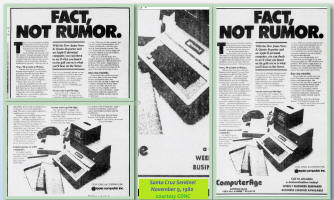 |
 |
||
| Dow Jones News & Quotes Reporter for Apple II ad (Nov 1980 Santa Cruz Sentinel) | Microsoft Multiplan, Fortran-80, Applesoft Compiler, SoftCard, RAMCard for Apple II |
- Microsoft Software & Hardware Catalog for Apple II & IBM PC (1984) - high-resolution scan - featuring the comprehensive range of Microsoft Apple II products
- A+ Magazine 1986 Apple Marketing and Media Facts (detailed subscriber study in big binder) - 83 pages complete scan [24MB PDF file]
- Apple Computer 10th Anniversary Timeline 1976-1986 - February 1987 A+ Magazine
|
Apple LaserWriter with the Apple IIGS (Nov/Dec 1990 GS+ Magazine) → "LaserWriting" fonts & templates from the GS+ disk are HERE |
|||
|
Your Apple II and the LaserWriter (July 1986 A+ magazine) |
- Design Ideas manual for Apple II (1988 Timeworks Platinum) - design & layout ideas for Publish It! [17MB PDF file]
- Apple II Publish-It! 3.0 to Mac LaserWriter - a concise tutorial by Mike Gooding
- Explore-Australia original Apple II box, disk & complete manual scans (1988 Dataflow / Learningways) [78MB PDF file]
- Test Drive original Apple II manual & disk scans (1988 Accolade)
- Prince of Persia original Apple II box scan (1989 Broderbund)
- The Ancient Art of War original Apple II box, disk & complete manual scan (1989 Broderbund) [22MB PDF file]
- The Ancient Art of War Apple II Quick Reference Card (1989 Broderbund)
- The Elementary Apple IIGS by William B. Sanders (1986 COMPUTE! Books) - 262 pages complete scan [58MB PDF file]
- COMPUTE!'s Guide to Sound & Graphics on the Apple IIGS by William B. Sanders (1987 COMPUTE! Publications) - 240 pages complete scan [86MB PDF file]
- COMPUTE!'s Apple Applications Special (Spring/Summer 1987) - Art And The IIGS / Software Buyer's Guides - Apple IIGS, Educational & Business / AppleWorks Forever / Bulletin Boards & Apple SIGs / Reviews of Toy Shop, Animate, Shanghai [24MB PDF file]
- Great GS Games (cover story) - 7 hot games for Apple's hottest computer - COMPUTE!'s Apple Applications (April 1988) [10MB PDF file]
- 10 Products You Can't Live Without / 5 IIGS Word Processors Compared / Reviews of Pirates!, Personal Newsletter, List Plus, California Games, AST-VisionPlus, ComputerEyes - COMPUTE!'s Apple Applications (June 1988) [15MB PDF file]
- Your Apple IIGS Big Fun and Games article (Cavern Cobra, Sea Strike etc) - Your Computer (AU) October 1989
- Graphics on the GS - Medley, 816/Paint, Deluxe Paint II, AppleWorks GS etc - Your Computer (AU) November 1989
- ProDOS Tutorial by Stewart Fist - Learning with Your Computer (1989) (scanned by ChickenMan)
- Your Apple IIGS (Nite Owl battery, CMS SCSI, Tetris, Bubble Ghost, Mean 18) - Your Computer (AU) February 1990
- Reviews of Sonic Blaster (Apple IIGS sound card), Disk Access NDA, GraphicWriter III, Qix etc - Your Computer (AU) January 1991
- AE Sonic Blaster advertisement - inCider (May 1989) - high-resolution scan [In need of a modern stereo card for Apple IIGS? Check out 2soniq and DarkSound. With 4soniq enjoy up to 8 surround channels which GS natively supports!]
- Apples for the Handicapped (Touch Keyboard) article & Apple II ad rear cover - Aug-Sep 1981 Australian Personal Computer
- 80 column cards review, Clock card design article, Wombat clone ad etc - December 1982 Australian Personal Computer
- Rosco "80 Column II" & "Auto-Screen 80" card (from U.K.) for Apple II, II+, Europlus - soft-switch installation instructions
- VIDEO - Official demo program Videx Videoterm 80 Column Card for Apple II/II+ (plus Zardax in Videx 80 column mode)
- Taxan 80 Column & RGB Card for the Apple IIe manual (1983)
- Taxan RGB Vision Color Monitor Owner's Guide (ca. 1983 Kaga Electronics)
Taxan RGB Vision-I monitor (120V model)
& Taxan 64K RGB 80 Column Card (IIe)
- HomeWord (The Personal Word Processor) Reference Card for Apple II (1983 Sierra On-Line)
- HomeWord Plus manual for Apple II (1985 Sierra On-Line)
- PictureWriter original manual, command card & disk for Apple II (1983 Scarborough Systems)
- Songwriter original manual, command summary & disk for Apple II (1983 Scarborough Systems) [13MB PDF file]
- Sylvia Porter's Personal Finance Series Volume I: Your Personal Financial Planner - original Apple II box & disk scans (1984 Timeworks)
- The Evelyn Wood Dynamic Reader - original Apple II box & disk scans (1984 Timeworks)
- Program Writer Reference Manual for Apple II (1985 The Software Touch) [13MB PDF file]
- AutoWorks Reference Manual for Apple II (1986 The Software Touch) - enhancements for AppleWorks 1.x [36MB PDF file]
- MasterType's Writer Reference Manual for Apple II (1985 Scarborough Systems)
- MasterType's Writer Apple II original box & disk (1985 Scarborough Systems) - high-resolution scan [15MB PDF file]
- Microzine The Electronic Magazine for kids - original Apple II box & disks (1985 Scholastic / Ashtron Software) - high-resolution scan [18MB PDF file] → Ashton Scholastic ad HERE
- Microzine handbook - Pirates of the Soft Seas, Story Teller, Amazing Robot II, Fences (1984 Scholastic) [14MB PDF file]
- Microzine handbook - The Big Nap, Budget Maker, Quizzler, Back Page (1985 Scholastic) [10MB PDF file]
- The Body in Focus - original Apple II box, disks, keyboard overlay & manual (1985 CBS Software) [28MB PDF file]
- On Balance User's Manual & Quick Start for Apple II (1986 Broderbund Software) [12MB PDF file]
- Type! original Apple II box, reference manual & disk (1986 Broderbund Software) [14MB PDF file]
- PFS: Write original box & disks for 64K Apple IIe and IIc (1984 Software Publishing Corporation) - high-resolution scan
- PFS: Write complete manual for 64K Apple IIe and IIc (1984 Software Publishing Corporation) [20MB PDF file]
- PFS: Write original box & complete manual for 128K Apple IIe, IIc, IIGS (1986 Scholastic) [62MB PDF file]
- A.I. - An Experience With Artificial Intelligence - manual for Apple II (1987 Scholastic) [19MB PDF file]
- MultiScribe 3.0 manual (1987 StyleWare) (scanned by E. Luccas) - word processor for 128K Apple IIe/IIc similar to MacWrite
- MultiScribe 2.0 Desk Accessories manual (1987 StyleWare) (scanned by E. Luccas)
- MultiScribe Picture Manager User's Manual (1987 StyleWare) [29MB PDF file] → scan of original disk HERE
- Fulltext Pro-80 - WYSIWYG word-processor for 128K Apple by Spacific Software (New Zealand) - original box, manual & disks (photos by 'kiwigame') → read a review HERE
- //Write, MultiScribe 3.0, WordPerfect (IIGS & IIe/IIc) advertisements - A+ Magazine (February 1988) - high-resolution scan [20MB PDF file] → //Write boxed original photos HERE
- VIDEO - Introduction to WordPerfect for Apple IIe/IIc & IBM PC (1988 Video Professor) - original VHS transfer [~37 minutes]
- WordPerfect Quick Reference Card for the Apple IIe & IIc (1986 WordPerfect Corporation) - high-resolution scan
- PIXIT Graphics Processor manual for Apple II (1983 Baudville)
- Blazing Paddles for Apple II original disks (1984 & 1986 Baudville) - high-resolution scan
- B/GRAPH manual for Apple II (1984 Batteries Included) [22MB PDF file]
- The Newsroom for Apple II - original manual & disk scans (1984 Springboard) [39MB PDF file] → read a review HERE
- The Newsroom Clip Art Collection Volume 1 - original sleeve, manual & disk scans (1985 Springboard) [Clip Art Collection Volume 3 manual & disk scans available HERE]
- Fantavision User's Manual & Quick-Start Card for Apple II (8-bit version) (1985 Broderbund) [original box photos → 1 | 2 | 3 | 4 | 5 | 6 ]
- Animate manual for Apple II (1986 Broderbund) [original box photos HERE]
- Broderbund Software Catalog for Apple & IBM Personal Computers (1986) [42MB PDF file]
- Woodland Foodwebs - An investigation into Australian animal interactions - original Apple II box, manual & disk scans (1984-85 Prologic Pty Ltd) [13MB PDF file]
- Designing an Energy-efficient House - original Apple II box, manual & disk scans (1984-85 Prologic Pty Ltd) → further info on Prologic products HERE
- The Bufferboard Manual - printer buffer for Grappler, Epson APL, Apple Parallel Interface Card (1982 Orange Micro)
- Grappler+ & Bufferboard printer cards for Apple II brochure (1983 Orange Micro) [Grappler+ 1991 ROM image v3.2 (8KB) & HQ photos available HERE]
- Grappler+ clone printer card from Taiwan - scan of original box, hardware & manual
- Apple Dot Matrix Printer Parallel Graphic Interface Card Manual for Apple II (ca. 1983 CED Distributors / Apple Computer)
- Automatic Ice Parallel Printer Card for Apple II & IIe manual (1983) [addendum with extra configuration instructions available HERE]
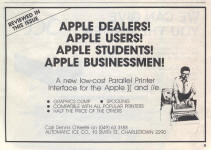 |
 |

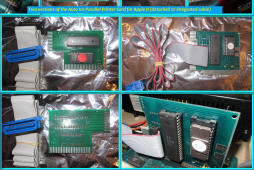
 |
1988 revision of Auto Ice Printer Card featuring Epson ImageWriter emulation |
[the Auto Ice Printer Card was also produced under license by Cardco of the USA - see HERE & HERE & HERE]
- VIDEO - Apple IIGS prints great with ImageWriter LQ drivers to Canon BJC-240 via the "Ice Cable" from Automatic Ice Co [~16 minutes]
- Canon BJC-240 - high quality samples of all five resident LQ fonts available in Epson LQ emulation mode (Applesoft BASIC printing via Epson APL card)
- Epson LQ-500 24 pin dot-matrix printer - LQ font samples with enhancements (double height/width, outline, shadow etc) & Apple-Vision graphics dump (Laser 128EX printing via Epson APL card) - high-resolution scan [37MB PDF file]

see also → AppleWorks TimeOut SuperFonts print sample on Epson LQ-500 (hi-res scan)
- VIDEO - Epson LQ-500 demonstration on Laser 128EX - Publish It!, Applesoft text & graphics printing, The New Print Shop, LQ-500 self-test [~23 minutes]
- Build you own 16K RAM card for Apple II with battery backup (November 1984 Electronics Australia)
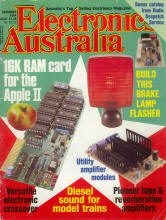

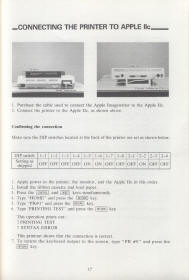
- VIDEO - Apple 1984 Holiday Demo - "Apple's Solution to the Christmas Present" (1984 Apple Computer)
- Apple IIc System Utilities Manual - 030-0874 (1983-84 Apple Computer) [22MB PDF file]
- Apple Mouse IIc User's Manual - 030-0961-A (1984 Apple Computer) [22MB PDF file]
- Original paperwork for Apple //c in Australia (ca. 1984-85) ⇩
Apple IIc International Packing List (Australia) - Z030-0846-A - high-resolution scan
Apple IIc Export Control Regulations (multi-lingual) - 030-1165 - high-resolution scan
Apple Monitor IIc Packing List (1984) - 030-0942-A - high-resolution scan {same as USA version}
Apple Monitor IIc Evaluation Report (1984) - 030-0952-A - high-resolution scan
Apple Computer 90 Day Limited Warranty (1983) - 030-0183-E REV 1183 - high-resolution scan
AppleMouse IIc Packing List (1984) - 030-0962-B - high-resolution scan
- Apple IIc (A2S4000Z/A2S4000B) with original red retail box (Australia/UK) - Powerhouse Museum Collection
- Apple IIc (A2S4000Z/A2S4000B) with European white retail box as purchased in Australia (1986)
- Canadian Apple IIc (A2S4000C) with original box, accessories, manuals & packing list (ca. 1984-85) - auction photos
- Apple IIc Canadian Keyboard Explanation / Explication du clavier canadien - instructions included with French Canadian IIc
- MousePaint for Apple IIe and IIc original floppy disk - 680-0239-A (1984-86 Apple Computer) - high-resolution scan
- AppleMouse IIe Packing List plus Australian & Global Warranties (1986 Apple Computer) - high-resolution scan
- International Supplement to the Apple IIc Interactive Owner's Guide (1984 Apple Computer UK)
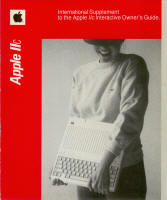
- Apple IIc Scribe User's Manual - Guide to Apple IIc - 030-0993-A (1984 Apple Computer) - high-resolution scan [231MB PDF file]

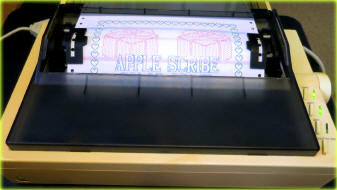
- Apple Scribe Printer - Packing List for Apple IIc Personal Computer - 030-1026-C (1984 Apple Computer)
- Apple Scribe Printer self test print sample (black ribbon) - high quality scan
- Apple Scribe Printer self test print sample (colour ribbon) - high quality scan
- VIDEO - Apple IIc printing to Scribe Thermal Transfer Printer (A9M0306) in colour and black & white (Print Shop, Print Magic) [~33 minutes]
- VIDEO - Airheart & Mario Bros colour screen dumps to Scribe Thermal Transfer Printer [~6 minutes]
Apple Scribe Printer — A9M0306 (115V) & A9M0306Z (220/240V) models
Did you know? Apple Scribe can print directly on thermal roll paper with no ribbon — watch demonstration HERE
- Monitor IIc User's Manual (Apple IIc) - 030-0941-A (1984 Apple Computer) - in English/French/Italian/Spanish/German
- Monitor IIc Stand Installation Instructions (Apple IIc) - 030-1016-A (1984 Apple Computer)
- Apple IIc brochure - "Apple announces a technological breakthrough of incredible proportions" (1984 USA/Canada) - high-resolution scan [26MB PDF file]
- "We make them as human as possible" - vintage Apple classroom poster with Apple IIe, IIc (PAL models) & Macintosh (original & XL) (ca. 1984-85)
- "A Peeled Apple IIe" poster (1985 Apple Computer Australia): Photo of original poster | Modern remake version (HQ digital download)
- Apple IIc & C64 Christmas 1984 promotion - Grace Bros department store catalogue (New South Wales) - high-resolution scan [43MB PDF file]
|
Scan of complete Apple IIc brochure (A2F4001) available from The Trailing Edge |
|||
- Christmas brochure - Twelve Holiday Software Suggestions For Your Apple Computer (Apple II & Mac) (1985 Apple Computer)
- French-Canadian Apple IIe & IIc brochure - «L'Apple II. Un beau passé. Un bel avenir. Un beau présent.» (1985 Apple Canada) (from Bibliothèque et Archives nationales du Québec)
- Apple IIc & IIe nationwide Christmas promotional blitz — outsized newspaper liftout (1985 Apple Computer Australia) [14MB PDF file] {each page of liftout approx. A3 size}
- The Apple IIe Keyboard poster (ca 1985-86 Apple Computer Australia) - A3 double-sided high-resolution scan
- PC86 Show Catalogue (June 1986 Melbourne) - complete scan [52MB PDF file] {with Apple Computer Australia, AUSOM, NetComm, Ozi Soft, Imagineering, Human Edge Software...}
- Apple IIc fold-out brochure - "There's a lot to be said for owning an Apple IIc" - A2F4009 (ca. 1986-87 USA) - high-resolution scan [21MB PDF file]
- Apple IIc New Features Update - 031-1030-A (1986 Apple Computer) - overview of new Apple IIc memory expansion model (A2S4100)
- IMAGINEERING Star Attractions software catalogue 1986 - Apple II, Mac, C64, IBM (productivity, games, education) - high-resolution scan [29MB PDF file]
- Review of Apple Writer II Version 2.0 - Sydney Morning Herald (August 1985)
- Apple II Communications Card (clone) - high-resolution scan of hardware (front & back)
- Apple II Serial Interface Card (clone) - high-resolution scan of hardware (front & back)
- Apple II Super Serial Card (A2B0044) - original box, packing list & hardware (1985 Apple Computer) - high-resolution scans [33MB PDF file]
- Apple II Memory Expansion Card (1MB RAM) - 670-0024-A (1985 Apple Computer) - high-resolution scan of hardware (front & back)
- Apple Joystick IIe and IIc (A2M2012 platinum model) - original box, instruction leaflet & hardware - high-resolution scans [28MB PDF file]
- RGB Monitors: Best of the Brightest - inCider (October 1985) - high-resolution scan [reviews of AppleColor Monitor 100, Princeton Graphic HX-9 & HX-12, Zenith ZVM-135, Amdek Color 500, Thomson CV36432SI, Sakata SC-200]
- Apple's Newest Hardware - UniDisk 3.5, ImageWriter II, Apple II Memory Expansion Card, Apple Personal Modem, ColorMonitor IIe & IIc / Assorted third-party hardware & software — The Apple II Review Fall 1985 (excerpts) - high-resolution scan [98MB PDF file]
- Apple Personal Modem 300/1200 (A9M0304) - original box, hardware, Packing List & Apple IIc Owner's Notice (1985 Apple Computer) - high-resolution scans
- Apple ColorMonitor Installation Manual (IIe/IIc) - 030-1224-A (1985 Apple Computer) - in English/French/German/Italian/Spanish [complete with Packing List, Warranty & Tell Apple Card]
- AppleColor Composite Monitor (aka ColorMonitor IIe/IIc) - discussion of international models and their peculiarities
- Platinum Apple IIe - USA & international versions compared
- Packing List for Apple IIe (platinum) - 030-1692-A (1991 Apple Computer / USA)
- Platinum Apple IIe introductory pamphlet - "What is the Apple IIe?" - LB1236 (1987-88 Apple Computer Australia) - high-resolution scan [5MB PDF file]
- Platinum Apple IIe Product Information Brochure - Overview & technical specifications (May 1988 Apple Computer Australia) - high-resolution scan [6MB PDF file]

[see HERE for John Sculley with Apple IIGS on front cover of "Family Computing" (Oct 1986) & HERE for "COMPUTE!" (Nov 1986) cover story "A Hands-On Look At The New Apple IIGS Computer"]
- New Apple IIgs Arrives - Open-Apple (October 1986) - high-resolution scan [15MB PDF file]
- Apple IIGS cover feature "Inside the Apple IIGS: A dramatic breakthrough for the Apple II range" - Apple User (October 1986) - full colour high-resolution scan [22MB PDF file]
- Introducing the Apple IIGS - magnificent 20 page launch brochure (1986 Apple Computer Australia) (archive.org)
- Introducing the Apple IIGS - 12 page launch brochure (1986 Apple Computer UK) & Apple UK Retail Price List Autumn 1986 - high-resolution scan [26MB PDF file]
- Apple IIGS cover story "A Mac Of Another Color?" plus assorted ads - December 1986 MacUser - high-resolution scan [21MB PDF file]
- Guess What - Apple IIGS brochure (1986 Apple Computer) - high quality scan
- "Apple Nel Paese Dei 16 Bit: Il Nuovo //GS" - Italian review by Marco Giacchetti (cover story) - Sperimentare con l'Elettronica e il Computer (May 1987) [4MB ZIP archive of JPG files]
- Guess What - Apple IIe brochure (1986 Apple Computer) - high-resolution scan [15MB PDF file]
- Guess What - Apple IIc brochure (1986 Apple Computer)
- Ask The Experts - Apple IIc, IIe, IIGS brochure (1986 Apple Computer) - high quality scan [a later 1987 brochure with Apple IIe (platinum)/IIc/IIGS is HERE]
- "The Apple IIGS - The Inside Story" in-store promotional poster 1 | 2 [depicted is a 1986 prototype Apple IIGS - similar units were bestowed on developers and journalists prior to the commercial launch e.g. see HERE]
- VIDEO - Genuine 1986 Apple IIGS promotional watch
- Apple IIGS promotional watch - 1200 dpi ultra high-resolution scans (front & back) [7MB ZIP archive of JPG files]
- Apple Card Application Brochure - depicting Apple IIe, IIc, IIGS & Mac Plus (1986 Apple Computer Australia / ANZ Bank) - high-resolution scan
- The Apple Collection Catalogue Australia (1987) - official merchandise, gifts & apparel (Apple II, IIGS, Macintosh) - high-resolution scan
- "Apple Australia" T-Shirt - high-resolution scan of rainbow colour logo [600dpi]
- T-Shirt with Apple IIGS music logo - official souvenir from Apple II Developers Conference 1989 Manly (Sydney) - high-resolution scan [300dpi]
Win an APPLE IIGS! — January 1987 Your Computer (Australia)
- The Australian Apple Educational Software Directory 1987 (187 pages) (1986-87 Apple Computer Australia) - covers Apple II & Macintosh - high quality scan [88MB PDF file] {see also 1985 edition}
- Using Computers in the Primary School by Rosemary Guttormsen (1987 Apple Computer Australia) - covers Apple II & Macintosh - 110 pages complete scan [39MB PDF file]
- The Apple Australia Special Education Resource Directory 1988 - high-resolution scan [22MB PDF file]
- Questor Product Catalogue for Apple IIGS, IIc & IIe (1987) - GS/Paint, ThunderScan, SuperSonic Stereo Card etc - high-resolution scan [36MB PDF file]
"With an unprecedented $500,000 television campaign, Questor Entertainment Products has arrived. Launched by Imagineering, the new company plans to create a high profile for its range of entertainment software. With exclusive access to products from some of the world's top software houses like Activision, Micro Illusions, Mindscape and MicroProse, Questor seems set to make quite a splash. Although taking over the entire range of Imagineering games, which is comprehensive, national sales manager Alan Bowman promises to seek out and deliver "all the hottest new titles". — Sydney Morning Herald (October 19, 1987)
- "In ten years it's learnt a lot about people" - Apple IIGS magazine advertisement from Australian Geographic (1988) - 600dpi scan [19MB PDF file]
- Apple II Retail Price List for Australia (IIe, IIc, IIGS) - as published in Applecations (April 1987) [see HERE for peripherals pricing - IIe/IIc Mouse, Joystick etc]
- Apple IIe & Apple IIc Systems Authorised Retail Price List - Apple Computer Australia (September 1985)
- Comprehensive Price List for Apple IIe & IIGS computer systems, peripherals, software & books - Central Logic Systems, Melbourne (November 1988) - high-resolution scan
- Apple Product List (Apple IIe, IIc, IIGS, Macs) & 12-month Apple Warranty Plus (1988-89 Apple Computer Australia) - high-resolution scan
- The Apple IIGS vs The Competition (Mac Plus, Amiga, Atari 1040ST, IBM PC) - December 1986 A+ Magazine
- IIGS Update - Using the Apple IIGS Toolbox & New Products for Apple IIGS - December 1986 A+ Magazine
- German official retail pricing for Apple IIe & IIc systems, accessories & software - 'CC Seller' Aktuelle Preise PC/Bürocomputer (June 1986) [13MB PDF file] {www.cc-computerarchiv.de}
see also → Apple Computer GmbH colour brochure - Preisliste Apple IIc, IIe, Macintosh, Lisa (November 1984) & Apple-Preisliste Apple IIe, IIc, Mac (November 1985) - Hardware, Software, Peripherie, Zubehör
- Pandasoft (Berlin) Apple II/II+/IIe/IIc Katalog (Spring 1986) (archive.org)
- Installationshandbuch Apple IIGS - D-030-1294-A (1986 Apple Computer GmbH) - complete high-resolution scan [German edition of "Setting Up Your Apple IIGS"]
- Apple Live - Sonderheft zum neuen Apple IIGS (September 1986 - Apple Computer GmbH) - high-resolution scan [24MB PDF file] {27-page German Apple IIGS brochure with software/hardware compatibility tables}
- Apple IIGS X-Basic Handbuch (1987) - 100 pages complete scan [31MB PDF file] {German manual for X-Basic v1.0 - Applesoft extensions for Apple IIGS}
- Applied Engineering PC Transporter - instructions in German [TeachText files in ProDOS disk image - viewable in CiderPress]
- Apple IIGS advertisement United Kingdom - April 1987 Apple User Magazine - new high-resolution scan [60MB PDF file]
- Apple IIGS fact sheet from Apple Computer UK - "The powerful new generation Apple II" (double-sided page) - new high-resolution scan [Italian version "Apple IIGS - Il più potente Apple II" (Sep 1986) is HERE]
- Apple IIGS advertisement "The Parthenon" (USA) - Sports Illustrated (October 1987) - high-resolution scan [16MB PDF file]
- Startup screen of factory-original ROM 0 Apple IIGS (Woz Limited Edition) [NB: GS units manufactured before 25th week of 1987 came with ROM 0 originally but the vast majority of owners took advantage of Apple's free upgrade to ROM 01. Thus ROM 0 is rarely seen.]
- Apple IIGS Woz Limited Edition (USA) with Packing List, Certificate of Authenticity & Steve Wozniak letter - auction photos
- Apple IIGS Woz Limited Edition original box for Australia (1986) - high-resolution photos
- MouseDesk 2.0 original 3.5" floppy disk for Apple IIGS (1986 Apple / Version Soft) - high-resolution scan (front & back)
- Mouse Desk 2.0 User's Manual (English) - Z030-1388-A (1986 Apple Computer) - complete scan [46MB PDF file]
- Your Apple Tour of the Apple IIGS original 3.5" floppy disk - 680-5010-A (first version) (1986 Apple Computer) - high-resolution scan (front & back)
- ProDOS 16 Exerciser & Apple II SCSI Card Utilities original 3.5" floppy disks (1987 Apple Computer) - high-resolution scans (front & back)
- Apple II System Disk Version 3.1 for the Apple IIe, IIc, IIc Plus original 3.5" floppy disk - 680-5017-B (1988 Apple Computer) - high-resolution scan (front & back)
- The New Apple IIc Plus - Open-Apple (November 1988) - high-resolution scan
- Apple IIc Plus Packing List - 030-1333-B (1989 Apple Computer)
American models of the Apple IIe & IIc — as assembled in USA (Dallas, Fremont) & Singapore
- Apple Access II - A2D4503/A (1986 Apple Computer) - version updated for Apple IIGS - original box, disks & packing list scan
- Apple 5.25 Controller for the Apple II original box (A9C0320) - high-resolution scan [15MB PDF file]
- Apple Hard Disk 20SC Owner's Guide - 030-3138-A (1986 Apple Computer) - high quality scan
- Apple SCSI Cable System manual - 030-0955-B (1987 Apple Computer) - high quality scan
- Apple External Hard Disks 20SC 40SC 80SC 160SC brochure - M2234/A (1989 Apple Computer) - high-resolution scan
"The Journey Never Ends" poster (ca. 1990)
Apple IIe | Apple IIGS with Hard Disk 80SC | Mac LC
Vulcan by Applied Engineering & InnerDrive by Applied Ingenuity
- A Close Encounter with an Apple IIGS Power User in Singapore - AUSOM News July 1990
- LocalTalk Cable System Owner's Guide - 030-0043-A (1987 Apple Computer) - high quality scan
- "Apple Pays Half" - rare Apple IIGS advertising postcard with cash rebate offer (1987 Apple Computer) - high-resolution scan
- Apple Monochrome Monitor (A2M6016X) for Apple IIc or IIGS original box - high-resolution photos [18MB PDF file] {see also Tell Apple Card & Australian Warranty insert}
- AppleColor RGB Monitor Packing List (USA) - 030-3105-A (1986 Apple Computer)
- AppleColor RGB Monitor Packing List & Warranty (Australia) - X030-3105-A & X030-0967 (1986 Apple Computer Australia) - high-resolution scan
- AppleColor RGB Monitor Product Information Sheet (1990 Apple Computer Australia) (scanned by N. Ridley-Smith)
- Apple II
CRT Monitors - the Anti-Glare Experience (USA & international models compared)

- Apple IIGS ROM 3 Packing List (USA) - 030-1615-A (June 1989)
- Apple IIGS ROM 3 Packing List (Australia) - X030-1615-A (July 1989)
- Apple IIGS Packing List (United Kingdom) - B030-1295-A / AppleColor RGB Monitor Packing List for Europe (EN/FR/DE) - Z030-3105-A
|
AppleColor RGB Monitor (A2M6014Z - 220V model) — Some variants may be ANTI-GLARE unlike the USA/AUS models
NB: This European model (220V) works best with GS
set for 60Hz refresh - see
HERE
Same applies to
240V model though 50Hz is mandatory with PAL version Apple II
Video Overlay Card - see
HERE
VOC Populi
from Brutal Deluxe displays the state and
capabilities of a Video Overlay Card (and distinguishes PAL vs NTSC
versions) |
Apple IIGS hidden menu to select 60 or 50Hz video (RGB & composite)
Every Apple IIGS - regardless of where it was sold - outputs NTSC video via the RCA composite jack (fixed 3.58MHz colour burst with adjustable 60/50Hz vertical frequency). A little known PAL conversion kit was available in Australia. |
||||
|
AppleColor RGB Monitor (A2M6014X - 240V model) → Australian vs US models - HOW DO THEY DIFFER? Left: Made in Japan - November 1986 Right: Made in Singapore - February 1991 |
|||||
 |
|
|
1988 Apple II Winter Promotion (Australia) ][+ trade up to Platinum IIe & discount pricing on IIe & 256K IIGS Starter System |
System 4.0 as bundled with Apple IIGS (A2S6010) from late 1988 (NB: Some A2S6010 models predate System 4.0 and even - in their factory-original state - ROM 01 - e.g. see HERE)
|
Apple CD-ROM Explorer for AppleCD SC (1988) |
||||||
|
Apple IIGS brochure with Video Overlay Card & AppleCD SC (April 1989) |
||||||
→ see HERE for "Apple IIGS Plus - The Future" (1988 prototype with 7.8MHz clock speed & four new super hi-res graphic modes...) — article from National US GS Users Group BBS republished in "Apple-Bug" (July 1988)
The Second Sight VGA Display Interface adds SVGA capabilities to any Apple IIe or IIGS with resolutions up to 1024x768. Cogito from Brutal Deluxe Software (IIGS port of award-winning French game) supports this card with 640x400 graphics in 256 colours.
"The Apple IIGS is the reincarnation of the Apple II spirit... We should not try to artificially constrain this product by positioning it as an educational computer or a home computer... It could be an interesting small-business type of machine. My idea of positioning tends to be simplistic: It's the high-end-technology Apple II... We are already working on the successor to this machine..." — Jean-Louis Gassée (Apple Vice-President for Product Development) — inCider (October 1986)
|
|
|
||
|
|
- A First Look at Apple's Video Overlay Card - inCider (May 1989) - high-resolution scan [37MB PDF file]
- Reviews of HyperStudio, Apple II Video Overlay Card, Vulcan Drive, World GeoGraph, Great Western Shootout etc - The Apple IIGS Buyer's Guide Fall 1989 (excerpts) - high-resolution scan
- AppleTalk Network User's Guide for the Apple IIGS (bundled with System 5.0) - 030-1633-A (1989 Apple Computer) - high quality scan
- "Just Add Water" - Apple's official guide to setting up an Apple User Group (1989 Apple Computer) - high quality scan [181MB PDF file]
- Apple Software Update Program brochure (included with ROM 3 Apple IIGS) - 030-3400-A (1989 Apple Computer) - high-resolution scan
- System Saver IIGS Instructions & photos of original box (1988 Kensington Microware)
- Maclagan Wright & Associates "Digicard Classroom Network" featured in Open Apple (November 1986) {apple2online.com} & ads from Your Computer (AU) (1984) & APC (1982)
[see HERE for photo of Digicard 4MB Apple IIGS Memory Expansion Board]
- Digicard Classroom Network - official specifications & U.S. pricing (December 1992)
- The Computer Shop Pty Ltd 1985 Price List (AU) - Apple II / Macintosh / IBM PC - systems pricing, hardware, software, books, Digicard & Corvus networking - 16 pages high-resolution scan [14MB PDF file]
- Instruction Manual - Digicard 80 Column Card for Apple II / II Plus (Maclagan Wright & Associates) [11MB PDF file]
- Instruction Manual - Digicard 64K Extended 80 Column RGB Card for Apple IIe (Maclagan Wright & Associates)
- VIDEO - Apple IIe RGB graphics demo on Kaga/Taxan monitor with Digicard 64K 80 column RGB card → read a review of Kaga/Taxan RGB Vision-II monitor HERE
→ See also PHOTO: Apple II Europlus with Maclagan Wright & Associates PAL Encoder Card - courtesy S. Johnson
- VIDEO - Apple IIc PAL Modulator A2M4023 high quality colour video demonstration
- VIDEO - Apple IIc trial run with "Le Chat Mauve" RGB SCART adapter A2M4020F
- VIDEO - Wings of Fury success on Apple IIc with "Le Chat Mauve" RGB SCART adapter A2M4020F
- Screenshots - PAL Apple IIc direct to 240V AppleColor Composite Monitor IIe gives colour ["PAL" Apple //c is something of a misnomer as video output actually conforms to "International NTSC-50"]
→ See also 240V ColorMonitor IIc — A2M4043X & 240V AppleColor Composite Monitor — //c matching model A2M6020X
PHOTO: Oscilloscope waveform - colour burst of European Apple IIc - courtesy M. Orlandi
- Australian advertisement for Apple IIc colour system - 1987 Grace Bros department store (New South Wales) @oldshopsoz
- VIDEO - 50Hz NTSC colour on 220/240V 'International NTSC' Platinum Apple IIe (Star Blazer, Elite, Prince of Persia, Apple 1984 Holiday Christmas Demo, Boulder Dash II)
- VIDEO - Apple II Europlus PAL Colour Encoder Card A2B0017 high quality video capture [HERE are downloadable screenshots] → see also Apple II PAL Card (modern 2023 replica)
→ See also PHOTOS: Apple IIe PAL Colour Card (A2A005) for the Platinum Apple IIe 'International NTSC'
- Snapshot Shuttle manual (multitasking system for Apple II+ & IIe with Snapshot //e card) (1984 Dark Star Systems) → read a review HERE
- Snapshot Copykit manual (program backup system for Apple II+ & IIe with Snapshot //e card) (1984 Dark Star Systems)
- Snapshot Printerrupt manual (screen dump utility for Apple II+ & IIe with Snapshot //e card) (1984 Dark Star Systems)
- Snapshot IIe Card Installation Procedures for Apple II+ & IIe (1985 Dark Star Systems) [good photo of Snapshot IIe card is HERE & for the ][+ clip/chip see HERE]
- VIDEO - Apple IIe multitasking demo - Snapshot Shuttle running FOUR programs at once
- The Snapshot Shell manual (create custom machine-code routines for Snapshot //e card) (1985 Dark Star Systems)
- Dark Star Global Village Newsletter No 2 - Dark Star Goes Down Under, Snapshot system, RAM cards (UK 1986)
%201986.jpg)
- Update II Newsletter & Catalogue Vol 4 No 1 - March 1988, MGA MicroSystems (UK)
- MicroProse game catalogue - F-15 Strike Eagle, Silent Service etc (UK 1987)
- Apple II catalogues & price lists - games (Ultima series etc), software, hardware (1988 MGA MicroSystems, UK) [41MB PDF file]
- VIDEO - Apple IIc Myer special - 1986 Australian TV commercial [YouTube video by 'jarooosa']
AutoDuel, Impossible MIssion, Summer Games II original boxes with Myer price stickers
- AutoDuel Manual, New Driver's Guide & Apple II Player Reference Card (1985 Origin Systems) - complete scan [14MB PDF file]
- Australian Apple IIc ad & reviews of SSG games Europe Ablaze, Reach For The Stars, Carriers at War - The Australian Apple Review (Feb 1986) © Gareth Powell / Apple Pugetsound Program Library Exchange
|
|
|||
|
"Superior Computer Games from Strategic Studies Group" (August 1987 Applecations)
|
[HERE is a 1985 television interview with Ian Trout and Roger Keating - founders of Strategic Studies Group. See also Strategic Simulations Inc. Summer 1987 Catalog with games by Roger Keating et al.]
- Apple User (UK) Magazine May 1987 (complete) - Dissecting MultiScribe, A Mouse Meets Pascal, etc. - new improved scan [229MB PDF file]
- Apple User (UK) Magazine September 1987 (complete) - Airheart, Stationfall, Battle Cruiser, Shard of Spring, RAM cards (GSRAM Plus, PlusRAM GS8, Z-RAM) etc. - high quality scan [254MB PDF file]
- Apple User (UK) magazine - selected news, reviews, tutorials, ads — Feb 1987 - Aug 1987 [212MB PDF file] | Jan 1988 - May 1988 [297MB PDF file]
- Airheart manual (1986 Broderbund) - new scan in GLORIOUS COLOUR
- Airheart manual (1986 Broderbund) - greyscale scan - plus review from Apple User (UK) magazine (September 1987)
- Airheart Product Fact Sheet for Apple II (1986 Broderbund)
- Print Shop Lover's Utility Set manual (1986 Big Red Apple Club)
- PrintMaster User's Guide - 2nd edition (1986 Unison World)
- PrintMaster Art Gallery I - User's Guide (1985 Unison World)
- PrintPower manual for Apple II (1987 Hi Tech Expressions)
- Print Magic Instruction Manual for Apple II (1987 Epyx)
- Print Magic Graphics Reference Card for Apple II (1987 Epyx)
- Personal Newsletter manual for Apple IIe, IIc, IIGS (1987 Softsync)
- Print Shop Lovers' Utility Set IIGS manual (1988 Big Red Computer Club)
- Big Red Computer Club Apple IIGS Catalog 1990 (public domain & shareware)
- Jumbled Jungle manual for Apple II (1988 Pelican Software)
- Drug Alert! original Apple II box & disk (1987 Learning Well) - high-resolution scan
- Britannica Software Catalog for Apple II, IBM, C64 (1988) - high-resolution scan
- World GeoGraph User's Guide plus original box & disks for Apple IIGS (1988 MECC)
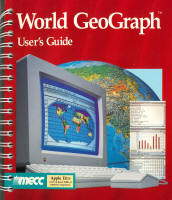
- Shanghai for Apple IIGS original box & disk (1986 Activision) - high-resolution scan [15MB PDF file]
- Gauntlet for Apple IIGS original box & disk (1988 Mindscape) - high-resolution scan [27MB PDF file]
- Street Sports Soccer manual & Apple IIGS box (1988 Epyx) - colour scan
- Writer's Choice Elite for Apple IIGS original box & contents (1987 Activision) - high-resolution scan
- The Children's Writing & Publishing Center original Apple II box, disk (3.5"), reference card & catalog (1988 The Learning Company) - high-resolution scans
- DeluxeWrite for Apple IIGS original box & disks (1988 Electronic Arts) - colour scan

- Zany Golf & The Immortal original boxes (1988 & 1990 Electronic Arts) - colour scan
- Life & Death original Apple IIGS box & disk scans (1989 The Software Toolworks) - high-resolution scan [10MB PDF file]
- Talking U.S.A. Map original Apple IIGS box & disk scans (1989 Orange Cherry Software) [14MB PDF file]
- Crystal Quest original Apple IIGS box & disk scans (1989 Casady & Greene)
- Revolution '76 original Apple IIGS box & disk scans (1989 Britannica Software) - high-resolution scan [16MB PDF file]
- Out of this World original Apple IIGS box & disk scans (1992 Interplay)
- Pointless (TrueType fonts) original Apple IIGS box & disk scans (1992 WestCode Software) - high-resolution scan [21MB PDF file]
- TypeWest User Manual & original disks - collection of 40 TrueType fonts for Apple IIGS & Mac (1993 WestCode Software) - complete scan [21MB PDF file]
- FingerPrint Plus Screen Dump Printer Interface Card manual for Apple II+ & IIe (1988)
- VIDEO - Skyfox screen dump demo FingerPrint Plus to Apple Dot Matrix Printer [~8 minutes]
- The Amazing New Apple IIGS - The Australian Apple Review (September 1986 - Vol 3 No 8) © Gareth Powell / A.P.P.L.E.
- Article on Australian debut of Apple IIGS & Apple Australia data sheet IIe to IIGS Upgrade Kit - Applecations (Oct 1986 & Jan/Feb 1987)
[NB: The original IIGS has 256K on-board RAM, however a non-expandable 256K RAM card (A2A6008 / A661-0256) came standard with the Australian Apple IIGS from the very beginning, for a total of 512K - see HERE, HERE & HERE. A discounted 256K "Starter System" (lacking RAM card) was made available during the Australian 1988 Apple II Winter Promotion. From March 1988, Apple began including free, with every system sold in the USA, the Apple IIGS Memory Expansion Card (A2B6002) with 256K fitted (user-expandable to 1MB), ahead of the arrival of System 4.0 (GS/OS) which requires minimum 512K - see HERE & also pg 24 of The Apple IIGS Buyer's Guide (Winter 1990). The revised ROM 3 Apple IIGS, launched late 1989, has 1.128MB RAM incorporated on the motherboard.]
|
|
|
||
|
"People buy Apple II computers for a number of reasons" Excerpts from Apple IIe, IIc, IIGS brochure (January 1987 - USA)
|
- Applecations magazine (Apple Users' Group Sydney) - selected news, reviews, tips, tutorials — Aug 1986 - July 1990 [134MB PDF file] | Nov 1990 - May 1992 [125MB PDF file]
- A.C.T. Apple Newsletter (Canberra) Apple II compilation (August 1988 - December 1992) - 244 pages [140MB PDF file]
- A+ Magazine - cover story on The IIGS Upgrade Kit (February 1987)
- Getting Down With The GS (review) & Automatic Ice Apple II Modem ad - Your Computer (AU) June 1987 (scanned by J. Barr-Hyde) [see also Applecations magazine collection - 1982 onwards]
|
|
|
||
|
"Hire an experienced business partner" from 12 page British Apple IIGS brochure |
- Automatic Ice Co. Intelligent Modem Card for Apple II & IIe manual - high-resolution scan [19MB PDF file]
- Automatic Ice Co. Intelligent Modem Card for Apple II - high quality photos (front & back)
- Review of Sprite Graphics Card & ads for Automatic Ice Apple II Modem, Essential Data Duplicator III, Lingo 128 clone - Your Computer (AU) February 1985 (scanned by ChickenMan)
- Sprite Graphics Card for Apple II by Australian Video Presentations (1984) - high-resolution photos
- Apple Modem 1200 Viatel bundle for Apple IIc & Mac by Apple Computer Australia & NetComm (Videotex II / Macvideotex) - Your Computer (AU) October 1985 → see also Apple In/Modem Starter Pack HERE
 |
||
|
|
Apple II In/Modem
from
NetComm / Apple Computer Australia & Videotex II software |
|
|
||
|
An earlier version of the NetComm Apple II modem (June/July 1984 Electronics Australia & AAR) |
Chip Checker and Sprite Graphics Card from Australian Video Presentations (Sep 1984 Electronics Australia) |
 |
||
|
Apple Modem 1200 (external) made by NetComm (1987 APC Communications Special) Model # A9M0301-Z (supporting CCITT V21, V23 mode 2) → photos HERE |
Apple Personal Modem (A9M0334 - USA model) Australian models of the Apple Personal Modem & Apple Personal Modem Plus were made by NetComm - see HERE & HERE Apple Data Modem 2400 (G5432) for the North American market was "assembled in Australia" by NetComm |
The NetComm Program for Apple IIGS
- Apple Personal Modem for Apple II & Macintosh (APM10 / A9U0002 Australian model) - auction photos → read description in The Australian Apple Review v4 n5 (1987)
- Apple Personal Modem Plus Owner's Manual (APM40 / A9U0004 Australian model) for Apple II, III & Macintosh (1988 Apple Computer Australia / NetComm Pty Ltd) - complete scan [30MB PDF file]
|
|
 |
|
|
Apple Personal Modem Plus (A9U0004 - Australian model) (supporting CCITT V21, V22, V23 & Bell 103, 212) Stackable with Apple 3.5 and UniDisk 3.5 drives |
- NetComm AutoModem Family - User & Reference Manual Version 1 (July 1987) - complete scan [18MB PDF file]
- NetComm Pocket Modem advertisement (Apple IIGS, Mac, IBM PC etc) - Your Computer (AU) February 1988 (archive.org)
- Maestro ad for external Supermodem (IIc compatible) & Apple II "In Modem" card - Electronics Australia (December 1986)
Maestro Australia
Apple II modem card
- Maestro ad for self-contained Hayes compatible Apple II modem card - Applecations (December 1987) → photos of Maestro "SuperCard" modem: 1 | 2
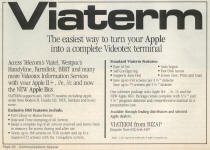
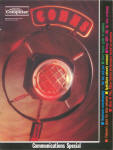
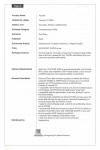 |
||
|
HI TECH C Compiler for Apple IIGS (October 1987 Electronics Australia) |
Viaterm Videotex software for Apple II (1987 APC Communications Special & The Apple IIgs Software Directory) |
- Viatel Directory and Magazine Volume 4 - 1986 (Telecom Australia) - complete scan "A good first year for Viatel..."
- Welcome to VIATEL Starter Kit (1988 Telecom Australia) - complete scan
- List of GBBS Pro (Apple II) bulletin board systems in the USA (1987)
- 'Inside AE' bulletins - TransWarp GS, Ram Express, Sonic Blaster, PC Transporter (Oct & Nov 1988) & letters to me from Broderbund and Springboard (1987-88)
- Springboard Publisher big fold-out brochure for Apple II (1987 Springboard Software) - high-resolution scan
- 'LEARNING GEOPUBLISH' chapter from Getting Started with geoPublish manual for Apple II (1988 Berkeley Softworks) [28MB PDF file]
- geoPublish Utilities manual for Apple II (1988 Berkeley Softworks) - covering Graphics Grabber, Text Grabber, geoPubLaser [39MB PDF file]
- geoPublish Clip Art Reference for Apple II (1988 Berkeley Softworks / Unison World / Kyocera Unison)
- Sierra New Release Schedule & Catalog - King's Quest, Police Quest, Thexder, Leisure Suit Larry, Black Cauldron etc - downloaded from Sierra's BBS (Jan 1988)
- VIDEO - AppleWorks 1.1 running on my Pravetz 8M Apple II+ clone in 80 column mode
 |
||
|
Videx AppleWorks Modify Plus on the Pravetz 8M |
Plus-Works - AppleWorks enhancer & clone compatibility e.g. Dick Smith CAT & Laser 3000 (March 1986 AUSOM News) |
- VIDEO - Pravetz 8M FLASHING and INVERSE text in 40 column mode (no effect on lowercase)
- VIDEO - Pravetz 8M FLASHING and INVERSE text in 40 column CYRILLIC mode
- VIDEO - Shining Super Mouse with two buttons for Apple IIc, Laser 128, etc (GEOS, Mouse Desk (pre-release version), MousePaint, Arkanoid, Softdisk, etc) [~25 minutes]
 |
| Information on Mouse Desk and Apple IIGS System Software releases |
- Reviews of Catalyst 3.0 & Mouse Desk 1.0 - "Making the Apple II Emulate Macintosh" - InfoWorld (March 1986) [Mouse Desk v1.1 original box HERE]
- VIDEO - Edmark TouchWindow touchscreen tablet on Apple IIGS with HyperStudio, Tutor-Tech & Blazing Paddles [~12 minutes]
- TouchWindow Owner's Manual for Apple II - touch screen & graphics tablet (1991 Edmark Corporation)
-
Tutor-Tech
brochure for Apple IIe, IIc, IIGS - Hypermedia, Authoring and Multimedia (1990
Techware Corporation) - high-resolution scan →
see also
Tutor-Tech original box & contents

- HyperScreen manual for Apple IIe, IIc, IIc Plus, IIGS (1990 Scholastic) - "Hypermedia power for Apple II" - complete scan [99MB PDF file]
- The Scholastic Guide to Classroom Multimedia by Fred D'Ignazio (1989) [17MB PDF file] [covering HyperScreen, Microzine, Slide Shop, SuperPrint II, Talking Text Writer, Apple II Video Overlay Card, ComputerEyes, ThunderScan & more]
- VIDEO - MIDI keyboard recording demonstration on Apple IIGS with Sonus MIDI card & Diversi-Tune [~21 minutes]
- VIDEO - Diversi-Tune tweaking MIDI tempo/key/instrument on-the-fly [~9 minutes]
- Diversi-Tune Catalog - Songs Disks etc for Apple IIgs (1990 Diversified Software Research)
- Sonus Personal Musician (MIDI Recording) Apple II Owner's Manual (1987)
- Aesop's Fables original Apple IIGS box & disks scans (1987-88 Unicorn Software)
- Aesop's Fables Manual for Apple IIGS (1988 Unicorn Software)
- Construction project: MIDI on the Apple 2 - Electronics Australia (November 1988) [PDF available for purchase]
- VIDEO - Sampler of Phasor 12 voice sound card with Ultima V / AE Phasor software / French Touch Test Lab #2 [~15 minutes]
- Adaptive Firmware Card Operator's Manual and Application Guide for Apple IIGS (659 pages) (1988 Don Johnston Developmental Equipment)
- Epson Application Notes for Apple II (AppleWorks) & IBM PC (dBASE III, Microsoft Word etc) (1988 Epson America)
- Epson New Apple II Intelligent Parallel Interface #8133 (APL C) User's Manual (1985 Epson Corporation) - new improved scan [20MB PDF file]
- Epson GX-80 Printer Interface Cartridge #8699 for Apple IIc Operating Manual (1985 Epson Corporation) [47MB PDF file] {also applicable to Epson LX-90}
- Epson GX-80 Setting Up Instructions (1985-86 Epson Corporation)
- Apple IIc Interface Cartridge for Star NL-10 Users Manual (1986 Star Micronics) [52MB PDF file]
Quick File // for Apple //e — original box scans
"In 1981, I wrote, and Apple published, Quick File for the Apple II and ///, a predecessor of the AppleWorks data base..." — Rupert Lissner (mastermind behind AppleWorks & /// EZ Pieces) — Apple-Bug (February 1990)
- /// E-Z Pieces manual for Apple III (1983 Haba Systems) - 258 pages complete scan [54MB PDF file] {Three Easy Pieces for Apple III is equivalent to AppleWorks on Apple II}
- AppleWorks 1.0 brochure "A single package, A total solution" (1984 Apple Computer)
- AppleWorks 1.3 - photos of original box & contents (1985 Apple Computer)
- AppleWorks Quick Reference Guide - softdox by The College of Education BBS - University of Minnesota
- AppleWorks 2.0 original box, disks & packing list (1986-87 Apple Computer) - new high-resolution scan

- AppleWorks Tutorial (1986 Apple Computer) {for AW 2.0} - complete scan [61MB PDF file]
- AppleWorks 2.0 Quick Reference Card (1986 Apple Computer) - high-resolution scan
- AppleWorks 2.0 brochure "How over 500,000 people take a shortcut to work" (1986 Apple Computer)
- Apple IIe wins 1985 Micro StoreBoard Top Selling Personal Computer Award & AppleWorks ranked #1 best seller - Your Computer (AU) April 1986/June 1985 "... AppleWorks is the only program to outsell Lotus in the US, and here in Australia it's reported to be selling more than 1000 copies a month"
- TimeOut SuperFonts (for AppleWorks) original box, disks & unpeeled Beagle sticker (1987 Beagle Bros) - high-resolution scan [28MB PDF file]
- Cartão De Referência TotalWorks - reference card for Brazilian Portuguese adaptation of AppleWorks (scanned by Clovis FrioTK)
- AppleWorks GS original box rear cover scan (1988 Claris Corporation)
- Claris AppleWorks 3.0 original box & quick reference card (1989) - colour scan
- StoryWorks manual for Apple II (1989 Teacher's Idea and Information Exchange) - create stacks in AppleWorks with menus, hypertext and sound effects [15MB PDF file]
- AppleWorks 4.0 original box & disks (1993 Quality Computers) - high quality scan
AppleWorks 5.0 original box (1994 Quality Computers)
- Apple Extended Keyboard II Owner's Guide / Manual (1989)
- Copy II Plus Version 9 original box & disks (1989 Central Point Software) - high-resolution scan [35MB PDF file]
- Roger Wagner Product Catalog (1989) - new improved scan - plus cover of The Graphic Exchange manual
- A+ Magazine - cover story on TransWarp GS, "Classic" TransWarp, Zip Chip, RocketChip (April 1989)
- Reviews of the Ice-Cable ("Epson to ImageWriter Converter") & FingerPrint GSi - A.C.T. Apple Newsletter (July 1989) [print samples from Ice-Cable (revised model) to Canon BJC-240 (Epson LQ compatible) are HERE]
- Review of the ICECABLE (early model) - Apple Bug (May 1989) - the newsletter of Apple-Q Inc. (scanned by J. Scott) "... Epson compatible printers mimic the Imagewriter almost perfectly, even generating the Apple MouseText characters"
- VIDEO - Apple IIGS successfully prints MouseText graphics to Epson LX-800 via the Ice-Cable [hi-res scan of Epson LX-800 MouseText printout is HERE]
- The IceCable manual for Apple II & Macintosh (ca. 1990 Automatic Ice Co) - complete scan [11MB PDF file]
- Xetec Superwriter 924 sealed original box - ImageWriter emulator for 9 & 24-pin parallel printers on Laser 128, Apple II & Mac - high-resolution scan
- Epson LX-800 9 pin dot-matrix printer - NLQ & Draft font samples with enhancements (emphasized, underline, italic etc) - high-resolution scan [4MB PDF file]
- Two Series Software Catalog - very comprehensive and informative listing of Apple II software & peripherals (202 pages) (Spring 1989) - new improved scan [154MB PDF file] → OCR text only available HERE
- Applied Engineering Australian pricelist - Nemo Computer Systems Dec 1989 (Perth, AU)
- CUE SoftSwap Spring 1990 Catalog for Apple II, Mac, MS-DOS - educational software, video & teacher materials [FrEdBase, FrEdWriter, AppleWorks, Telecommunications, Bilingual, CourseWare etc.]
- Applied Engineering High-Density 3.5" Drive for Apple II Instructions (French) & AE 800K 3.5" Drive take-apart photos
[The 800K drive was newly purchased by me in early 1990 and is completely unmodified. It sports Sony MP-F17W-5PF 1.44MB mechanism but HD support is disabled (AE did offer an upgrade to activate HD - for a fee). Even in this 800K configuration the drive detects the HD notch on 1.44MB disks and refuses to work with them unless the notch is covered up making them appear as 800K. The Apple 3.5 Drive doesn't care about this notch and treats all HD disks as 800K. In practice, I've found the AE drive to be somewhat more robust than the Apple 3.5 for reading marginal disks. OTOH, the AE is noisier in operation. The AE handles copy-protected IIGS disks just fine and supports 4:1 and 2:1 interleaving. Its dual-colour LED flashes green when reading and red when writing.]
- Softdisk for Apple II scanned original covers - issues 98-104 (1989-1990)
- Brother M-1324 Dot Matrix Printer Owner's Manual excerpts - Specifications & LQ font samples (1990 Brother Industries Ltd)
- The New Print Shop Reference Manual & original box scans (1990 Broderbund)
- The Official New Print Shop Handbook for IBM PC & Apple II (1990 Bantam Computer Books) - 300 pages complete scan [65MB PDF file]
- RepairWorks manual (1990 Q Labs) - utility to repair damaged AppleWorks files
- Talk is Cheap 3.1 manual (1990 Q Labs) - powerful telecommunications package [TIC v3.31 disk image is HERE]
- The UltraMacros Primer: How to Use TimeOut UltraMacros - 245 page book (1990 Mark Munz / National AppleWorks Users Group) [131MB PDF file]
- Letter to me from the executive offices of John Sculley (Apple CEO) pledging continued support for the Apple II (February 1990)
- John Sculley speech in Sydney, Launch of Apple II High-Speed SCSI Card & Apple Extended Keyboard II - The Australasian Apple Magazine Aug/Sep 1990
Friends or Foes? Apple IIGS vs Mac LC
(June 1991 inCider/A+)
- Sound beginning for a well-spoken 'pizza box' - launch of Mac LC, Classic & IIsi with Steve Wozniak & John Sculley - Sydney Morning Herald (October 1990)
- Apple's Guide to Classroom Computing - in-depth advertising insert / Glossy 8 page ad for Mac Classic, LC & IIsi in education / File Transfer: Apple II to Mac And Back - inCider/A+ (March 1991) [130MB PDF file]
- VIDEO - TransWarp II accelerator on Apple //e [~7 minutes]
- VIDEO - Zip Chip 8MHz accelerator on Apple IIe [~19 minutes]
- VIDEO - FASTChip //e 16.6MHz accelerator on Apple //e [~12 minutes]
- Zip GS accelerators - GEnie RoundTable Real Time Conference with Tony Vece of Zip Technologies (November 1990) [see also ZipGS control software FAQ]
- TransWarp GS - photos of original box, hardware, startup logo & control panel
- Review of TrackStar (Apple II compatibility card for IBM PC) - Sydney Morning Herald (February 1987)
- PC Transporter (MS-DOS compatibility card for Apple II) - photos of original box, hardware, system disks & booting MS-DOS [PC Transporter System Disk v2.0.5 800K image is HERE]
The Jet (1985 SubLOGIC) — demo sequence on PC Transporter (Apple IIGS)
- VIDEO - Applied Engineering PC Transporter Installation Video - high quality original VHS transfer [~23 minutes]
- VIDEO - PC Transporter on Apple IIGS - demonstration of Alley Cat (classic IBM game), SimCity, MS Word 5.0, PC Paint 3.1 [~15 minutes]
- VIDEO - PC Transporter on Apple IIGS - success with Microsoft Windows 3.0 [~21 minutes] {PC Transporter MSDOSVOL with preinstalled Windows 3.0 is HERE}
- PC Transporter benchmarks — Landmark CPU Speed Test, System Speed Evaluator etc
- MS-DOS Comes to the Apple - PC Transporter Exclusive Preview - September 1987 A+ Magazine - high-resolution scan [13MB PDF file]
Apple sells 4000 Apple IIgs computers with PC Transporter cards to US Department of Defense
Mind Prober, Mind Prober Jr & Human Edge Software ad
- VIDEO - Applied Engineering DataLink 2400 internal card modem for Apple II [~10 minutes]
- VIDEO - BOSE Lifestyle (or RoomMate) stereo speakers on Apple IIgs - MCS demo, Diversi-Tune, California Demo, Dream Vision Demo, Animaga, Space Harrier [~15 minutes]
- VIDEO - Mac PowerBook 3400c emulating Apple IIGS - Rastan, California Demo, Nucleus Demo, Diversi-Tune [~14 minutes]
GS+ Magazine review of Rastan
- VIDEO - Apple DOS 3.2 Plus System Master Disk (1979) transferred to Apple IIGS using ADT 13 and quick sampler of its content [~9 minutes]
- VIDEO - Apple IIGS browsing March 1993 Apple Developer CD "Other People's Memory" (System 6, HyperCard IIGS) [~19 minutes]
- Complete index of Apple II content on March 1993 Apple Developer CD [Apple II Technical Notes from this CD-ROM available HERE]
- VIDEO - Apple IIGS browsing 1994 AUGE CD-ROM packed with software goodies [~7 minutes]
- VIDEO - Apple IIGS 360x360 DPI printing to Epson LQ - with the aid of Pointless by WestCode Software & Harmonie by Vitesse [~6 minutes]
-
VIDEO - Apple IIGS
emulator "Bernie
][The Rescue" reading real 1.4MB 3.5" floppy disks via PowerBook internal SuperDrive [~6 minutes] - VIDEO - Photonix on Apple IIGS fast disk copy to Applied Engineering 3.5" 800K drive
- VIDEO - Apple IIGS fluent in 8 languages (demo showing all international character sets in 40 & 80 columns)
- Apple IIc text samples - dual UK/USA character sets in 40 & 80 column modes (Monitor //c screenshots)
- VIDEO - Apple IIe with UniDisk 3.5" 800K drive (A2M2053) & Meiji FD-103 half-height 5.25" drive - ProDOS, ProSel, Copy II Plus [~15 minutes]
- Meiji FD-103 Apple II Disk Drive User's Instruction Manual & original box photos [29MB PDF file]
- Cumana Apple II 5.25" Disk Drive Warranty & Advertisement (U.K.) [22MB PDF file]
- VIDEO - Backing up original Microsoft Decathlon disk on Apple II with aid of EDD 4 Plus Card (Essential Data Duplicator 4+)
- VIDEO - Microsoft SideWinder 3D Pro - IBM joystick on Apple IIc (with Zip Chip 4MHz accelerator) [~14 minutes]
- VIDEO - Epyx 500XJ joystick on Laser 128EX - Mario Bros, Donkey Kong, Apple Invader, Wings of Fury, Cavern Creatures [~22 minutes]
- VIDEO - The Evolution of Apple II Paddles - featuring demonstration of Hand Controllers IIe IIc (A2M2001) [~18 minutes]
Apple Computer advertisement
Joystick ][, Hand Controllers ][, Cursor ///, Numeric Keypad
(September 1982 Creative Computing) [400dpi scan]
- Apple Paddle Controls and Game Port Extenders - detailed evaluation by David H. Ahl - September 1982 Creative Computing (scanned by J. Scott)
- VIDEO - Apple IIe Card for Macintosh LC demonstration part 1 - benchmarks (2MHz & 1MHz), gaming, printing, networking [~45 minutes]
- VIDEO - Apple IIe Card for Macintosh LC demonstration part 2 - booting games off Apple 5.25" Drive [~17 minutes]
- VIDEO - Quickie Hand-Held Scanner for Apple II demonstration
- InWords (1990 WestCode Software) - text recognition software for Apple IIGS & IIe - high-resolution scan of sealed original box [13MB PDF file]
- Apple MIDI Interface Owner's Guide / Manual (1987-1991 Apple Computer)
- 'System 6: The Future is Here' - The Apple II Guide (1992 Apple Computer)
- Hypermedia - An Overview / HyperStudio 3.0 - The Apple II Guide (1992 Apple Computer)
- Introducing HyperCard IIGS 1.1 - The Apple II Guide (1992 Apple Computer)
- The Operating System / Connecting Your Apple II to a LaserWriter - The Apple II Guide (1992 Apple Computer) [see also Direct Connect PostScript Printer Driver for Apple IIgs - no AppleTalk required]
- Apple II Product Information - The Apple II Guide (1992 Apple Computer) — summary of all available Apple products with part number listings
- Third-Party Products (hardware & software listings) - The Apple II Guide (1992 Apple Computer) [48MB PDF file]
- Apple IIGS Owner's Guide - 030-1864-A (1992 Apple Computer) - rare final edition, revised for System 6 {complete scan by vintagetech}
- Genesis of The Apple II Guide - GS+ Magazine (May/June 1991)
- Using the DeskJet 500 Printer with AppleWorks - An Instructional Manual by Dino Bagdadi (1991) (scanned by DLH's Commodore Archive) [NB: HP DeskJet drivers come standard with AppleWorks 4 & 5 - see HERE]
- Apple II telecommunications tutorial in 5 parts - WAppleII News (1992) [ShrinkIt archive of AppleWorks files - viewable in CiderPress]
- Editors of Apple II user group newsletters - compiled by Phil Shapiro for GEnie A2 RoundTable (December 1992)
- GravenStein Apple IIGS Users Group Disk Catalog August 1992 (California) [38MB PDF file]
- South Australian Apple Users Club Disk Catalogue 1992-93 - Macintosh & Apple II [154MB PDF file]
- AppleSauce (South Australian Apple Users Club magazine) (August 1993) - ClarisWorks 2.0, AppleWorks - high-resolution scan [44MB PDF file]
- Q-Modem 2400 User's Guide (Quality Computers) - complete scan [20MB PDF file] {also applicable to SupraModem 2400}
- Q-Modem 2400 Reference Card (Quality Computers)
- VIDEO - Apple Expo West (April 1993 San Francisco) - interviews & highlights from last ever Apple II vendor trade show (video by Quality Computers)
Applefest Anaheim/Boston/San Francisco
(February 1983 Softalk) [300dpi scan]
- The Apple Catalog - Fall 1993 Apple Computer - sourced from DocSlide [103MB PDF file] — includes Apple II products (Apple IIGS System Software 6.0, SuperDrive Controller Card, High-Speed SCSI Card, Joystick, Apple II Memory Expansion Card etc)
- Sound Logic - A Look & Listen at the World of Apple IIgs Sound - II Alive (Nov/Dec 1993)
- Interview with Bill Heineman - II Alive (Sep/Oct 1994)
- Harmonie v2.11b Installation and User's Guide (1994 Vitesse / Shareware Solutions II) - GS/OS Printer Drivers for the Apple IIGS - complete scan
- FAQ for Harmonie & Independence printer drivers, HP DeskJet, DeskWriter etc (GEnie A2 RoundTable 1990-97) [16MB PDF file]
- New for Apple IIGS - Seven Hills Software (GraphicWriter III v2.0, Spectrum v2.0 etc), Brutal Deluxe Convert 3200, PMPFax, EGO Systems, Softdisk G-S - AUSOM News May 1996
- New release GSoft BASIC, GraphicWriter III v2.1, Marinetti 2.0 (TCP/IP), WebWorks GS (HTML editor), Babelfish, TABBS Library Archive CD-ROM - The Lamp! (August 1998) {www.textfiles.com}
- A User's Guide to Computer Languages - Popular Electronics December 1981 [19MB PDF file]
- MicroBee Owners Manual - 32-page liftout (Supplement to Your Computer February 1982) [22MB PDF file]
- MicroBee full colour advertising supplement - Your Computer (AU) September 1982 - high-resolution scan [42MB PDF file]
- Commodore 64 Australian Retail Price List September 1983 - high-resolution scan [C64C retail display at Kmart Australia ca. late 1980's → PHOTO]
- Myer Shopping Guide 1986 - Commodore 64 Viatel Pack, Verbatim disks, IBM PC software - high-resolution scan [11MB PDF file]
- Commodore Computer Warranty Card for Australia (C64, Amiga, PC) - high-resolution scan [12MB PDF file]
-
Commodore Authorised Independent Service Centres List for Australia & New
Zealand (1991) - high-resolution scan [26MB PDF
file]
→ see also 1991 Australian Kmart TV commercial with Amiga 500 & Sega Mega Drive (imported ad? Shows kid wearing a "Canada" cap) — Amiga 500 was ubiquitous, even massive, in Australia - sold by Myer/Grace Bros, Boans, BIG W, Kmart, and many other shops... Amiga worldwide sales figures HERE -
AUGMENT - Official Newsletter of AUGWA / Amiga Users
Group of Western Australia
(August 1988 - December 1994) [200MB PDF
file]
"Australia with 16 mil. population recorded the world highest per capita ratio... at over 7% (share of all Amigas sold worldwide)" — AUGMENT (May 1994) - Computer Software Discounters Catalogue (Ozi Soft) - chart topping games for C64, Amstrad, IBM, Amiga [12MB PDF file]
- Ads for Apple II Plus, IIe, IIGS, TRS-80, VIC-20, Atari ST, Amiga, Amstrad PC, Laser PC3 etc - Sunday Times (AU) (Christmas 1980-82 & 1987-89) [42MB PDF file]
- Ads for Amstrad CPC464, Commodore 64 & 16, Atari 600XL, Sega Home Computer etc - Sunday Times (AU) (December 1983 & 1984) [32MB PDF file]
- First impressions of new Commodore 128, Amiga, IBM PCjx - Sunday Times (AU) (October-November 1985) [15MB PDF file]
- Photos of Atari 520ST complete with original box & 'The Atari Advantage' software bundle (ca. 1988 Australia) & scan of Australian debut ad (PC86 Show Melbourne) [18MB PDF file]
"The new Atari 1040ST, the one-megabyte-memory improved version of the 520ST, is to be launched at the PC 86 show in Melbourne. The 1040ST is aimed primarily at business users, but, like its small brother the 520ST, it comes equipped with the industry-standard musical interface, MIDI (which stands, as we all know, for Musical Instrument Digital Interface). This means it can be connected to all industry standard synthesisers. This is double handy, as the Australian distributor of the Atari machines, Mobex, is also the distributor for the Casio range of musical synthesisers and electronic keyboards. It is also interesting to note the Atari has a standard parallel interface which allows it to use the Casio portable electronic typewriter as a printer...
The long-awaited new Apple II will use the Western Design WD65C816. This is a 16-bit chip designed to be compatible with the eight-bit 6502 processor used in the Apple II, Commodore 64 and other home micros. Unfortunately, the new Apple package with disc drive and monitor will be less powerful than an Atari 1040STF, but more expensive, and have far less 16-bit software available. The new Super II will be very important in the United States where the Apple II has been a best-seller since 1977.
Meanwhile, in Australia, the home-micro market hots up with some quite amazing marketing plans due to be revealed towards the latter part of this year. At the same time, Apple will release new products which it is coyly hiding under such code names as Dodger and Milwaukee. These include the 16-bit Apple, mentioned earlier, a Macintosh with a larger screen and a laser printer operating at 400 dots an inch. There will almost certainly not now be a colour Macintosh until earlier next year. It already exists, and has been demonstrated to the Apple staff in the company's California headquarters. The reason for it not being launched is that Apple want to keep the clear market differentiation between the Macintosh and the Amiga and Atari." — Sydney Morning Herald (June 2, 1986)
- 'Paragon Computers' - fascinating trove of hundreds of vintage photos showing Australia's largest Atari ST dealer (ca. 1992) {www.atarimania.com}
- VIDEO - Amiga 2000 A2320 VGA Display Enhancer Card demo - RoboCop 2, Mighty Bombjack, Zany Golf, The Immortal, Dark Castle [~18 minutes]
- Amiga Game Cheats (1993 The Cheat Compendium) [16MB PDF file]
- Review of MicroBee PC85 - Sunday Times (AU) (December 1985)
- Reviews of Atari 520STM & 1040ST and Microbee ad - Sunday Times (AU) (October-November 1986)
- Bondwell Model 38 (IBM PC/XT) & Model 39 (PC AT) brochures (Pompous Ltd & Worldstar Hong Kong) [15MB PDF file]
- Taiwan International Trade Supplementary Issue - Comprehensive Survey of Exports 1987 (Computers) [11MB PDF file]
- Y-MICRO Catalogue April-May 1988 (PC clones & peripherals) featuring "Computer 88" show specials - Perth, Australia
- Interface Software Catalogue Issue 7 (1989) - educational, business and entertainment software for IBM PC, Apple II & Microbee [11MB PDF file]
- Micro-Educational Autumn Catalog 1989 - "Australia's Largest Direct Marketing Computer Suppliers" [27MB PDF file]
- 1989 Buyers' Guide To Hardware (Australia) - covers PC, Apple, Amiga, Amstrad, Atari etc - 320 pages complete scan [275MB PDF file] — comprehensive descriptions of all microcomputer hardware in Australia, with pricing, comparison charts and indices → OCR text only available HERE [see also 1987 APC Buyers Guide to Hardware HERE]
- Hewlett Packard DeskWriter review - "Death of the ImageWriter II" (July-August 1990 Applecations)
- Pacific Microlab Computer Centres Christmas 1992 Catalogue (AU) - Laser LT321E Notebook, 80386/80486 systems, Software & Peripherals (Sound Blaster etc) [49MB PDF file]
- Maestro Australia Executive Series Modem Technical Reference Manual (1993 Maestro Pty Ltd) - complete scan
- Epson LQ-100 24-pin Dot Matrix Printer brochure (1993 Epson Australia) - high-resolution scan
- Epson "ESC/P2" in-built scalable fonts print sample on 24-pin printer (Microsoft Word 5.0 for MS-DOS) - high-resolution scan
Support for Epson scalable fonts in Windows XP
- Epson Stylus 800 Ink-Jet Desktop Printer brochure (1993 Epson Australia) - high-resolution scan
- Macintosh Plus & LaserWriter Plus brochure [M1126] (January 1986 Apple Computer Australia) - high-resolution scan [Mac Plus 1986 original box for Australia → PHOTOS]
- Macintosh HyperCard Version 1.2 Update for Australia (X031-0059-A) (1988 Apple Computer) [13MB PDF file]
- Macintosh Plus 1989 Packing List for Australia (X030-3293-F) & associated paperwork - high-resolution scan [37MB PDF file]
- HyperCard Basics booklet - 030-4040-A (1990 Apple Computer) [10MB PDF file]
- Setting Up Your Macintosh LC - 030-3523-B (1990 Apple Computer) - complete scan
- Special Features of Your Macintosh LC - 030-3461-A (1990 Apple Computer) - complete scan
- Compucentre Hits Catalogue (September 1990 Canada) - top games & productivity software for Apple II, Mac, MS-DOS, C64, Amiga
- Microsoft Communiqué Magazine (AU) (Vol 16 July 1991) - Mac Special System 7.0 - complete scan [57MB PDF file]
- Creating a Healthy Work Environment brochure for Macintosh & Apple II - 030-1922-A (1991 Apple Computer) - high-resolution scan [as bundled with ROM 3 Apple IIGS → PHOTOS]
- Macintosh PC Exchange (M1252LL/A) - original box, contents & packing list (1992 Apple Computer) - high-resolution scan [9MB PDF file]
- Macintosh/MS-DOS Compatibility brochure (1992 Apple Computer Australia) - high-resolution scan
- Apple Computer Australia Product Range and Price List - Summer 1991-1992 - high-resolution scan — includes Apple IIe, IIGS, Video Overlay Card, HyperCard IIGS....
- Apple Computer Australia Product Range and Price List - Winter 1992 [October 1990 Product Range & Price List is HERE]
"Apple Computer's Apple II range has dominated educational computing in Australia for 17 years... Like DOS machines, the Apple II runs on a text-based operating system, in this case called ProDOS... Two models are still being marketed to schools, the colour IIe at A$1195 and the GS at A$1795. Both will probably be phased out over the next year or so." — The Age (January 25, 1993) [NB: Though already discontinued, Apple IIGS remained available in Australia until ca. 1994. Of course it could also run GS/OS - a Mac-like operating system - in addition to 8-bit OS e.g. ProDOS, DOS 3.3, Pascal, GEOS as well as - with suitable co-processor card - CP/M and MS-DOS]
see also → Recommended computers for schools in each Australian State and Territory in 1986
- Apple Product List - August 1994 (USA) — still officially available: Apple 5.25 Drive, AppleMouse IIe, High-Speed SCSI Card, Video Overlay Card, Super Serial Card, MIDI Interface, System 6.0 IIGS
Apple II Video Overlay Card
1989 dealer poster
- An Introduction to Macintosh brochure - Why do so many people choose Macintosh? (1993 Apple Computer Australia) - high-resolution scan [12MB PDF file] {Mac Classic, LC, Centris, Quadra, PowerBook, Duo, Printers, Displays, Peripherals}
- Apple Macintosh Official Pricelist (October 1993 MacNews Australia)
- Getting Started With Your Color Macintosh PowerBook - Z030-3782-A (1993 Apple Computer) - complete scan [12MB PDF file]
- VIDEO - At Home With Apple Computers - Meet the Apple Macintosh Computer (1994 Apple Computer Australia) - original VHS transfer [~15 minutes]
- A Guide to the Power Macintosh (1994 Apple Computer) - booklet covering new PowerPC 601 RISC CPU, Power Macintosh models 6100/60, 7100/66, 8100/80 and upgrade paths [PowerPC Macs with 3.5" drive & "Bernie ][ The Rescue" will superbly emulate Apple IIGS]
- Apple PowerBook 540c brochure (1994 Apple Computer International - Hong Kong) - high-resolution scan
Macintosh PowerPC, PowerBook 540c, Duo
& Wolfenstein 3D in "The Net" (1995)
- The new PowerBooks - AppleNews (Winter 1994 Apple Computer Australia) - high-resolution scan [14MB PDF file]
- The ABC's of PDA's - Apple Newton (Sharp PI-7000 Expert Pad) et al (March 1994 Popular Electronics - USA) (scanned by World Radio History)
Apple Newton in "Under Siege 2" (1995)
with Steve Jobs look-alike Steven Seagal
- ClarisNews - The Official Newsletter of Claris International (June 1994) - high-resolution scan
- Power Macintosh 8100 brochure (1994 Apple Computer International - Hong Kong) - high-resolution scan
- Gravis Mac MouseStick II Quick Start (English/French/German/Japanese), Registration Card & Disk (1995-97) [20MB PDF file]
- Desktop Publishing Supplement (1994 Apple Singapore & IdN - International designers Network) [40MB PDF file]
- Apple Value Pack For the Macintosh Performa / Macintosh Business Starter (ca. 1995 Australia) - original box & contents - high-resolution scan [15MB PDF file] {Banksia MainlyFax Modem, eWorld & CompuServe brochures, MacComCenter, Claris Organizer, BestBooks, etc}
- Macintosh System 7.5 upgrade flyer (1994-95 Apple Singapore) - high-resolution scan
- Mac OS 8 is here - AppleNews (August 1997 Apple Computer Australia)
- Think different - Mac OS 8.1 & G3 Power Macintosh systems - AppleNews (March 1998 Apple Computer Australia) [35MB PDF file]
- iMac (G3) Product Information Sheet (November 1998 Apple Computer Australia) - double-sided high-resolution scan
- All new iMac recipe, Power Mac G4, Mac OS 9 - AppleNews (November 1999 Apple Computer Australia) - high-resolution scan [14MB PDF file]
"Land of the Giants: Titans of Tech - Apple: Think Different" (2022)
- Macintosh 3.5" disk images ⇩
Macrocosm - Exploring the Macintosh Universe — March 1994 - Feb 1995 [15MB StuffIt archive Disk Copy 4.2 images] | March 1994 - Feb 1995 [14MB ZIP archive Disk Copy 4.2 images] | Scan of original disks [14MB PDF file]
Mac LC Apple IIe Card Startup Software v2.2 (1992) — IIe Startup Disk (1.4MB) [Disk Copy 4.2 image] | IIe Installer Disk (1.4MB) [Disk Copy 4.2 image] | IIe Startup & Installer Disks [StuffIt archive Disk Copy 4.2 images]
Gravis Mac MouseStick II v3.3.2 Installer (1996) — 1.4MB disk [Disk Copy 4.2 image] | 1.4MB disk [StuffIt archive Disk Copy 4.2 image] | Scan of original disk & Quick Start manual [20MB PDF file]
Macintosh Australian Postcodes (1988-90) — 800K disk [Disk Copy 4.2 image] | 800K disk [StuffIt archive Disk Copy 4.2 image] | Scan of original disk
Connectix PowerBook Utilities 2.0 (1993) — 800K disk [Disk Copy 4.2 image] | 800K disk [StuffIt archive Disk Copy 4.2 image] | Scan of original disk
Connectix Speed Doubler 1.3.3 (1998) — 800K disk [Disk Copy 4.2 image] | 800K disk [StuffIt archive Disk Copy 4.2 image] | Scan of original disk | Scan of complete manual
MacTest Pro (PowerBook Vol 1) (1993) — 1.4MB disk [Disk Copy 4.2 image] | 1.4MB disk [StuffIt archive Disk Copy 4.2 image]
Take a fresh look at the Apple Family Tree (1994) — 800K disk [Disk Copy 4.2 image] | 800K disk [StuffIt archive Disk Copy 4.2 image] | Scan of original disk
CD CLASSIC with 500MB+ shareware for Mac System 7.1 and below (1996 New York MacUsers' Group) — HFS CD-ROM [266MB ZIP archive ISO image] | Scan of CD jewel case | Contents of root folder
AppleAssist Volume 6 Apple Software Updates CD & database of 12,000+ Macintosh Products (1998) — HFS CD-ROM [381MB ZIP archive ISO image] | Scan of original CD label | Contents of root folder
Deja ][ v1.2 AppleWorks 5.1 emulator for Mac System 7 (1999) — Self-Extracting Archive (2MB) [SEA in MacBinary wrapper] → see screenshots HERE
Miles Computing Mac Attack (1984) — Scan of original box & manual [16MB PDF file] | Demo video on Macintosh Plus [this was only the 2nd game to hit the Mac market]
Capstone Trump Castle II (1992) — Color Version (800K) [Disk Copy 4.2 image] | Color Version (800K) [StuffIt archive Disk Copy 4.2 image]
Black & White Version (800K) [Disk Copy 4.2 image] | Black & White Version (800K) [StuffIt archive Disk Copy 4.2 image] | Scan of original box, disks & manual [36MB PDF file]
MacPlay/Interplay Out Of This World (1992) — 1.4MB disk [Disk Copy 4.2 image] | 1.4MB disk [StuffIt archive Disk Copy 4.2 image] | Scan of original box, disk & manual [28MB PDF file]
FUSION-PC 1.2 Macintosh emulator (full version) for MS-DOS (1998 Microcode Solutions) — ZIP archive [emulates 68040 - includes Quadra ROM - runs up to MacOS 8.1]
- AppleCentres Australia Spring Catalogue 1999 (iMac, iMac DV, PowerBook G3, iBook etc) - high-resolution scan [65MB PDF file]
- iMac G3 (1998 & 1999) / Macintosh PowerBook G3 (1999) / iBook (1999) - set of five fold-out pocket brochures (Australia) - high-resolution scan [24MB PDF file]
- FREE SOFTWARE for your APPLE by David & Dorothy Heller (1984 ENRICH/OHAUS) - good overview of Apple II public domain software, magazines, user groups, bulletin board systems - complete scan @ VintageApple.org [international coverage of North America, Australia, New Zealand, Asia, Europe, South America]
- The DOStalk Scrapbook (Apple II) by Tom Weishaar & Bert Kersey (founders of Open-Apple & Beagle Bros) (1985 TAB Books) - complete scan
- 1001 Things To Do With Your Apple IIGS by Mark R. Sawusch & Dave Prochnow (1987 TAB Books) - 194 pages complete scan [102MB PDF file]
- A2-Central & Resource Central Catalogs (June 1991 thru April 1993) [191MB PDF file]
- Resource Central Catalog (Summer 1991) [149MB PDF file]
- Resource Central Catalog (Spring 1994) - formerly A2-Central/Open-Apple - Apple II products & monthly disks for Apple II, Mac, MS-DOS, Windows
- Open-Apple On Disk & A2-Central On Disk - archive of complete set (1985-1995) {GS Worldview July 2000}
- Apple II Diagnostics: An Evaluative Review by Stephen Buggie (Apple II KansasFest, July 1996)
- Apple II 35th Anniversary Feature - interviews with Richard Garriott, Doug Smith, Bill Budge, etc. - Retro Gamer (September 2012)
see also → A Day in the Life of Bill Budge (K-POWER June 1984)



- To celebrate Apple's 40th anniversary, 8Bitdo Tech HK Ltd releases AP40 Bluetooth gamepad for Apple II (2016-17)
- 'The New Apple II User's Guide' by David Finnigan reissued for Apple II 40th Anniversary (2017)
The original Apple II User's Guide by Lon Poole
- VIDEO - "Apple's Third Man" - interview with forgotten Apple co-founder Ronald G. Wayne (2016 ARTE Creative) Part 1 | Part 2 ("Apples dritter Mann" / "Apple, le troisième homme")
- Sword of Sodan - PLAYABLE development version for Apple IIGS {www.whatisthe2gs.apple2.org.za}
- Sword of Sodan advertisements for Apple IIGS May 1989 inCider (300dpi) [7.6MB PDF file] | June 1989 inCider/A+ (400dpi) [8.2MB PDF file]
- DVD compilation of 26 television commercials from 1977-88 (mostly Apple II) - sourced from YouTube [865MB ZIP archive of ISO image]
- 30 Apple II original software boxes scanned by cvxmelody (May 25, 2016) [121MB ZIP archive of PDF files]
- Apple II files list - The Black Board BBS (Melbourne) ca. late 1990
- Apple II files list - Townsville Apple BBS (Queensland, Australia) ca. 1991 [see also BBS online session transcript from Townsville Apple Group Newsletter May 1990]
- Apple II files list - CompuServe MAUG (Micronetworked Apple Users Group) ca. late 1991 [15MB PDF file]
- Soft documentation for 120 Apple II games (compiled 1991 by cvxmelody) [1.34MB ZIP archive of two 800K ProDOS disks]
- Archived postings from comp.sys.apple & comp.sys.apple2 (1989, 1990, 1992) & info on the ProLine BBS (Apple II UNIX) network
- The rudiments of sending mail from "pro-nemo BBS" / ProLine (Apple II UNIX) network - WApple II News (March 1990) [ShrinkIt archive of AppleWorks file - viewable in CiderPress]
- ProLine BBS official press releases versions 1.6, 1.7, 1.8, 2.0, international site listings & FAQ - GEnie Apple II RoundTable (1990-93)
- Transcript of login to "1990 Multiline BBS" from October 1992 (Perth, AU)
- OzKFest - Australian Apple II convention
- WOzFest - regular get together of Apple II enthusiasts in Sydney
- Apple Co-Founder Steve Wozniak Joins University of Technology (UTS) Sydney - Sydney Morning Herald October 22, 2014
|
|
 |

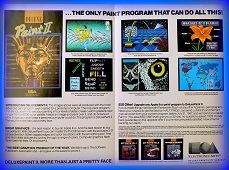 |
| Tweet from Woz staying at the Parmelia Hilton in Perth: |
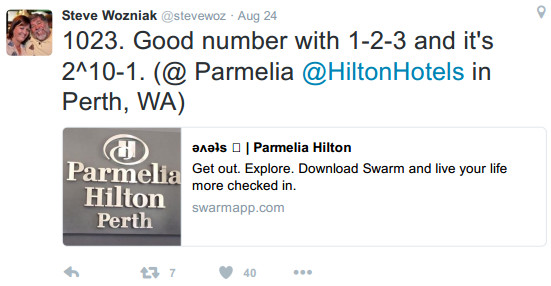 |
A fitting choice! Interesting fact: In the 1980's, the Parmelia Hilton's accounting system was run entirely on Apple II equipment and the software was custom designed for them by Samurai Software's lead programmer (then aged just 16).
 |
| Parmelia Hilton as it looked in the early 80's |
 |
| King Tut exhibition in Perth (October 2016) |
^ 2025-08-20 (last revised)
X-REF (Cross-Reference) to Apple II Programming Books (144 pages - PDF original scan)
|
A compilation of the glossaries and indexes from the books and references listed below. It is intended to be a "look here first" book for helping you find the definition to terms used in any of these sources of technical information. In addition, the compiled index will help you find what you are looking for across the entire suite. |
The books covered:
Apple IIc Technical Reference
Apple IIe Technical Reference
Apple IIGS Firmware Reference
ProDOS 16 Technical Reference
Programmer's Introduction to the Apple IIGS
Technical Introduction to the Apple IIGS
Apple IIGS Toolbox Reference (treated as a whole)
Technical notes:
Apple IIe Tech Notes
Apple IIc Tech Notes
Apple IIGS Tech Notes
Apple II Miscellaneous Tech Notes
AppleTalk Tech Notes
GS/OS Tech Notes
ImageWriter Tech Notes
Memory Expansion Card
Mouse Tech Notes
ProDOS 8 Tech Notes
Pascal Tech Notes
SmartPort Tech Notes
UniDisk 3.5 Tech Notes
^ 2015-11-11 (last revised 2020-05-13)
AppleSwap disks (Apple Computer Australia Pty Ltd)
How Do I Get To Woolloomooloo? (1987 JDEisenberg)
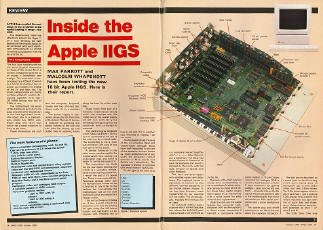
"Enter the GS: A dramatic breakthrough for the Apple II range" - Apple IIGS cover story, Apple User magazine (UK) (October 1986)
|
|
|
Apple IIGS launch advertisement United Kingdom - Apple User magazine (UK) (April 1987) |
||
|
"Now the world's favourite personal computer is one of the world's most powerful. Introducing the Apple IIGS." |
||
|
Apple IIGS brochure United Kingdom (12 pages) |
||
|
|
||
|
|
||
|
The complete Australian edition of this brochure - 20 PAGE HQ scan - now available @ archive.org (with thanks to 'Jongleur') |
||
|
Canadian English version of this brochure available HERE (courtesy Mitchell Spector) & Italian two-page advertisement is HERE |
||
|
See also Apple IIGS French fold-out brochure (August 1986) similar to above ☞ 1 | 2 (courtesy 'michael_trust' on eBay FR) |
||
French press release «Son et lumière avec l'Apple IIGS» (April 1987)
Installationshandbuch Apple IIGS & Apple IIGS Technische Dokumentation (official German manuals)
![]()
![]() "Installationshandbuch Apple IIGS" (1986 Apple Computer GmbH) - complete high-resolution
scan
"Installationshandbuch Apple IIGS" (1986 Apple Computer GmbH) - complete high-resolution
scan
Apple IIGS — Pandasoft ad (Der Spiegel, Nr.38/1987)
Major vendor of Apple II in Germany — hardware, software, books & magazines
Also see → Pandasoft Apple II II+ IIe IIc Katalog (Spring 1986) @ archive.org
![]() See also
hi-res scans
Apple
Live - Sonderheft zum neuen Apple IIGS
(September 1986 Apple Computer GmbH)
- 27-page German brochure
See also
hi-res scans
Apple
Live - Sonderheft zum neuen Apple IIGS
(September 1986 Apple Computer GmbH)
- 27-page German brochure
 |
|
Steve Wozniak reminisces in Apple User magazine (UK) (February 1987) |
|
|
Irish manufactured Apple IIGS original box — base of CPU with serial # — UK English Apple IIGS keyboard [photos courtesy of eBay UK]
|
|
|
Italian version "Apple IIGS - Il più potente Apple II" (September 1986) is HERE |
|
12" Apple Monochrome Monitor (composite) for Apple IIGS or IIc (white phosphor) |
|
A2M6016X (240V southern hemisphere) & A2M6016Z (220V northern hemisphere) models |


![]()
![]() Download
high-resolution photos Apple Monochrome Monitor A2M6016X original box [18 MB]
Download
high-resolution photos Apple Monochrome Monitor A2M6016X original box [18 MB]
|
Italian Apple IIc |
|
A2S4000T model (220/240V PAL) |
|
[photos courtesy eBay UK] |
 |
 |
|
Apple IIGS garners prestigious 19th SMAU Industrial Design Award in Milan |
|
Italian Apple IIGS (ROM 01) |
|
A2S6000W model (220/240V) |
|
[photos courtesy eBay Italy] |
Apple IIGS wins IEEE Good Design Award (May 1987)
Bose RoomMate speakers for Apple IIGS
Apple IIGS & AppleWorks GS Christmas ad (1988)
ComputerLand — San Francisco Bay Area
Full page ad from Californian TV Guide
|
Apple IIGS launch advertisement Australia (1987) - published in magazines & as a fold-out brochure from Apple dealers (the brochure had at least one extra page listing the specs) |
|
[scans courtesy of The Australian Apple Review © Gareth Powell / A.P.P.L.E.] |
Did you know?! "The Apple IIgs Software Directory" (84 pages, by Peter J. Lynden) was published in 1987 by Apple Computer Australia — view library citation
Complete scan now available @ archive.org (courtesy of 'Jongleur')
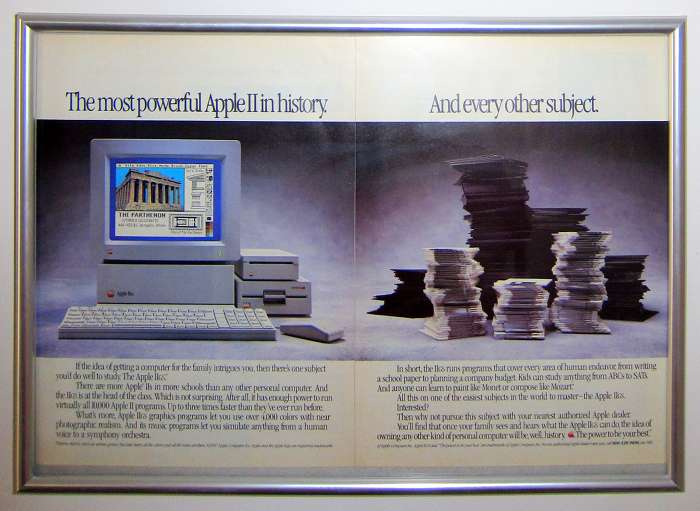
|
The Parthenon two-page Apple IIGS advertisement |
|
Sports Illustrated (USA) — October 26, 1987 |
|
“The most powerful Apple II in history. And every other subject.” |
|
|
Brochures 1988 showing Woz edition Apple IIGS (6 pages)† Ω & 1991 with ROM 3 IIGS (4 pages)†
| †I initially guessed this was from Canada, as it refers to the optional Apple IIGS Memory Expansion Card and uses international English spellings. In Australia, the original IIGS came standard with a locally manufactured 256K memory card for a base configuration of 512K RAM. Woz Limited Editions - first 50,000 shipping IIGS units emblazoned with Wozniak's autograph - were to be found in USA, Canada and Australia, but I'm uncertain about the UK†, which sourced their IIGS's not from Singapore but Apple's factory in Cork, Ireland. These Irish units do contain actual Irish components (e.g. 8 ohm internal loudspeaker) but the motherboards were largely (or exclusively?) supplied from Singapore. Some later European IIGS's (e.g. French ROM 3) were assembled in their entirety in Singapore. Singaporean ROM 01 IIGS for Europe does exist (A2S6000ZA) but is less common. A2S6000ZA was primarily an Asian model and sold in places like Singapore and Hong Kong ("ZA" remains the iPhone model code for SG/HK to this day). Apple IIGS production had officially ceased at Cork, Ireland by February 1992 - see Apple UK dealer memo. But they were still being churned out in Singapore and System 6 was even bundled for good measure - see American ROM 3 IIGS "as new" boxed (1992). The Apple IIGS was formally discontinued worldwide end-1992. |
|
|
|
Ω
UPDATE
I managed to source the original
brochure It originates from Australia and is dated May 1988. The cover depicts a Woz Limited Edition, but it's unlikely these commemorative units were still available in 1988. The single production run of Woz editions ceased sometime in early 1987.
|
|
220-240V Apple IIGS assembled in Cork,
Ireland (5th week of 1987)
Serial No. C7050CHA2S6000
(A2S6000W model family) |
† |
 |
Early French Apple IIGS assembled in Cork, Ireland (49th week of 1986) — as new in original box! In France, Apple IIGS at launch came standard with 512K RAM (256K motherboard plus Apple IIGS Memory Expansion Card with 256K fitted, user-expandable to 1MB) → see French press releaseApple IIGS with Serial No. C64906YA2F6000 (A2S6000W model family) Model info is engraved in plastic on the underside of the case (with added sticker for serial number) Comparatively, Apple IIGS units originating from Singapore are not embossed — model ID resides on a large printed adhesive label |
|
Apple IIGS ROM 3 motherboard |
|
(manufactured 39th week of 1989) |
|
Model/Order Numbers for ROM 3 Apple IIGS — A0012X/A (Australia), A0012LL/A (USA), A0012C/A (Canada), A0012B/A (UK), A0012F/A (France), A0012Z/A (International) etc. |
For an overview of the ROM 3 see "What's Inside The "New" IIGS" in The Apple IIGS Buyer's Guide (Winter 1990)
|
|
|
|
Apple IIe to IIGS Upgrade (A2S6001)
For Apple IIGS Upgrade pricing & options please see my scan → Apple Education & Government Confidential Price List (USA) - March 1987
In Australia, the upgrade cost A$1195 → see HERE
"Introducing the Apple IIGS" 20 page brochure (USA) - excerpts
Scan of complete brochure available from Vectronic's Collections
"Guess what" 6 page Apple IIGS brochure (1986 USA)

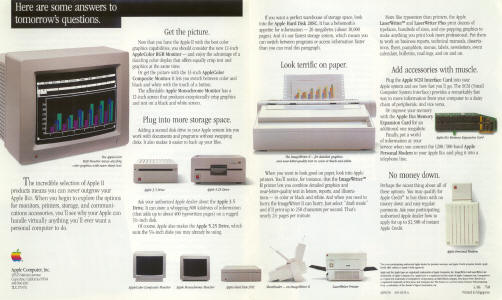
|
|
"Apple Pays Half" double-sided Apple IIGS advertising postcard (1987 USA)

|
|
"System 6: The Future is Here" - The Apple II Guide (1992)


|
|
Who owns this car?!
|
|
Close-ups of my Apple IIGS Woz Limited Edition (Australia)
Model # A2S6000X (A2S6000W family)
This unit was made in Singapore during the 50th week of 1986. ROM 0 as shipped, but later upgraded by Apple for free to ROM 01. Apple IIGS motherboards were the same the world over - just some defaults might be configured differently — keyboard/display language, 50 or 60Hz refresh for RGB & composite video (NTSC colour burst remains fixed at 3.58MHz and there is no provision for PAL colour via composite). (The retrofit Apple IIGS Upgrade motherboard for Apple //e will have extra connectors soldered on to accommodate a //e keyboard and external numeric keypad along with the proper connector for a //e power supply.) By the way, see HERE for the rarely-encountered startup screen of a factory-original ROM 0 Apple IIGS.
[see HERE & HERE for photos of "Assembled in Australia" Apple IIGS 1MB Memory Expansion Card and HERE for "Apple Computer Australia - Genuine Service Part" anti-static bag]
|
|
Genuine Apple II Dealer Service disks for Australia
Apple II Super Serial Card — assembled in Australia?
Apple 5.25 Controller — assembled & packaged in Australia
Gift of Christmas — The new Apple IIGS from Computer Choice (November 1986 Sunday Times)
I gave away the keyboard that was original to my Australian Woz edition around 1996 (the Australian IIGS keyboard is just the standard American one). So when I started using an Apple IIGS again in late 2015, I found this replacement French Canadian keyboard with a standard QWERTY layout. It too, may have come from a Woz edition GS, judging by the low serial number. All the keys work fine - the Return key was a bit stiff at first but now fixed with the aid of CRC 5.56 lubricant spray:-
For comparison, HERE are photos of an AZERTY European French Apple IIGS keyboard (part # F658-4081)
And see HERE for photos of a Canadian Woz Limited Edition Apple IIGS (model # A2S6000C) & HERE for the USA version (model # A2S6000)
|
Apple IIc & IIe — Canadian flavours |
|
A2S4000C (120V) & A2S2064C (120V) models |
And HERE are photos of Enhanced Apple IIe with Western Spanish keyboard (model A2S2064E - 115V NTSC - circa 1985)
Some photos from my travels to a wintry Québec (February 2012)
This webpage was previously hosted at http://www.amnet.net.au/~cvxmelody/AppleUsersGroupSydneyAppleIIDiskCollection.htm


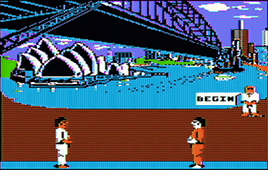

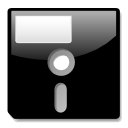 APPLE II
DISK IMAGES
APPLE II
DISK IMAGES
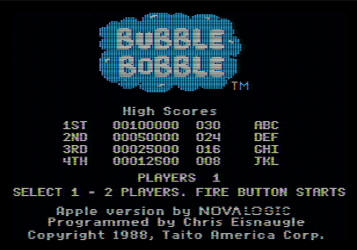

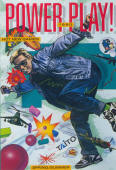





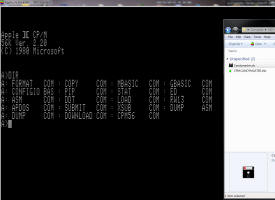





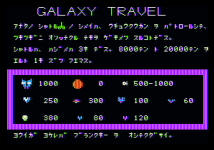
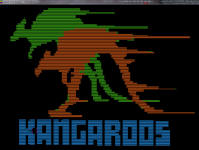
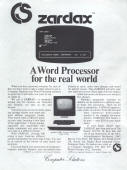




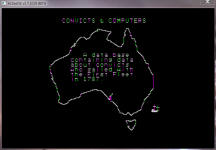










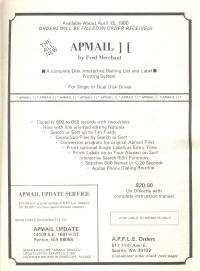








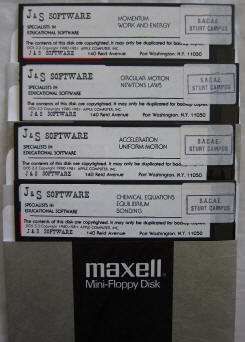
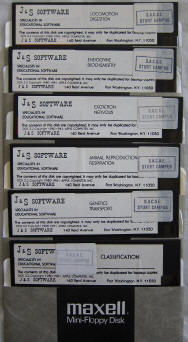

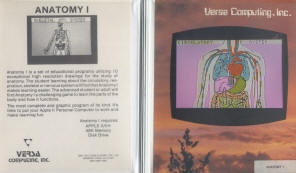





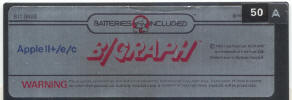
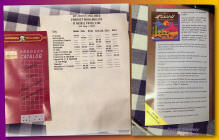






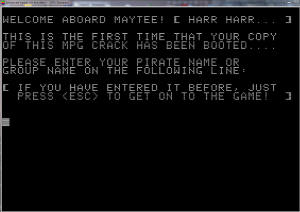




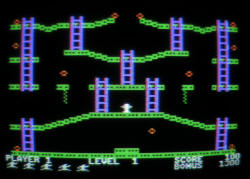







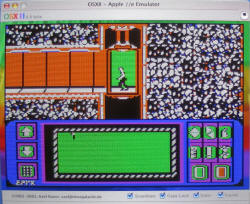
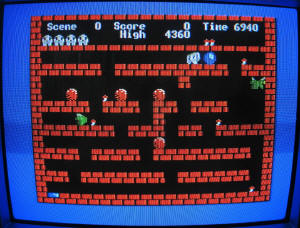

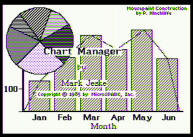






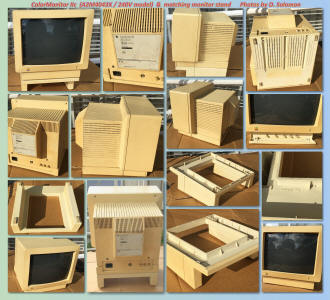
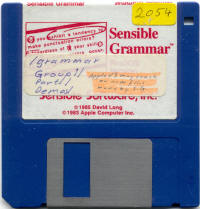

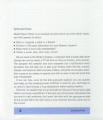

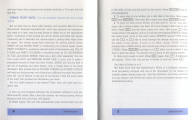





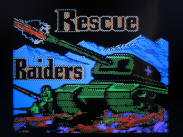

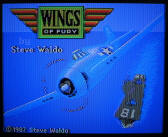






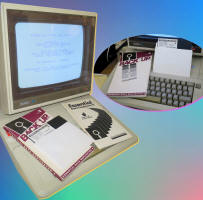



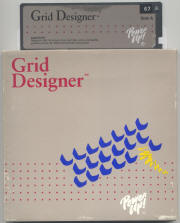
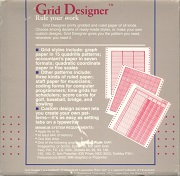
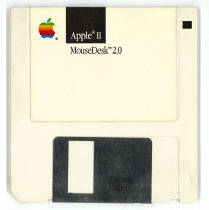
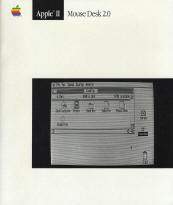

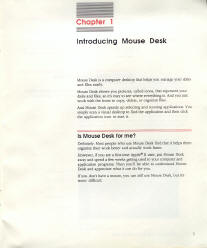


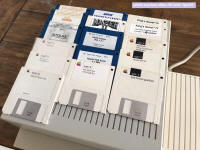


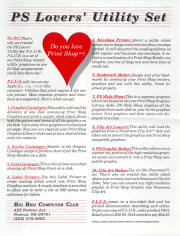
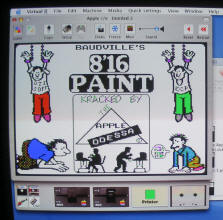







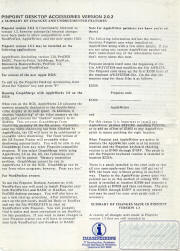
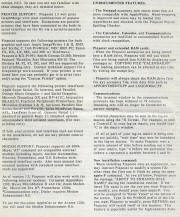

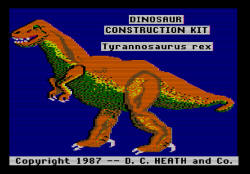


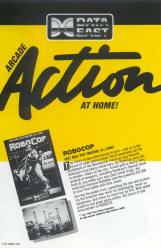

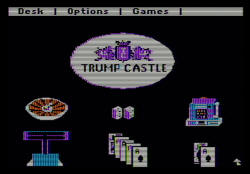


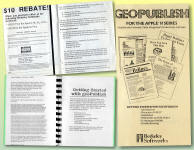


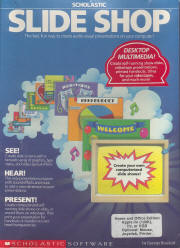

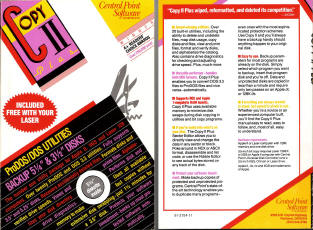
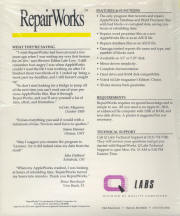

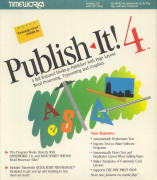
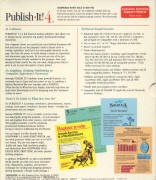


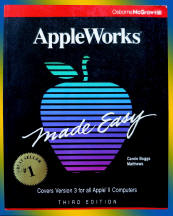

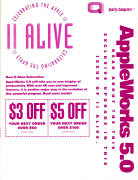






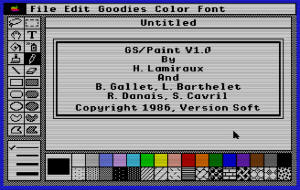





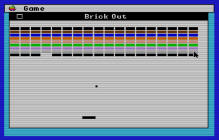
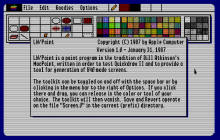
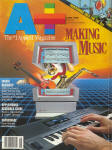


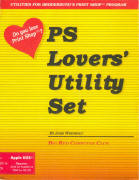
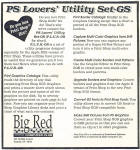



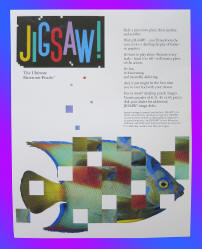









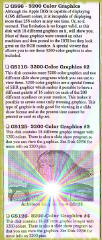



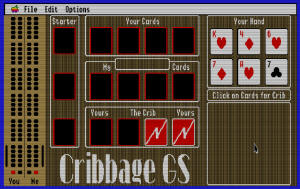

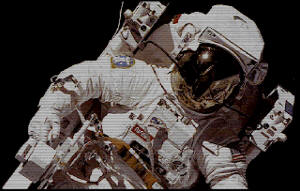


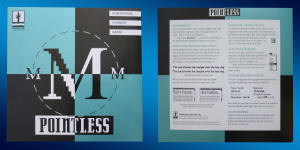



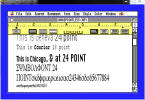


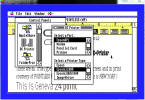





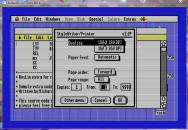




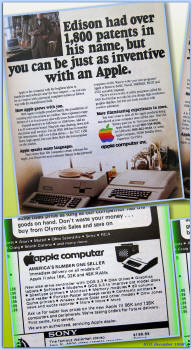
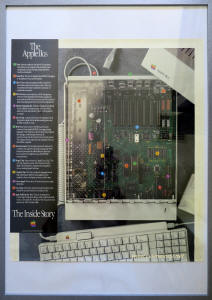

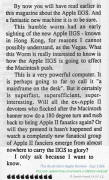


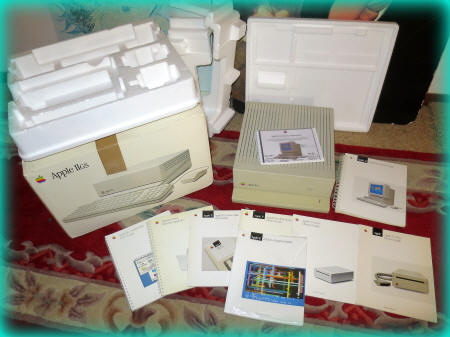


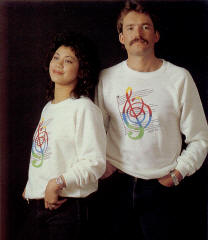

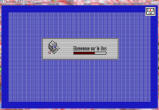



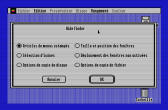

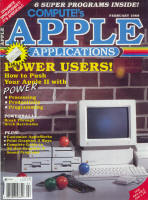
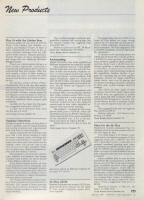
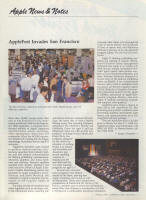
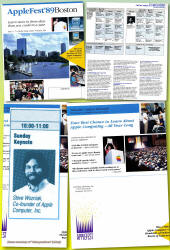
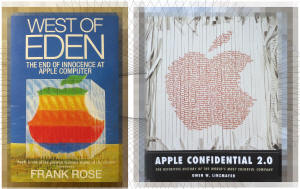

_small.jpg)



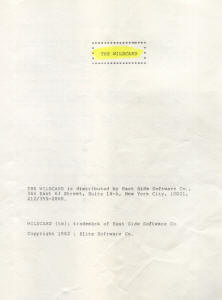
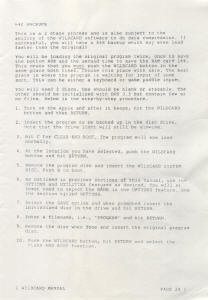

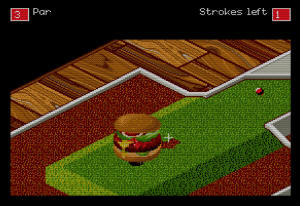

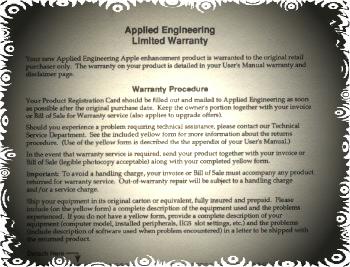



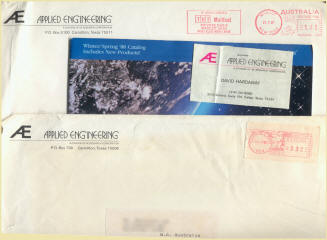





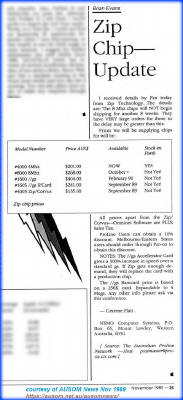




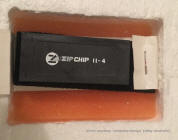

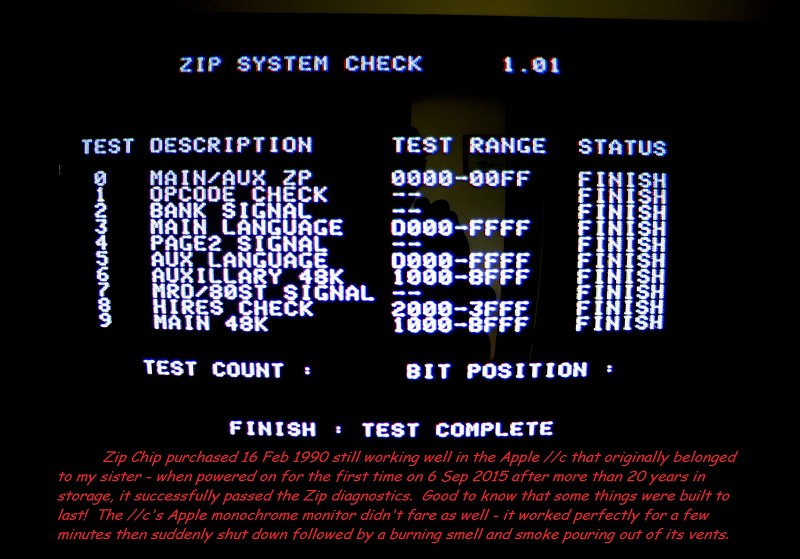

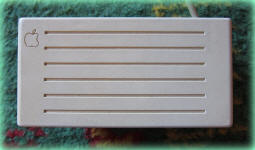
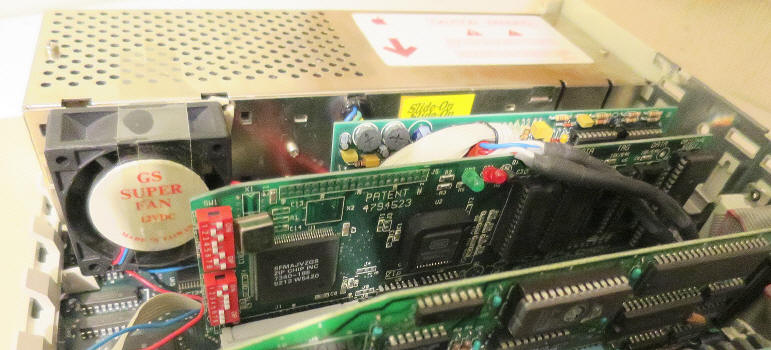

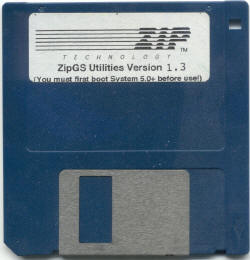




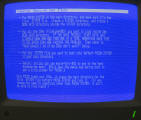





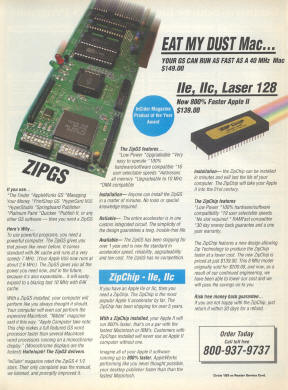
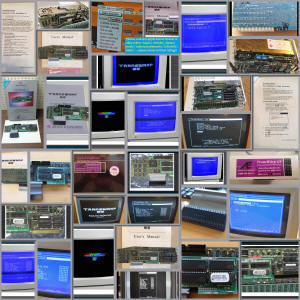


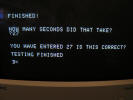
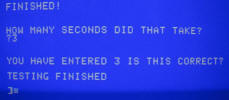


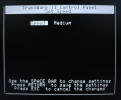

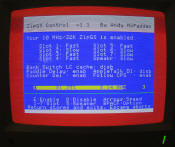


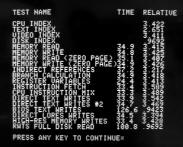
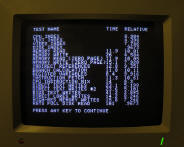

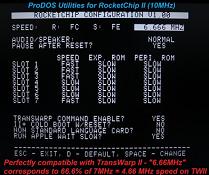

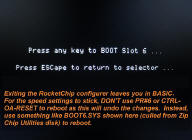


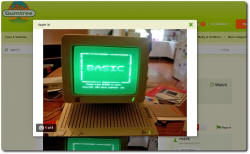
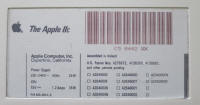



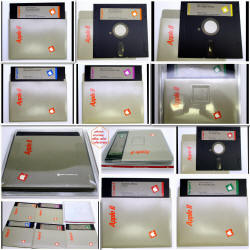
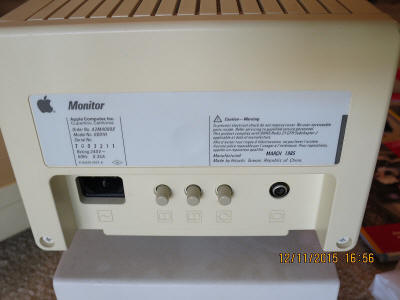
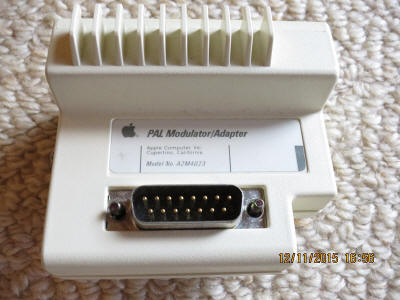



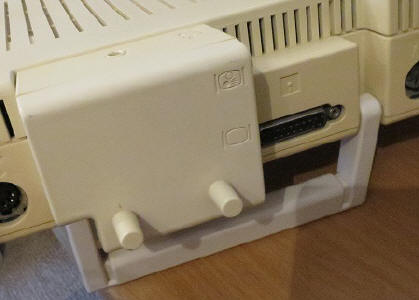

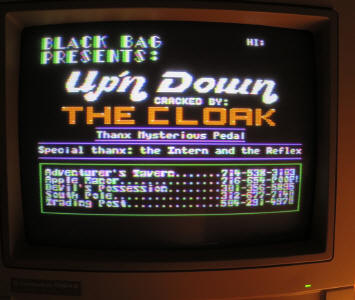

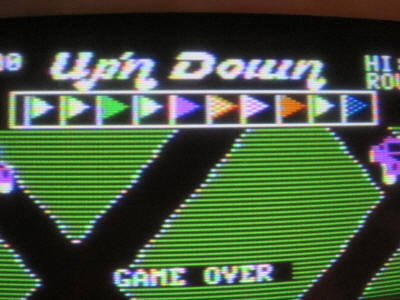



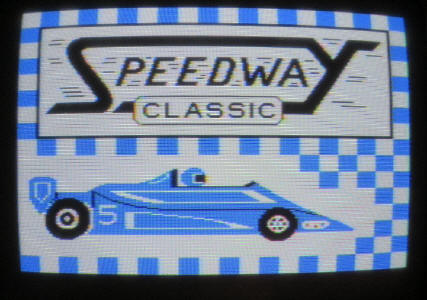
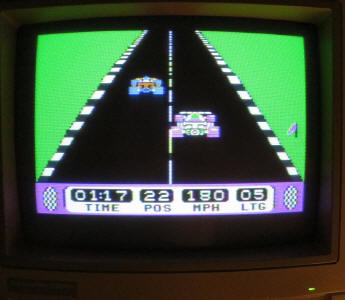
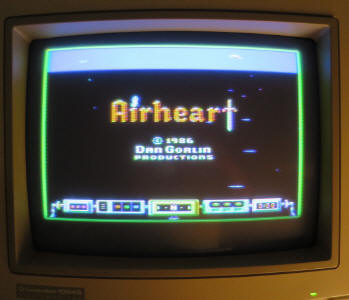
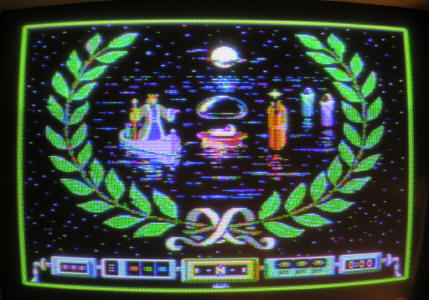

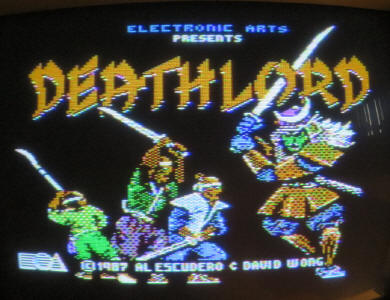



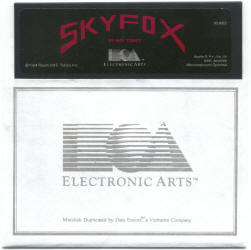





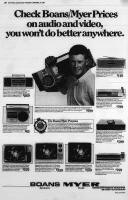
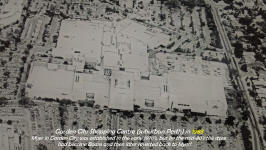



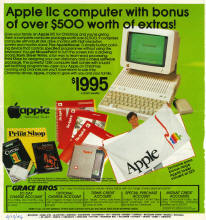



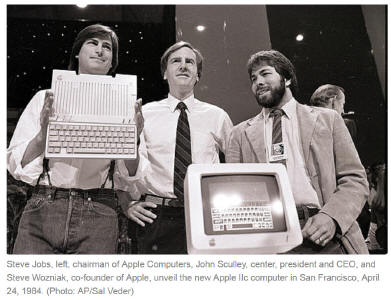
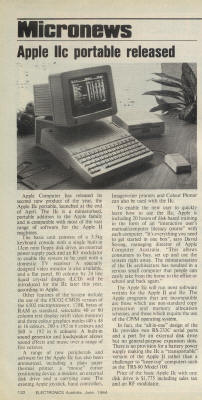






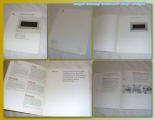
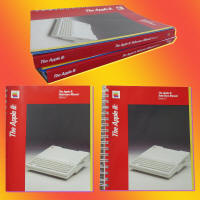




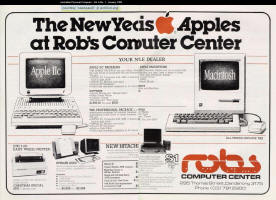



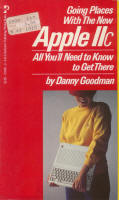


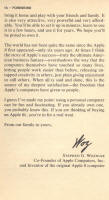




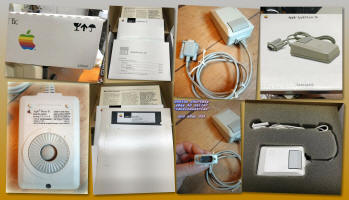


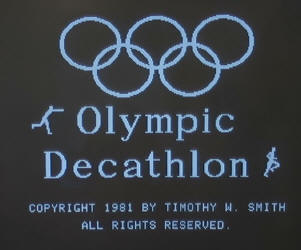
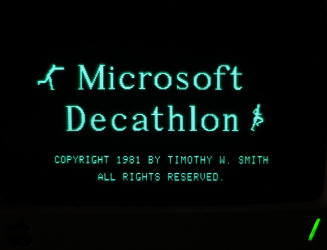






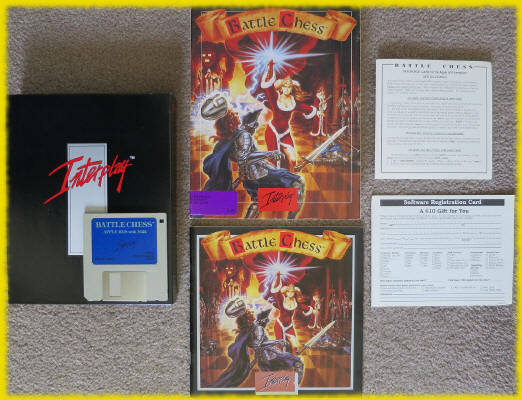


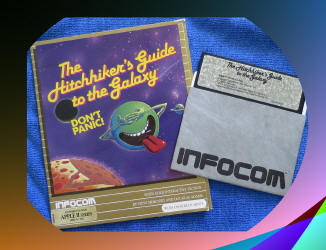
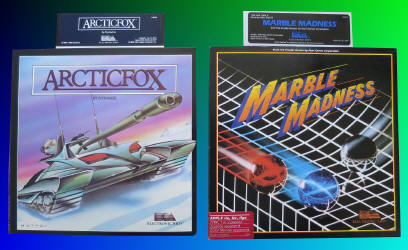

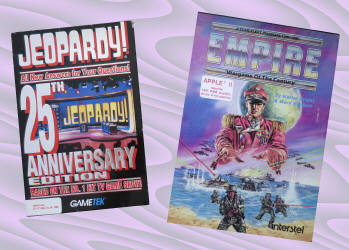
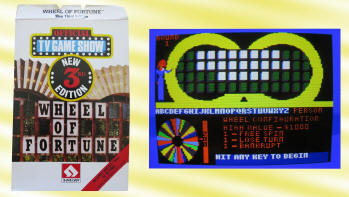

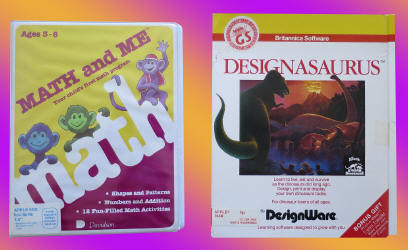






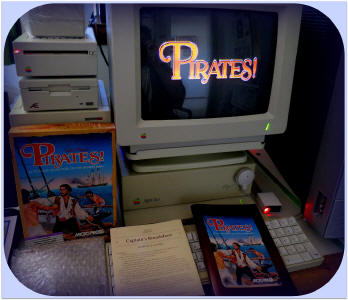
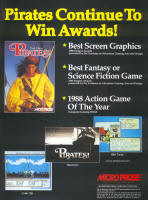
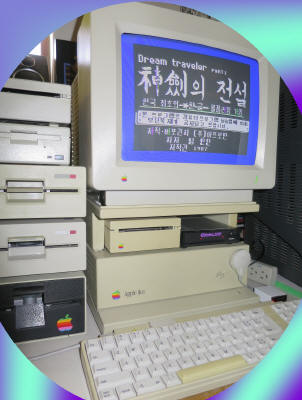
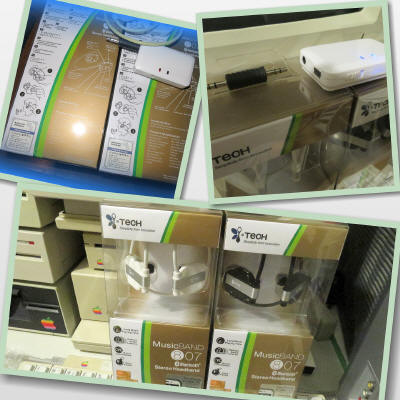
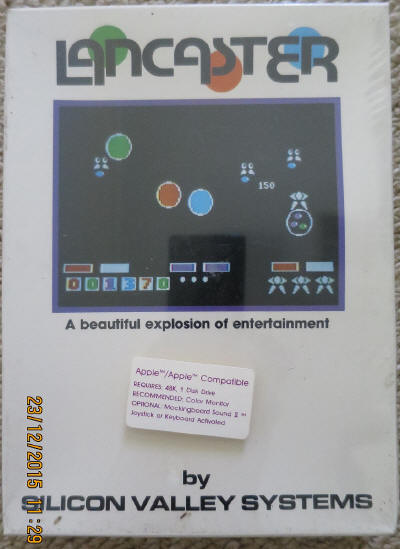



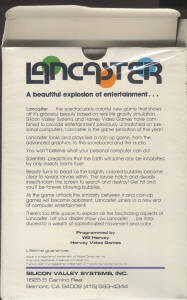

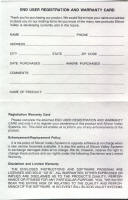
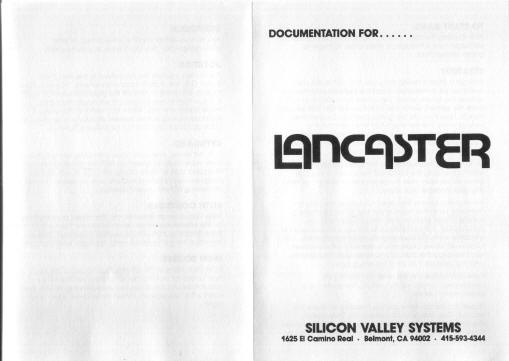


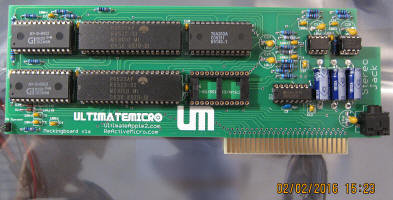





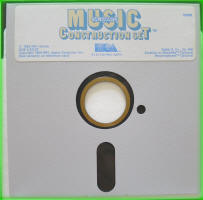









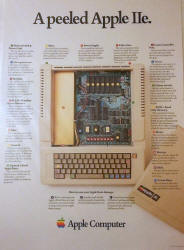






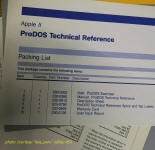



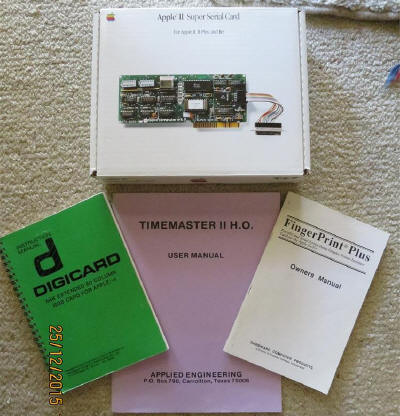


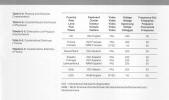
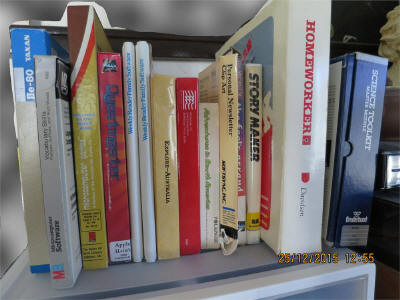
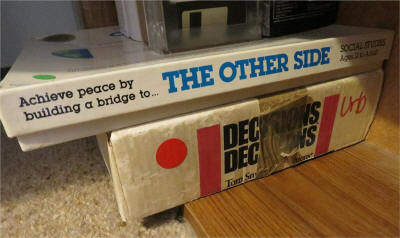

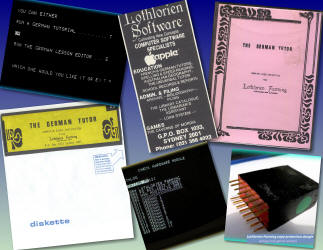
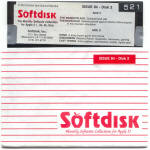

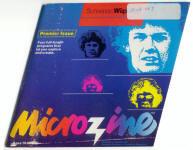
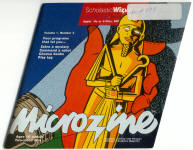

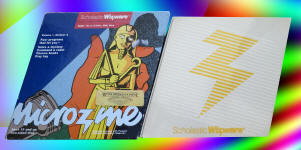
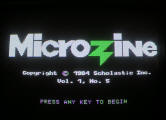


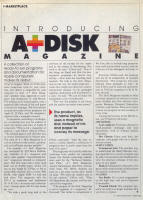


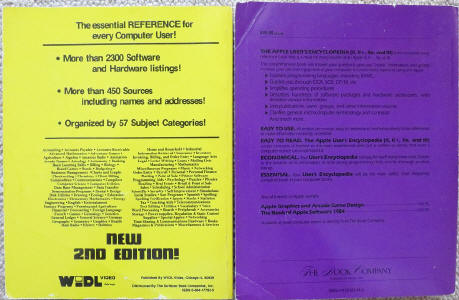






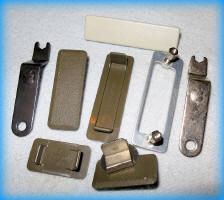

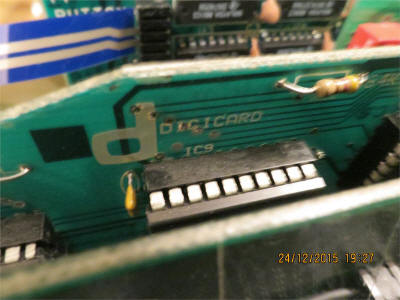
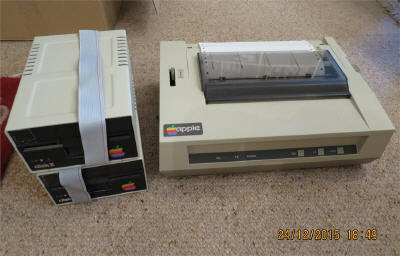


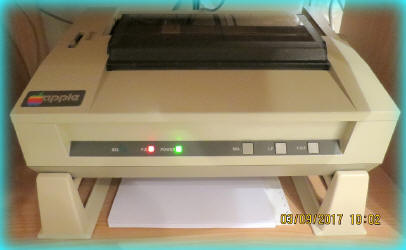
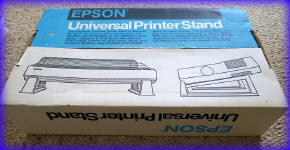




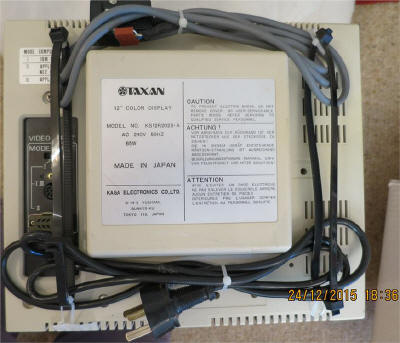
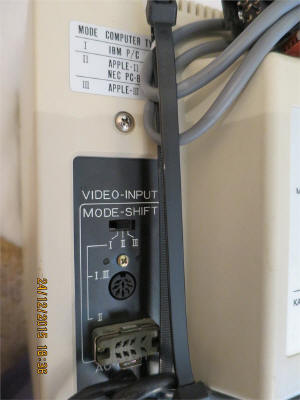

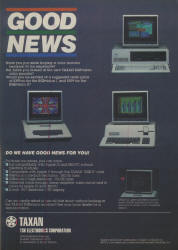


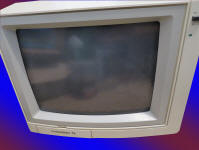



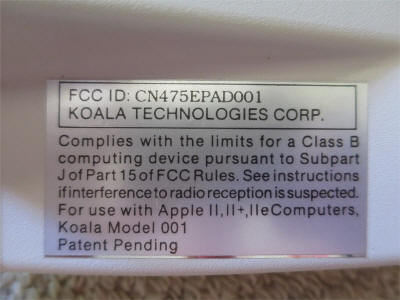
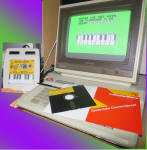
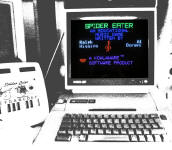
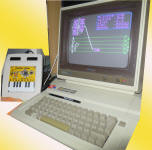






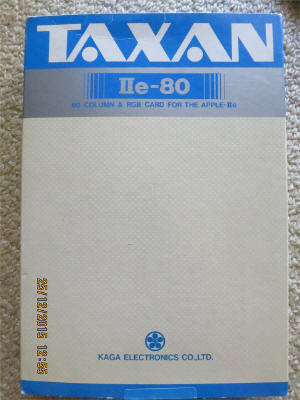
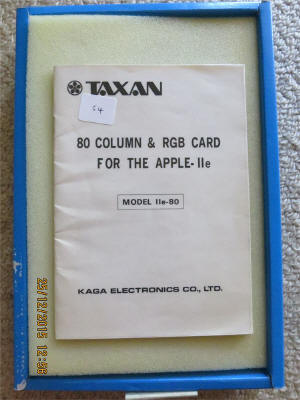




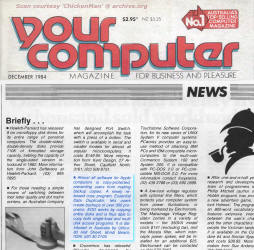
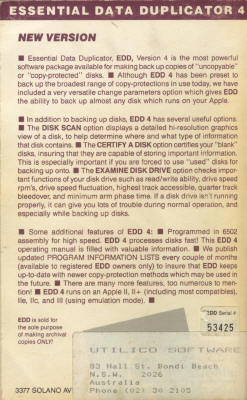

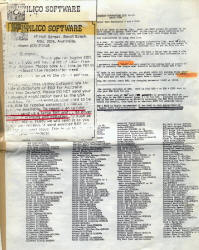





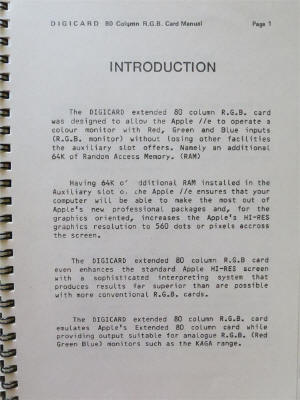

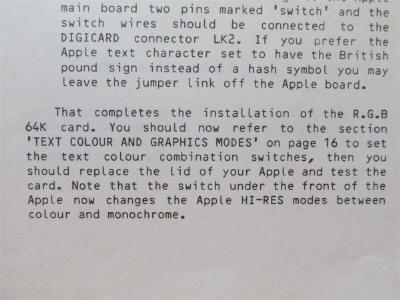

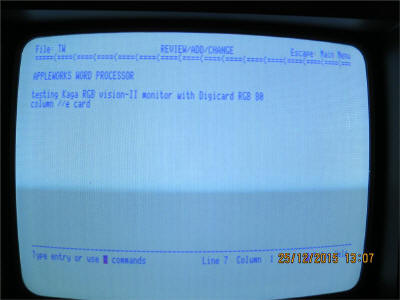
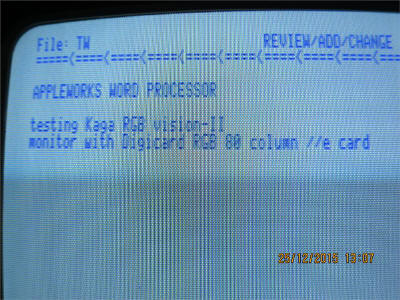

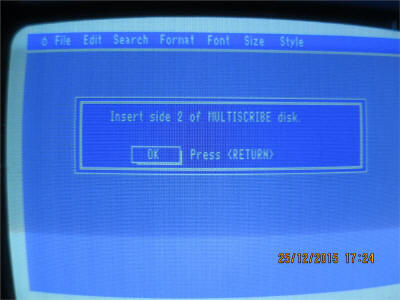

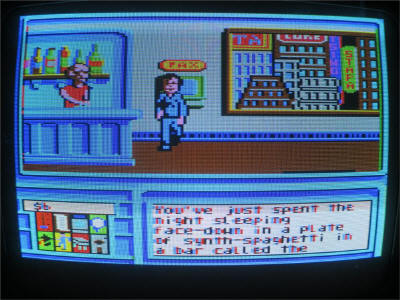



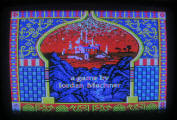


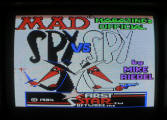
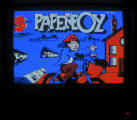


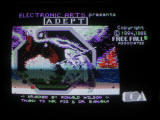
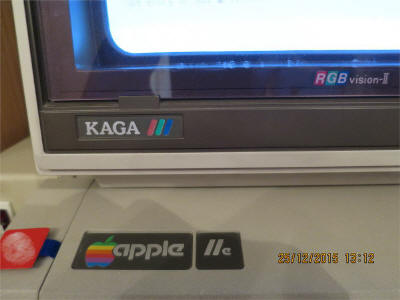


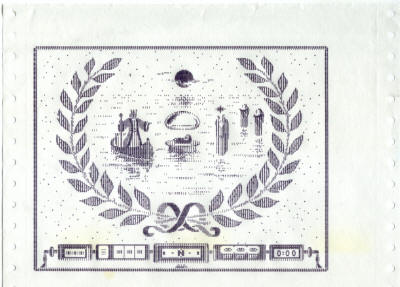
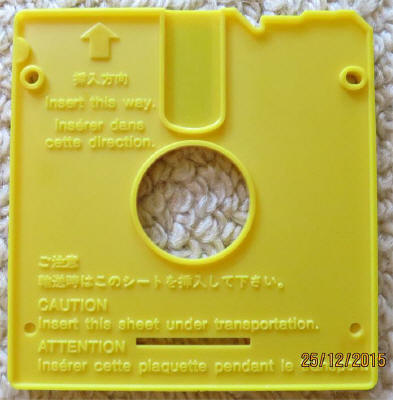







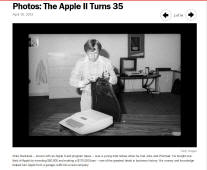



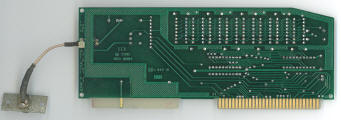
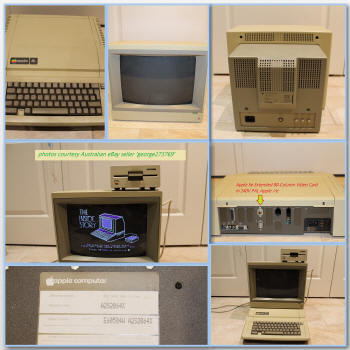
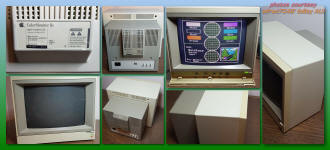

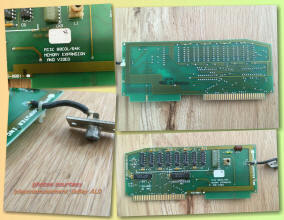
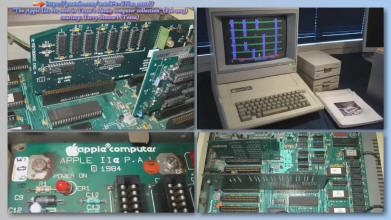
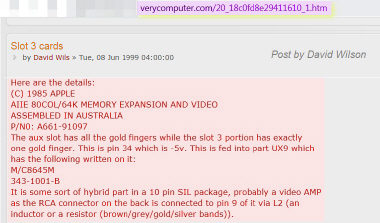

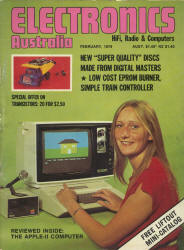
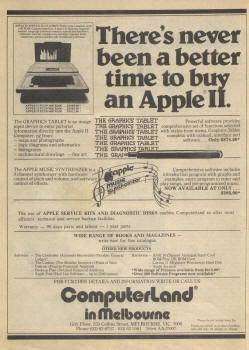
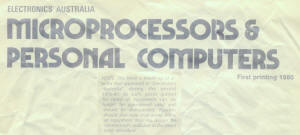
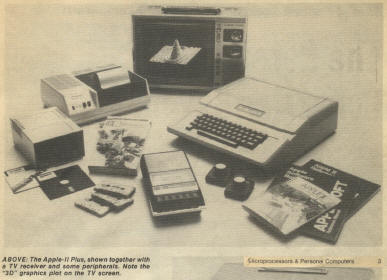

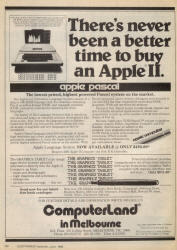
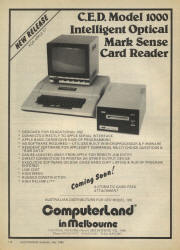
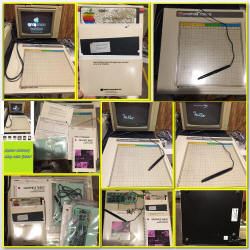



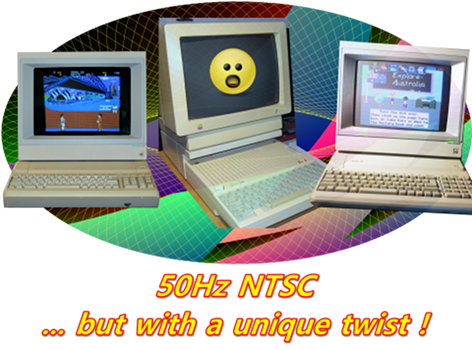

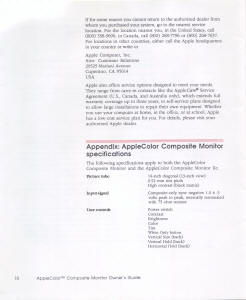


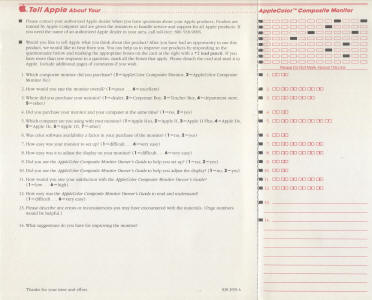
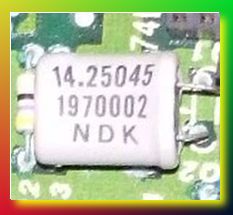
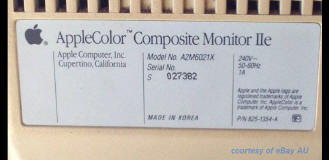
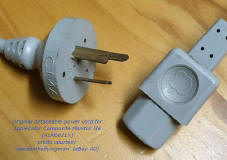



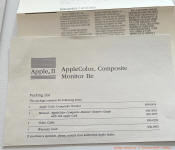





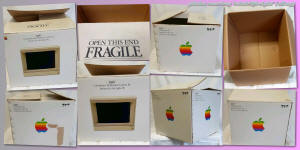


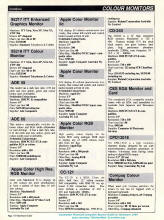
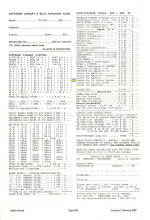
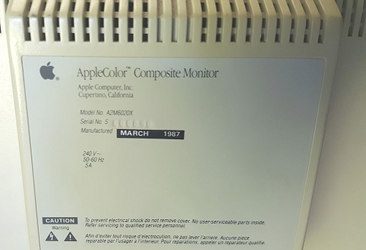
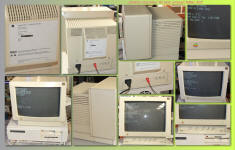




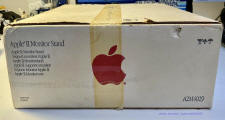



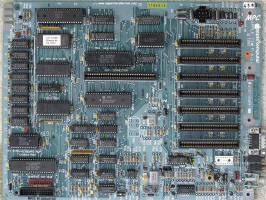
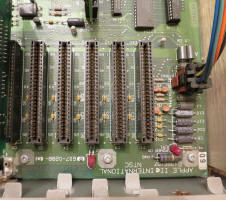



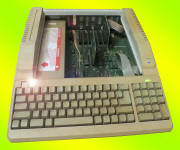
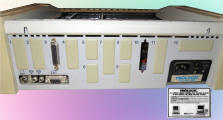


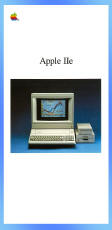
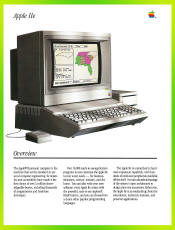
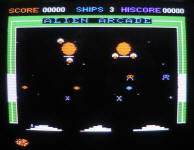
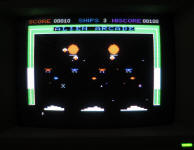

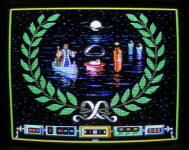
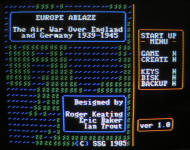
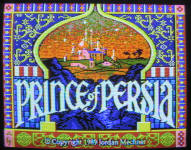
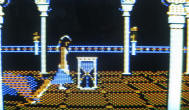




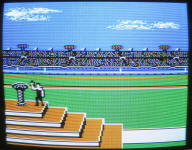

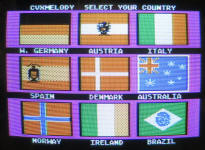

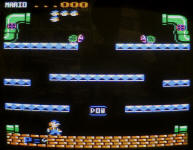
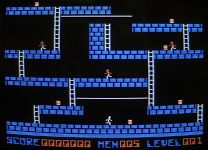

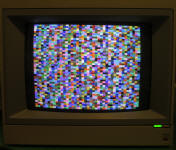

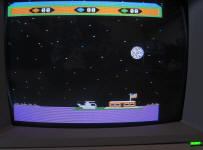

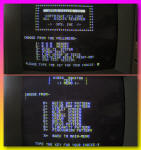




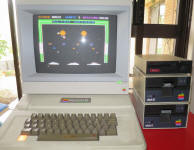

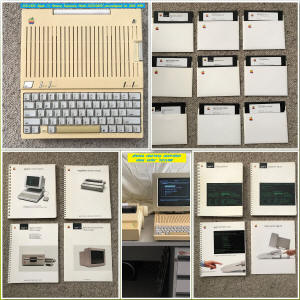


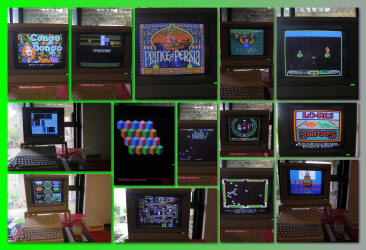




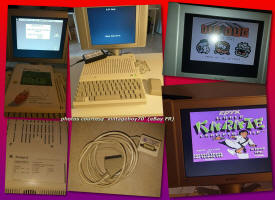


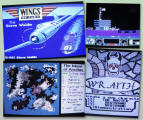










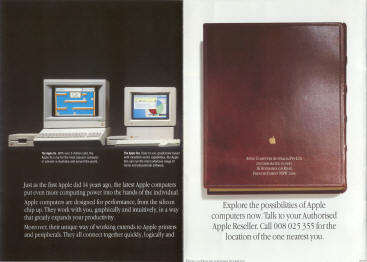










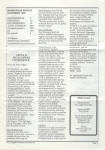
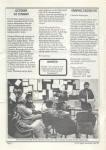


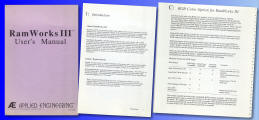
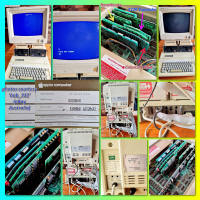

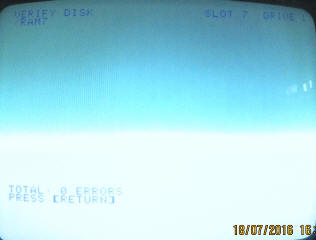


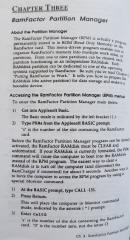
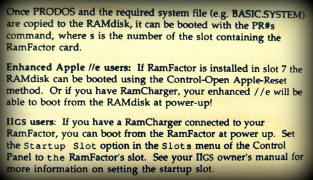
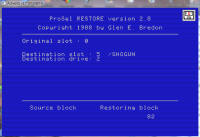




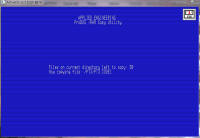


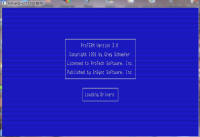
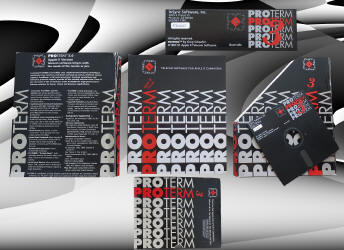
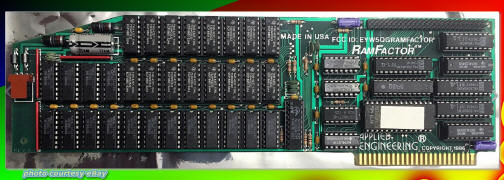
_small.jpg)





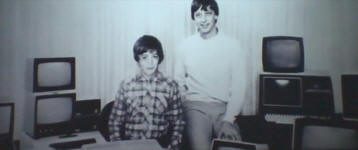


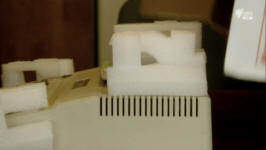

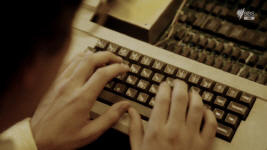









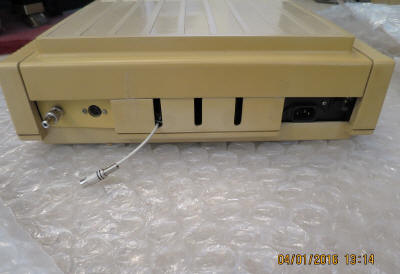


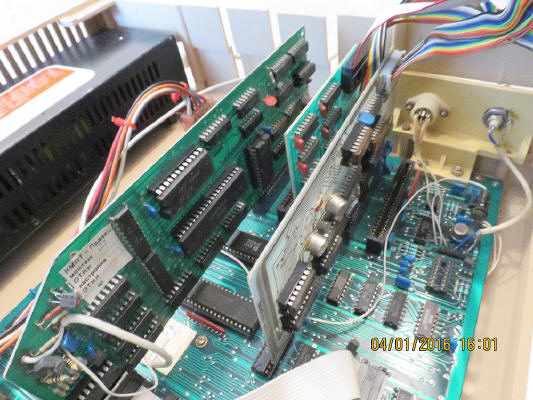
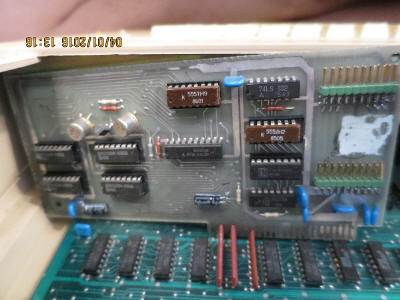

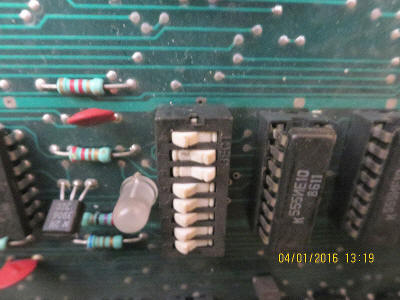
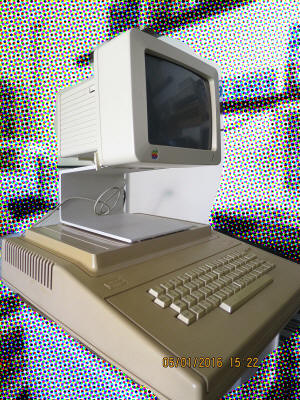



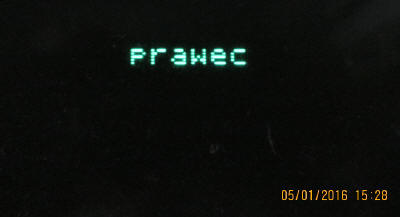


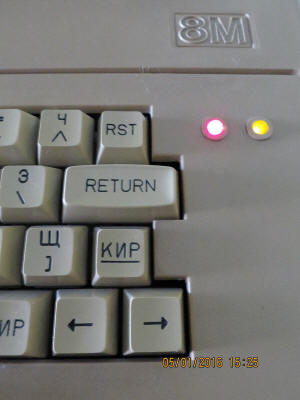



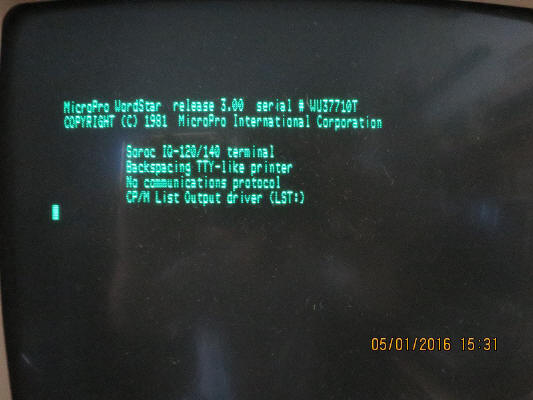

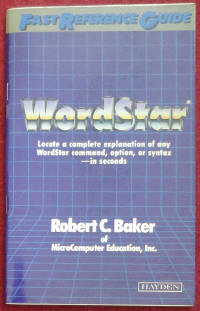

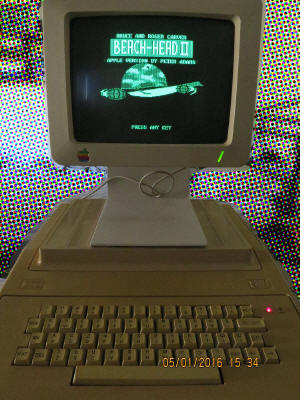





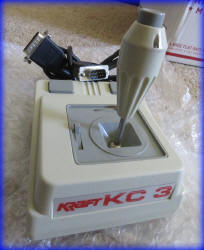

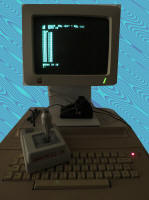

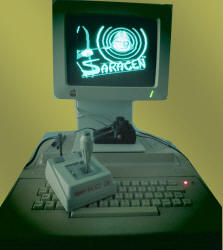



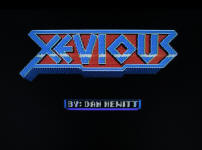


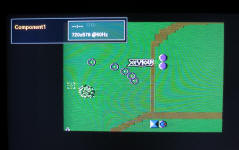

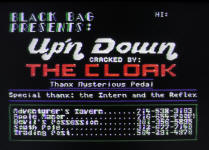

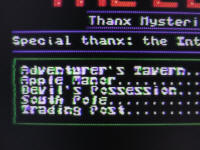

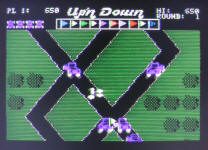
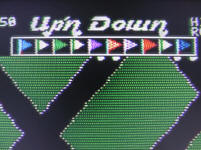

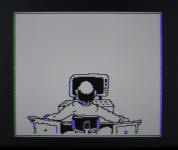
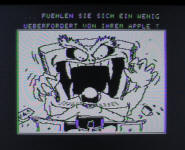

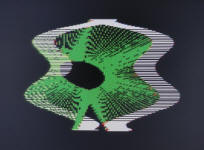










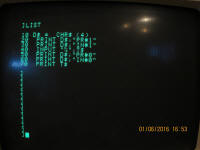

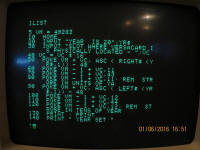

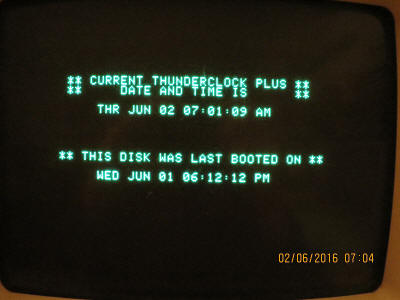

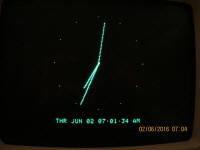






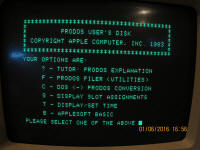





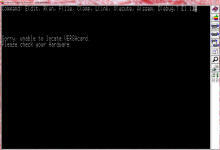
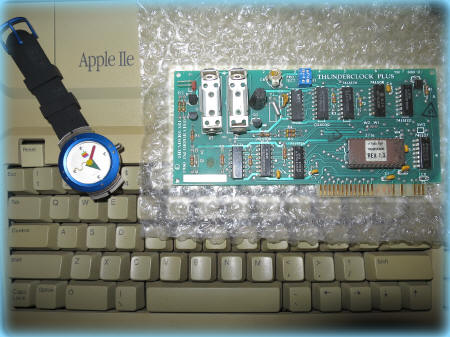
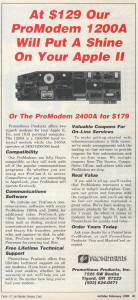


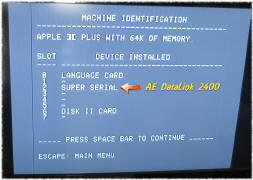
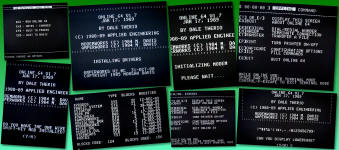


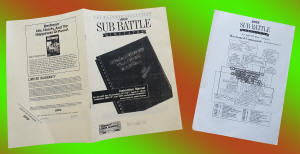



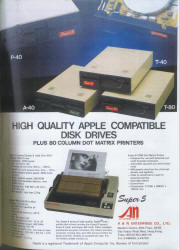
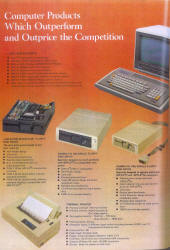
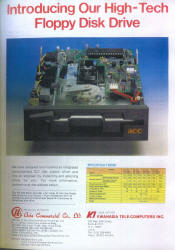
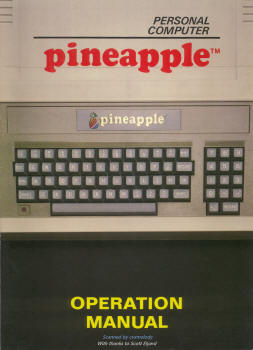


![Apple ][ 電腦特輯 (Hong Kong Apple II magazine)](Hong_Kong_Apple_II_magazine_small.jpg)

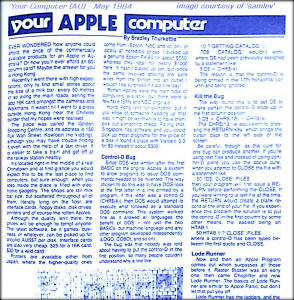




![Crown G-889 arcade joystick for Apple II [PHOTO]](CROWN_G-889_Arcade_Joystick_Apple_II_small.jpg)


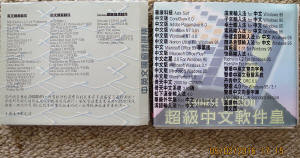



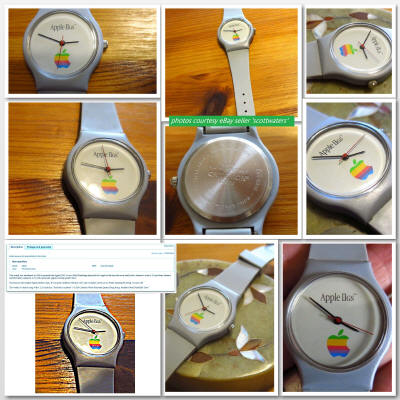







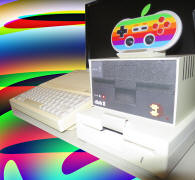
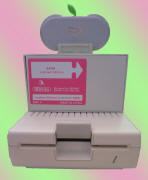

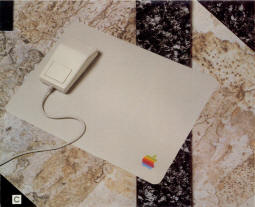










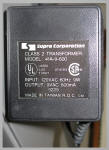

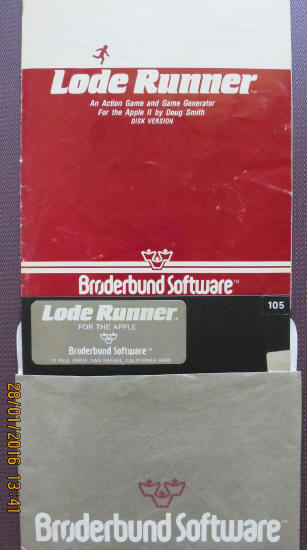
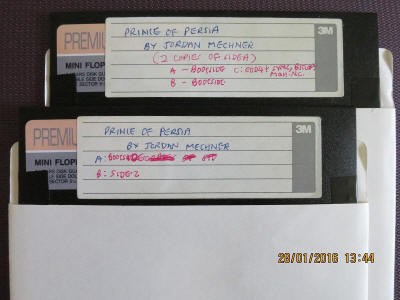
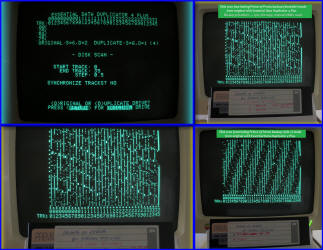
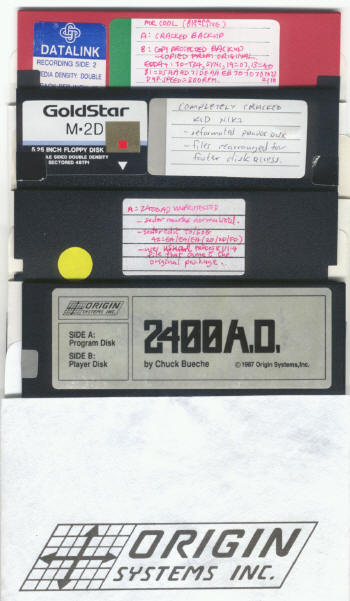



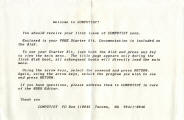
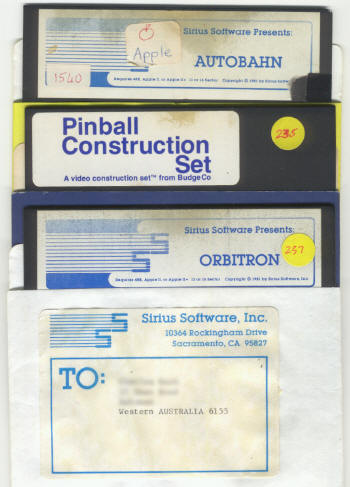


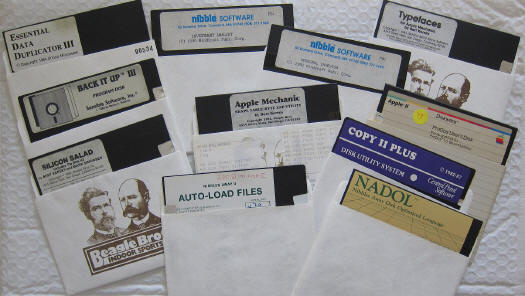


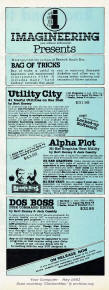
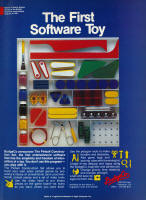

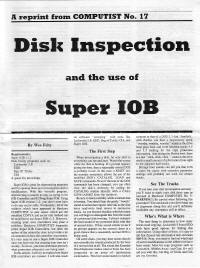

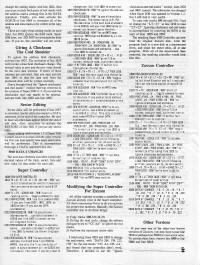
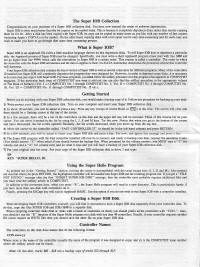
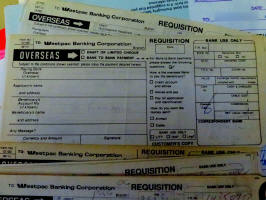
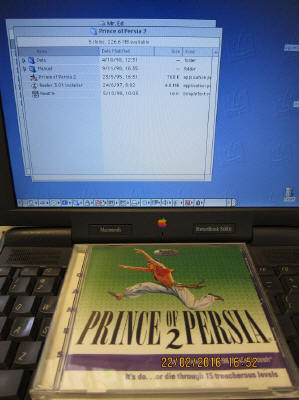
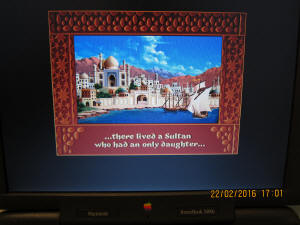









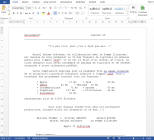
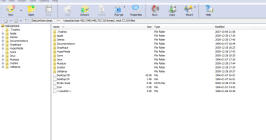




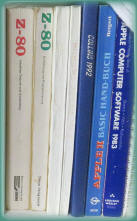

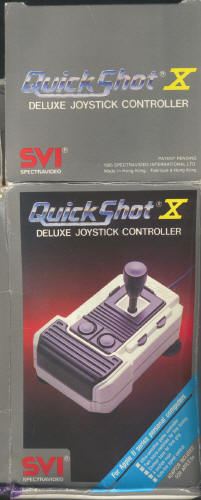

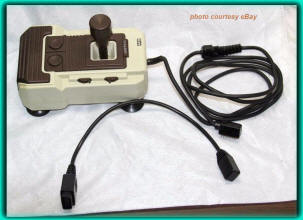
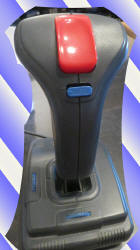
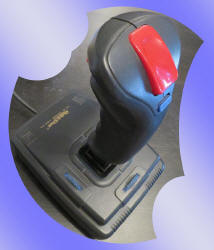


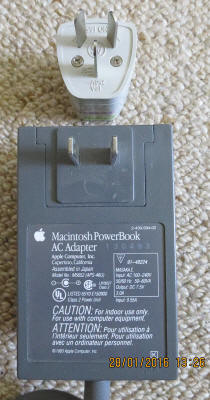



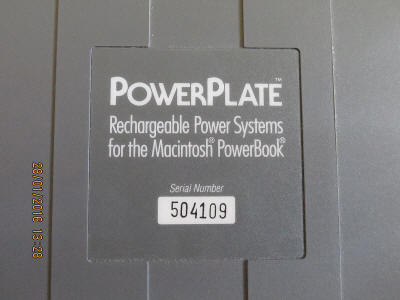

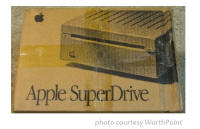
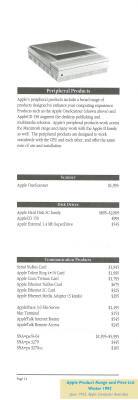

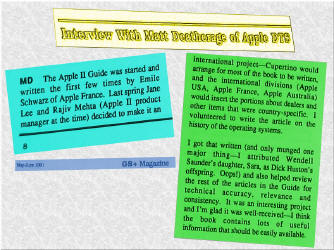
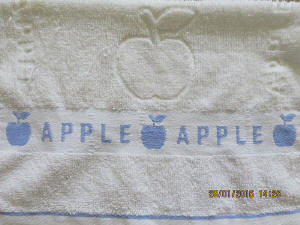
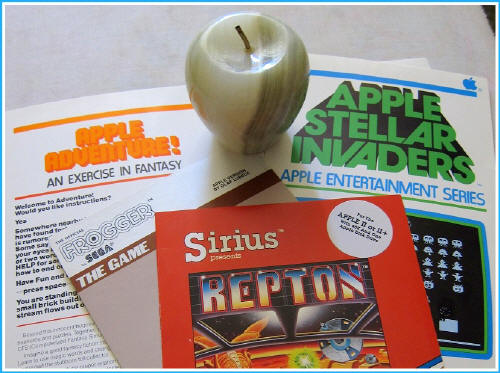

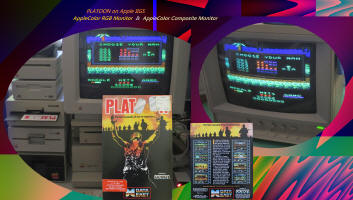

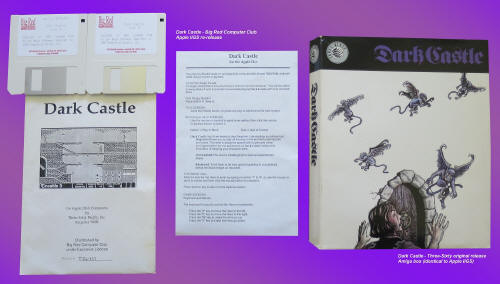
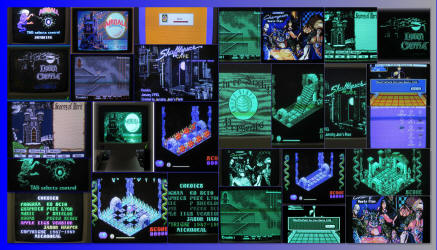
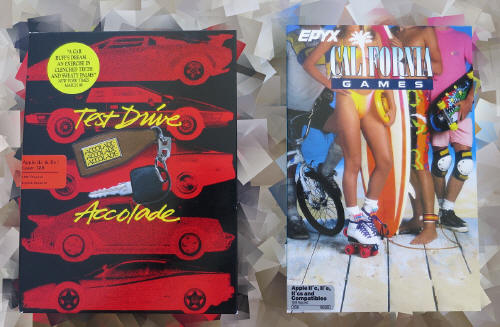
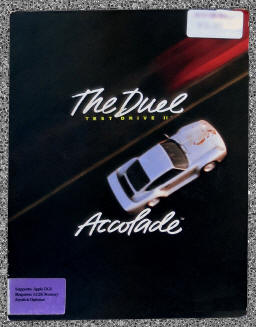

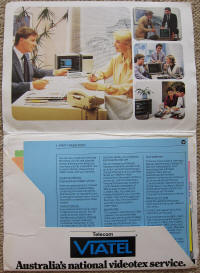


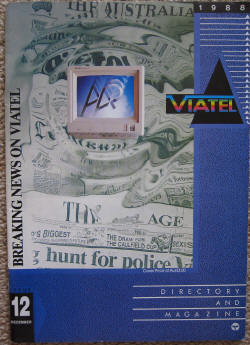

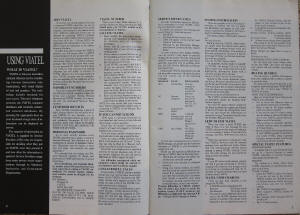
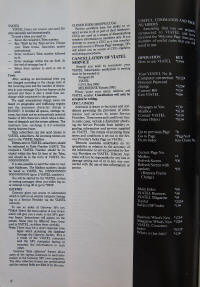
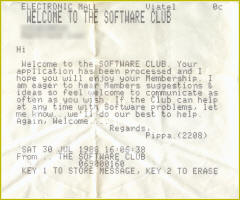



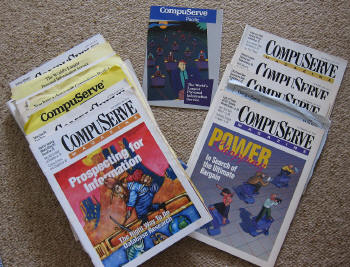
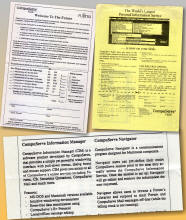

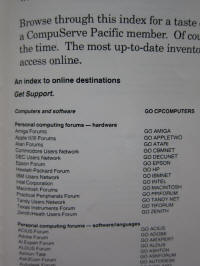



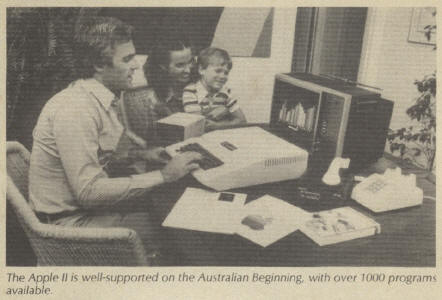

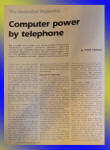
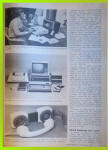
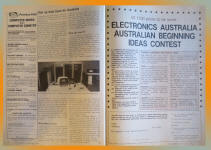

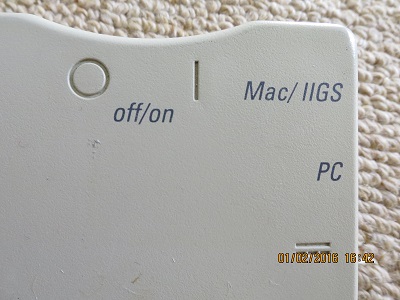

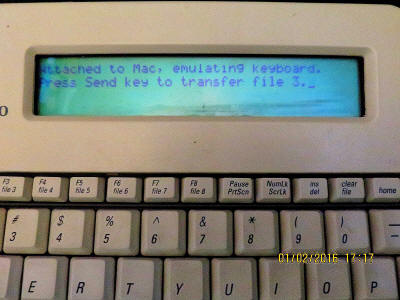
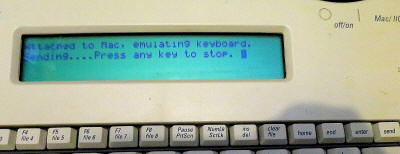


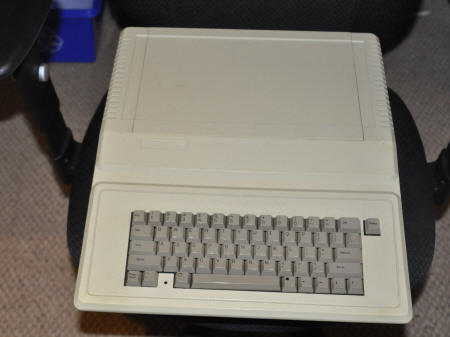

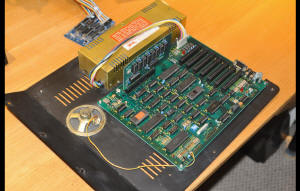

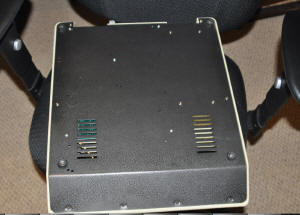

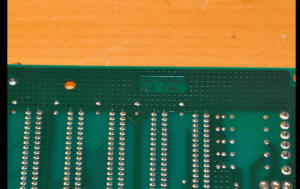



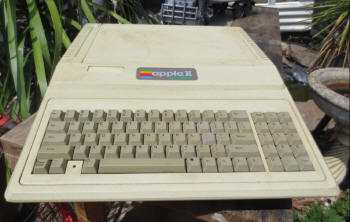
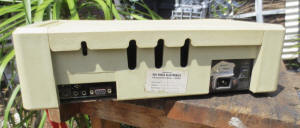
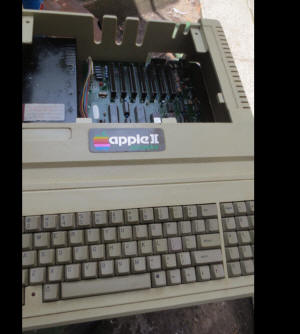






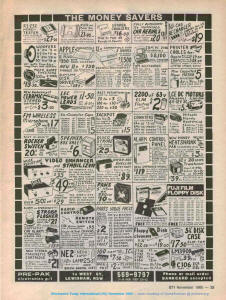
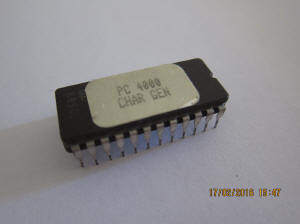
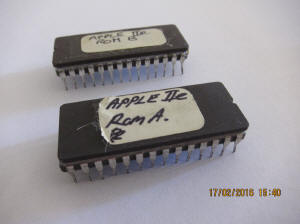
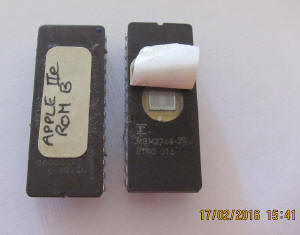
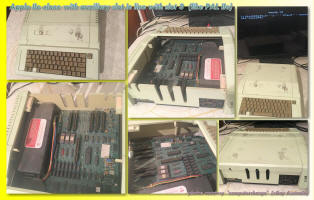


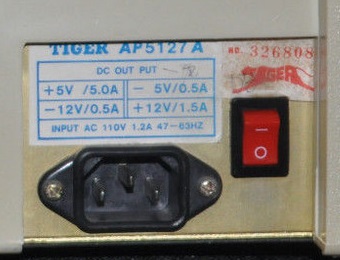
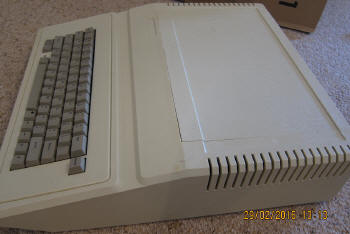
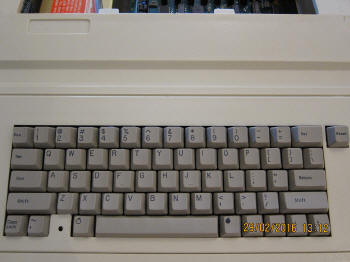
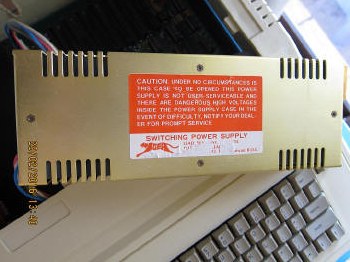



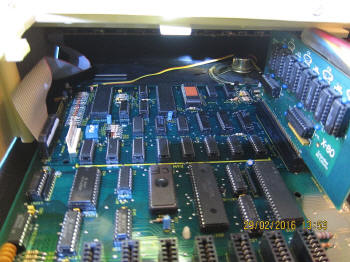
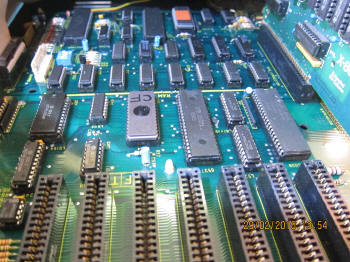
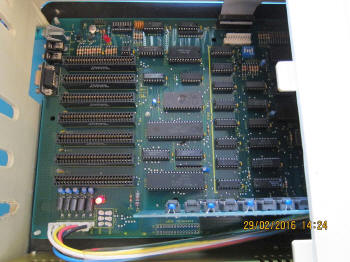
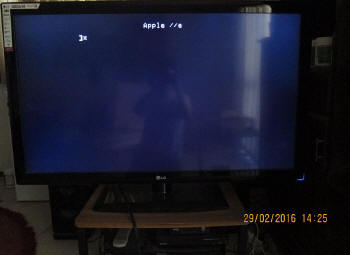

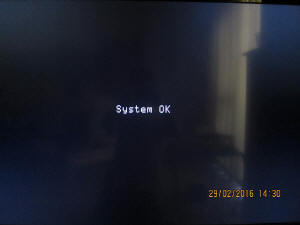
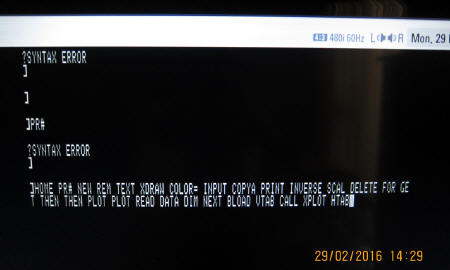
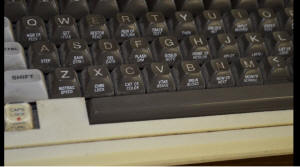


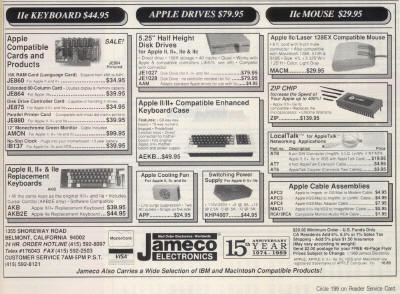
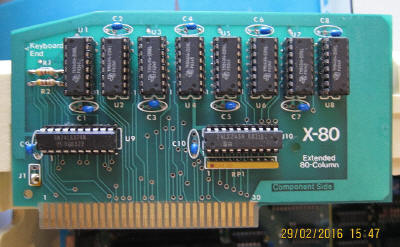
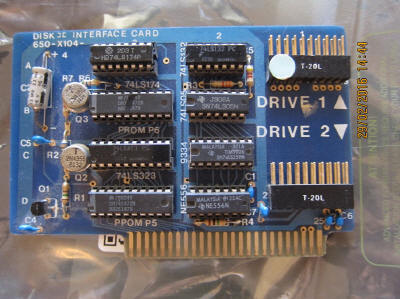


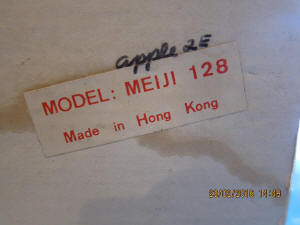

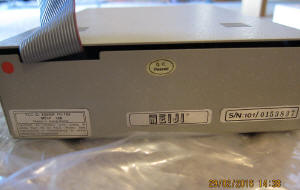

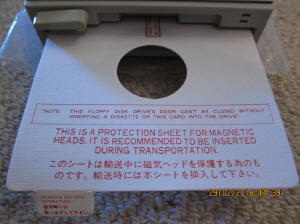





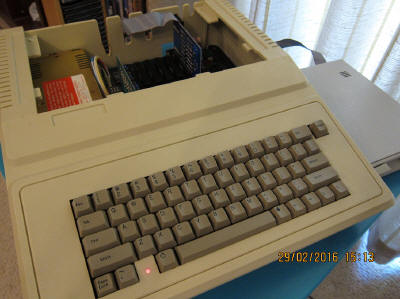
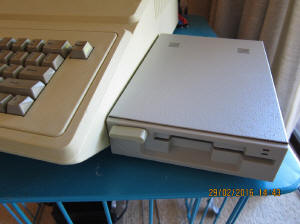


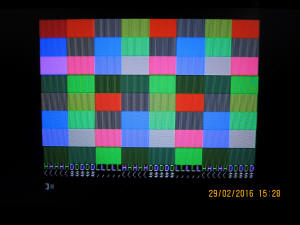

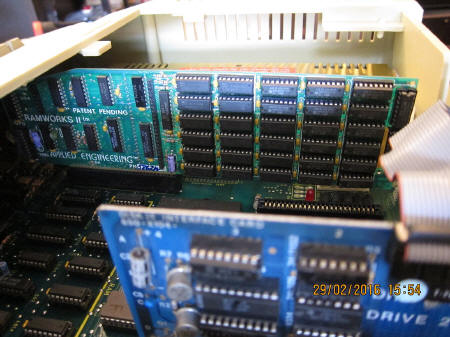


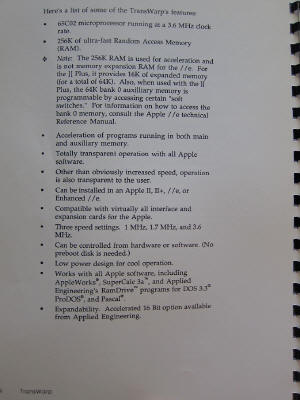
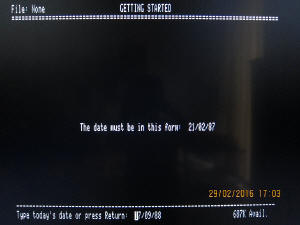







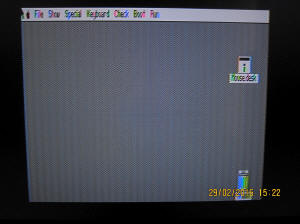



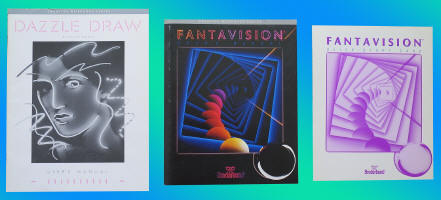




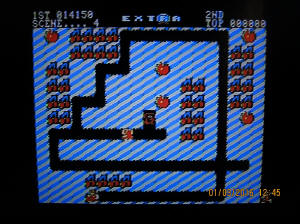
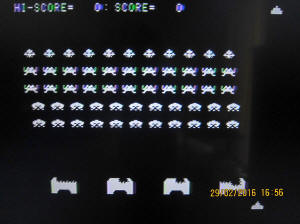



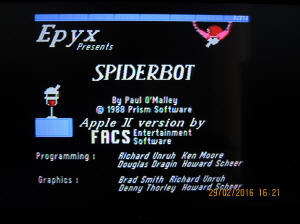


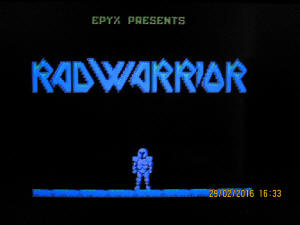
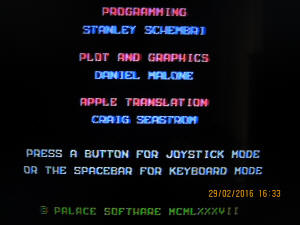
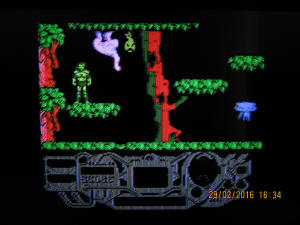
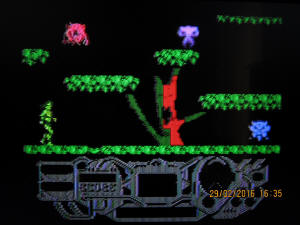

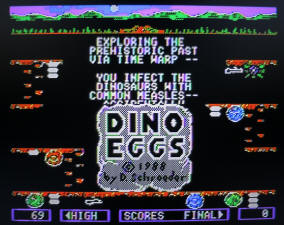

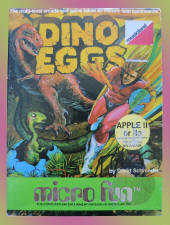
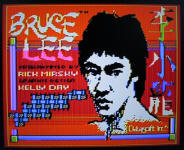


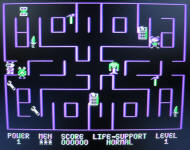
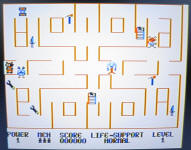

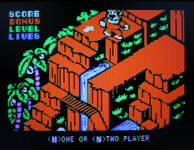

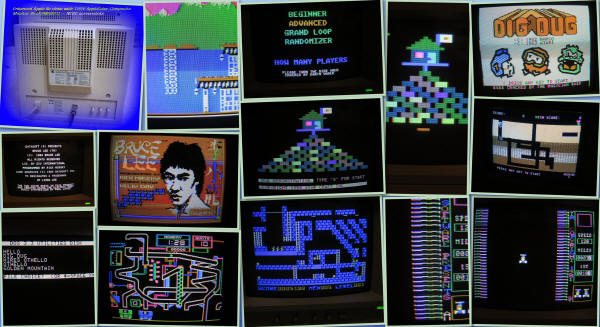
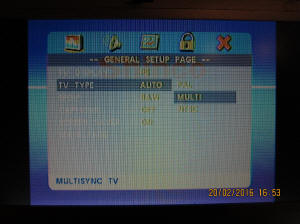



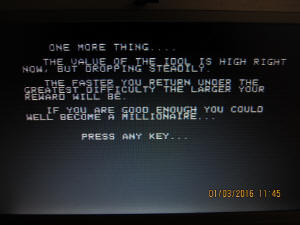
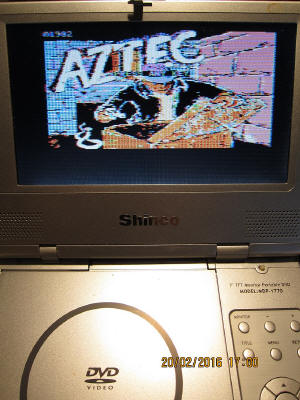
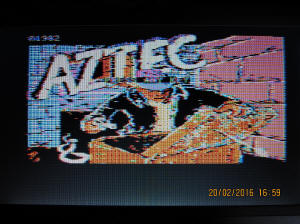
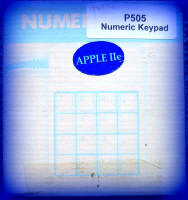
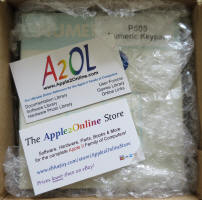
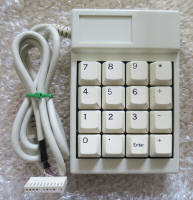
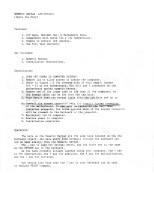

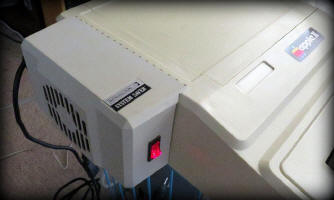

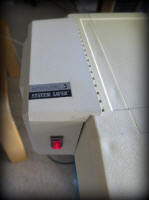
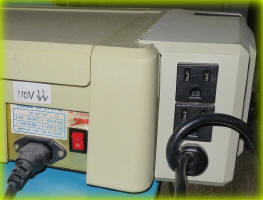
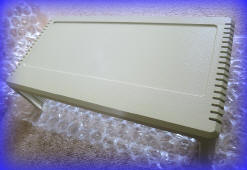
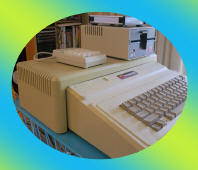



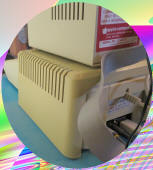

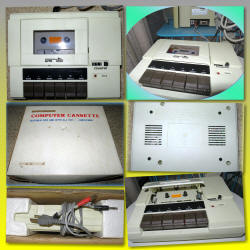


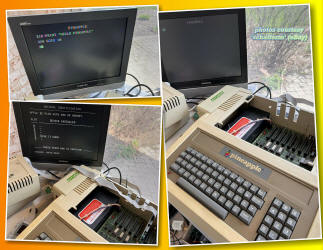
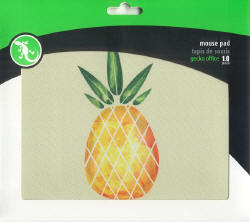
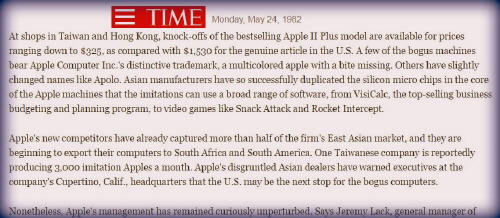

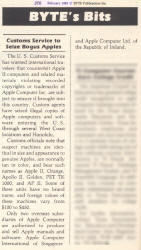






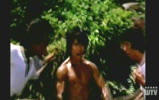
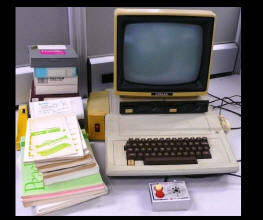


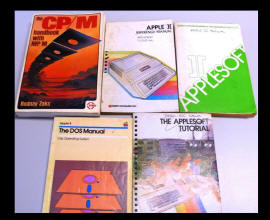

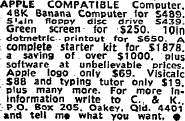
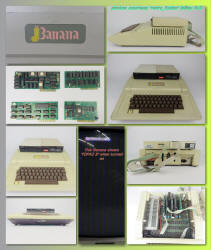
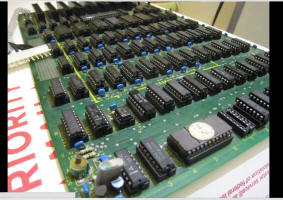
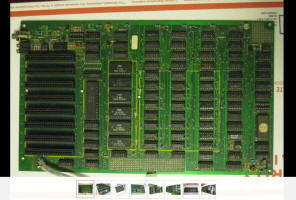
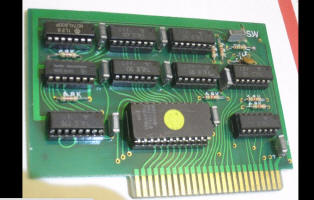

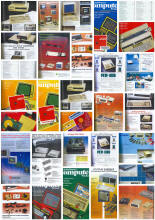
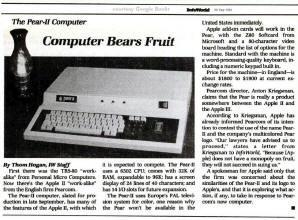








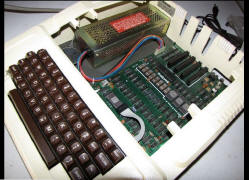



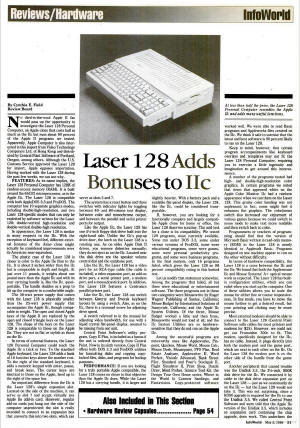



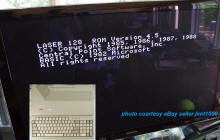




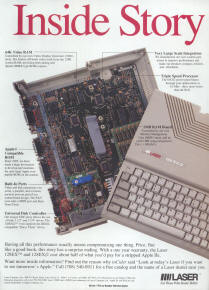
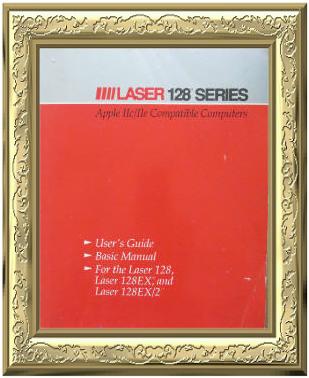
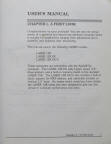



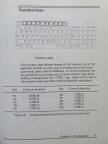
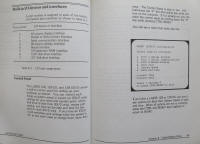
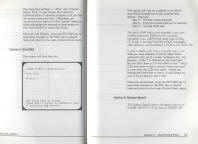




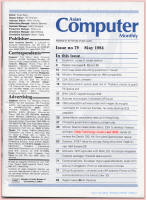

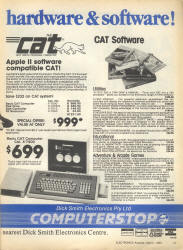




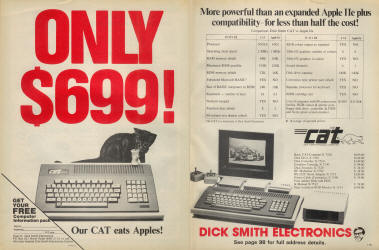
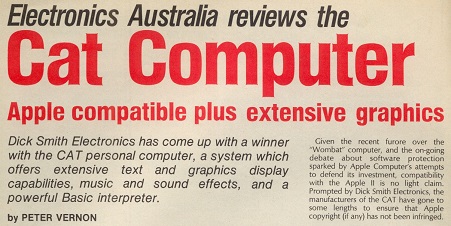

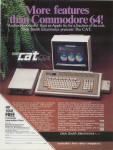
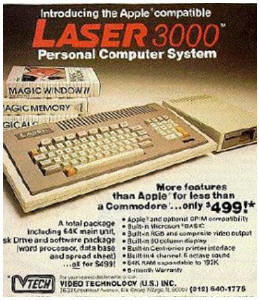

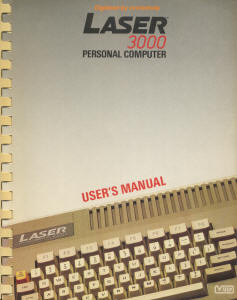


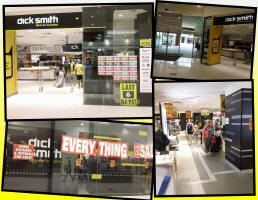


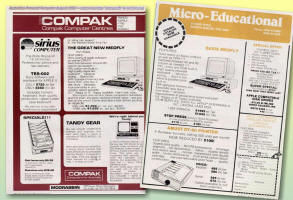

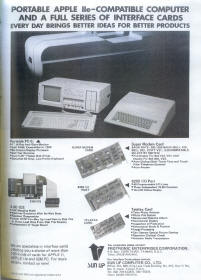

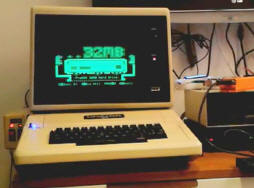
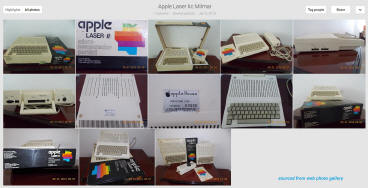


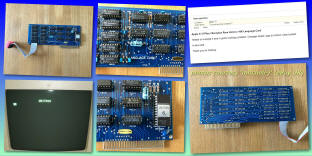





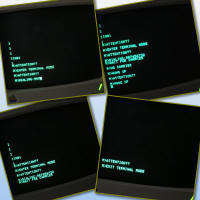

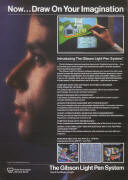


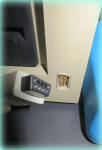
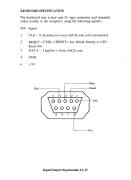

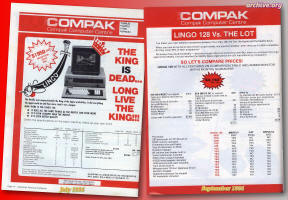

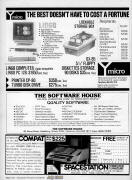


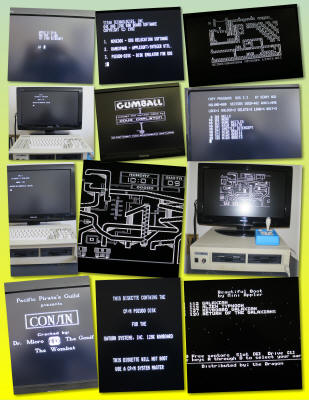
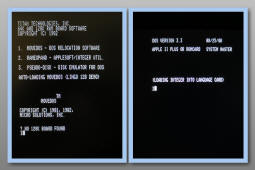




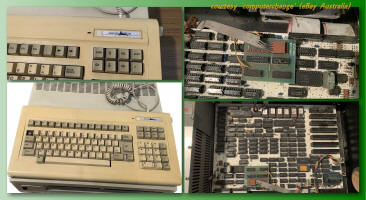
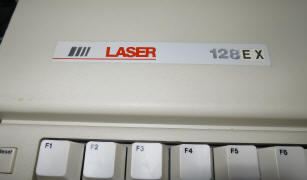

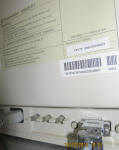
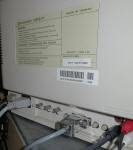




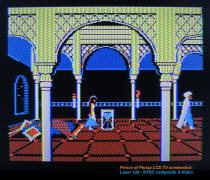


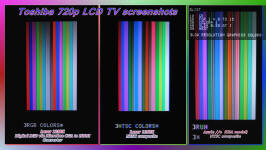

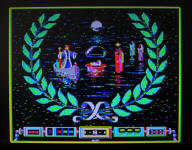


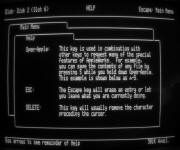
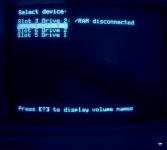

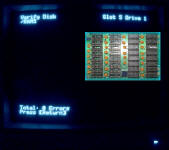

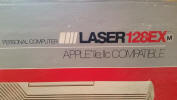

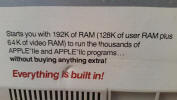

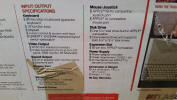

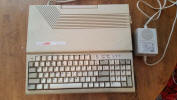

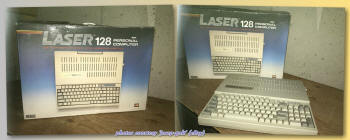
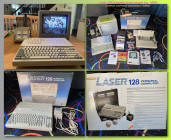
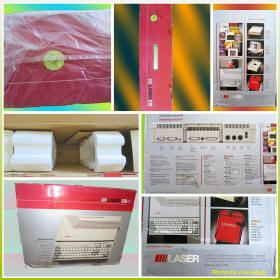
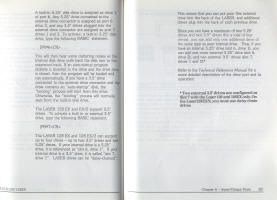
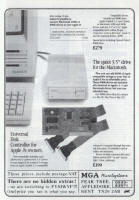
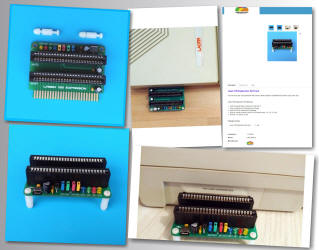

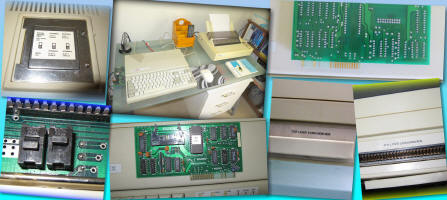



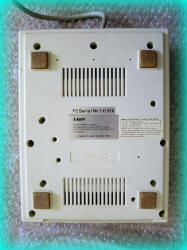
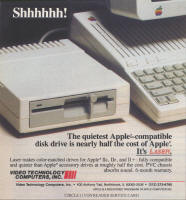
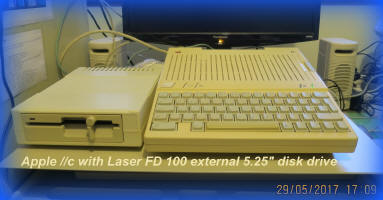





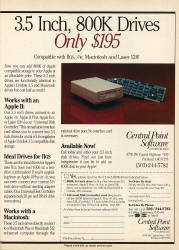
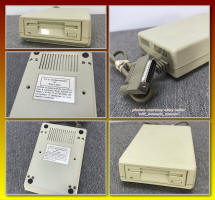

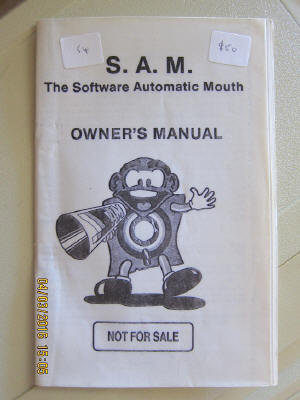
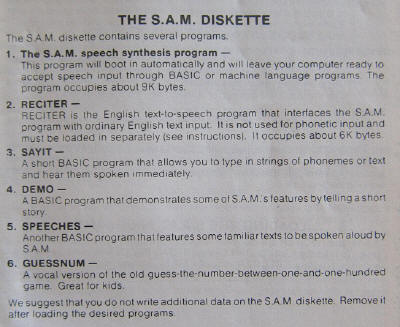
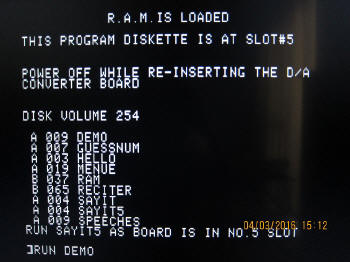
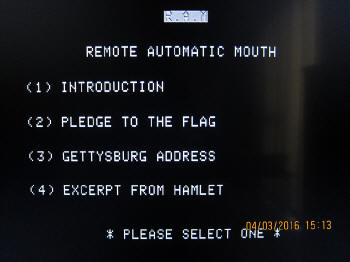

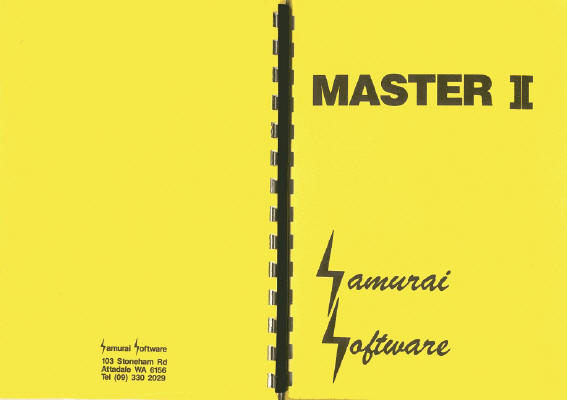
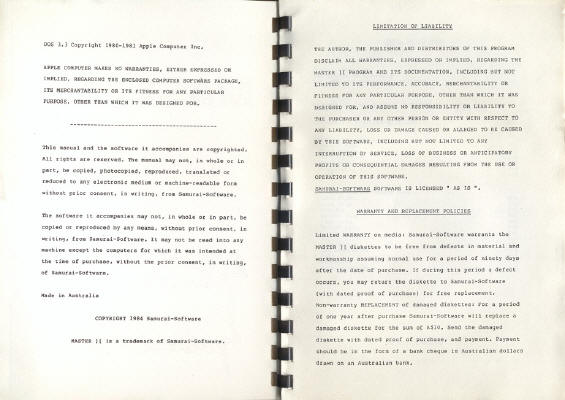

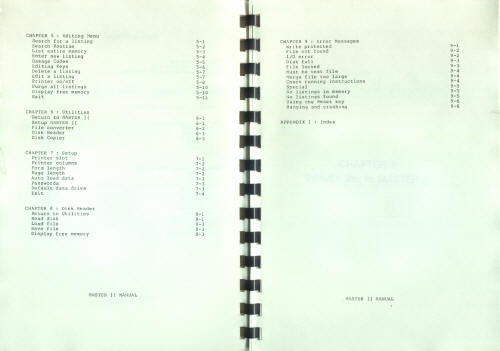
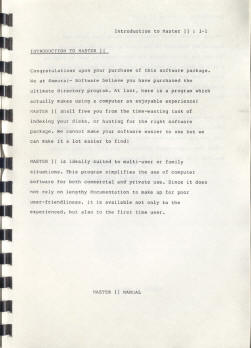
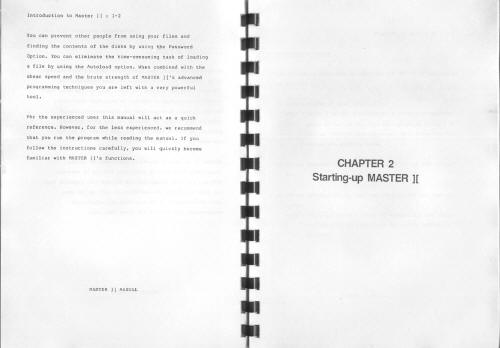

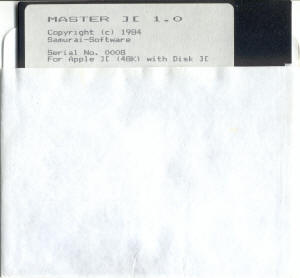



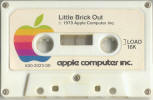
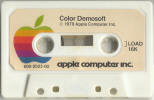

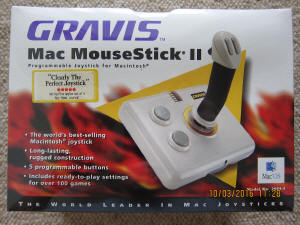
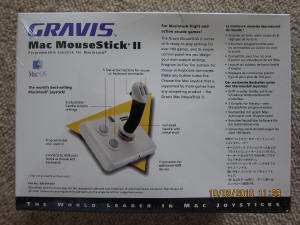

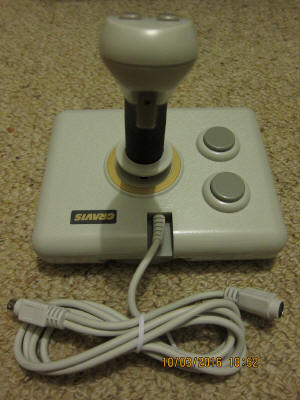
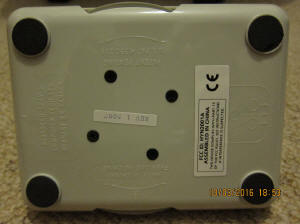

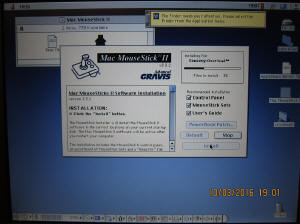



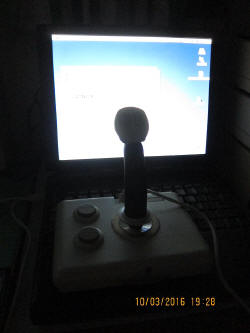
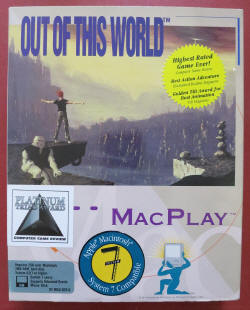

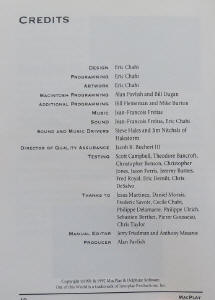
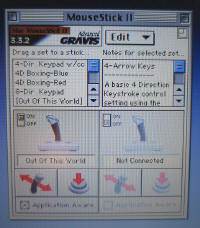
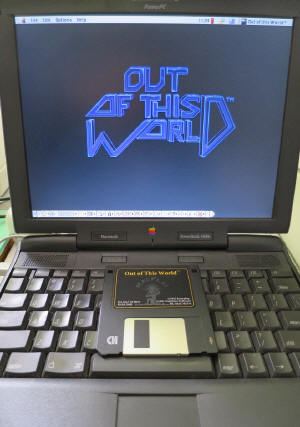
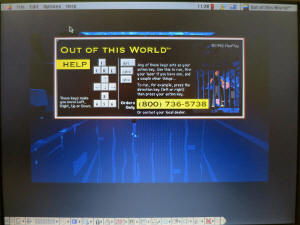
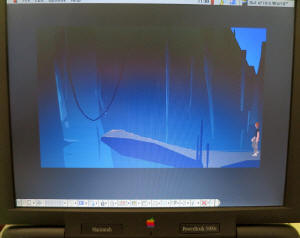


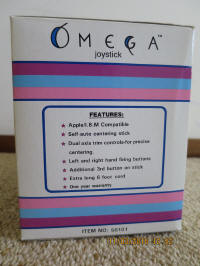
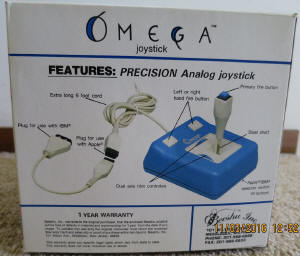


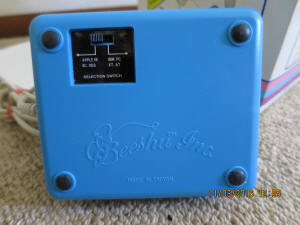






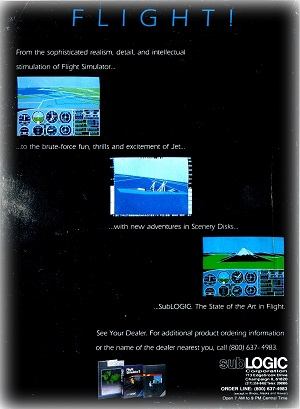

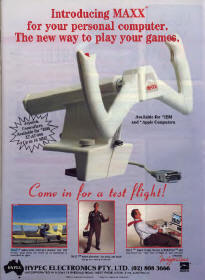
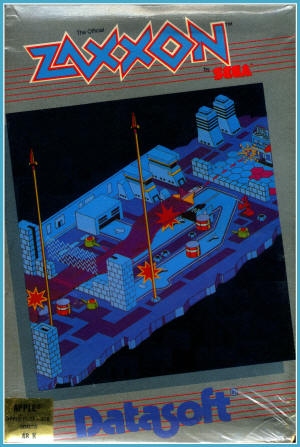

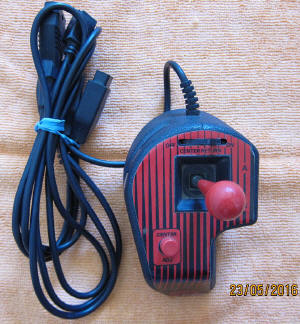

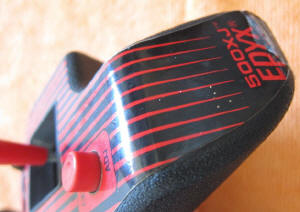
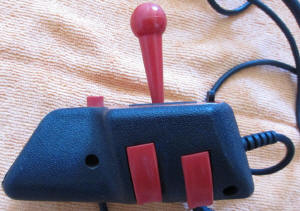
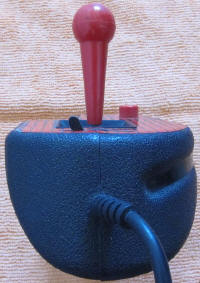






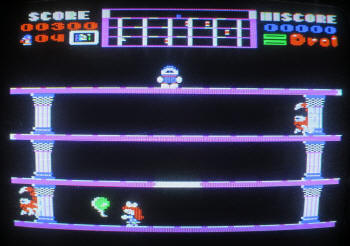





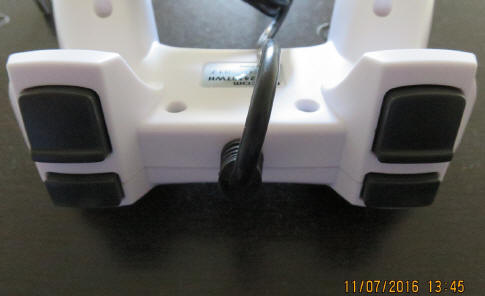





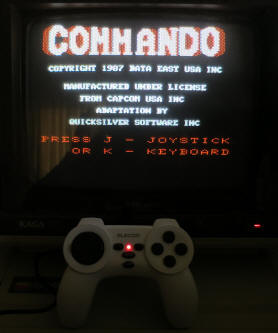





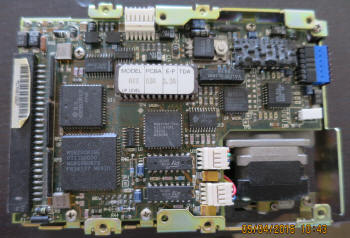




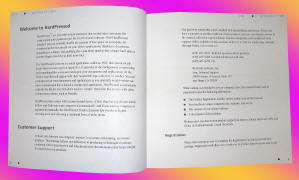

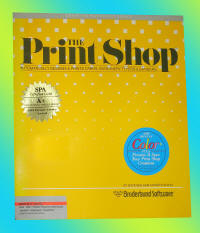

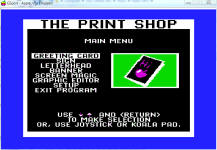

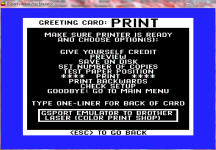

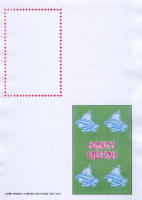
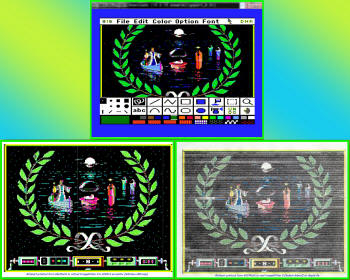

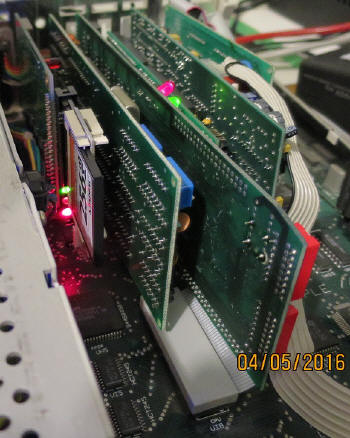

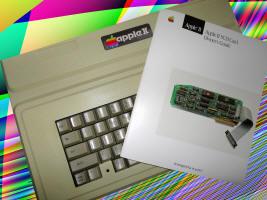







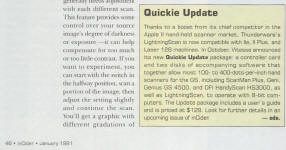
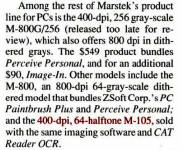



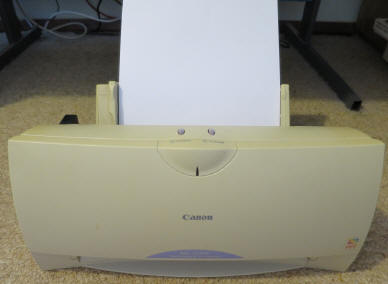

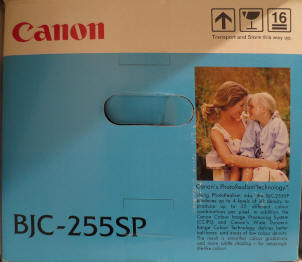

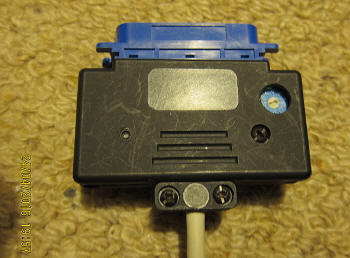
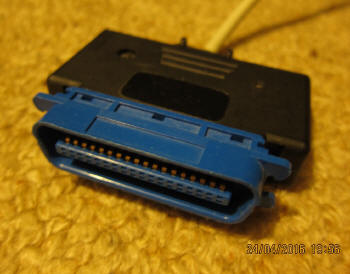




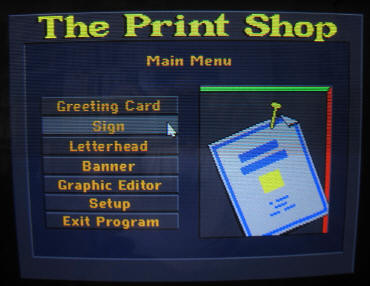



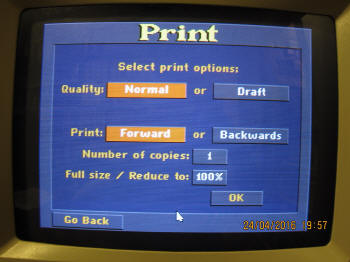



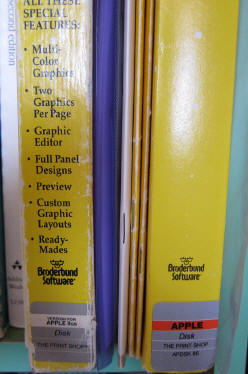

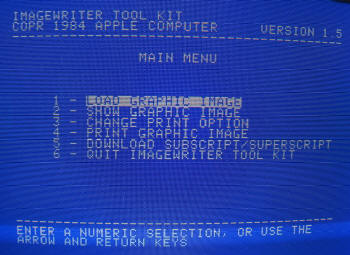

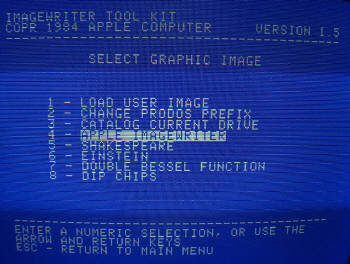
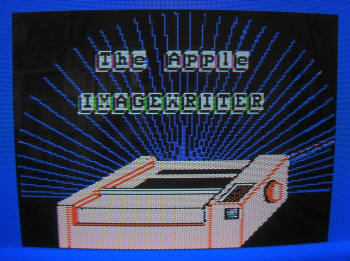

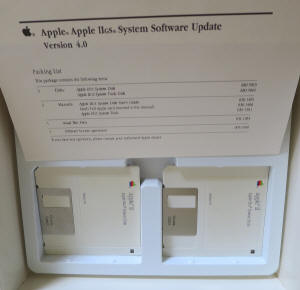







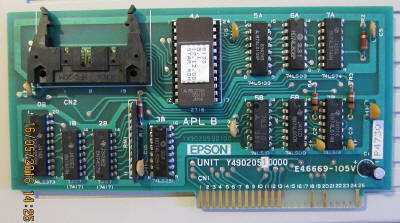
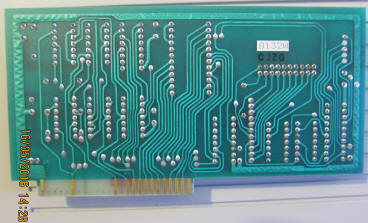



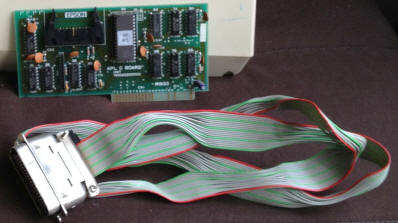




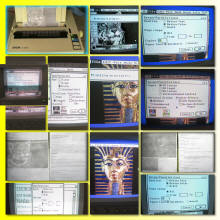
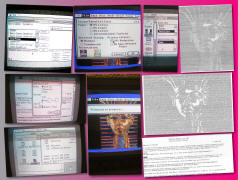
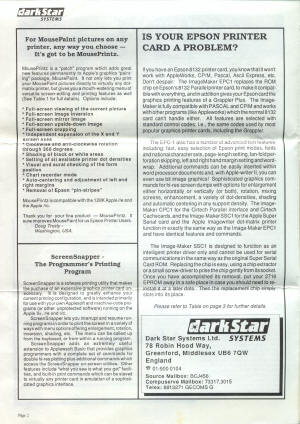



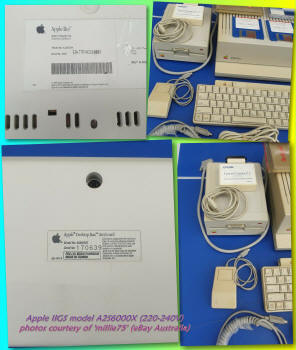
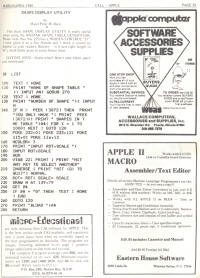


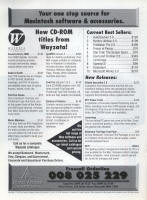


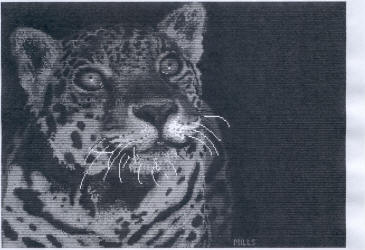



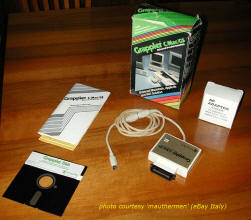

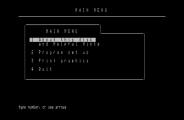


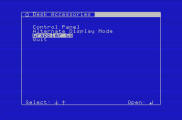
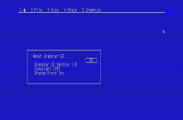
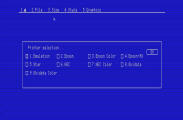


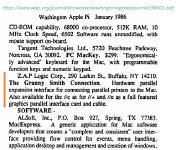

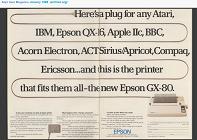
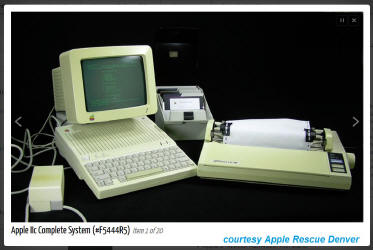

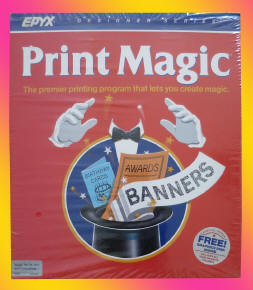

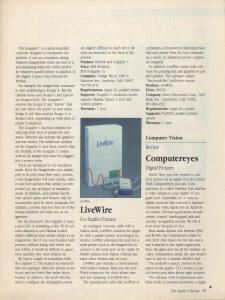

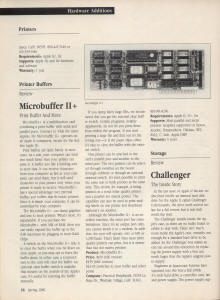
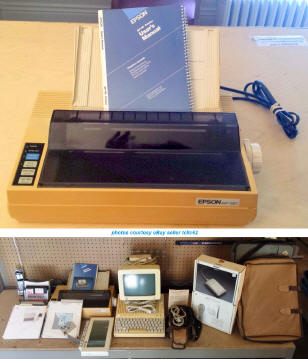
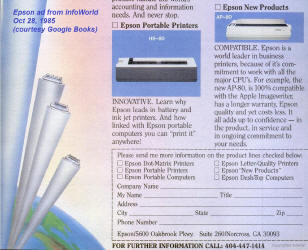

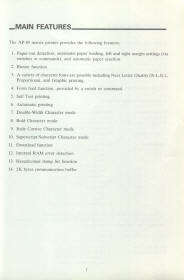

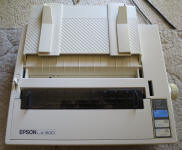



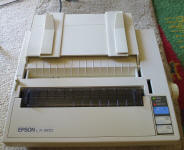

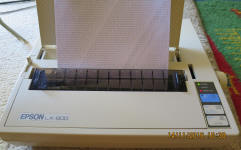
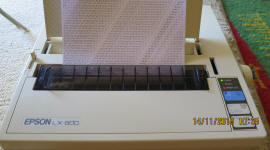
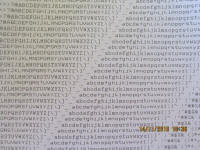
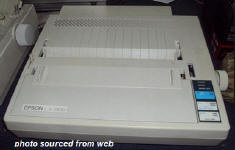
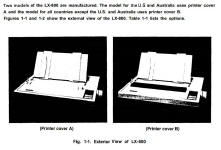

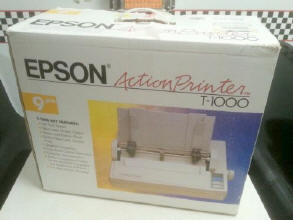
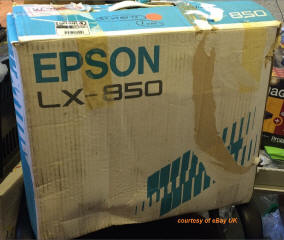


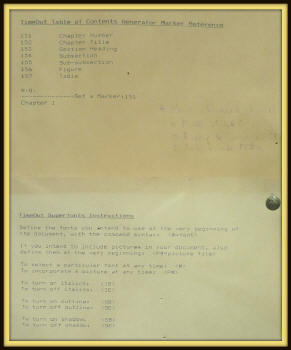

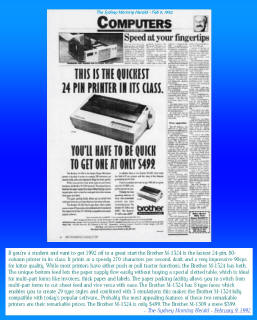
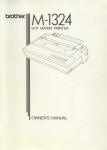


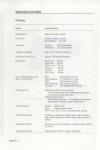



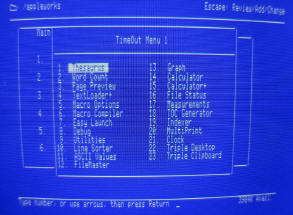

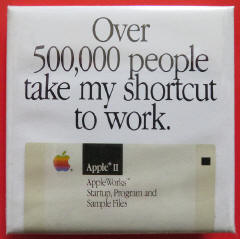


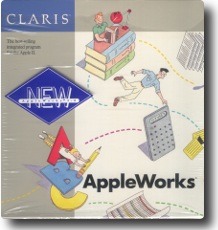



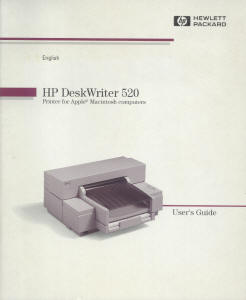
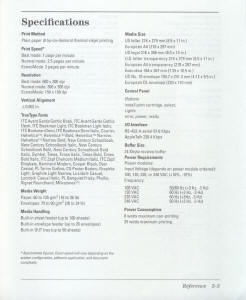



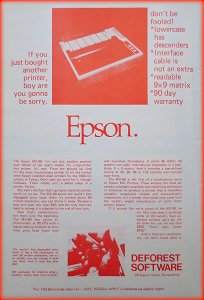

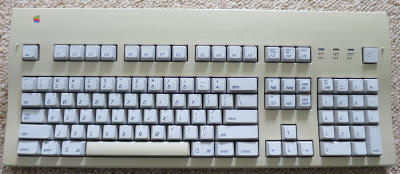



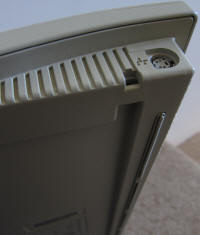
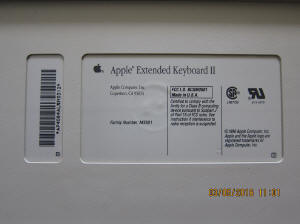
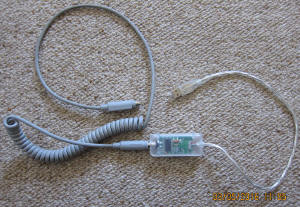


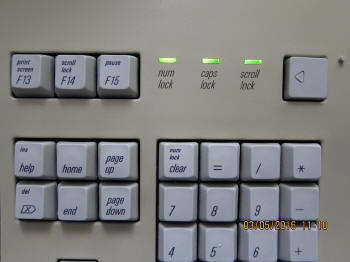
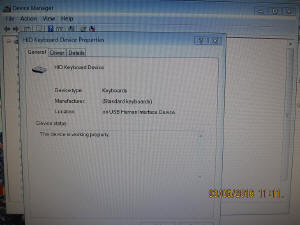

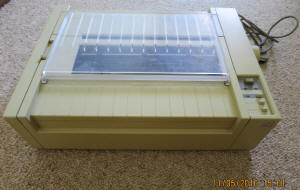
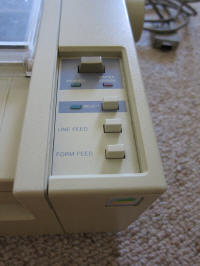

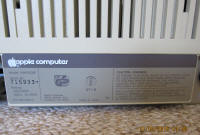


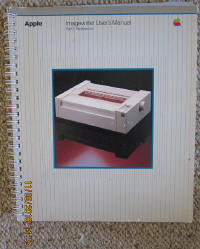


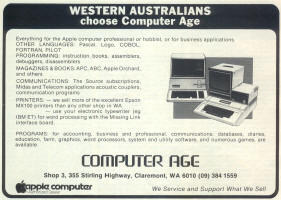
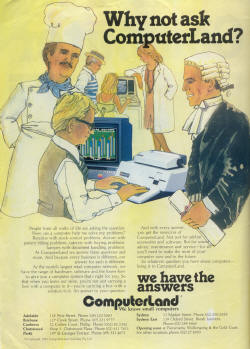
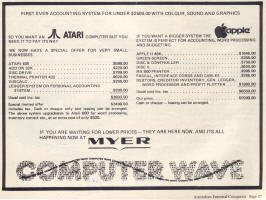





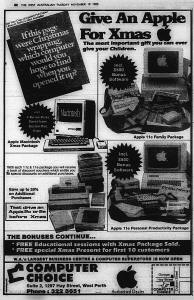
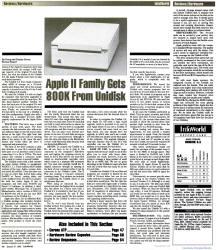




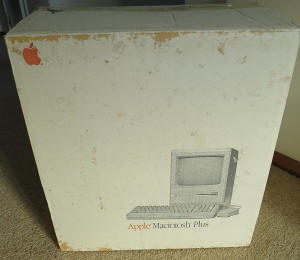




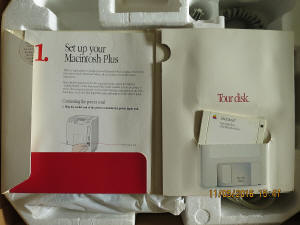






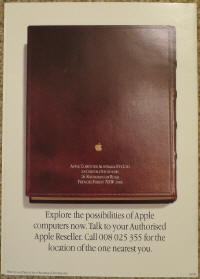
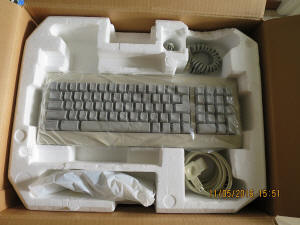

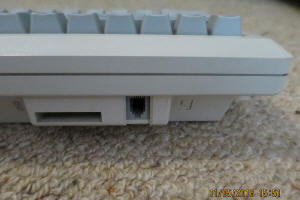

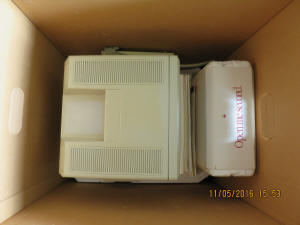
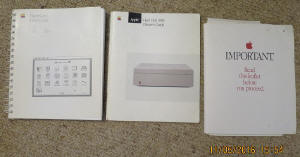
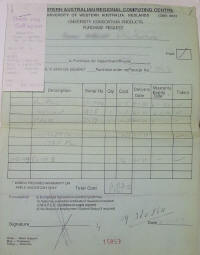

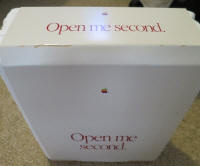









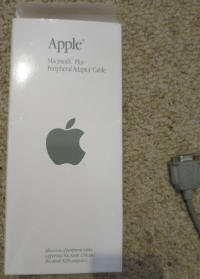

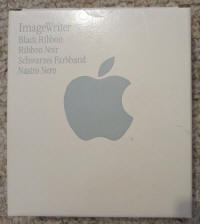




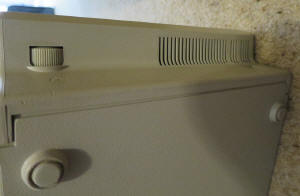


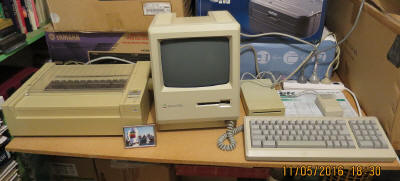

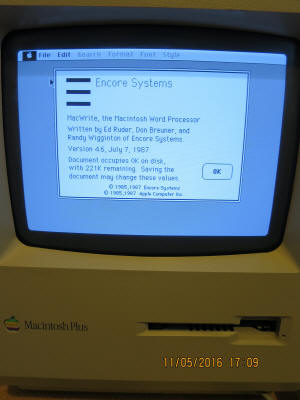

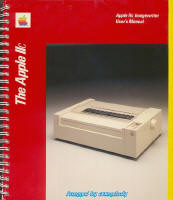
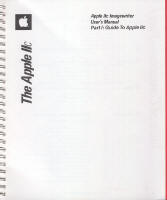

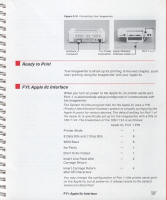


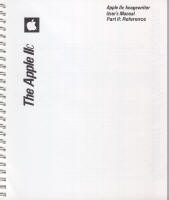






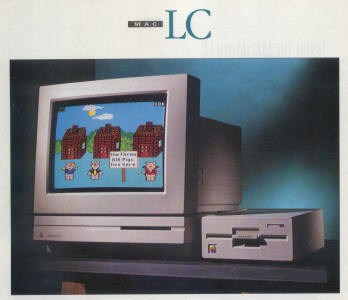

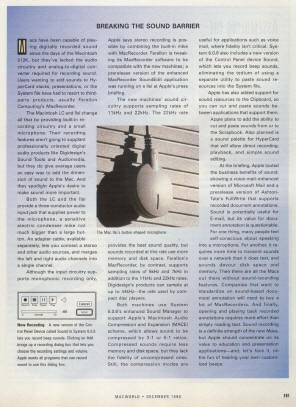
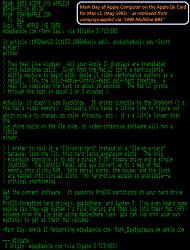
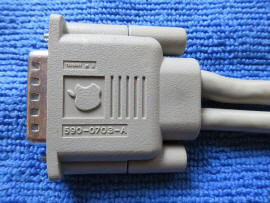
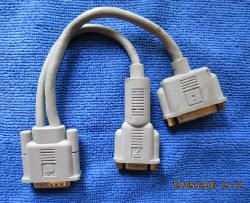


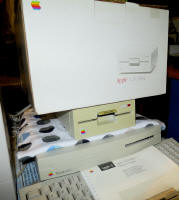
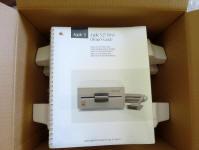




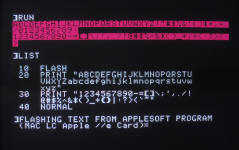


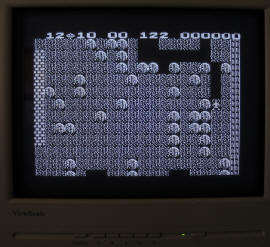
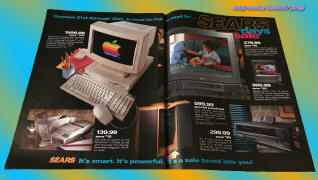

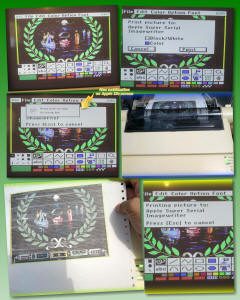


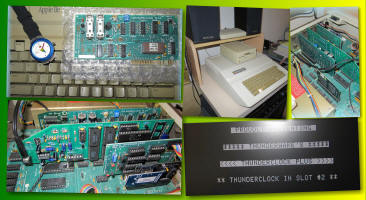

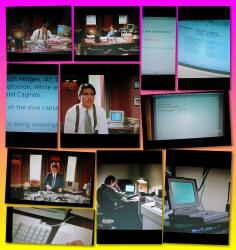

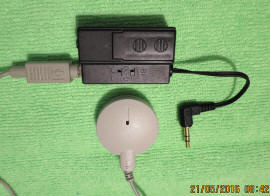

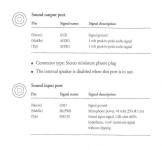

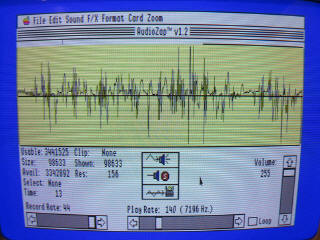

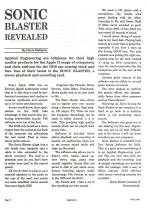


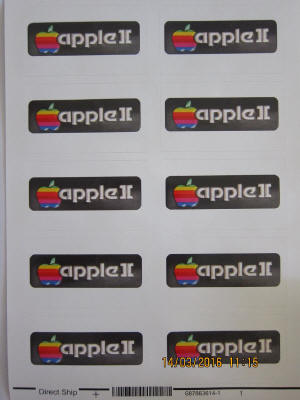
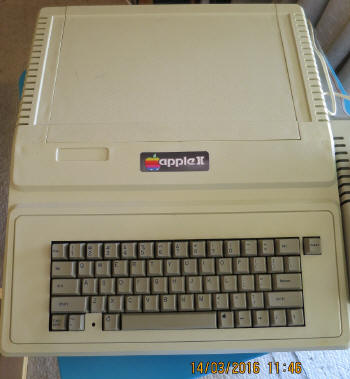









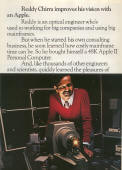





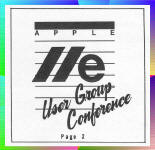

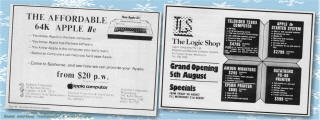



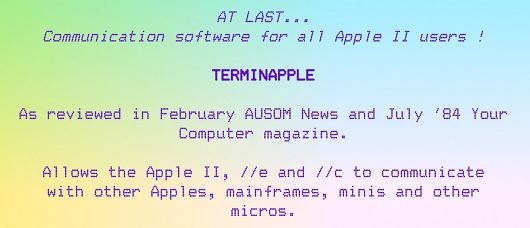


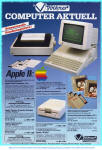

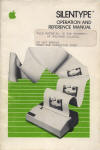










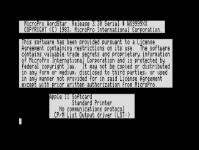
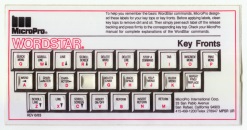
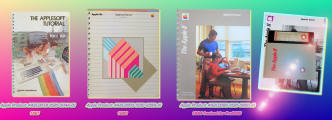




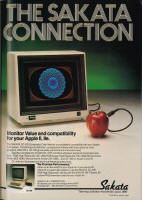



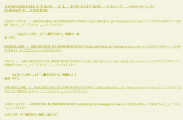
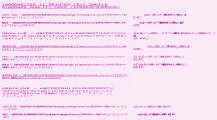
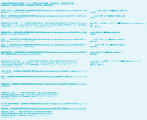






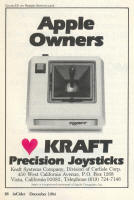
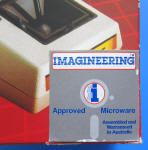



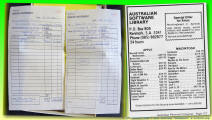
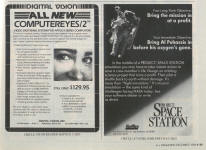

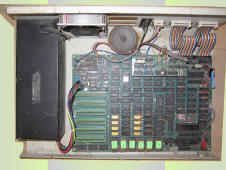



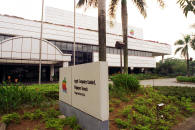
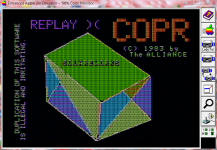
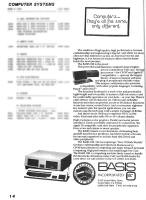





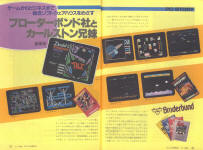








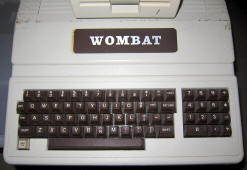




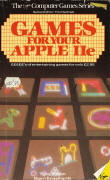



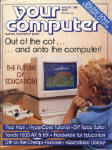
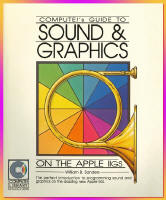
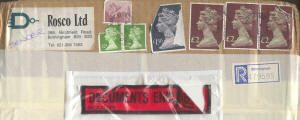
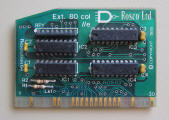
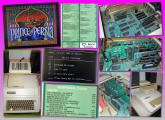

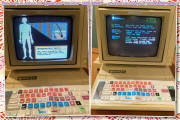

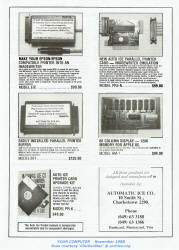

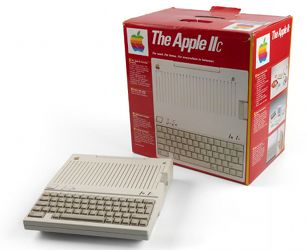




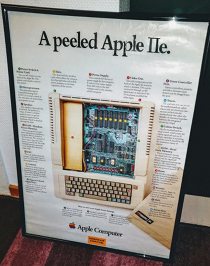
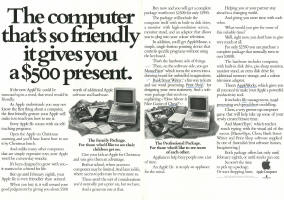



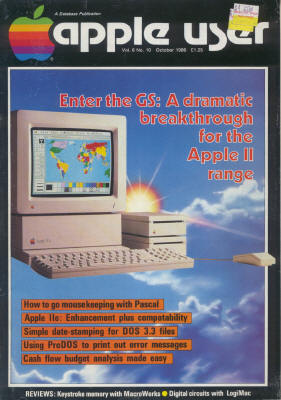
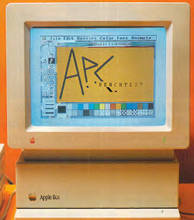

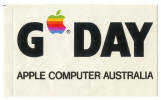




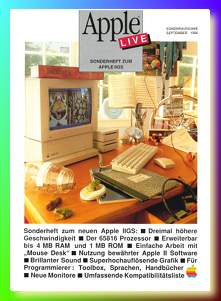
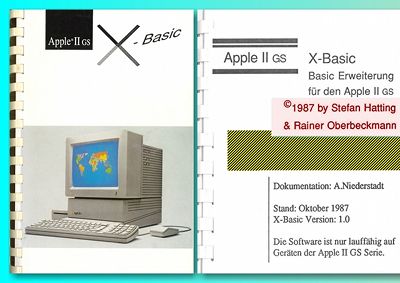
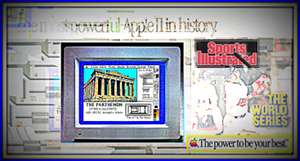
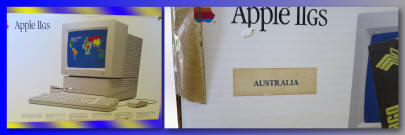

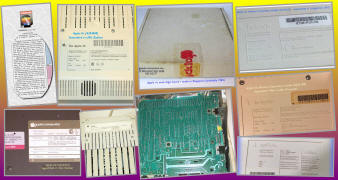

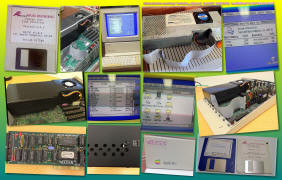


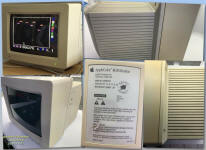


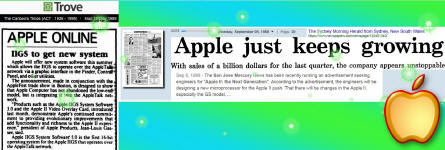
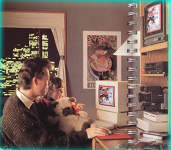






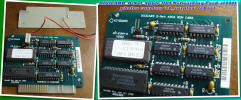
_1984_smaller_small.jpg)
